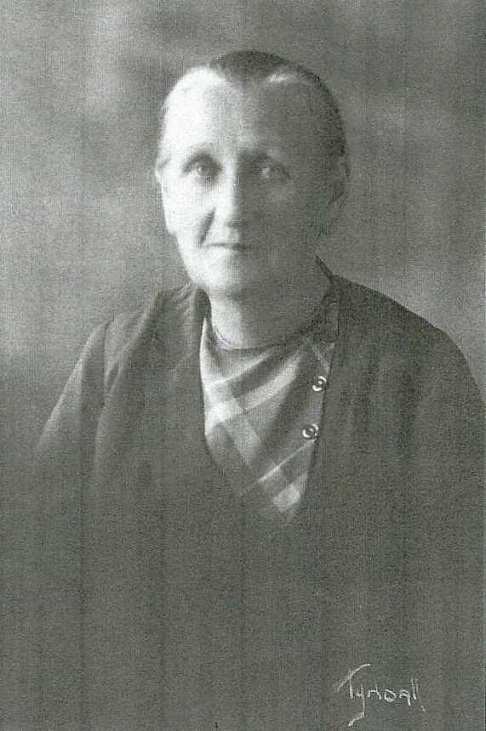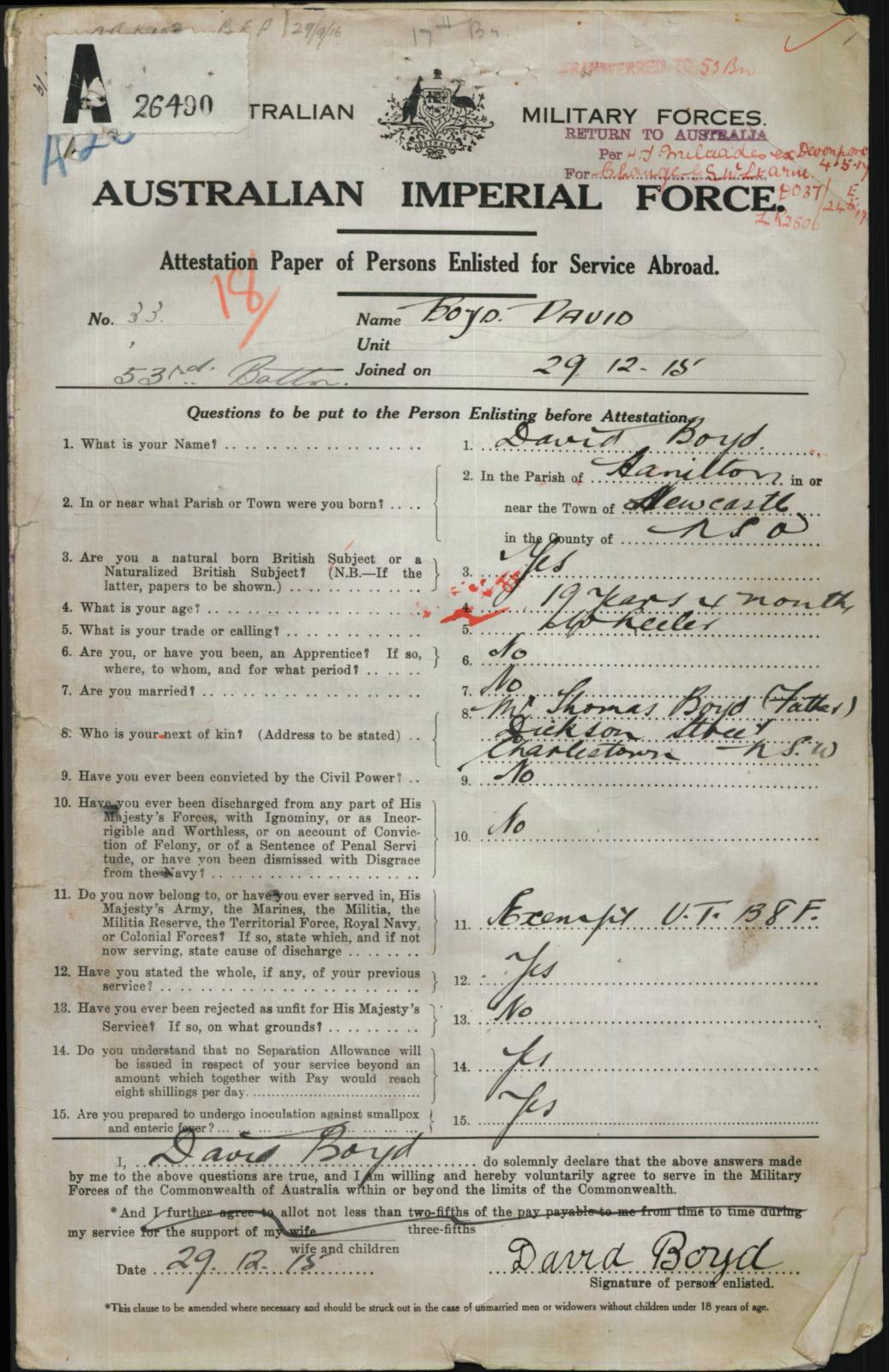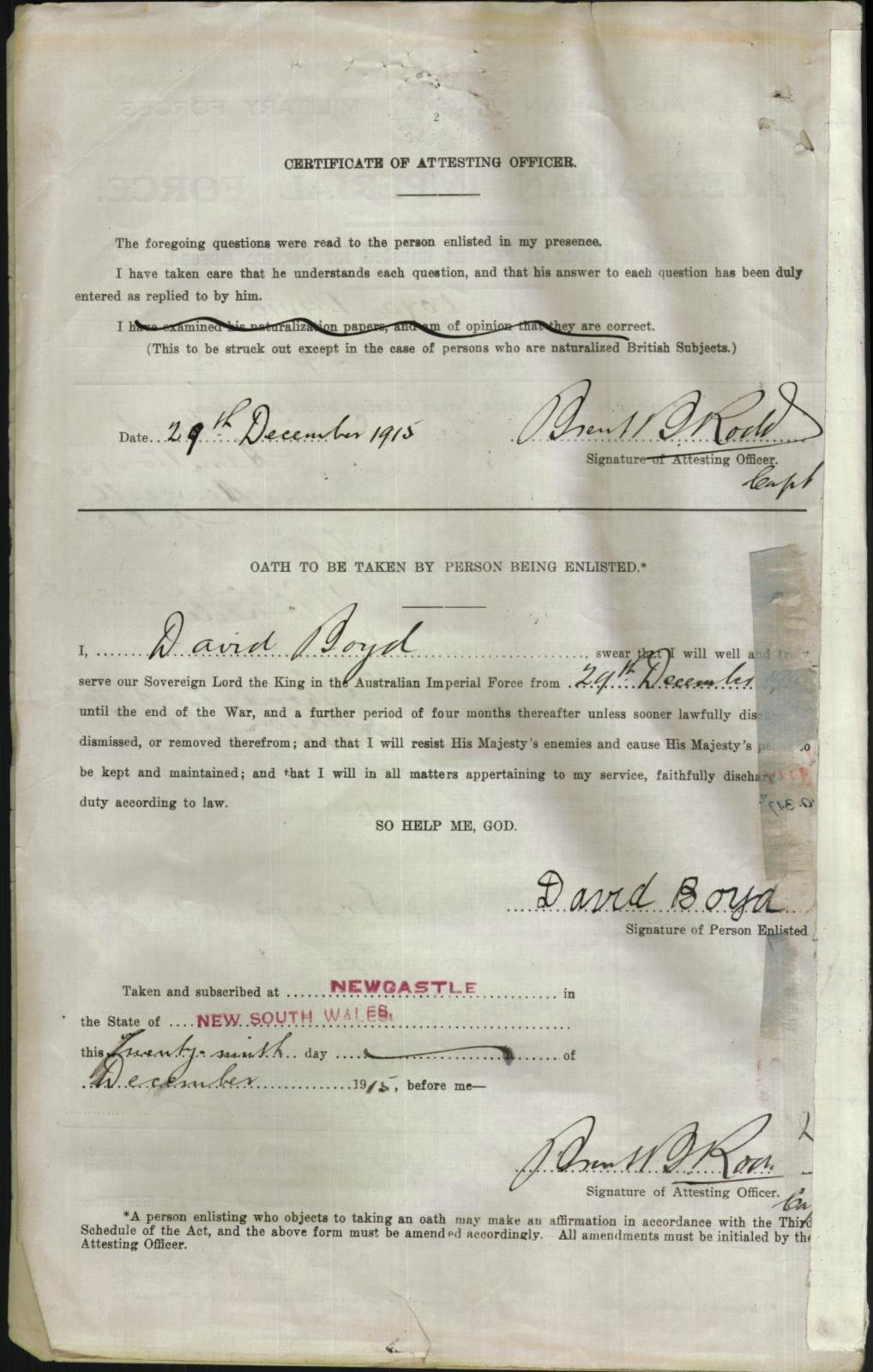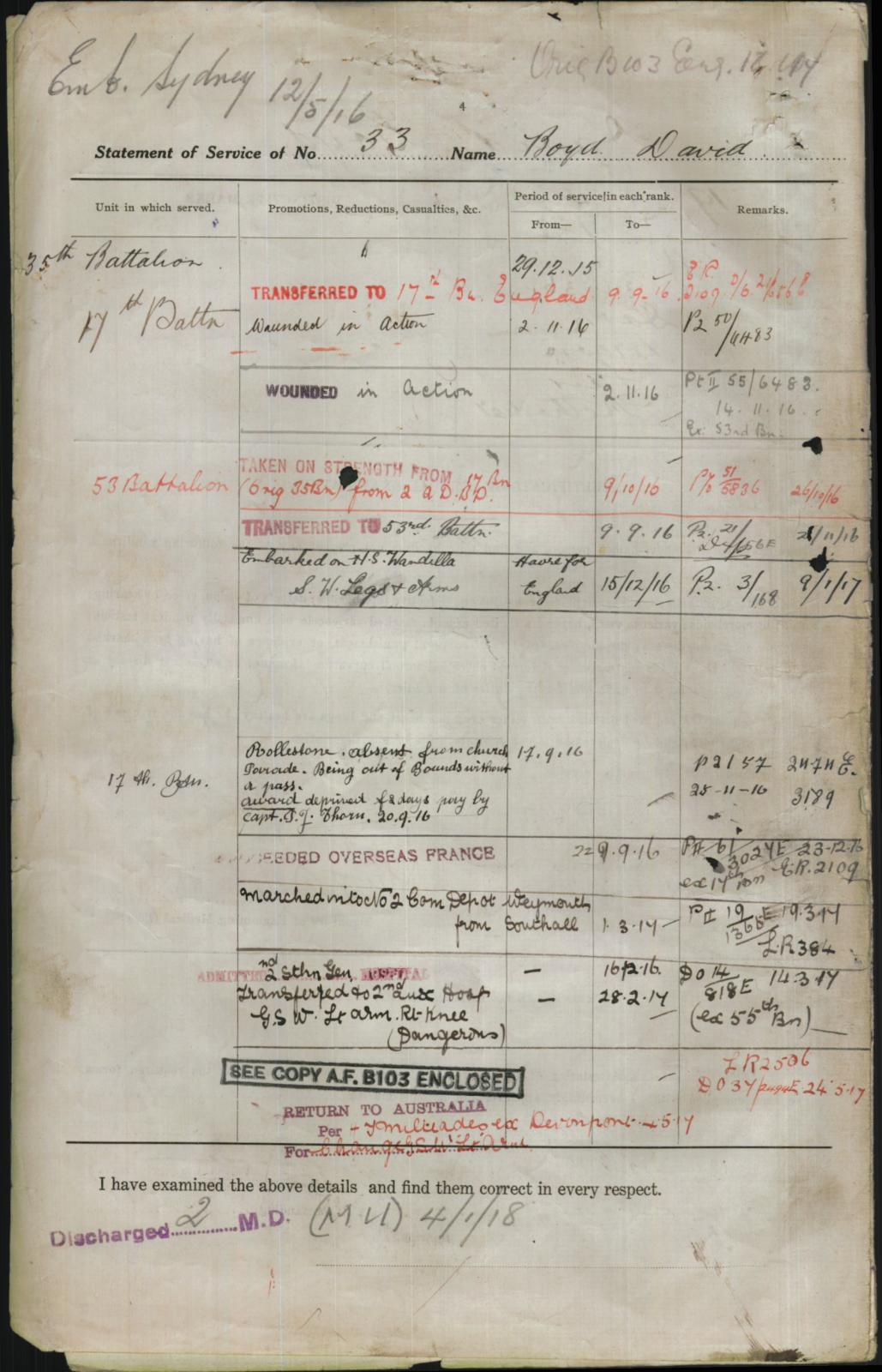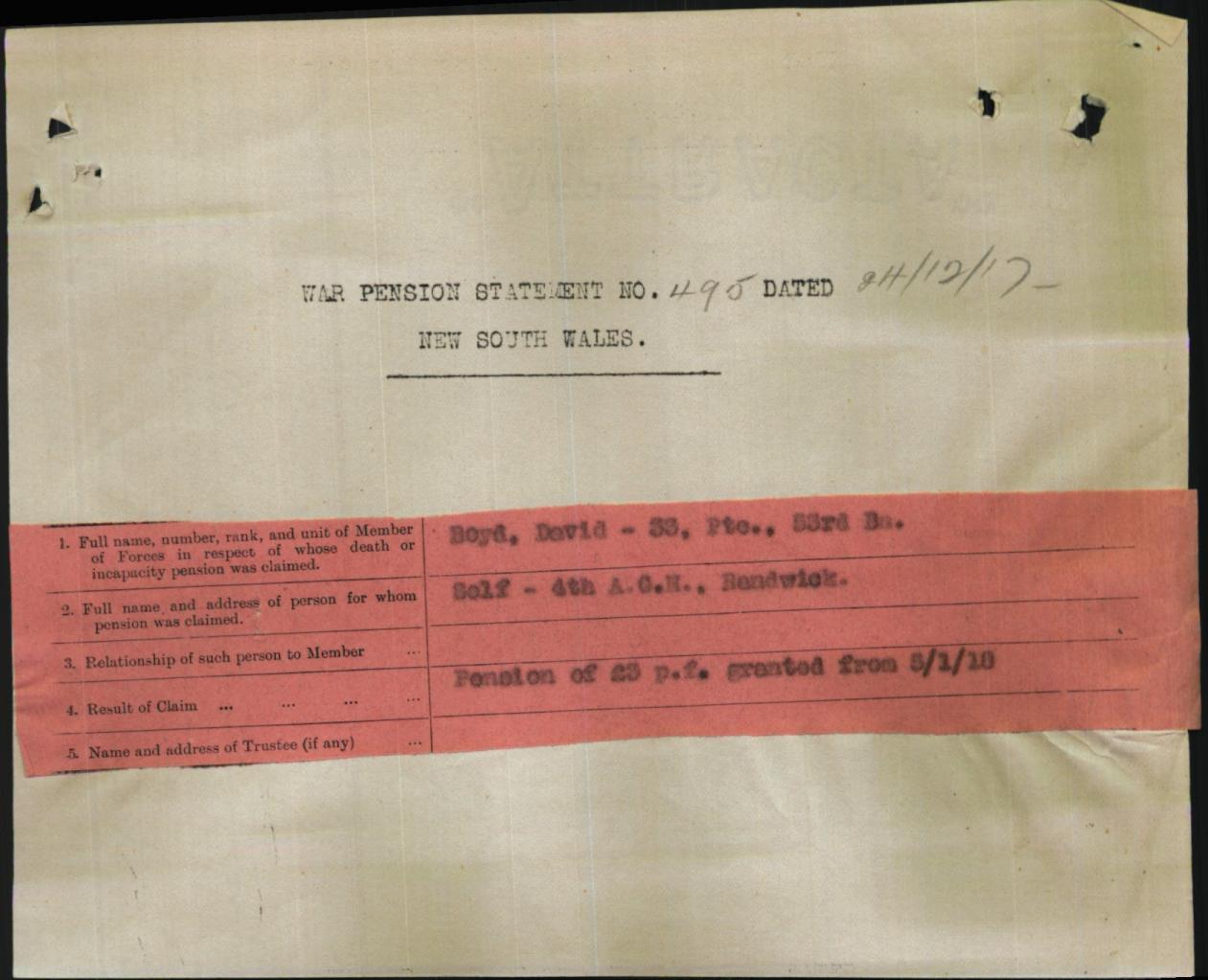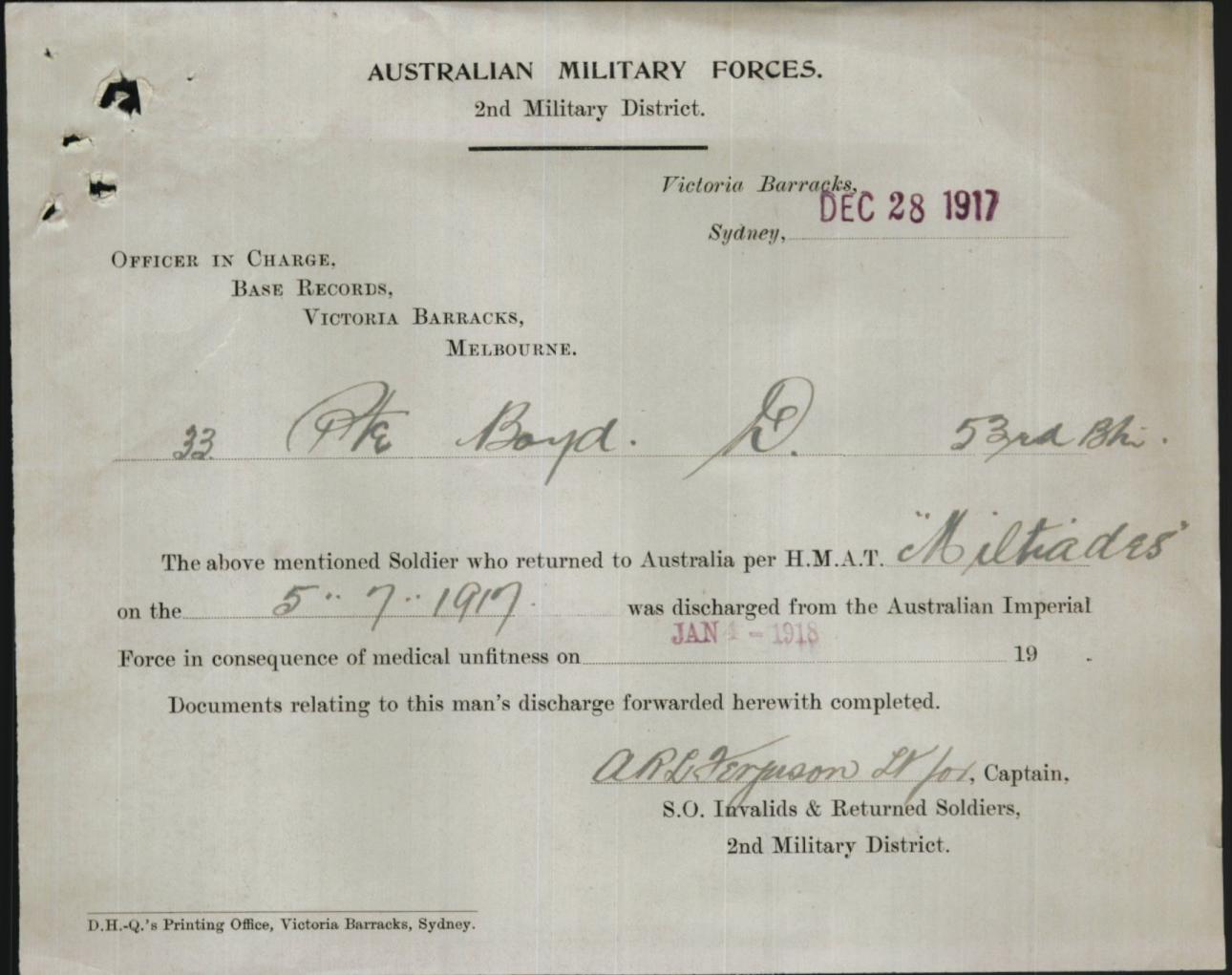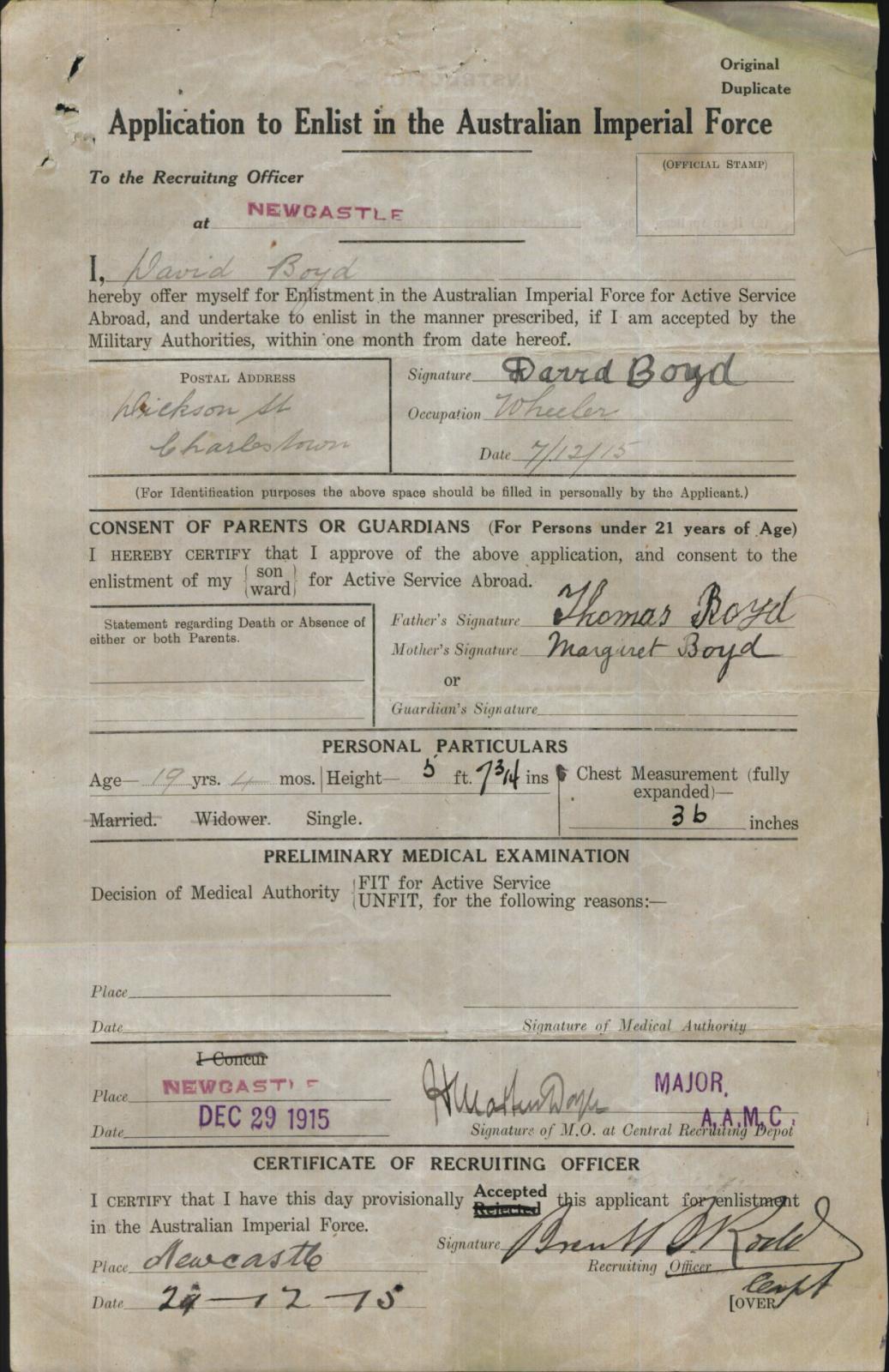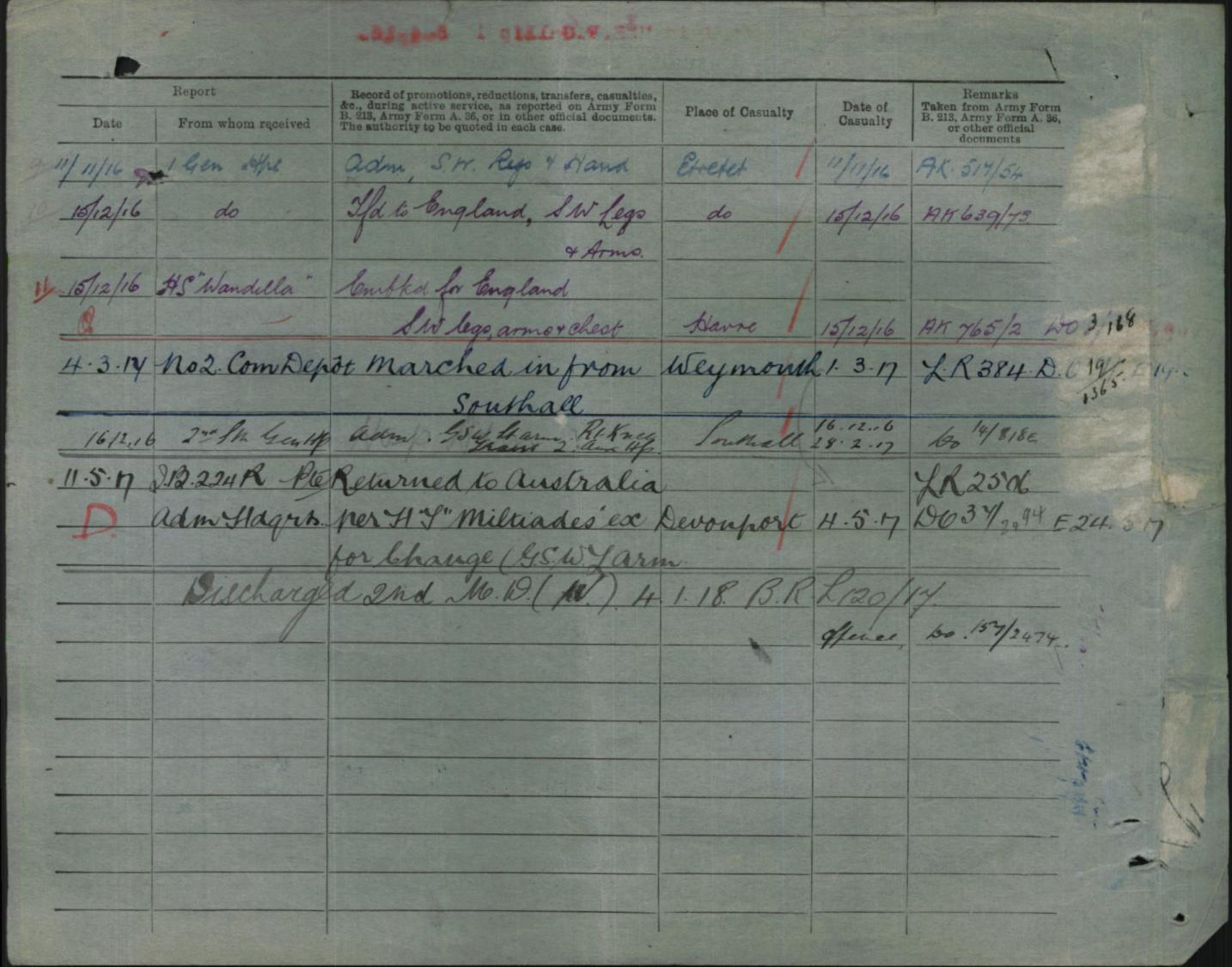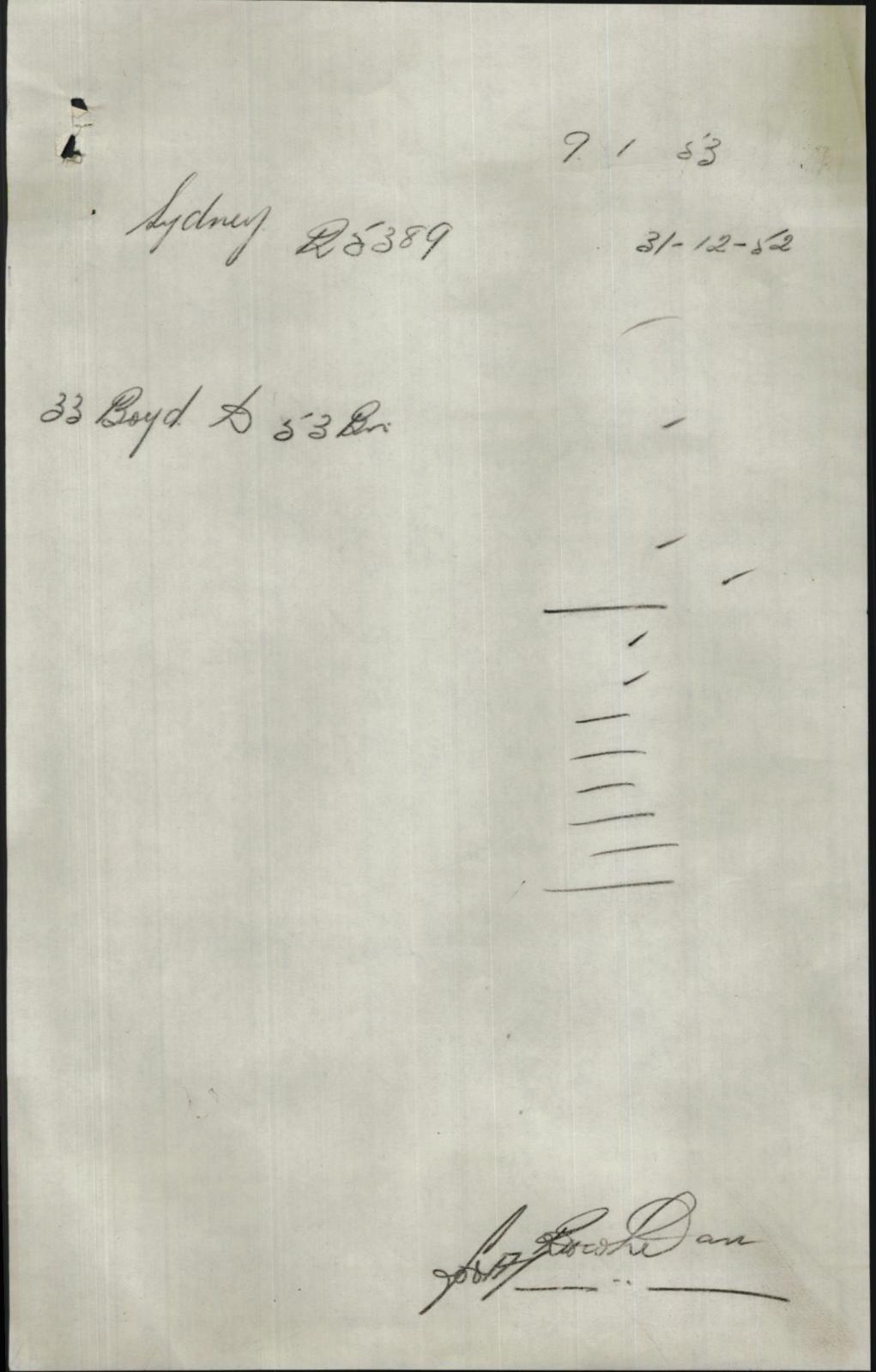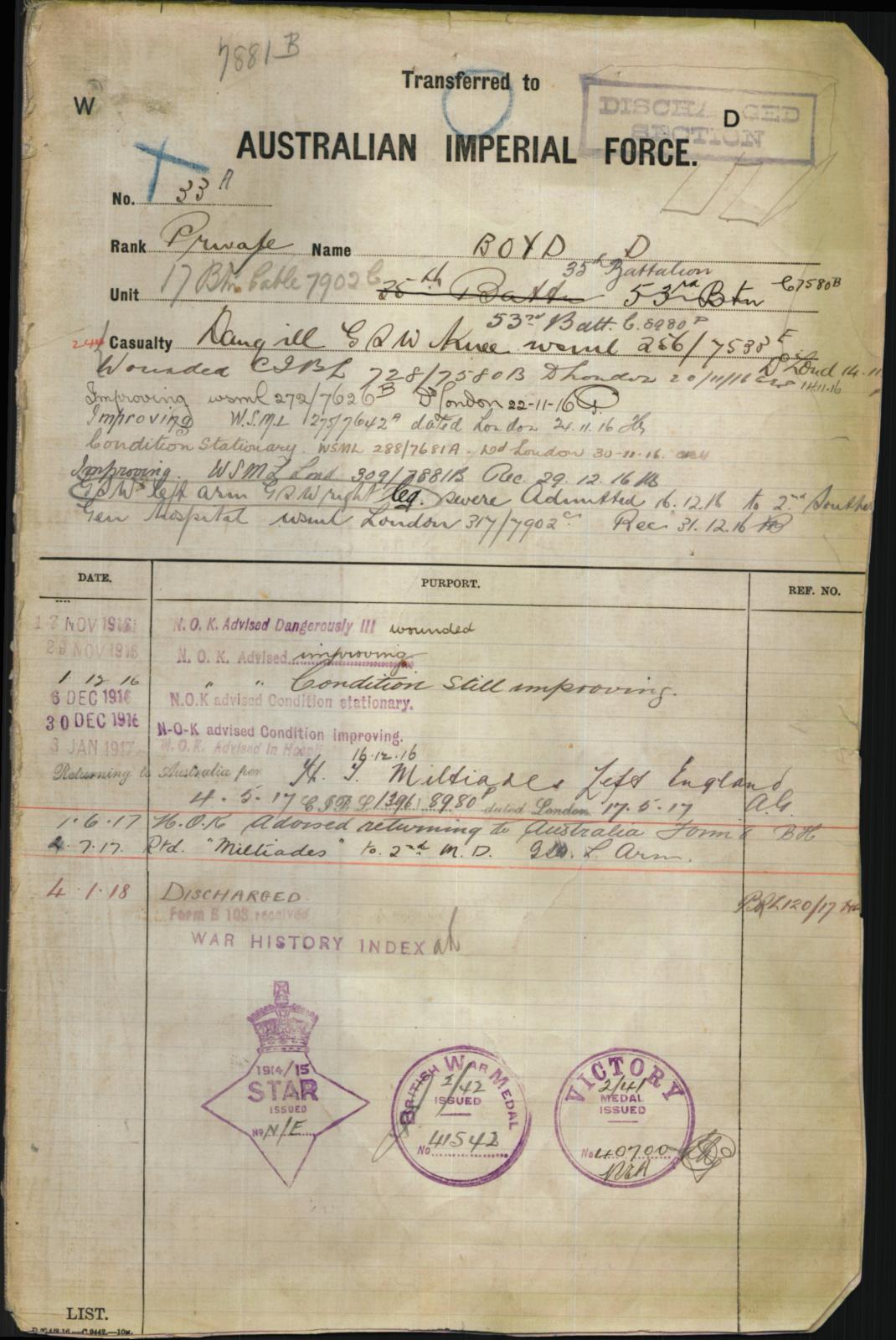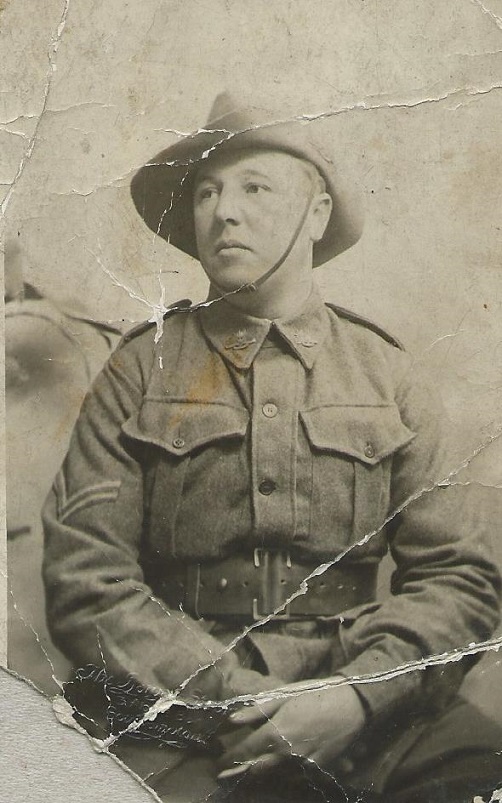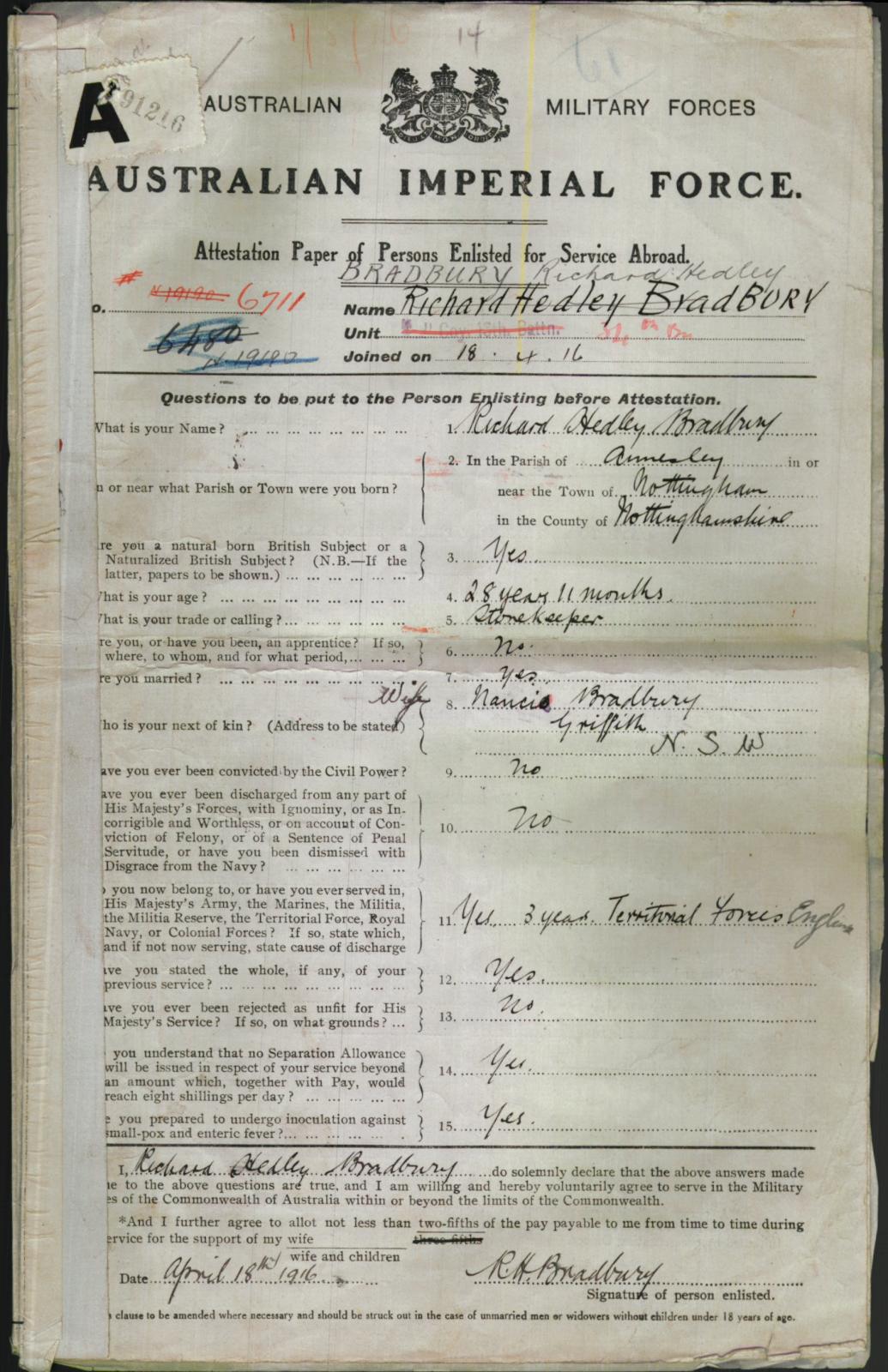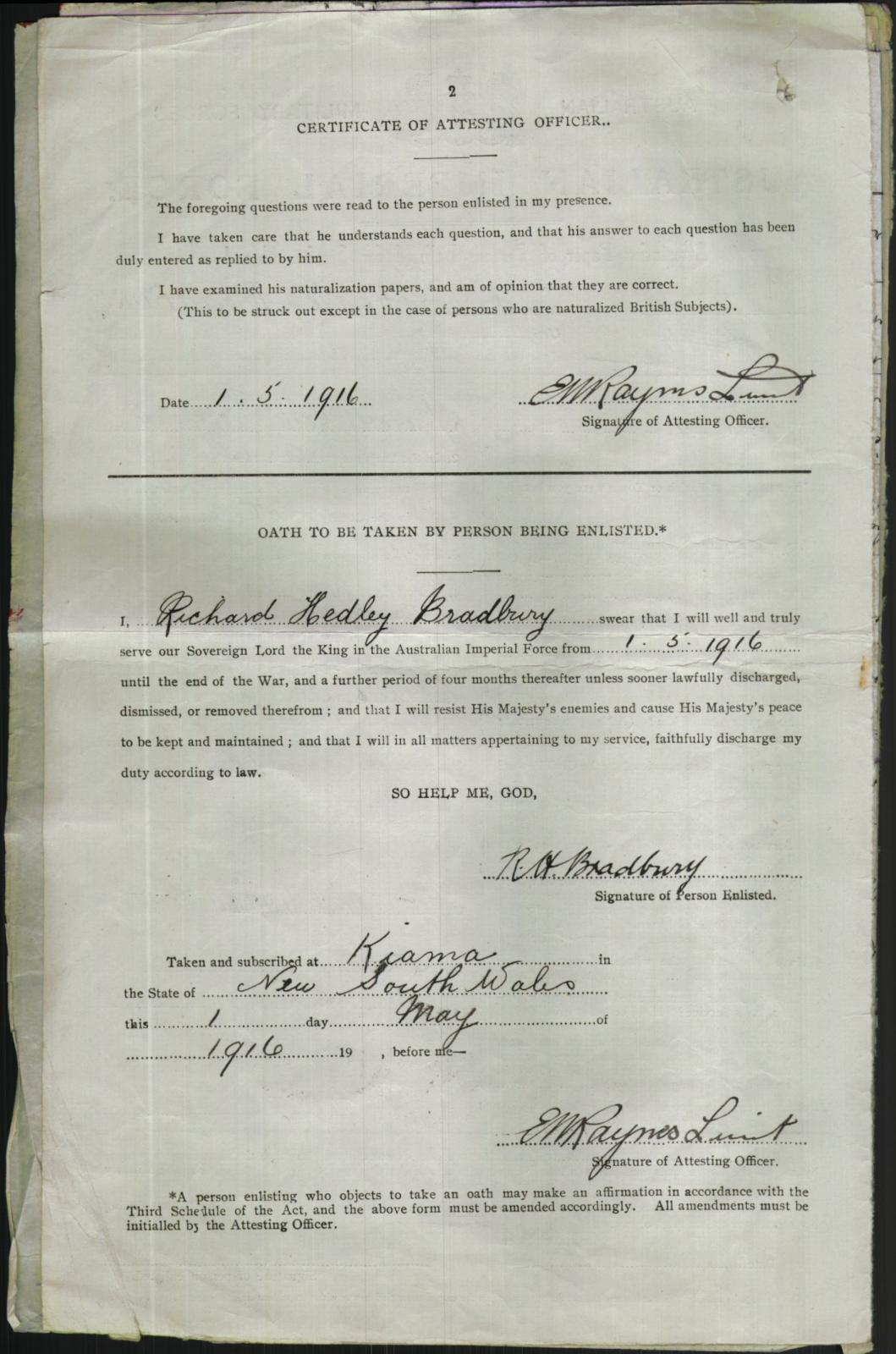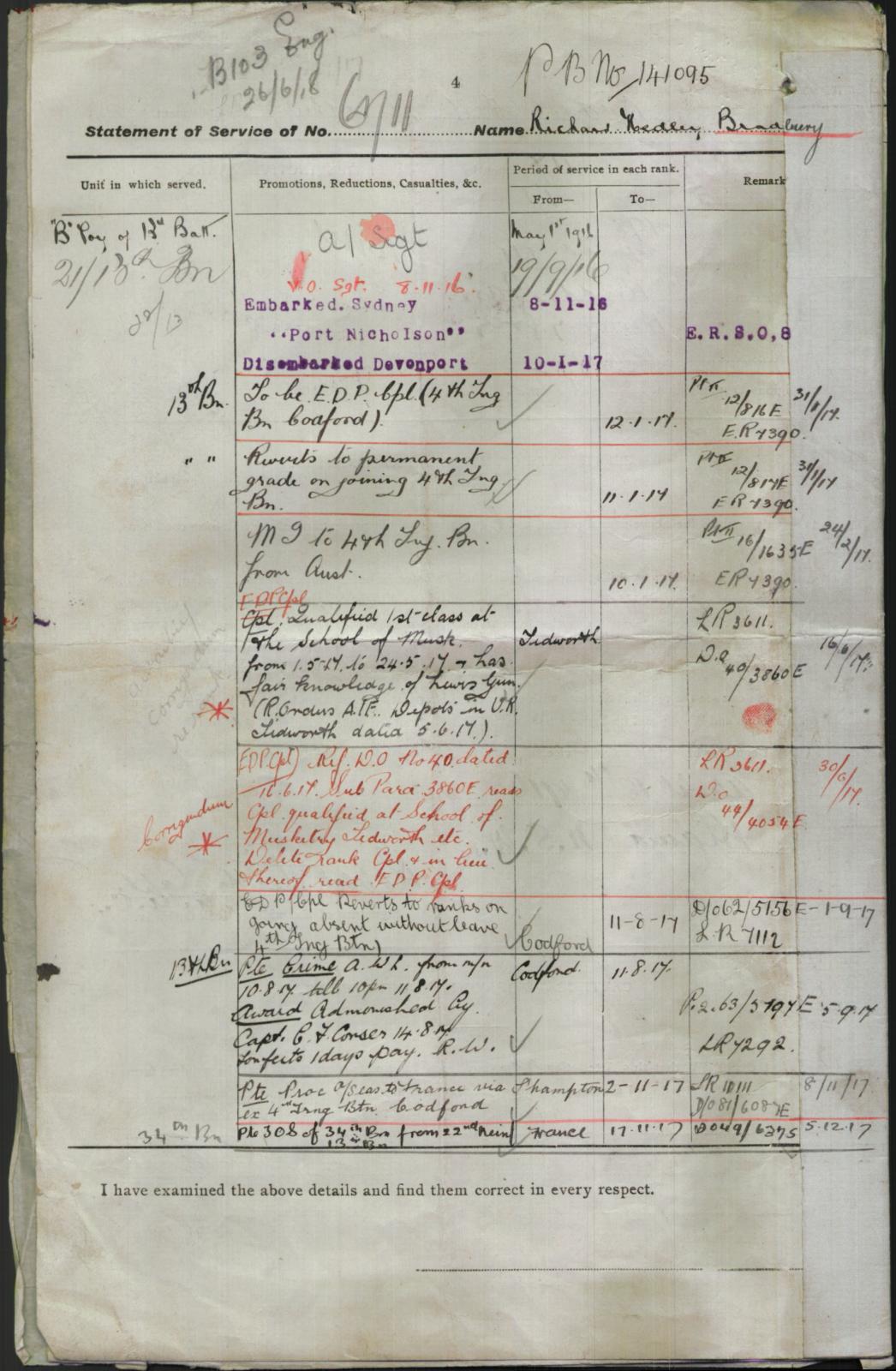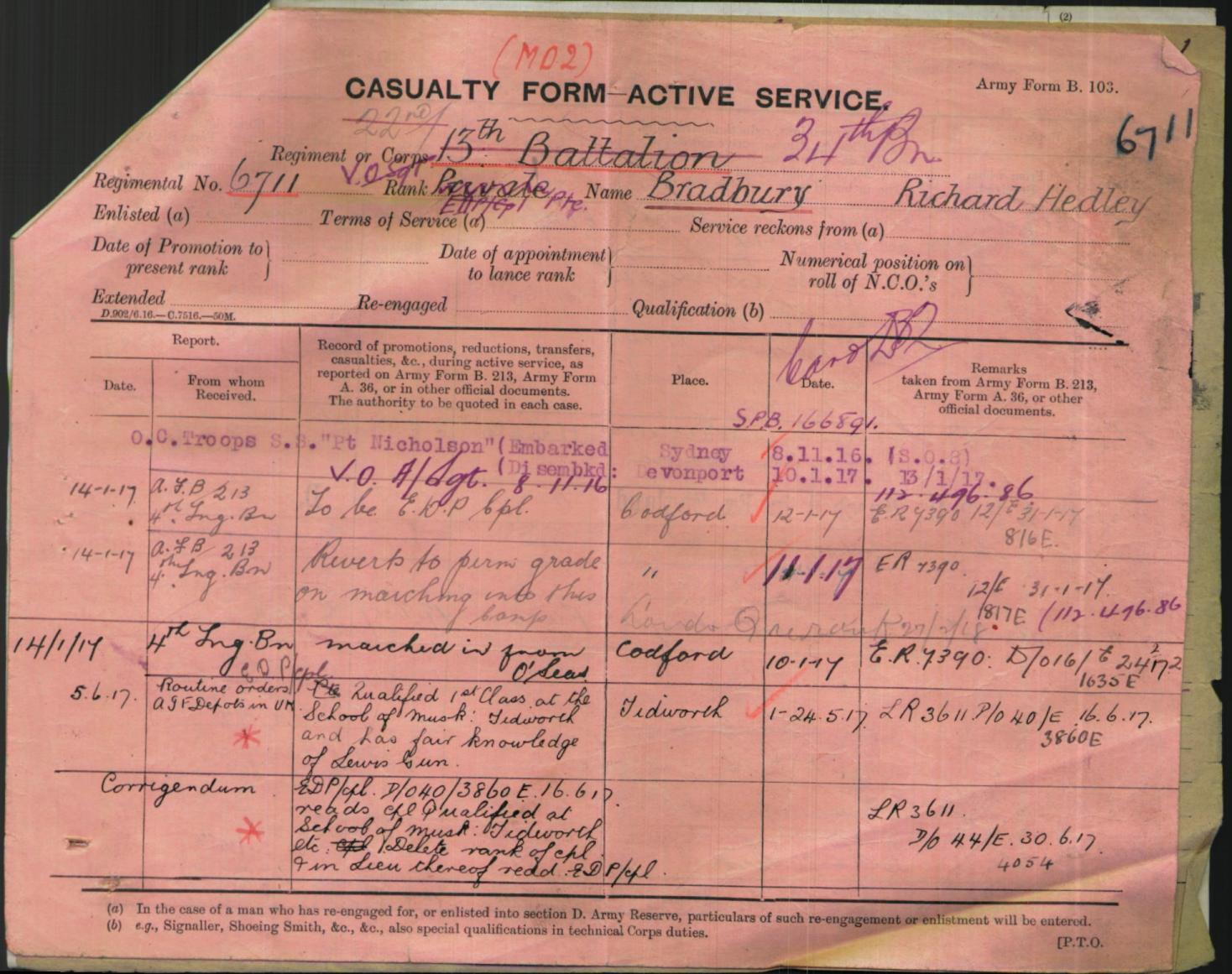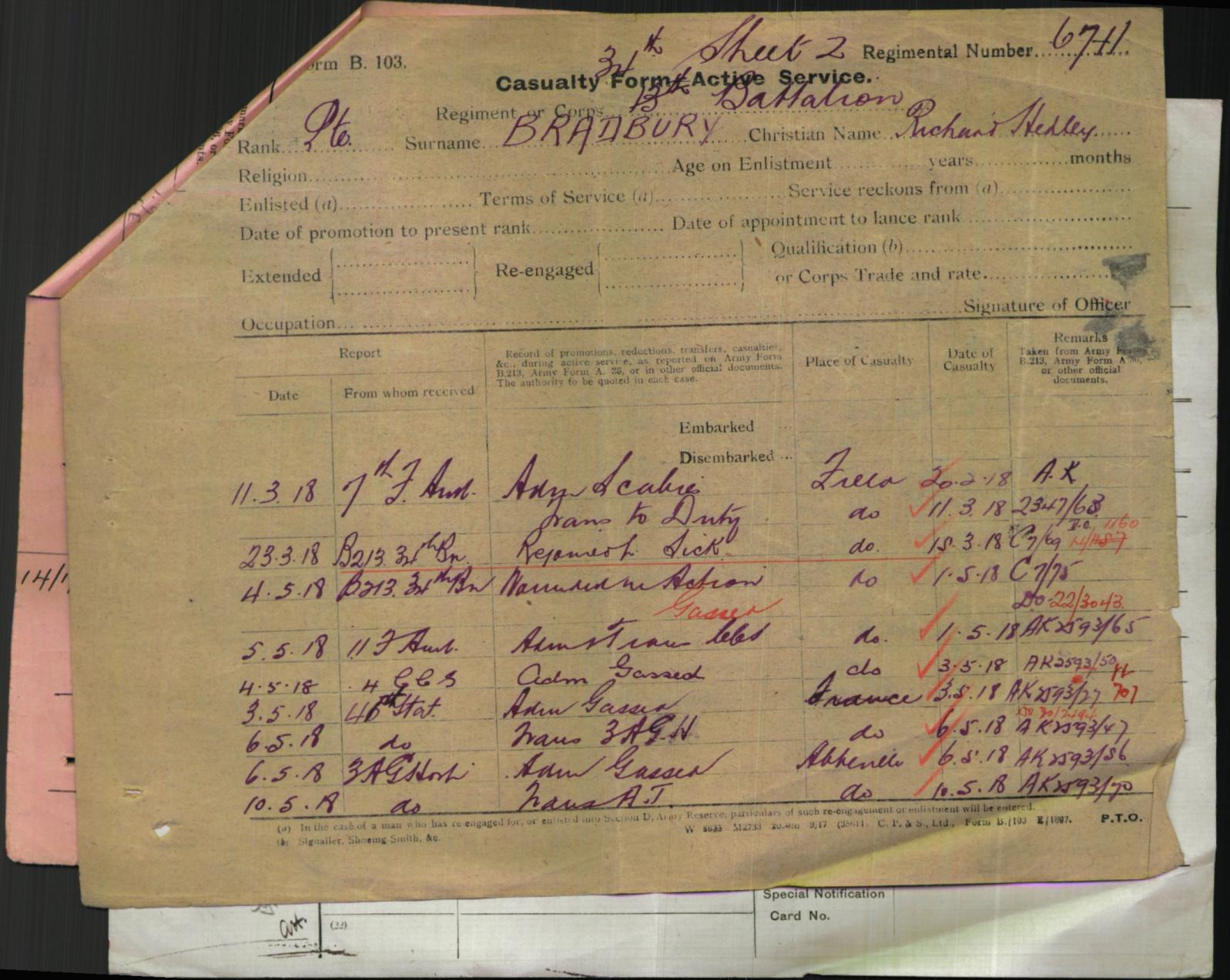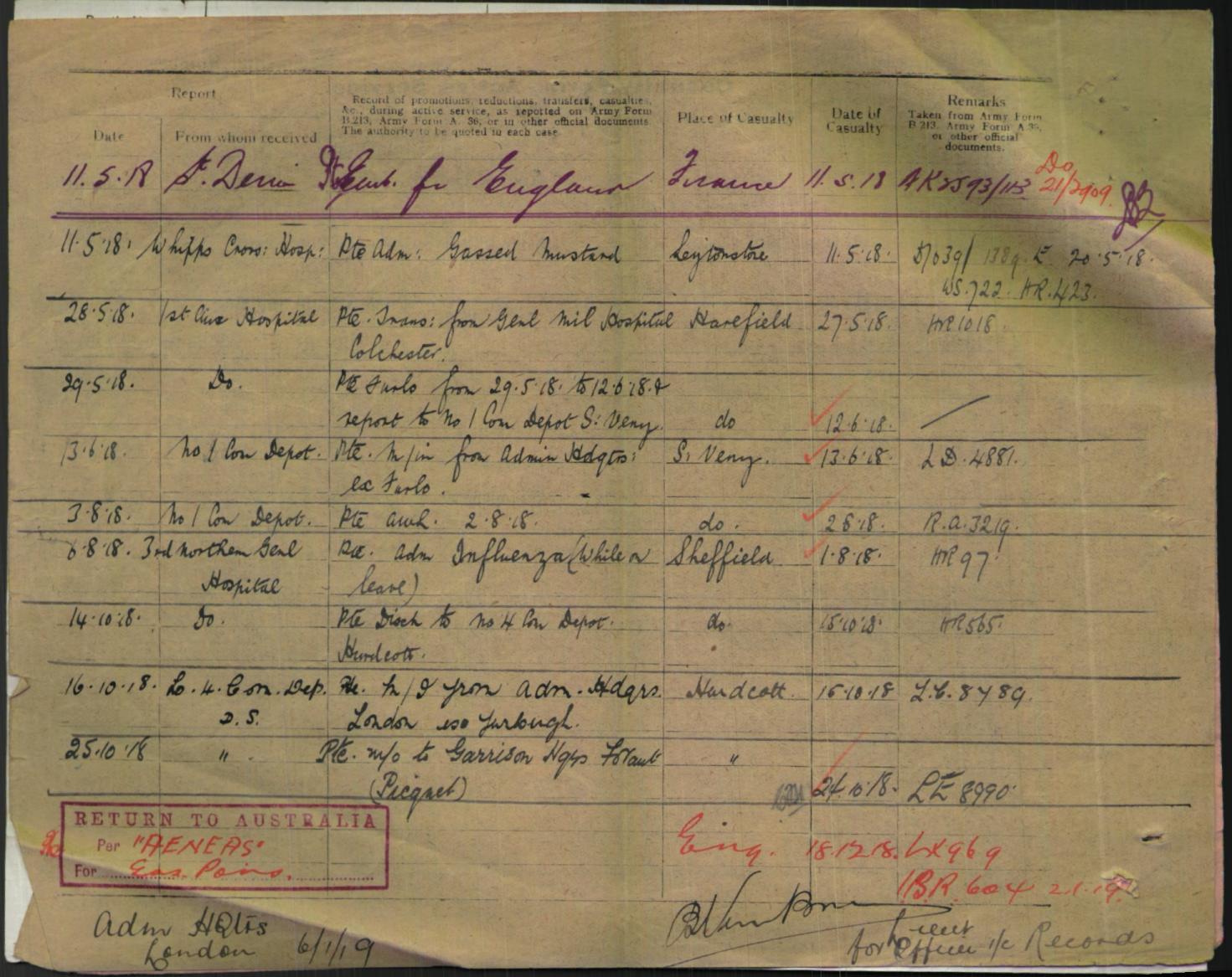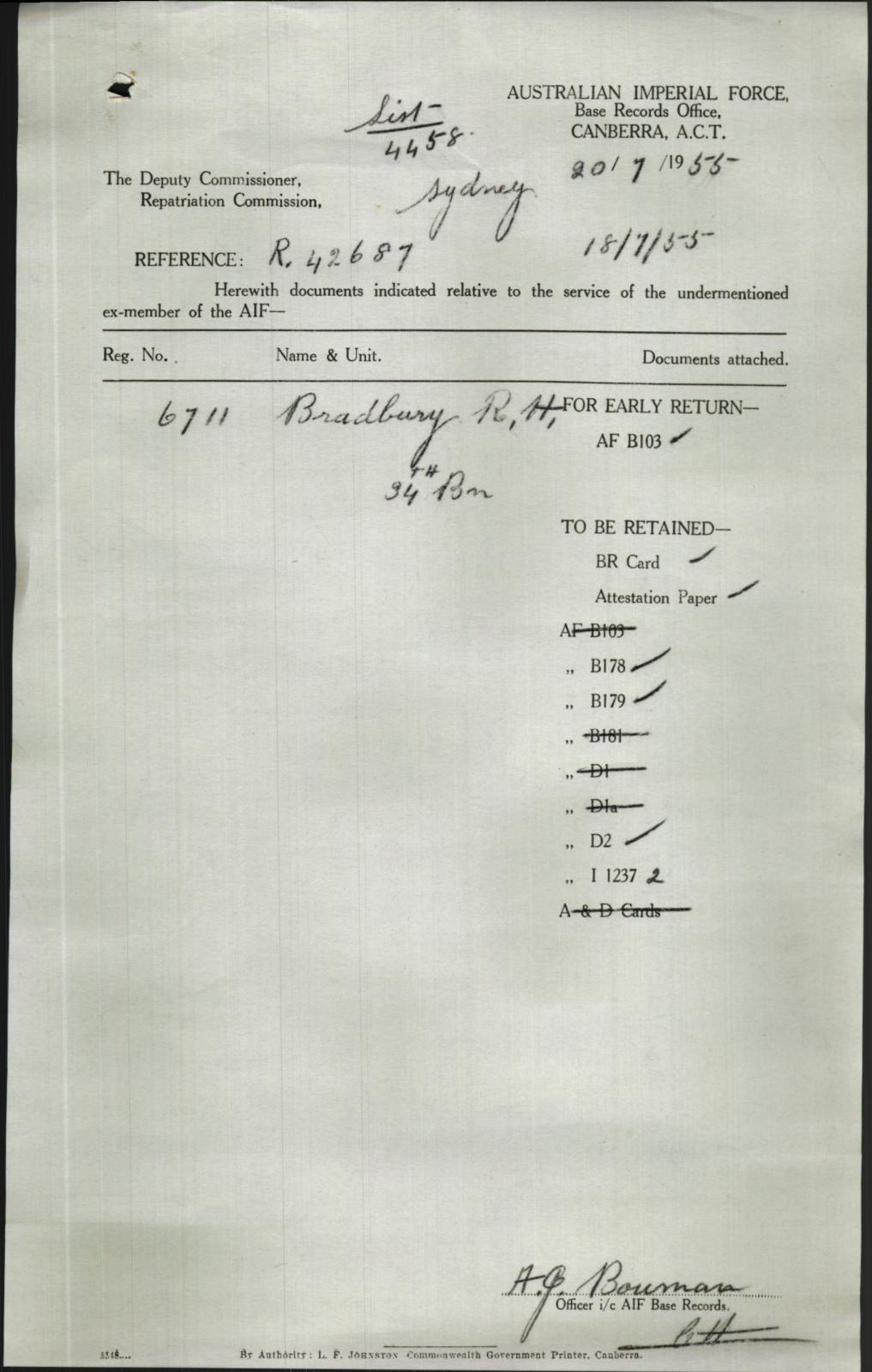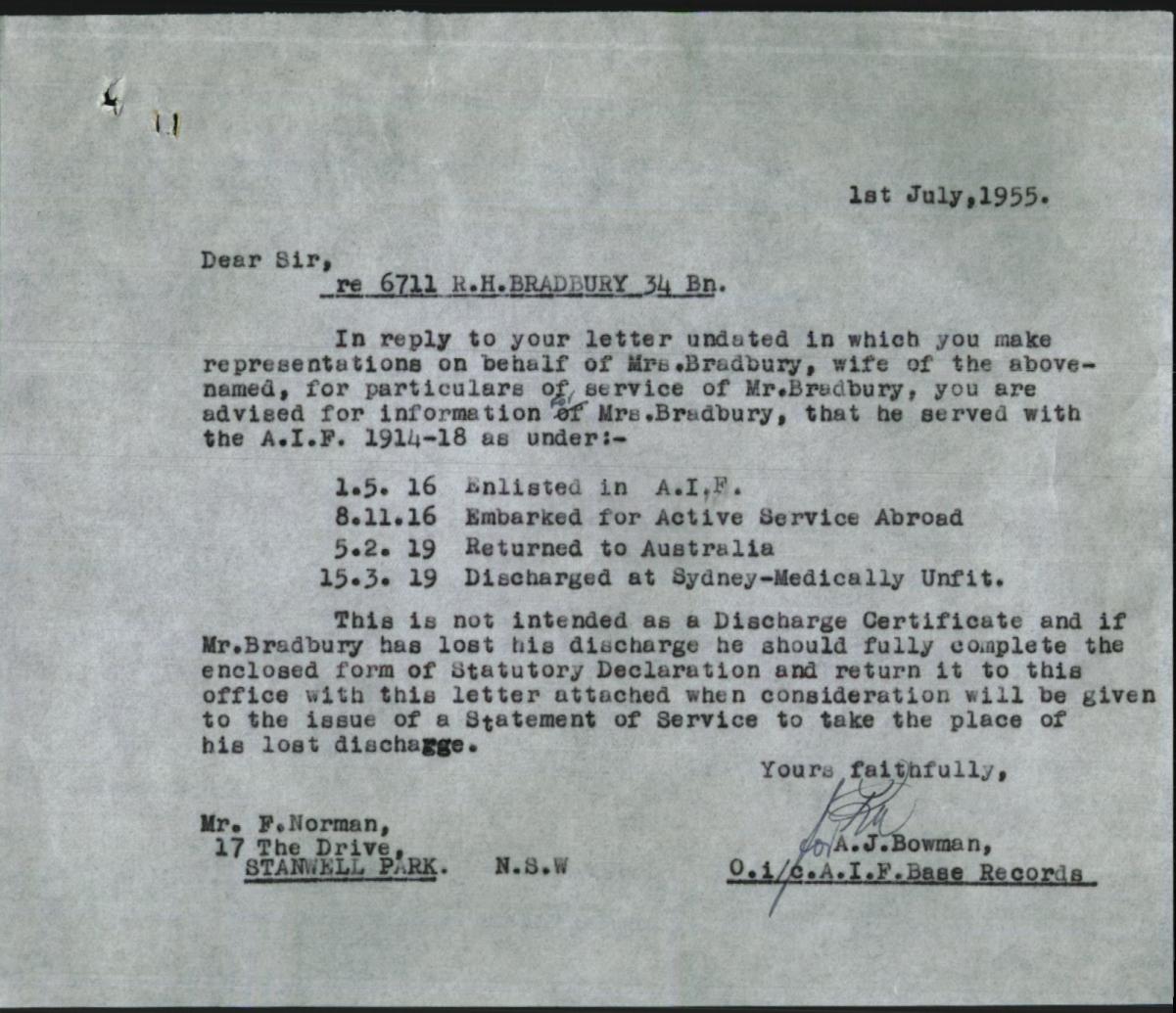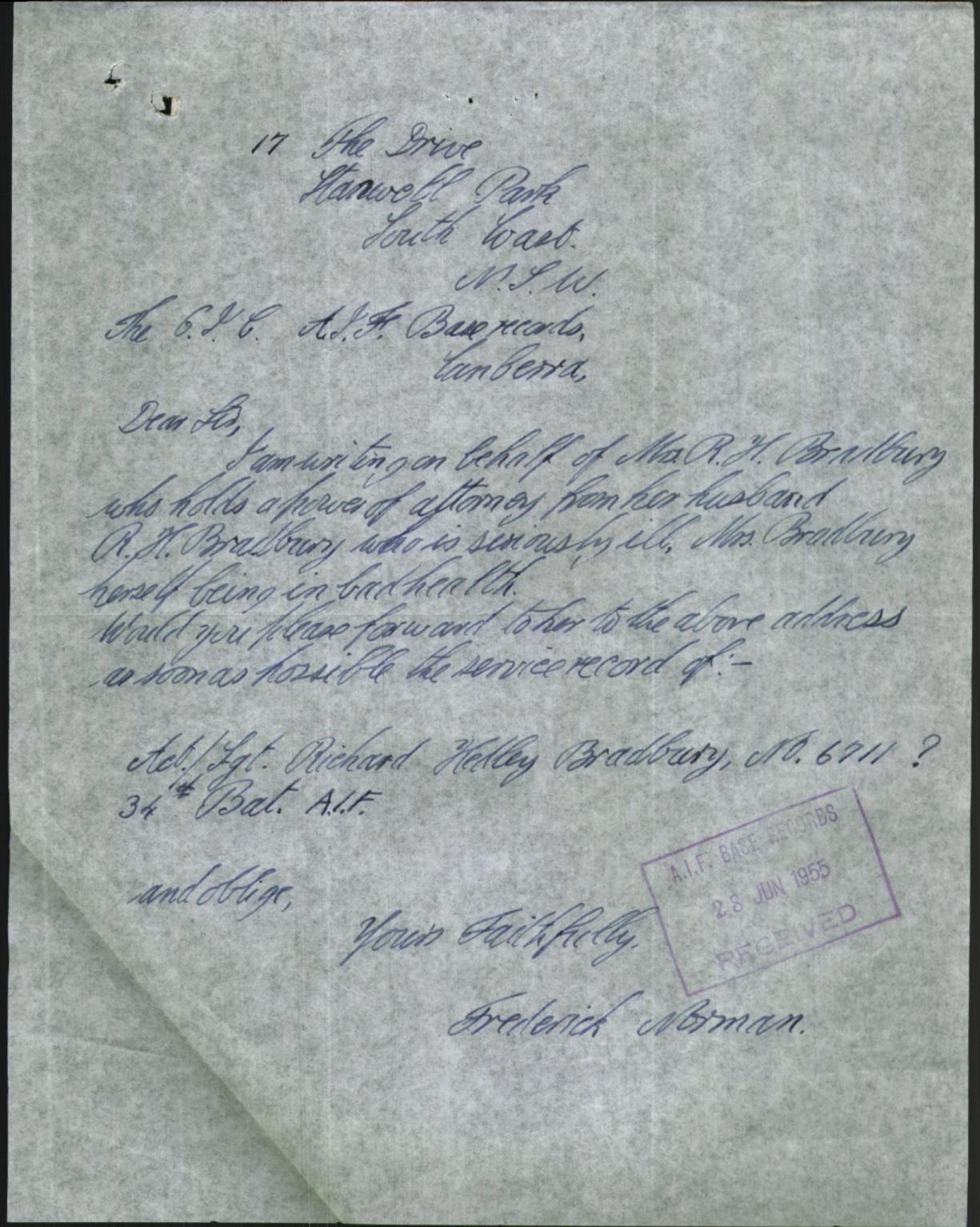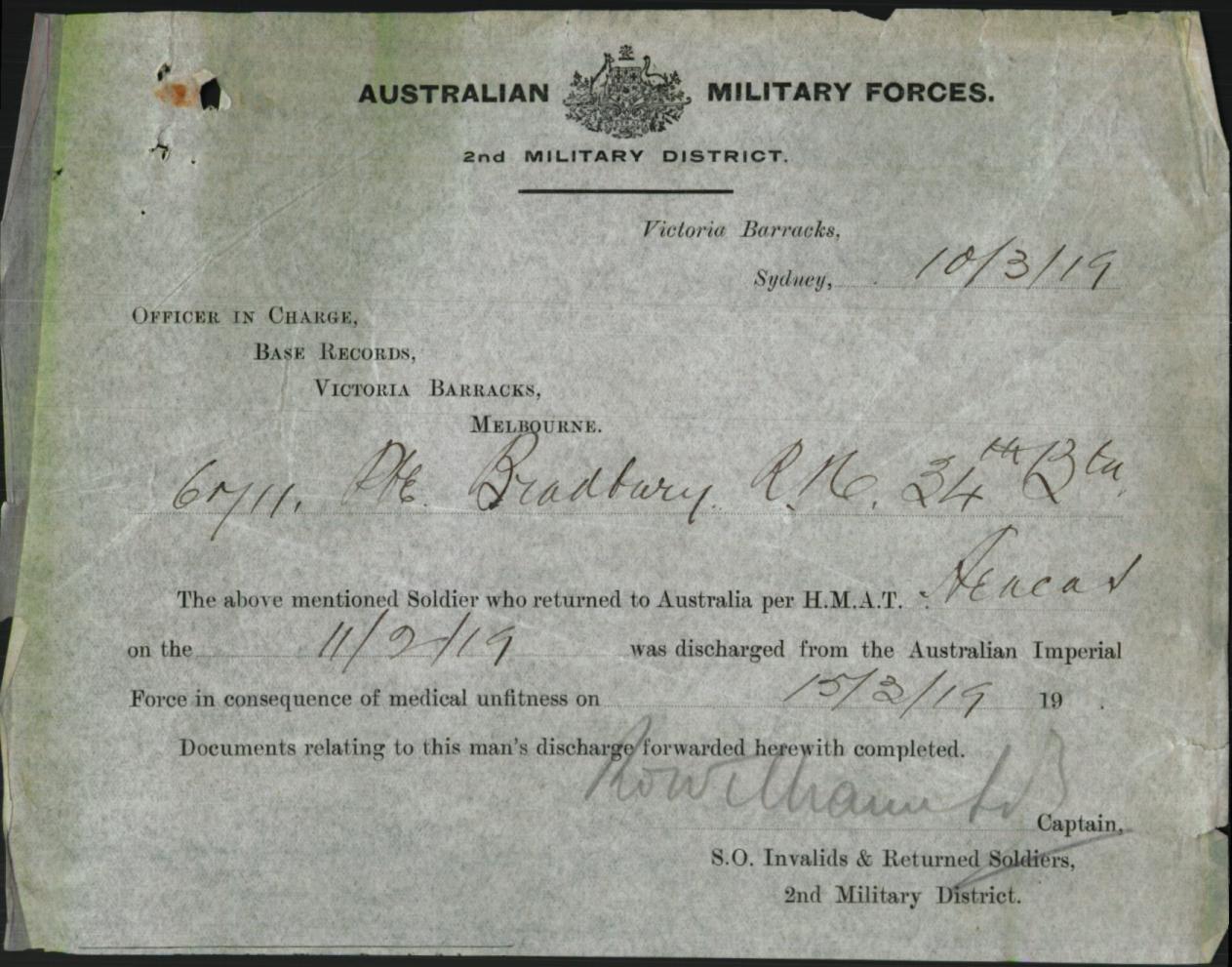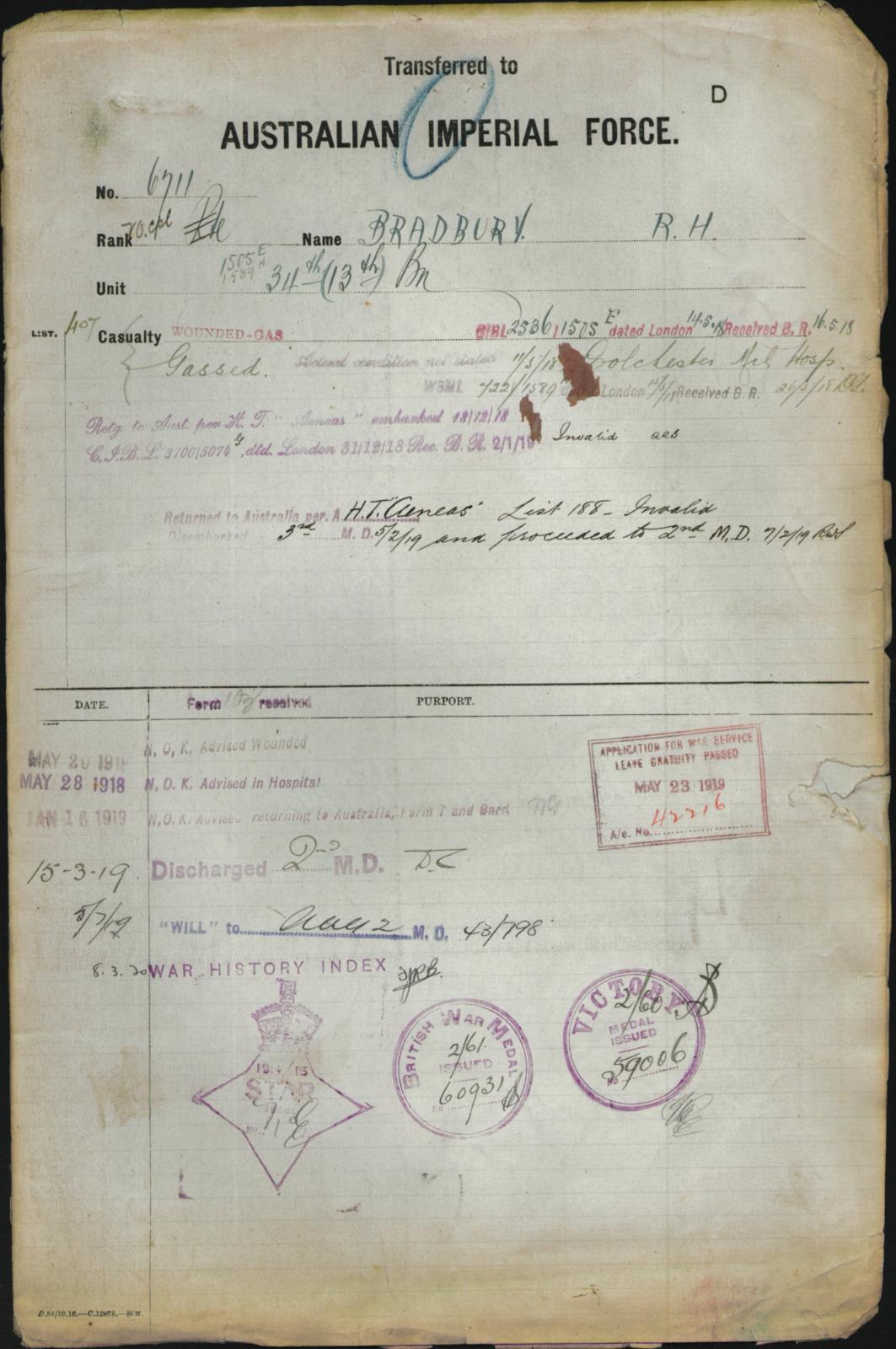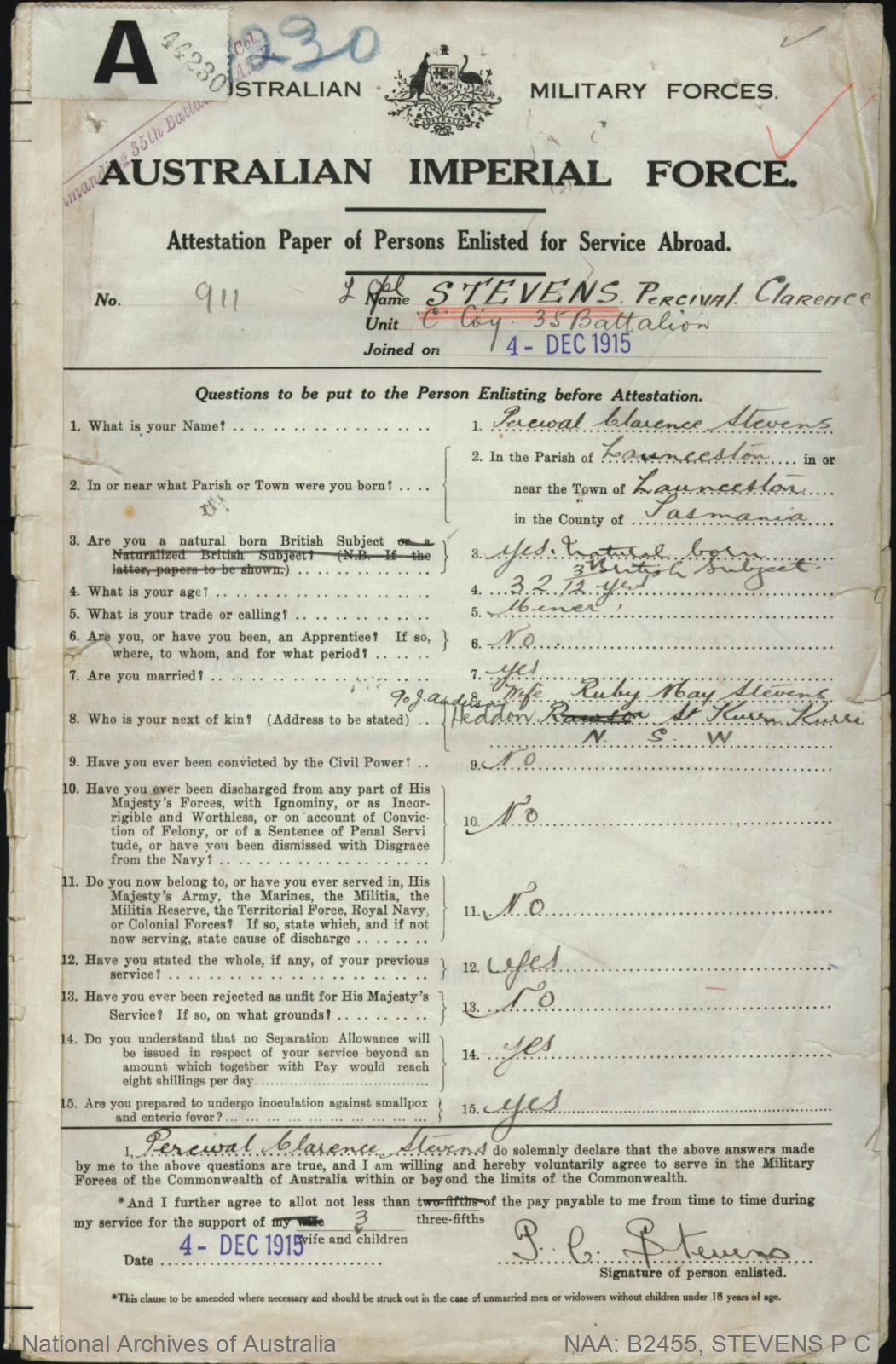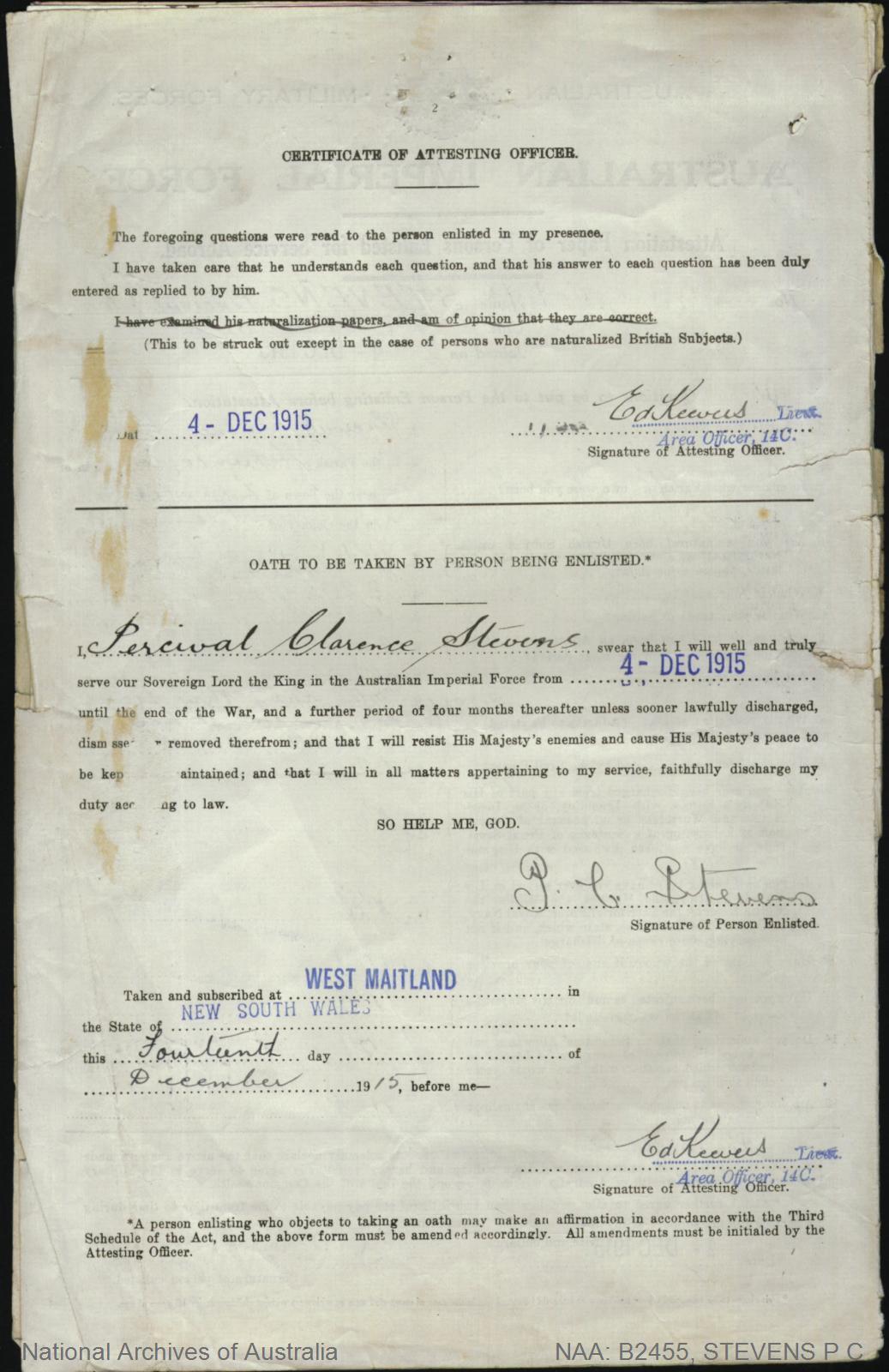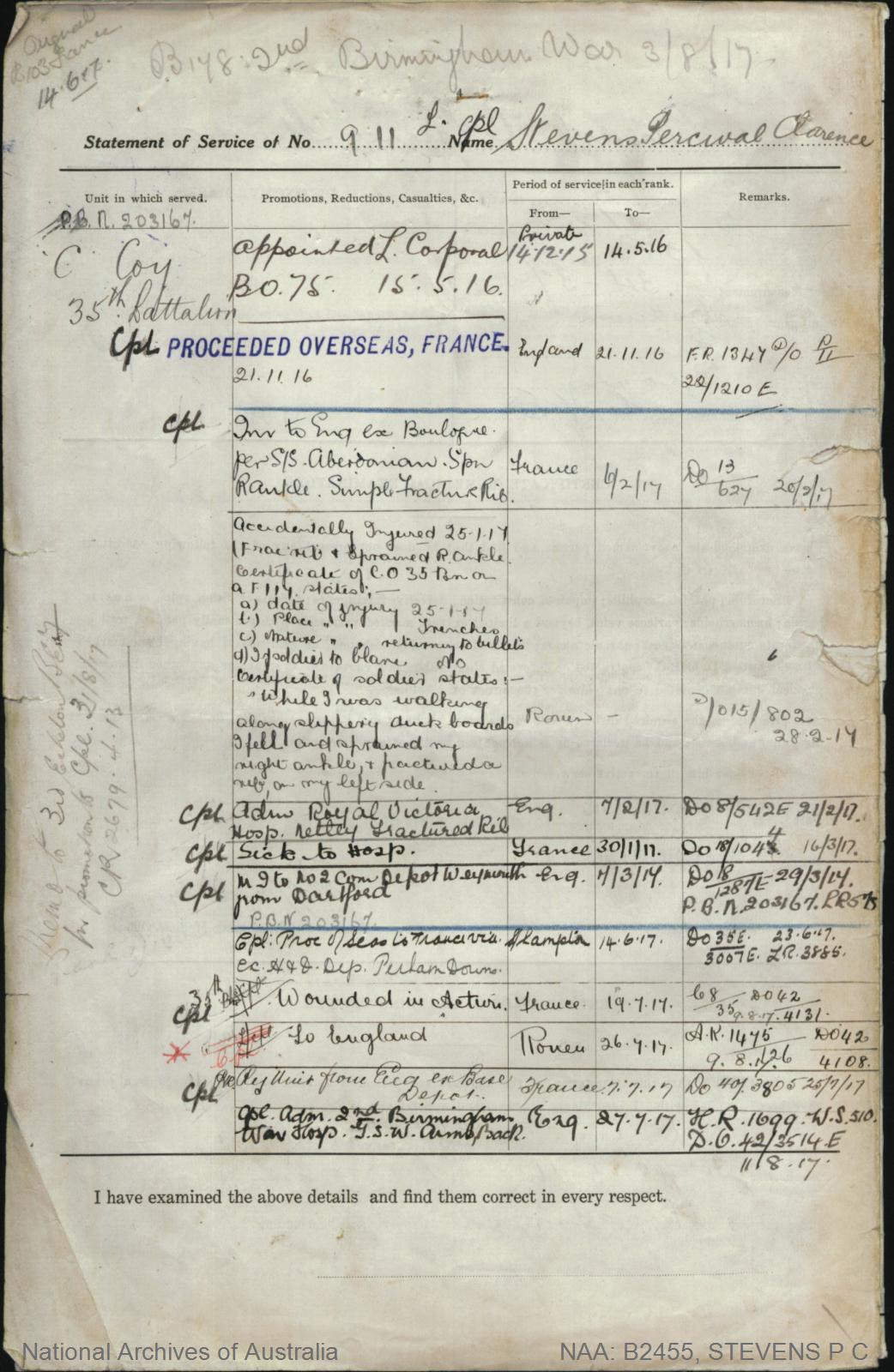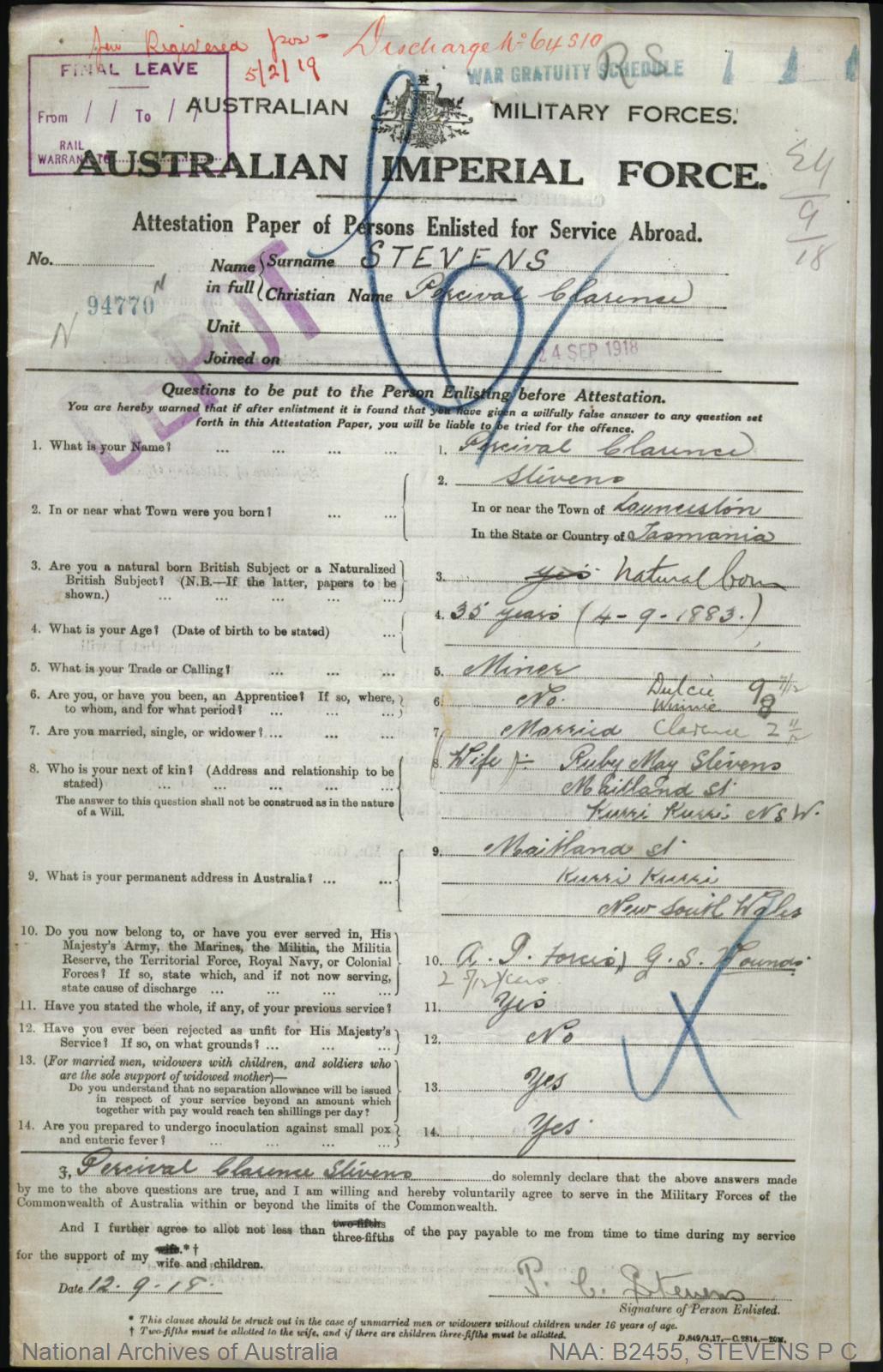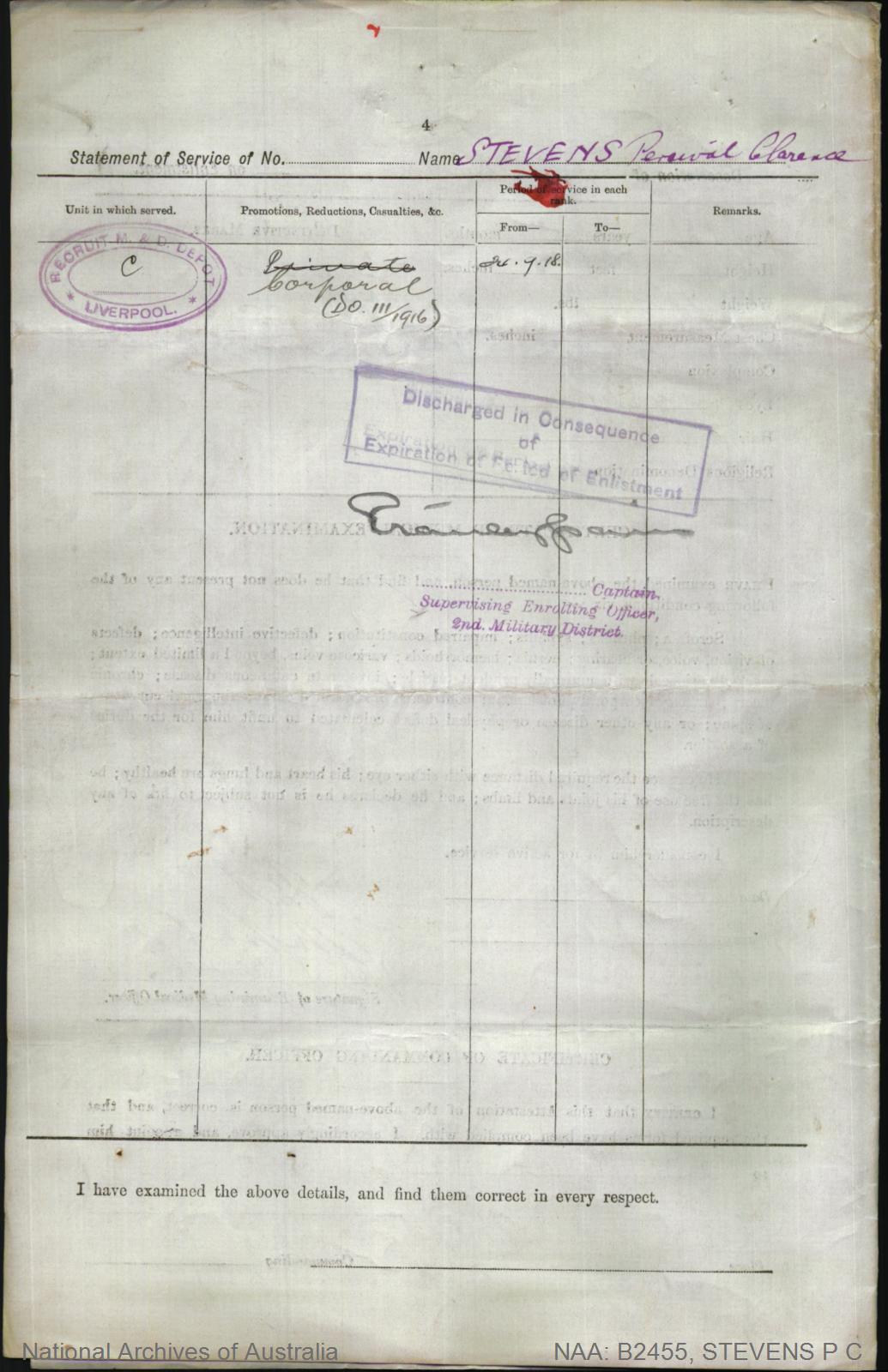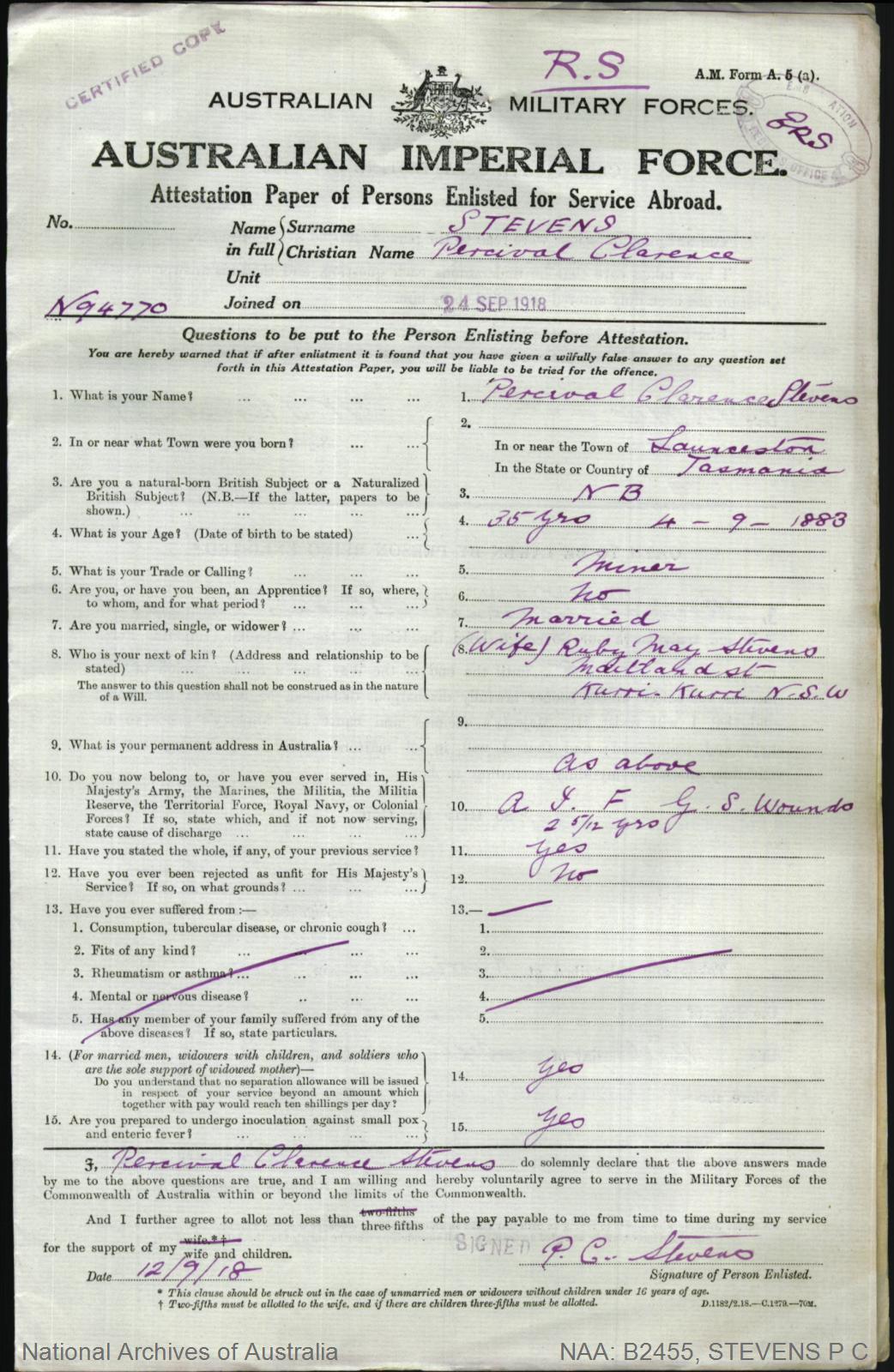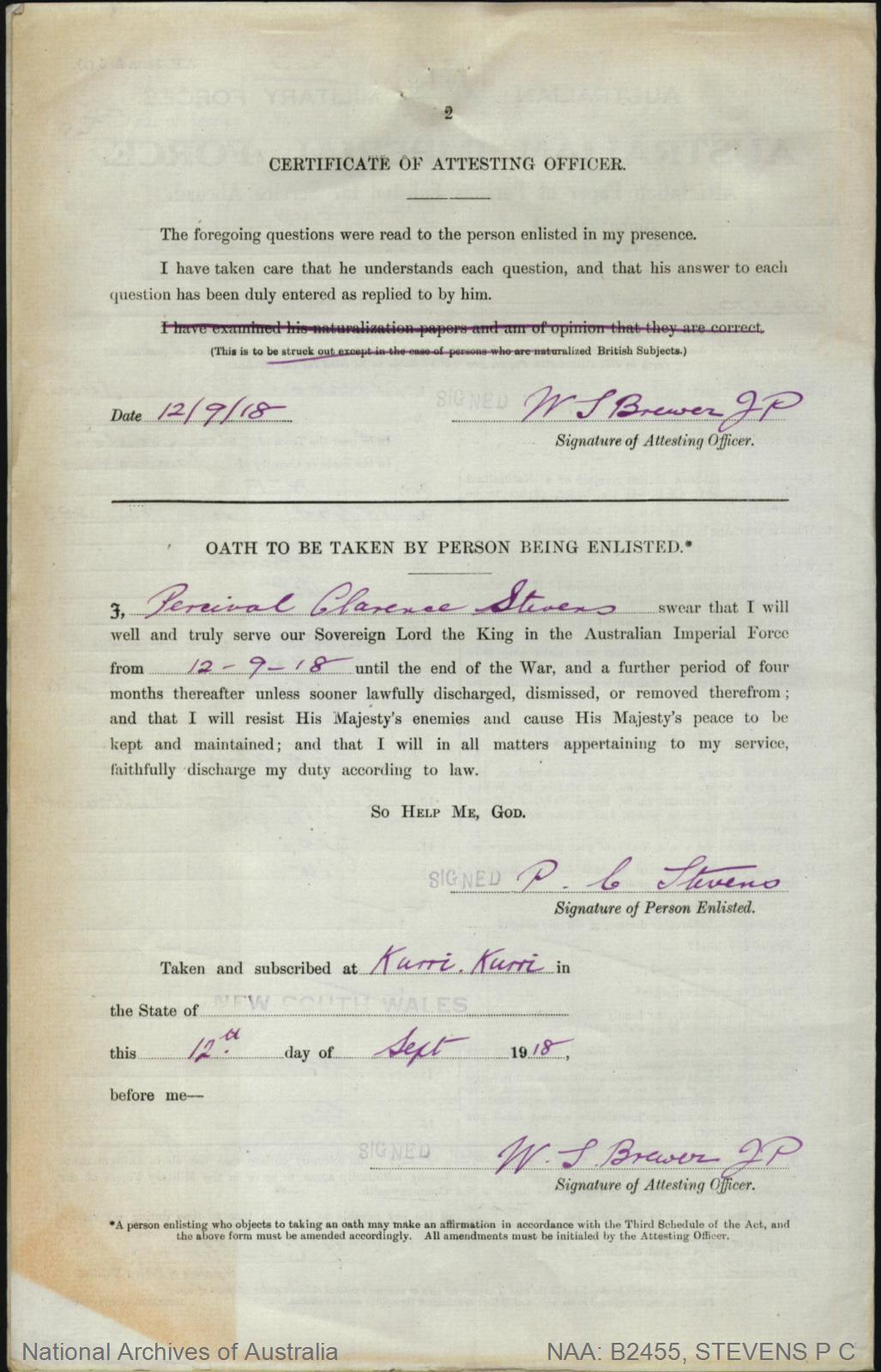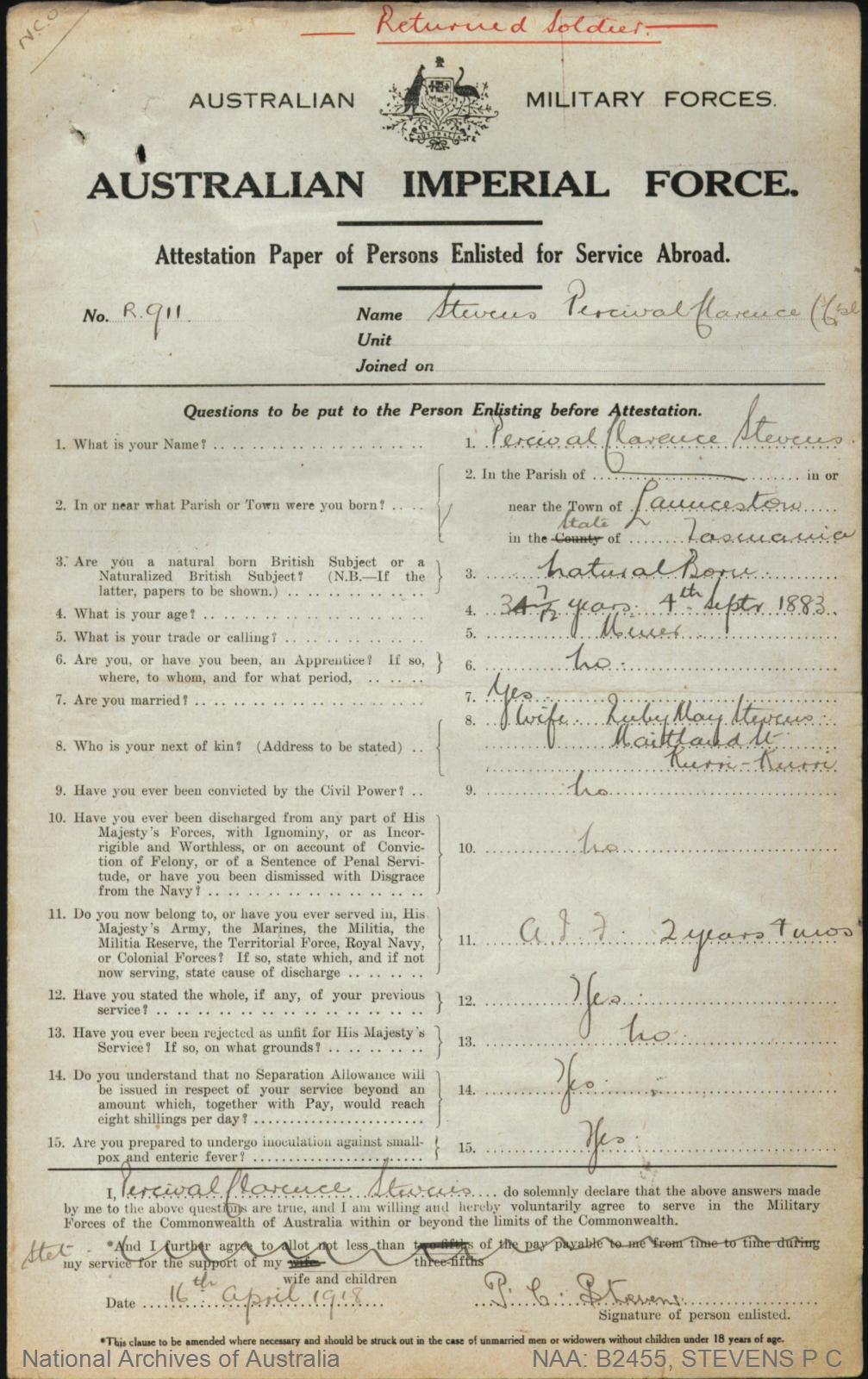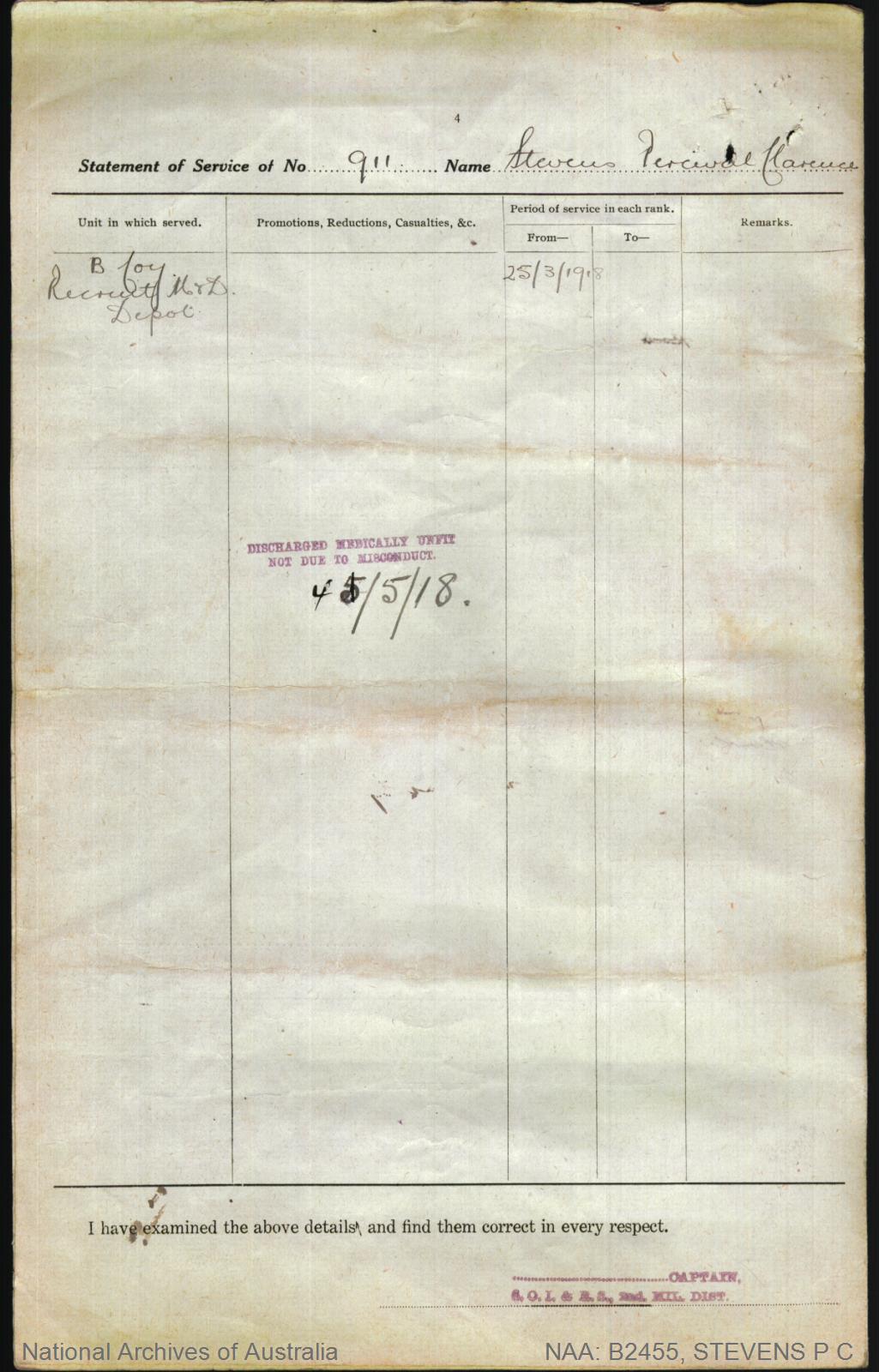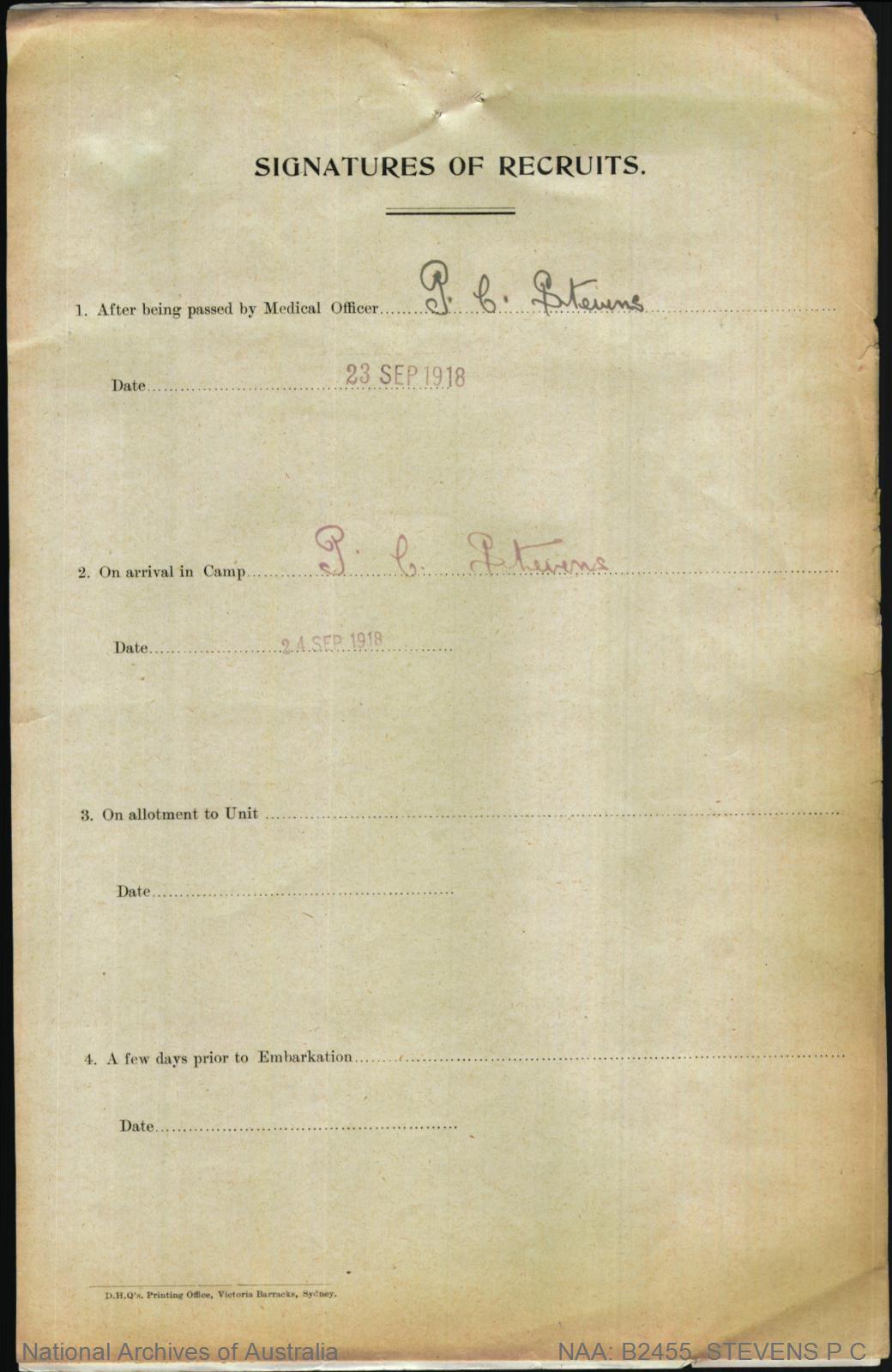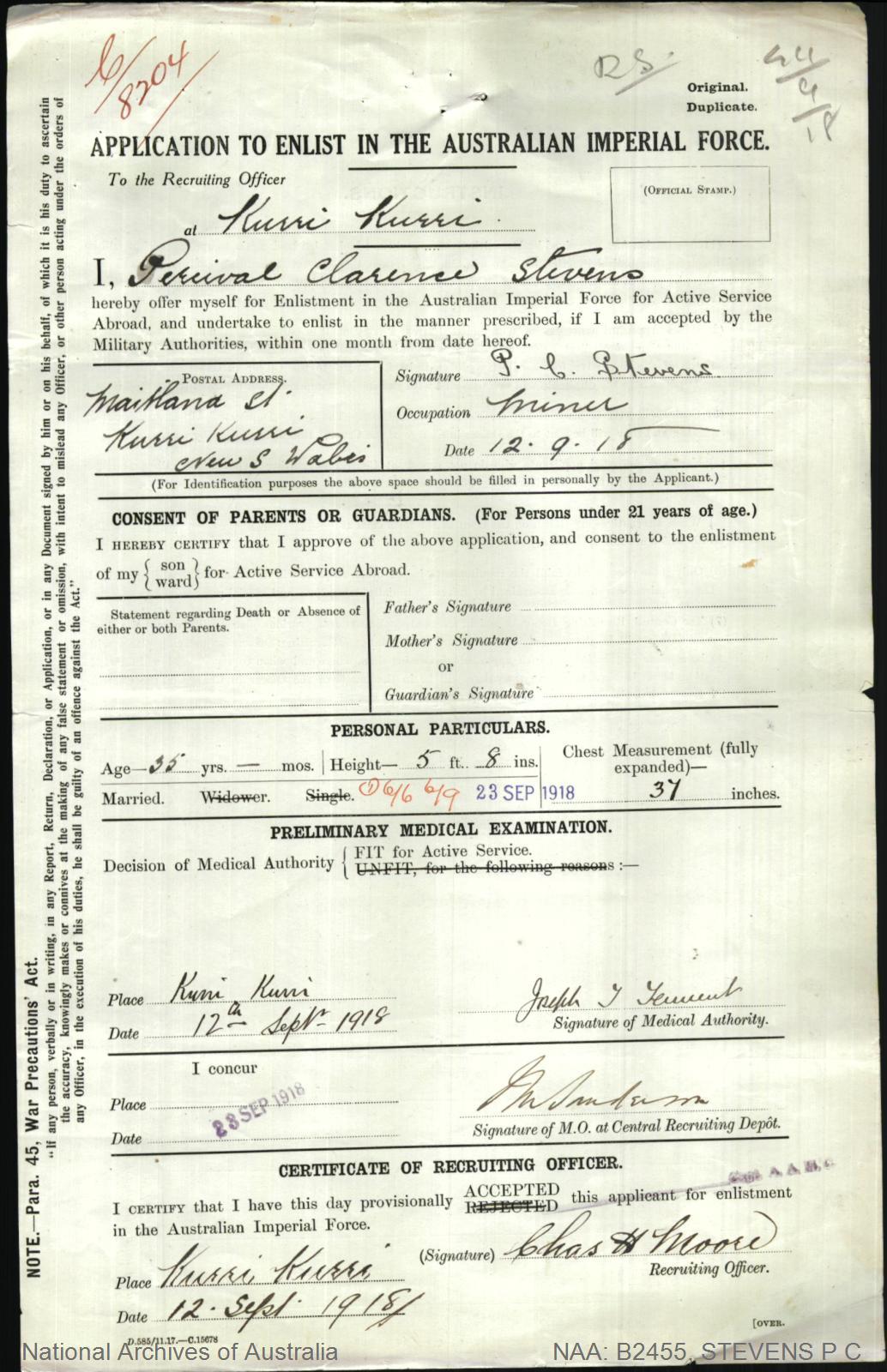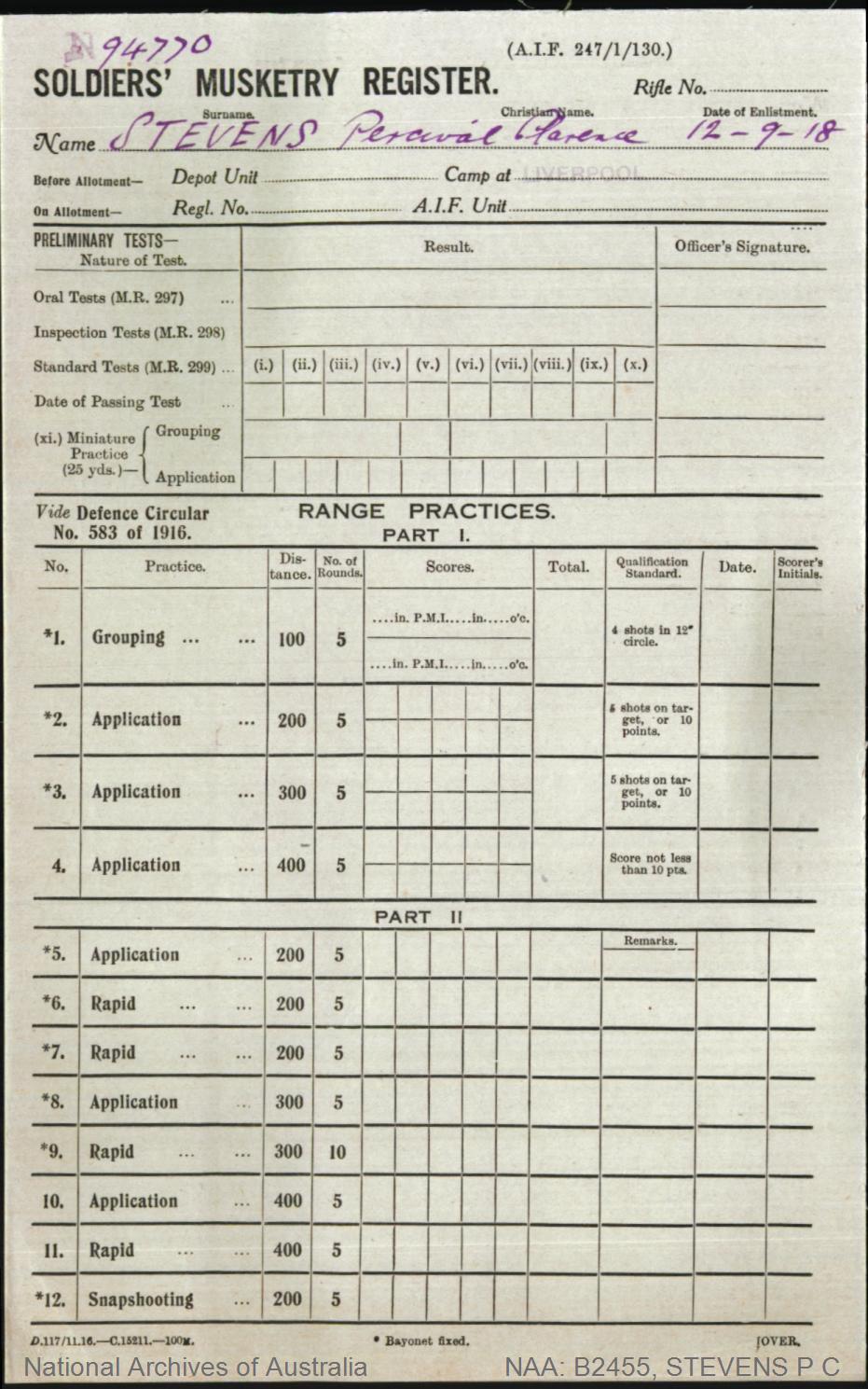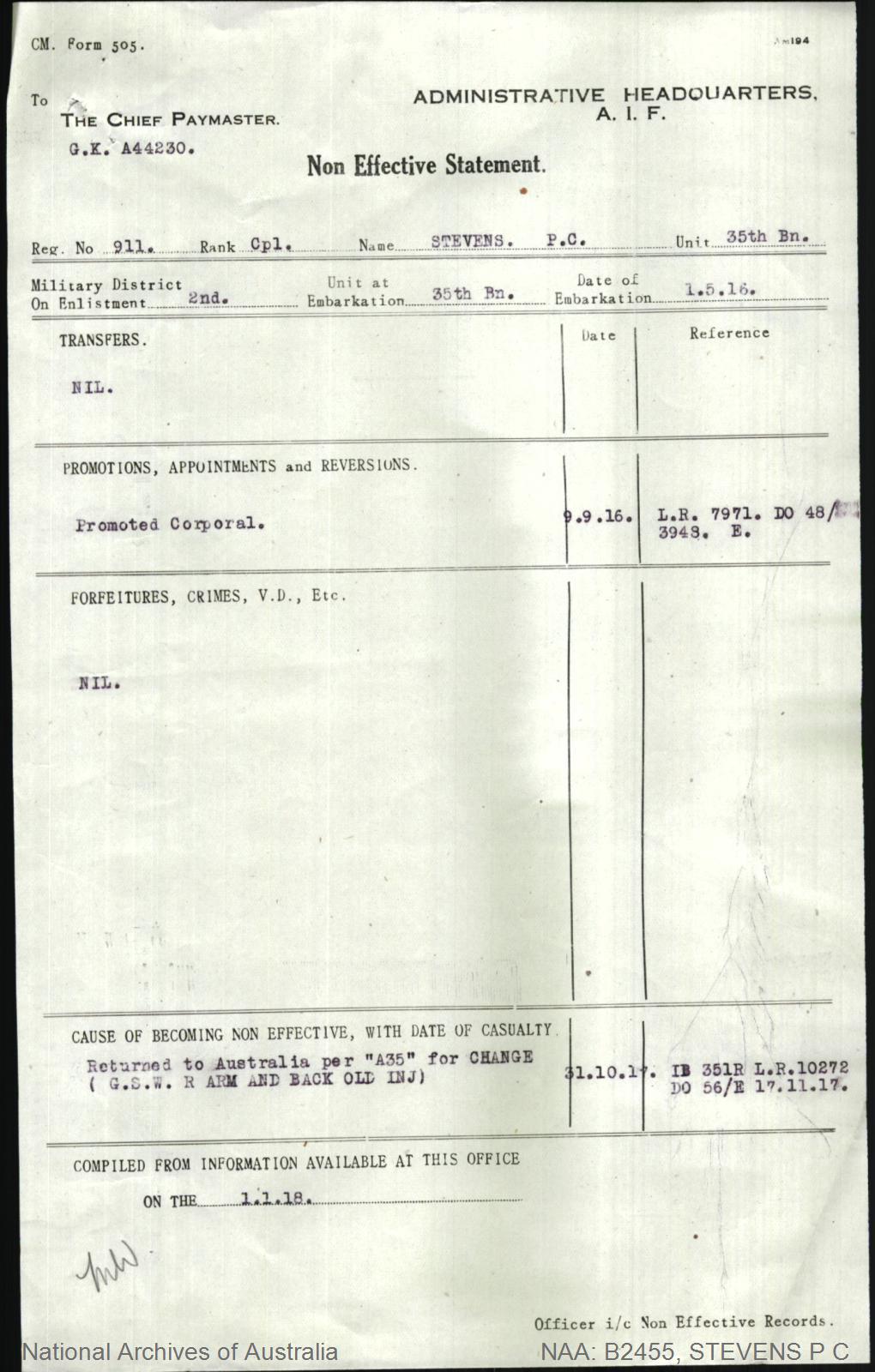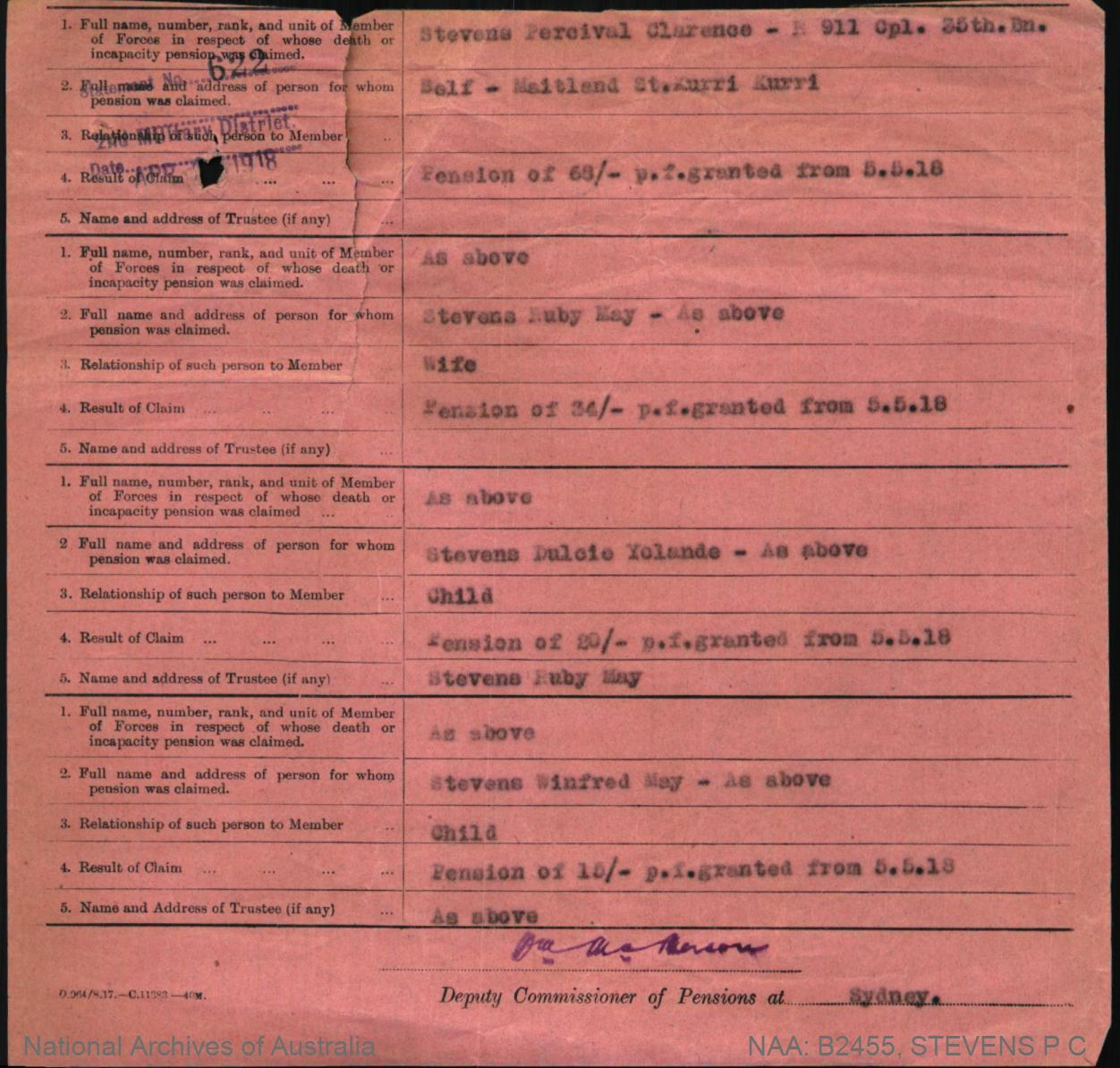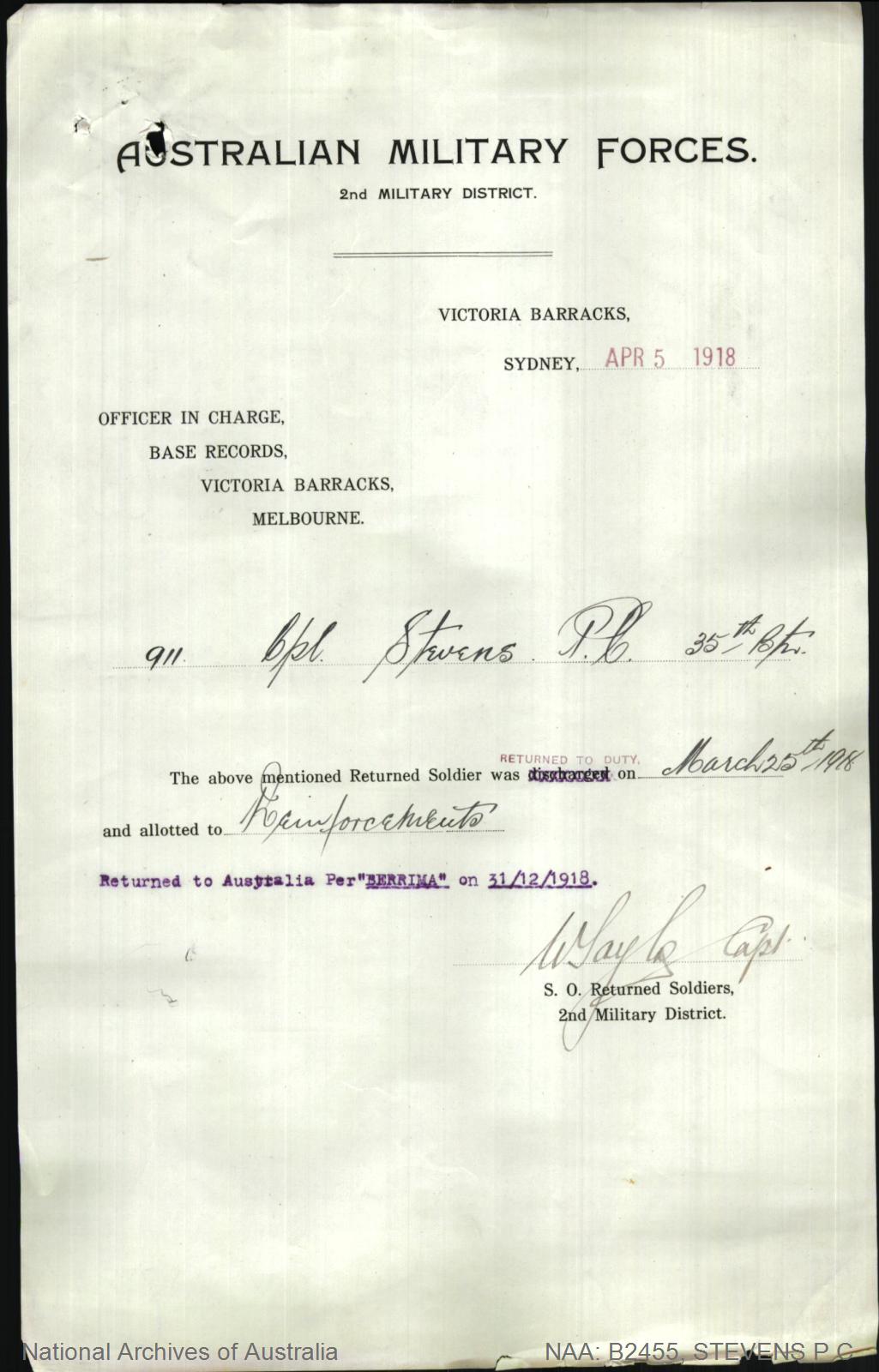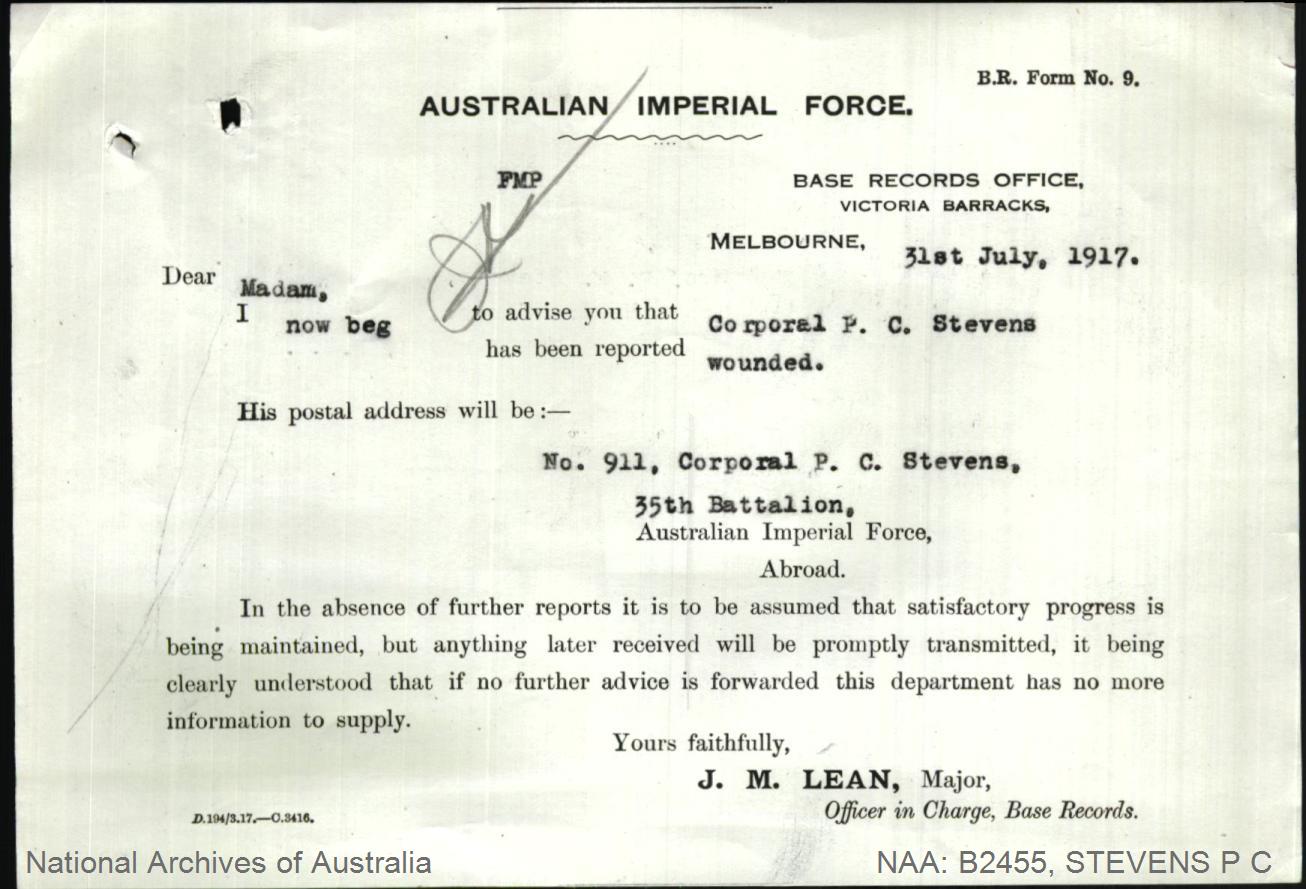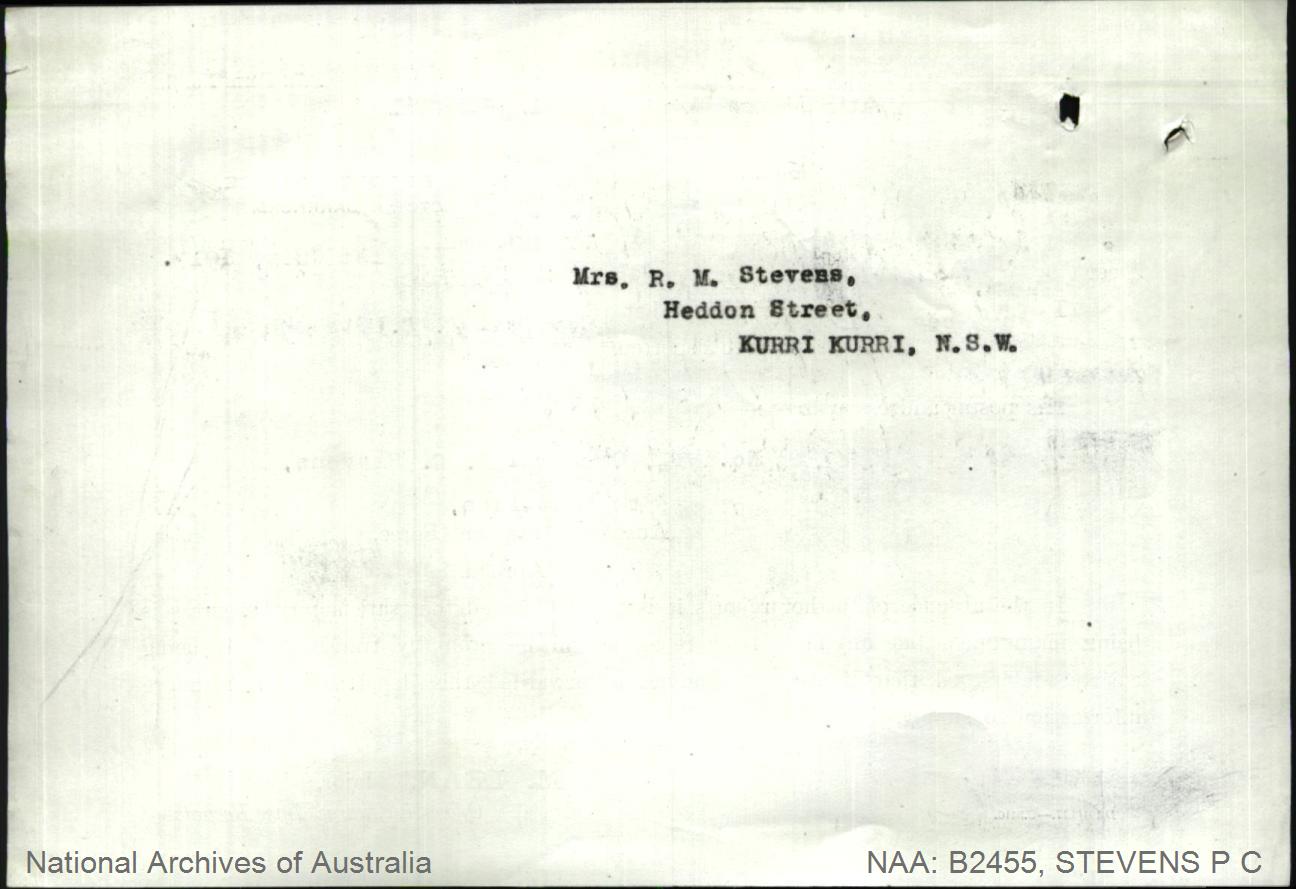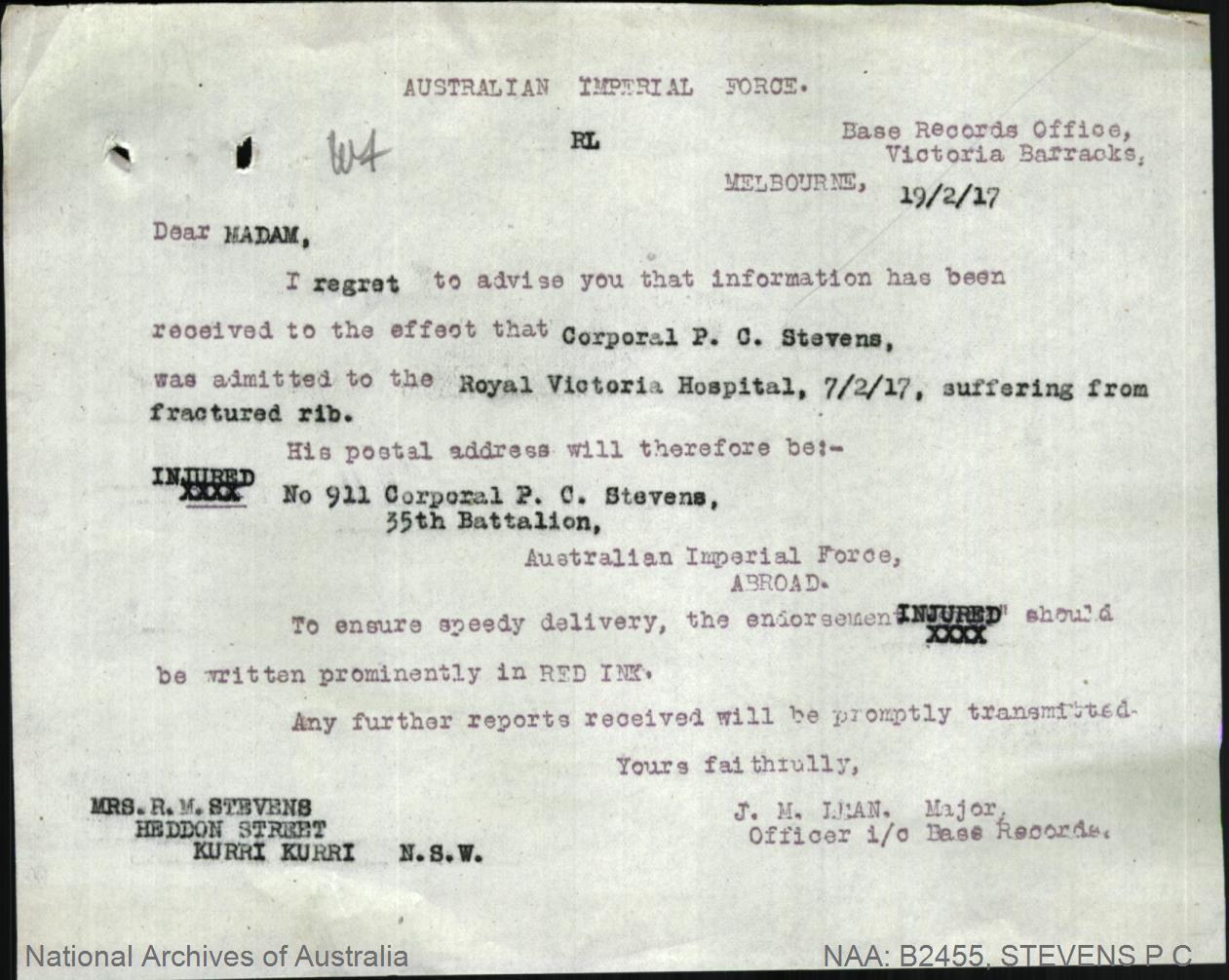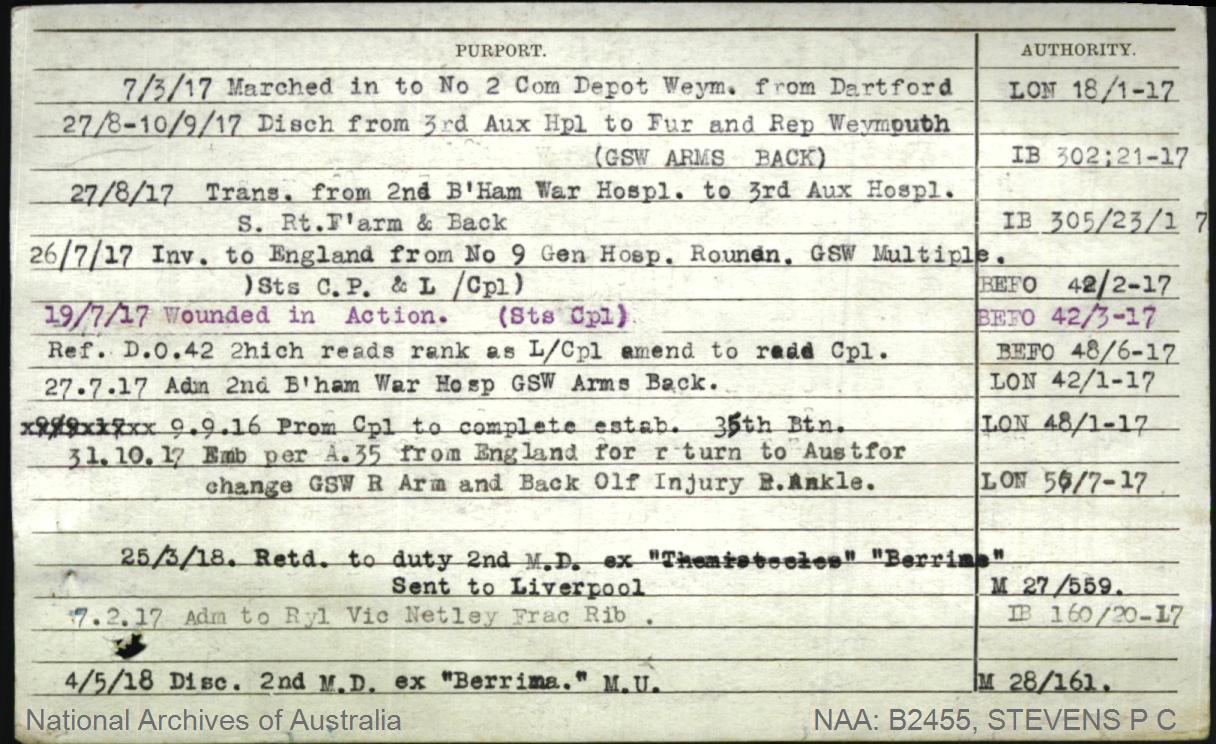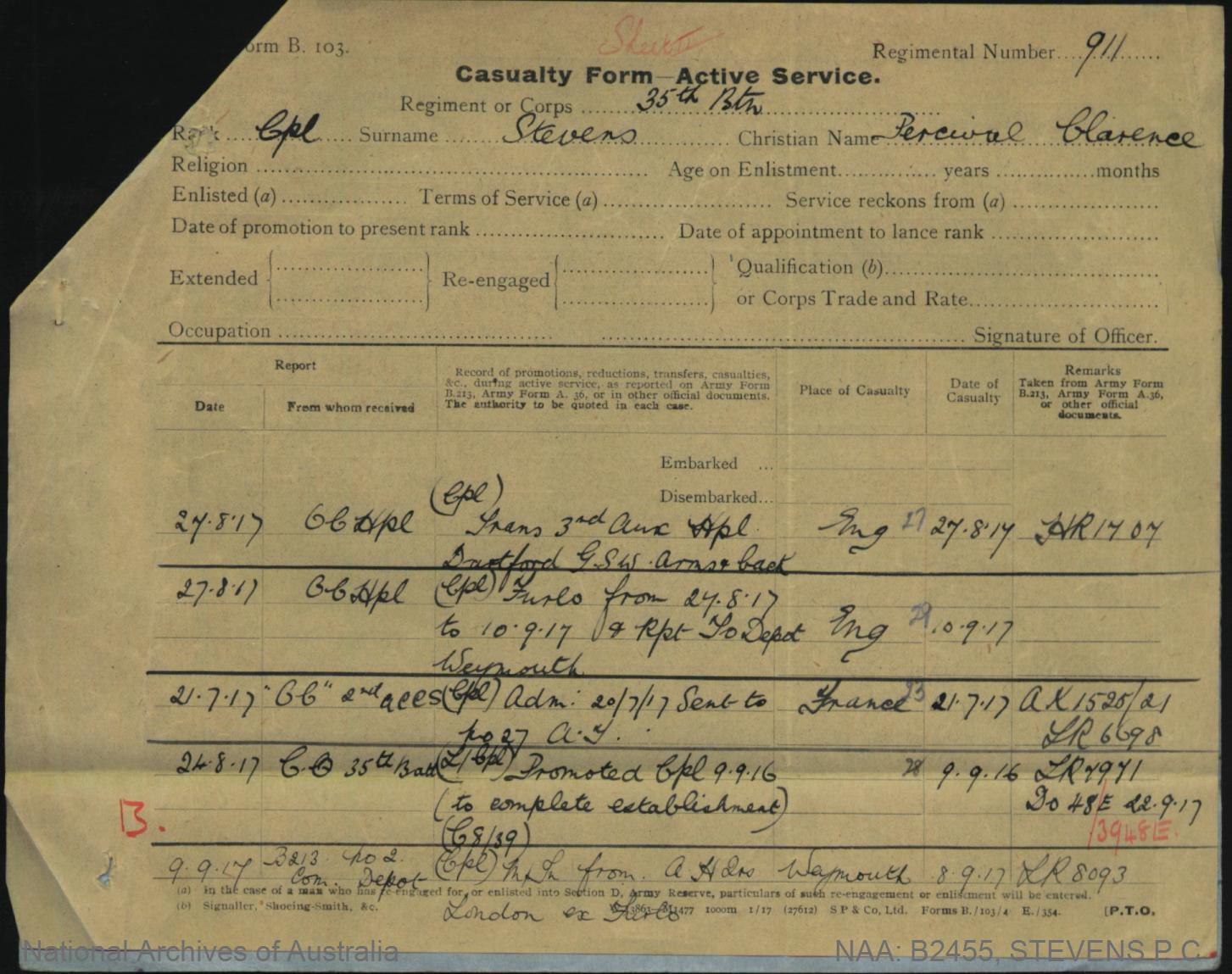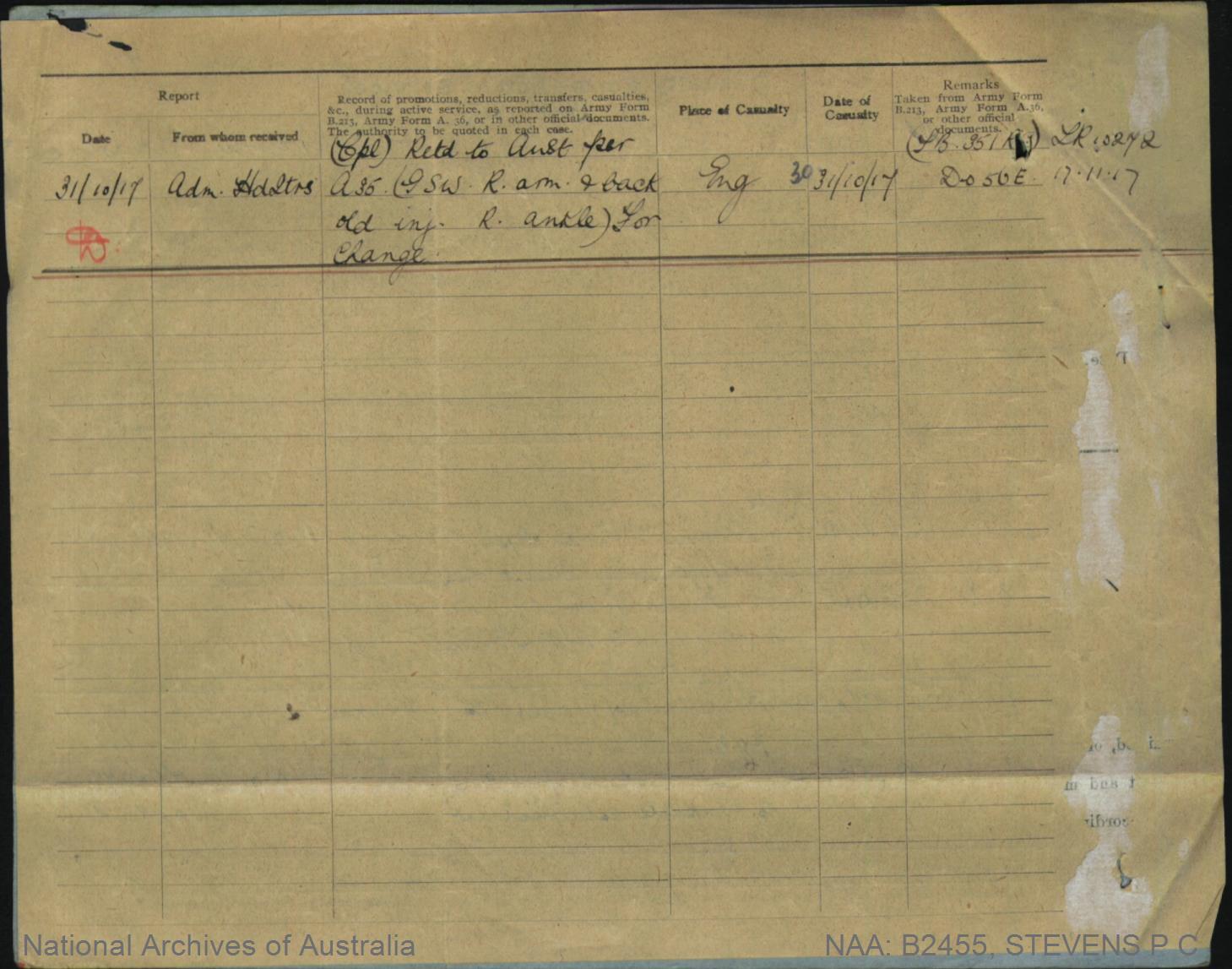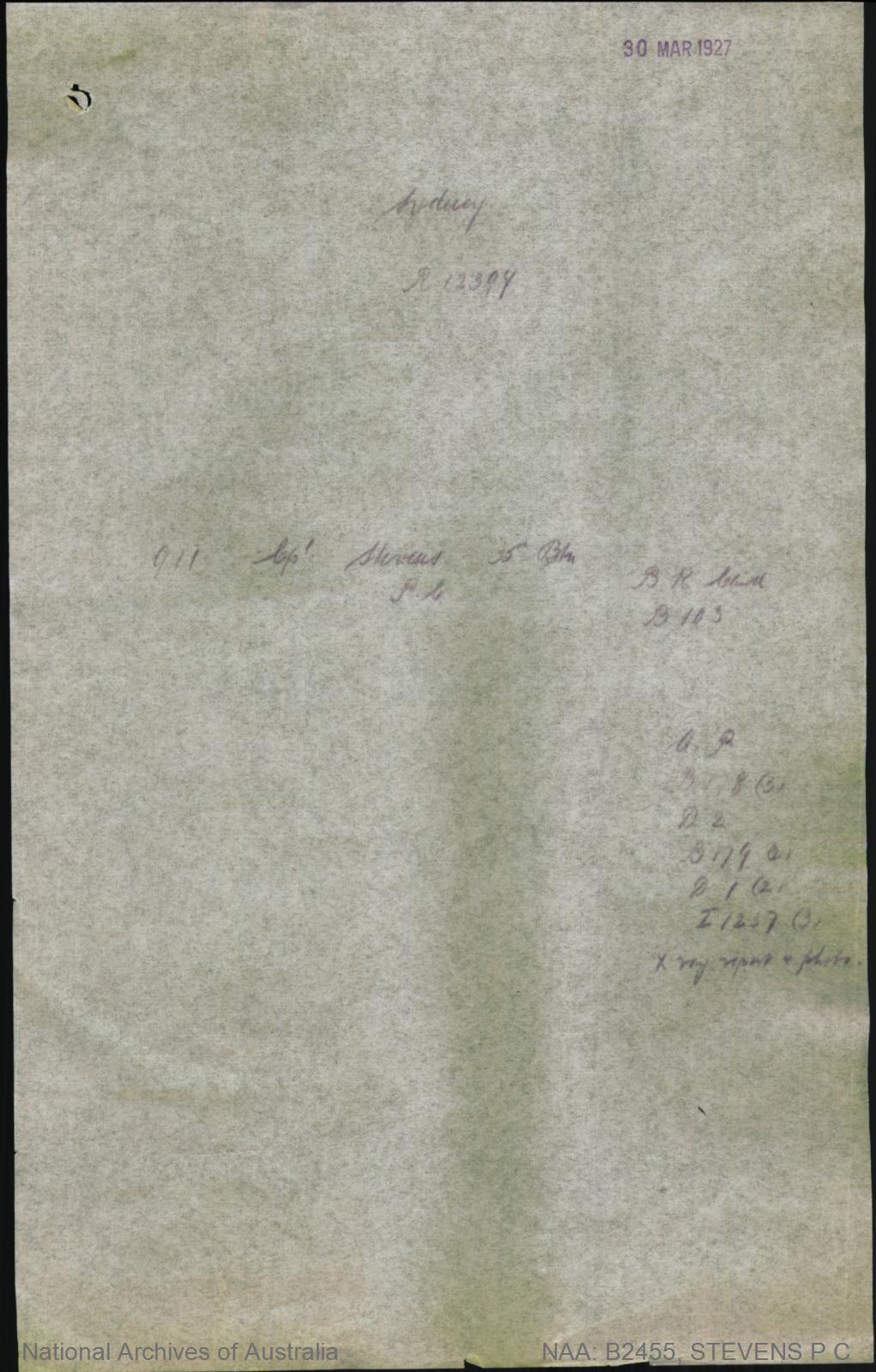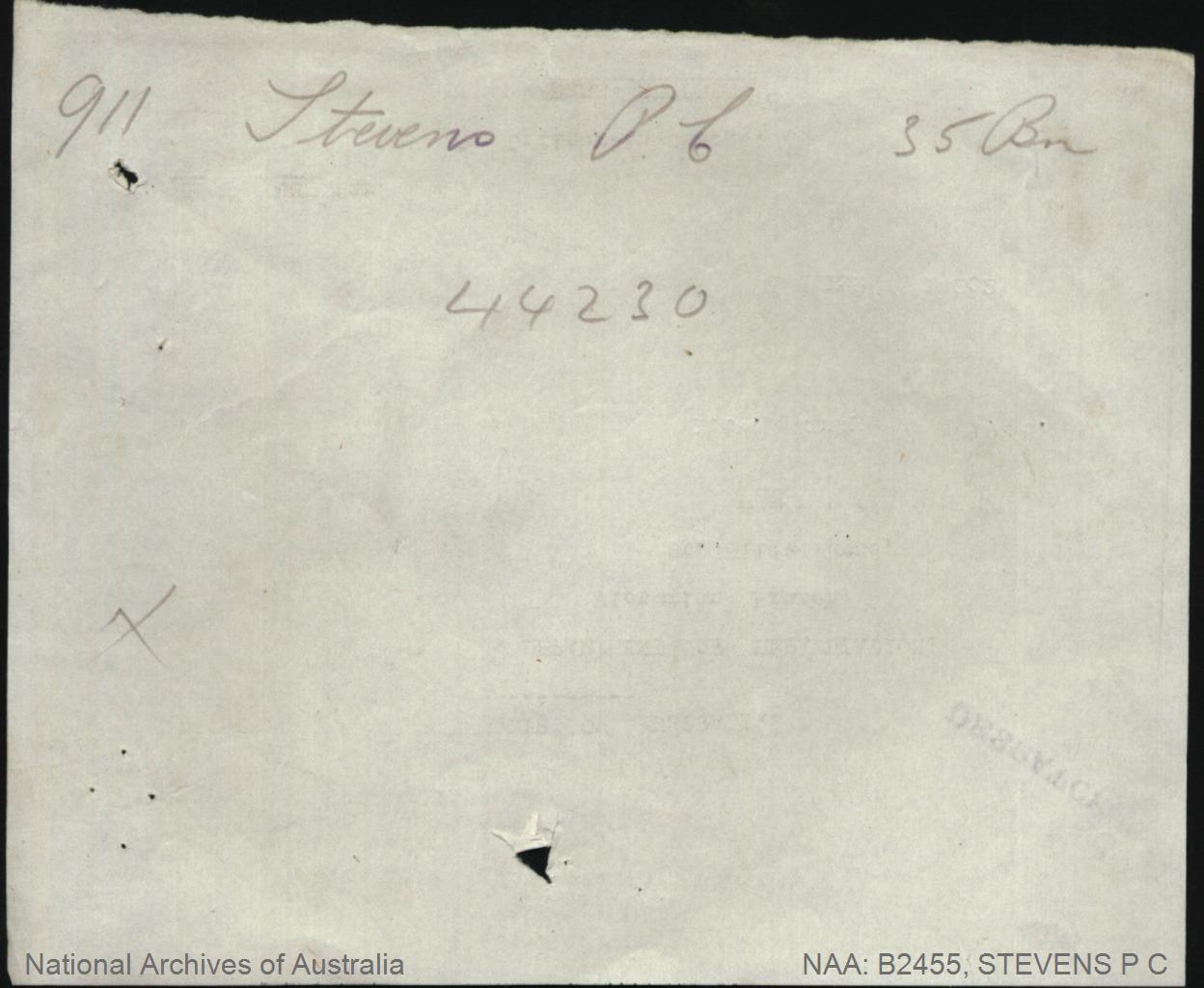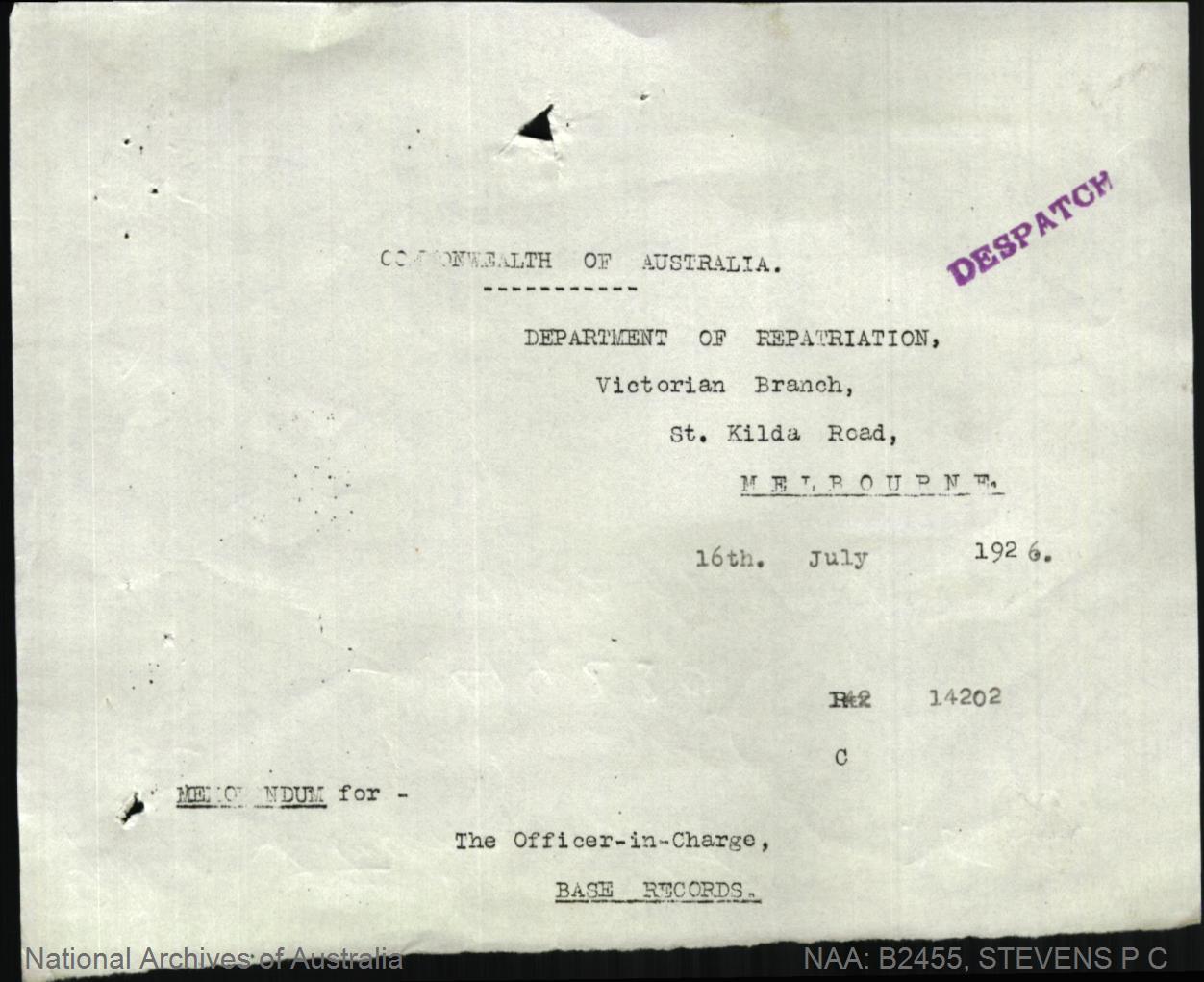34th BATTALION AIF
Private: 831 Albion MASON.
Born:
Married:
Wife:
Died:
Father:
Mother:
INFORMATION
No.831 Albion MASON was an 18 year old Labourer from Abedare in NSW when he enlisted in the AIF at West-Maitland on the 31st of December 1916. He was still serving with the 14th Infantry Regiment (Militia), under the ‘Universal Training Scheme’, at the time of his enlistment.
He embarked from Australia as a member of “C” Company of the 34th BATTALION (Maitland's Own) on the 2nd of May 1916, on board the HMAT (A20) ‘Hororata’. The route was via: Albany in Western-Australia, Columbo in India, the Suez Canal, and Port Said. At Alexandria in Egypt the Battalion was then transhipped onto the S.S. ‘Aragon’ for the final leg of the voyage to Plymouth in England, arriving on the 23rd of June 1916.
On arrival in England the Battalion travelled by train, via Exeter, to the village of Amesbury in Wiltshire, where they unloaded and then marched the several miles to the Australian Camps at Lark Hill. On arrival they were allocated to the No.1 Camp and were then given four days Disembarkation-Leave prior to commencing training.
The Battalion now became part of the 9th Infantry Brigade (33rd, 34th, 35th, and 36th Infantry Battalions, 9th Machine-Gun Company, and the 9th Light Trench Mortar Battery), of the 3rd Australian Division (9th, 10th, and 11th Infantry Brigades). It would spend the next couple of months training hard on Salisbury Plain to learn all the methods of fighting Trench-Warfare.
They trained and practiced in Musketry, bayonet fighting, the digging of trenches, received their weapons, equipment and field-kitchens, attended various courses, practiced route-marching, improving their fitness, practised trench raids and attacks while coordinating with aircraft and Artillery, culminating in a week in October spent in trenches under active service conditions. They voted in the ‘Conscription Referendum’, were reviewed by the King on Salisbury Plain, and then completed a final Divisional Route-March of 18 miles. Selected personnel had attended various Promotion and Officer Training Courses, in preparation for the Casualties that were inevitably to occur.
He was with the Battalion on the 21st of November 1916 when the 34th Battalion deployed across from England to France as part of the 9th Brigades entry onto the Western Front. The 9th Brigade soon moved into the trenches near the village of Armentieres.
On the 6th of June 1917, during the attack on ‘Messines Ridge’ he was WOUNDED-IN-ACTION, suffering a bullet wound to his leg. He was evacuated by the 9th Australian Field Ambulance and admitted to the 2nd Australian Casualty Clearing Station at Trois-Arbres. He was then admitted to the 3rd General Hospital at Boulogne. On the 17th of July he was released from hospital to the 3rd Australian Division Base Depot.

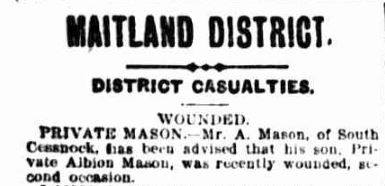
• Offence - On the 27th of July 1917 he was charged with “Conduct to the prejudice of good order and military discipline in that he left fatigue on the incinerator without obtaining leave to do so”. He forfeited 2 days pay as punishment.
On the 10th of August 1917 he rejoined the 34th Battalion.
He was with the 34th Battalion for the unsuccessful attack on ‘Passchendaele’ in Belgium, on the 12th of October 1917.
He was granted English-Leave from the 21st of January 1918 until he rejoined the 34th Battalion on the 6th of February 1918.
In late March of 1918 the 9th Infantry Brigade was rushed south to ‘the Somme’, in response to a huge new German Offensive (known by the Germans as Operation Michael), and used as a mobile formation being thrown in to strengthen the line wherever needed.
On the 4th of April 1918, during the ‘1st Battle of Villers-Bretonneux’, he was WOUNDED-IN-ACTION suffering a bullet wound to his right arm. On the 7th he was transferred across to England and the following day was admitted to the Kitchener Military Hospital.
On the 15th of April he was transferred to the 3rd Australian Auxiliary Hospital and was granted a furlough for the period 4th - 18th of May 1918. Unfortunately, he did not report back at the allocated time.
On the 21st of May he was charged with: “London, Absent without Leave – 10:30 a.m. 18/5/18 until 10:20 a.m. 21/5/18”. He was found guilty and forfeited 9 days pay.
He was returned to Australia in September 1918 arriving in Melbourne on the 17th of November. He then travelled overland to Sydney.
He was discharged from the AIF on the 17th of March 1919.
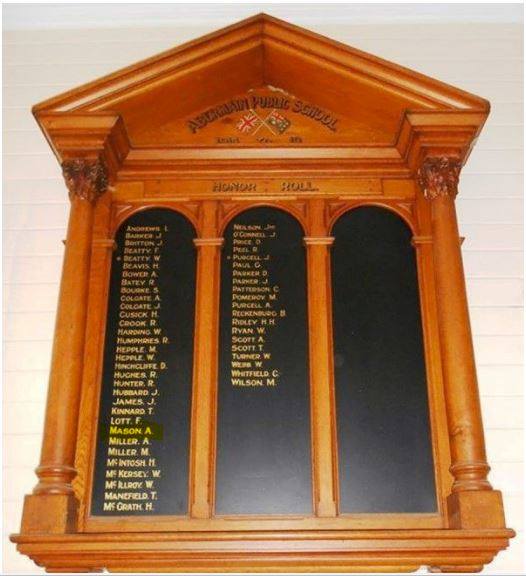
Abermain Public School Honour Roll
(Bill Durant: May 2019)

Under Construction: 17/05/2019.
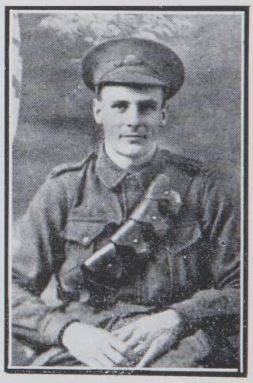
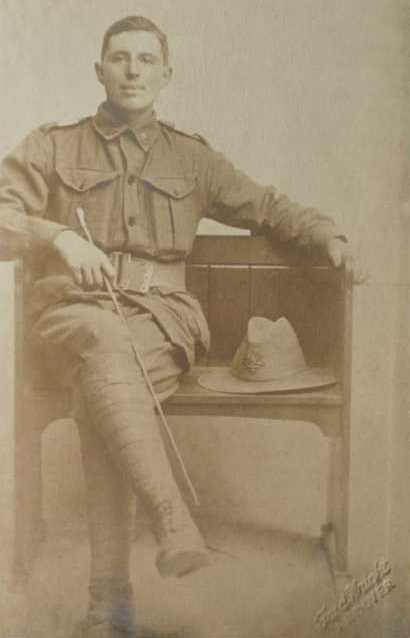

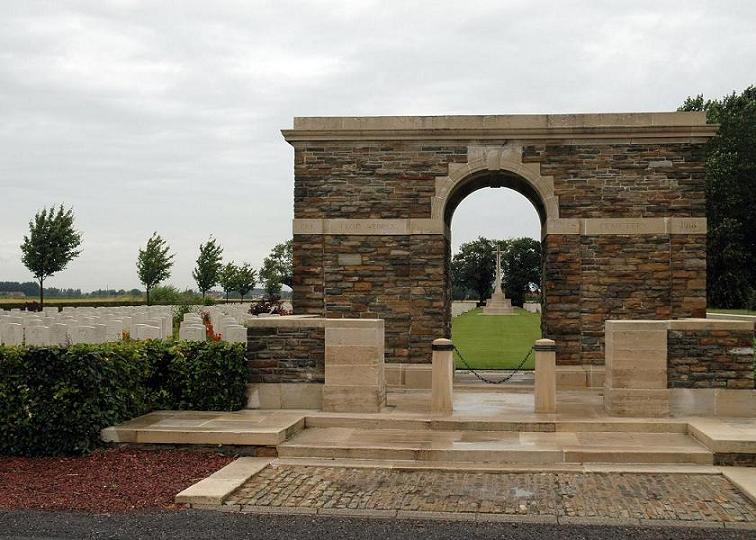


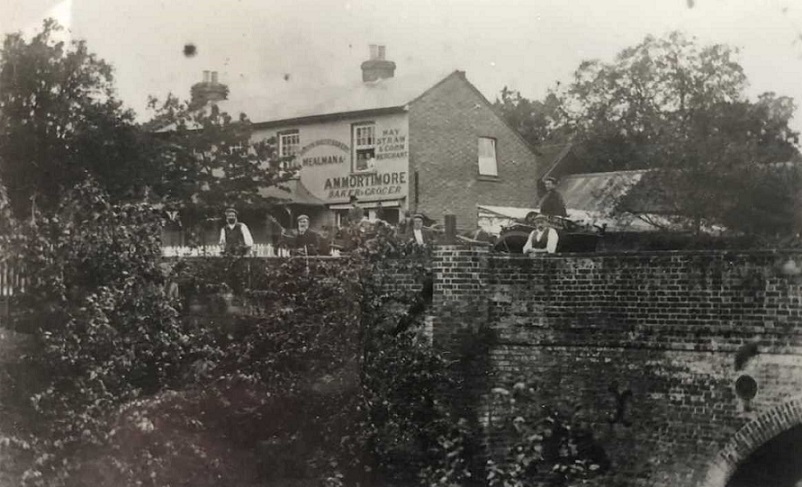
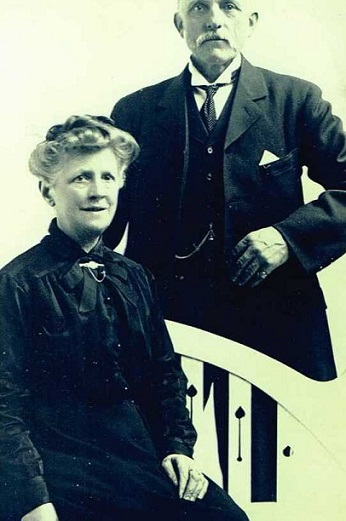
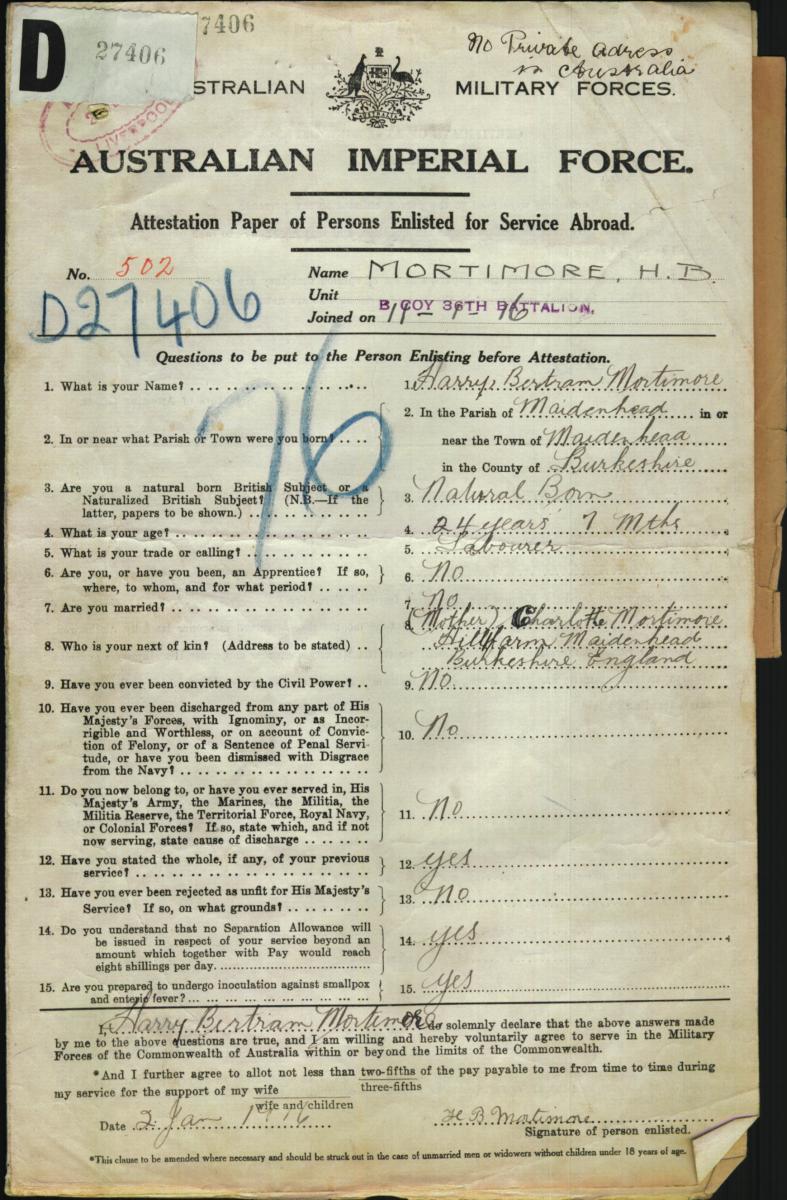
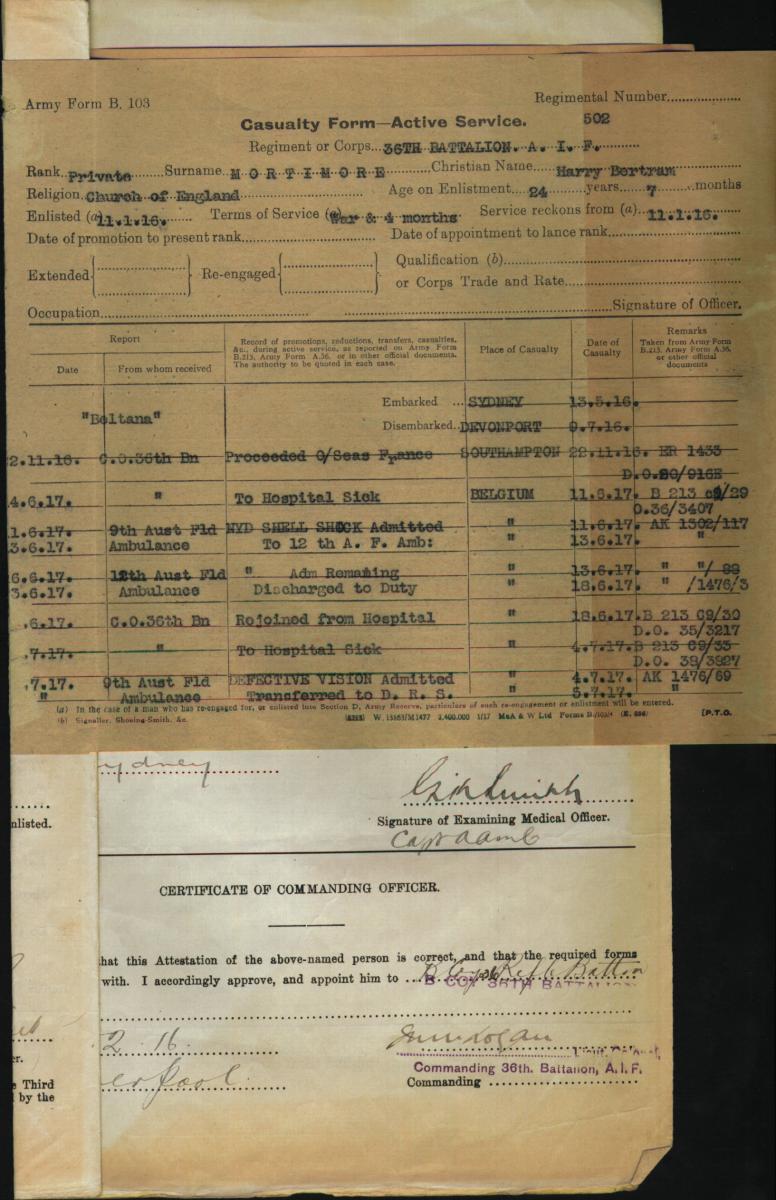
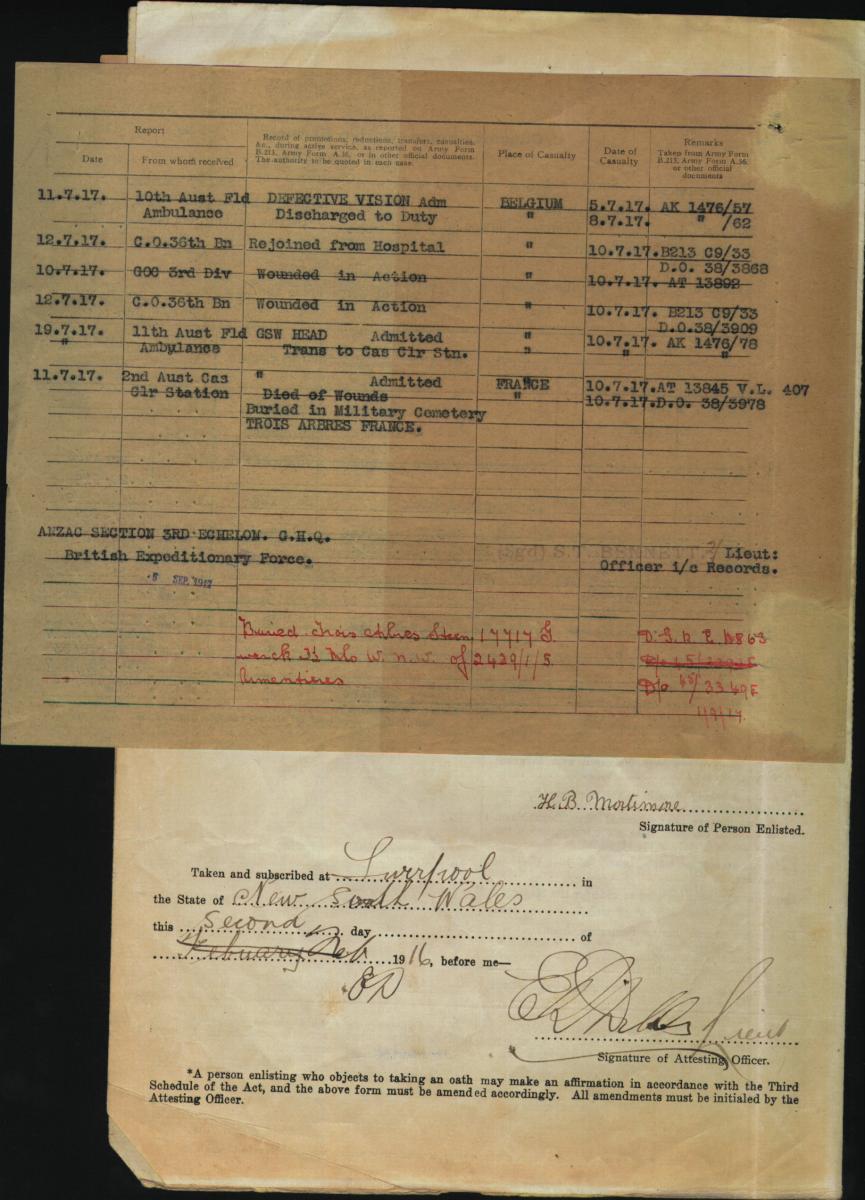
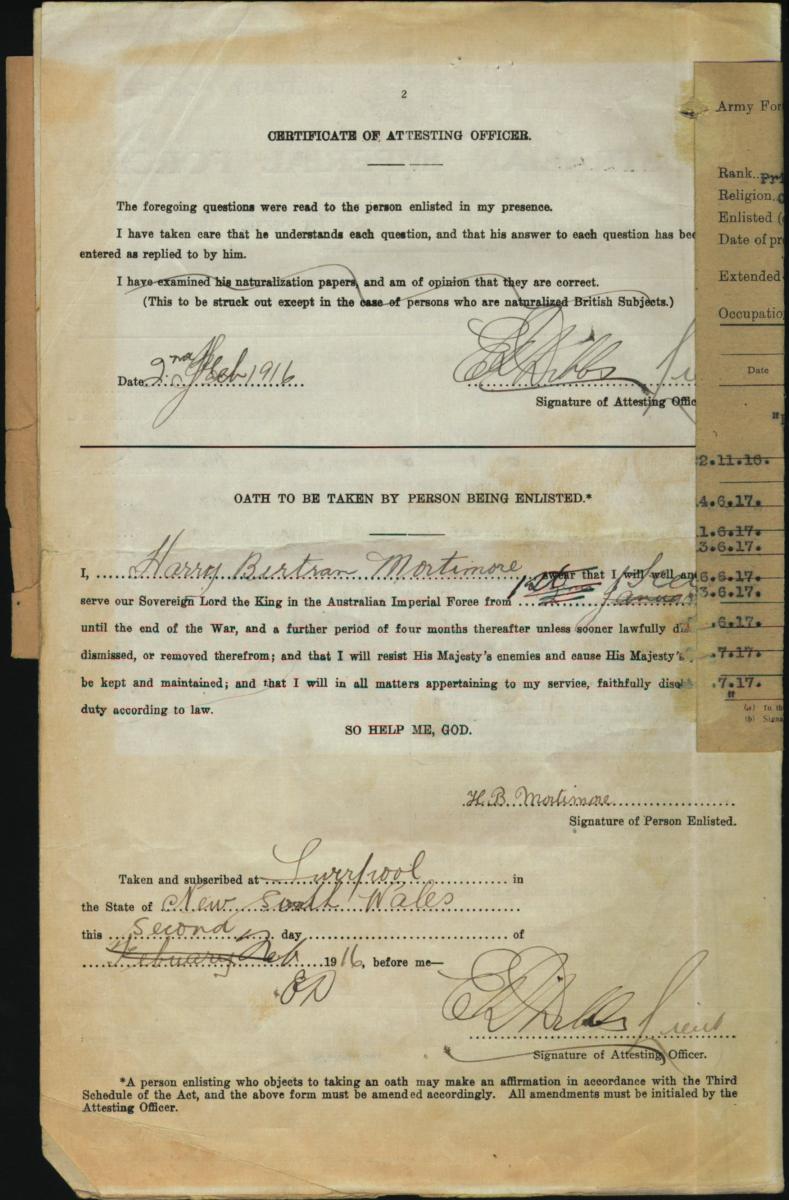
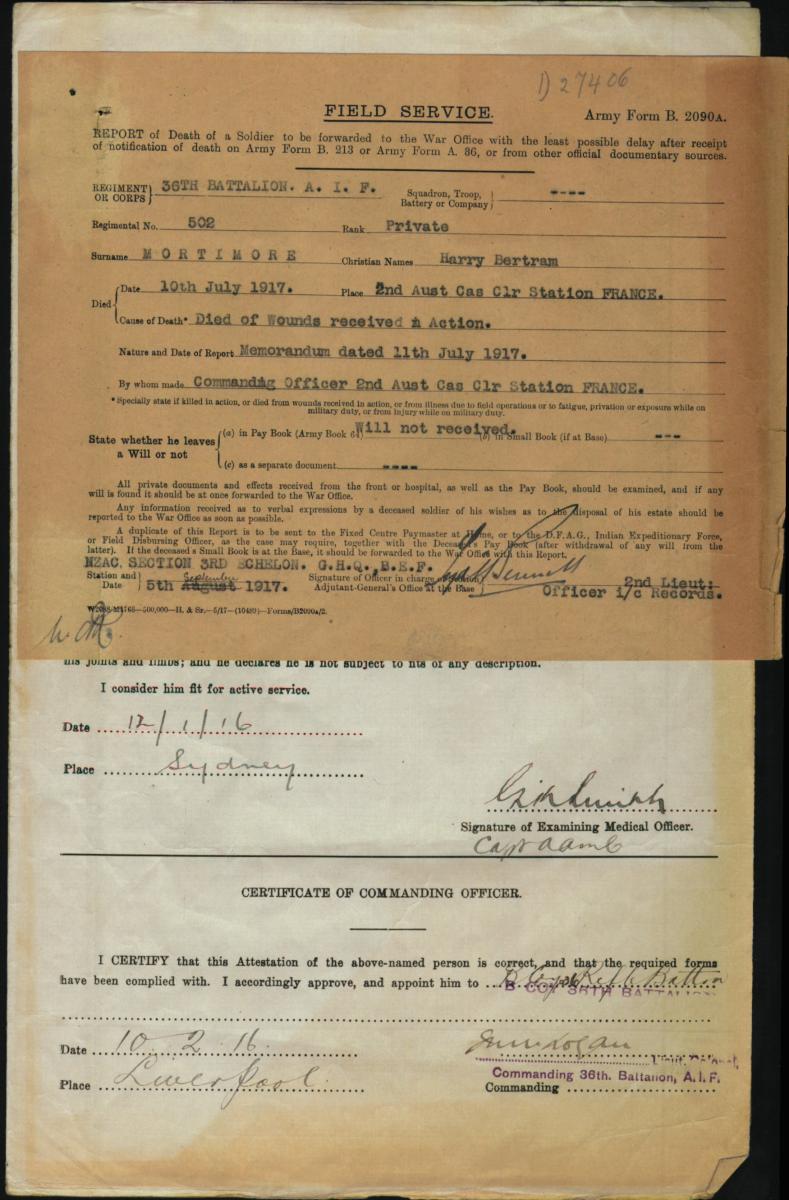
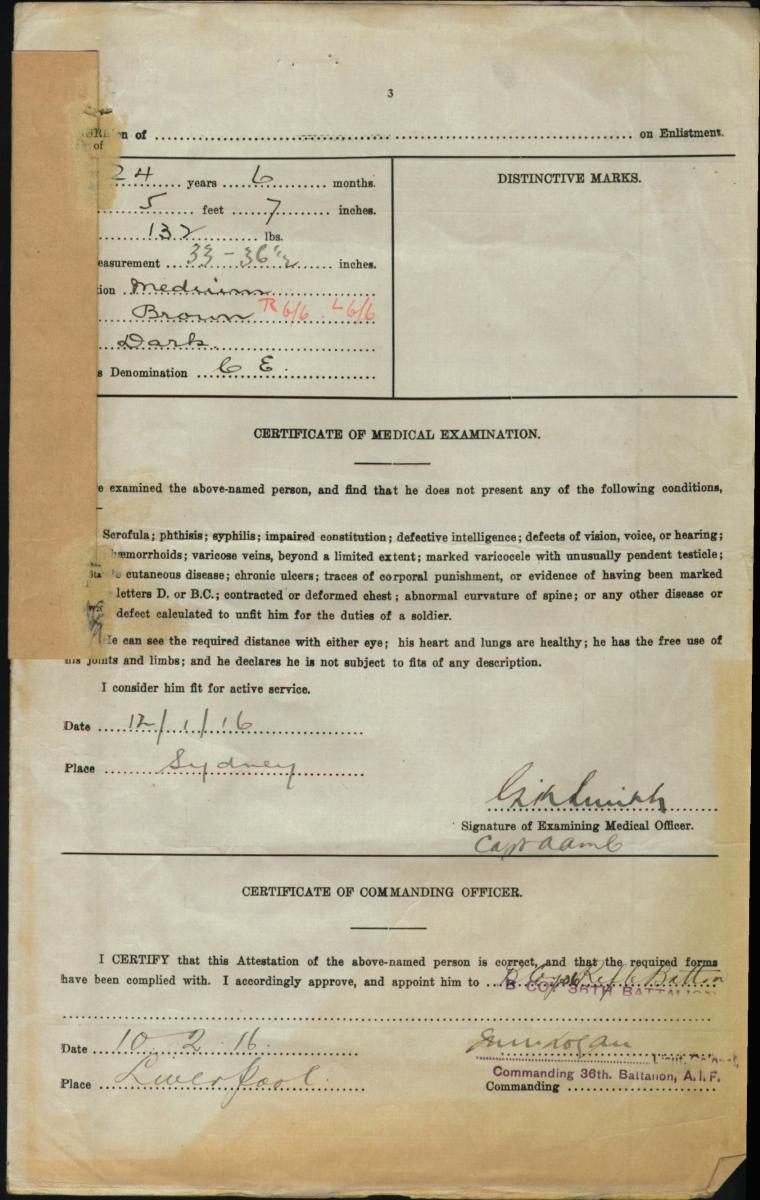
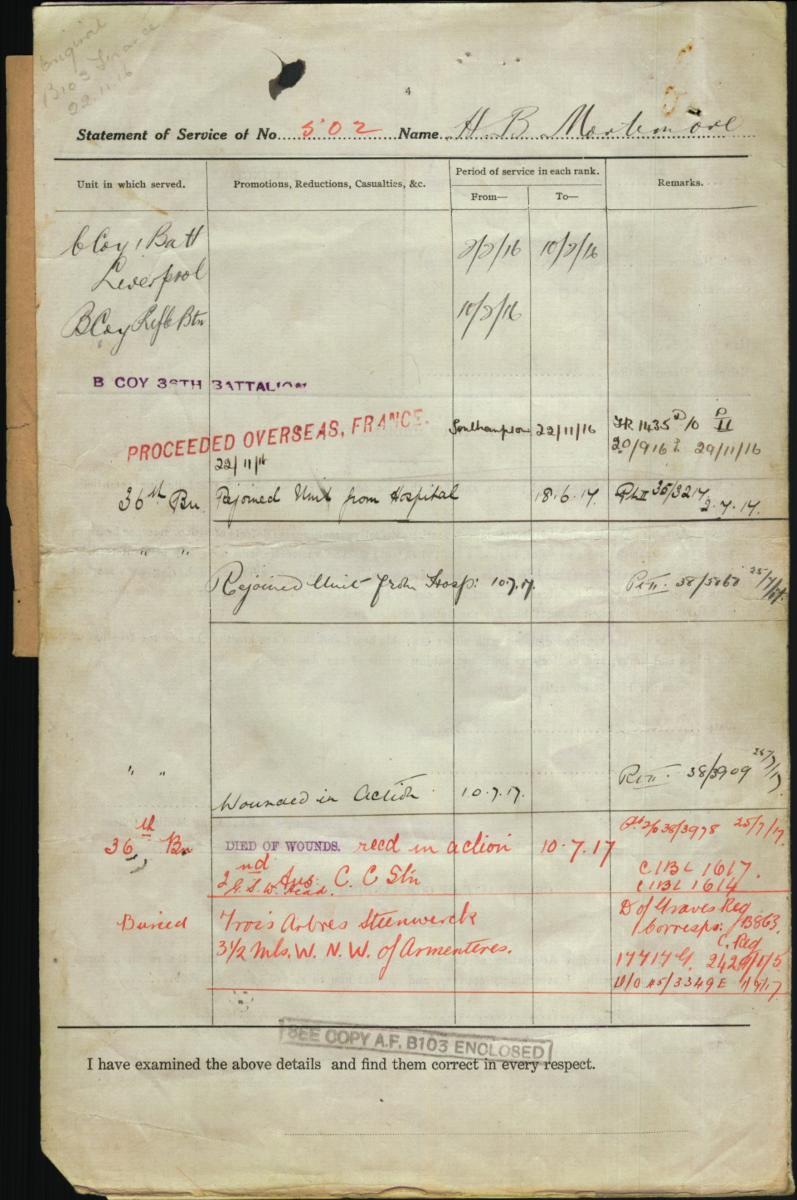
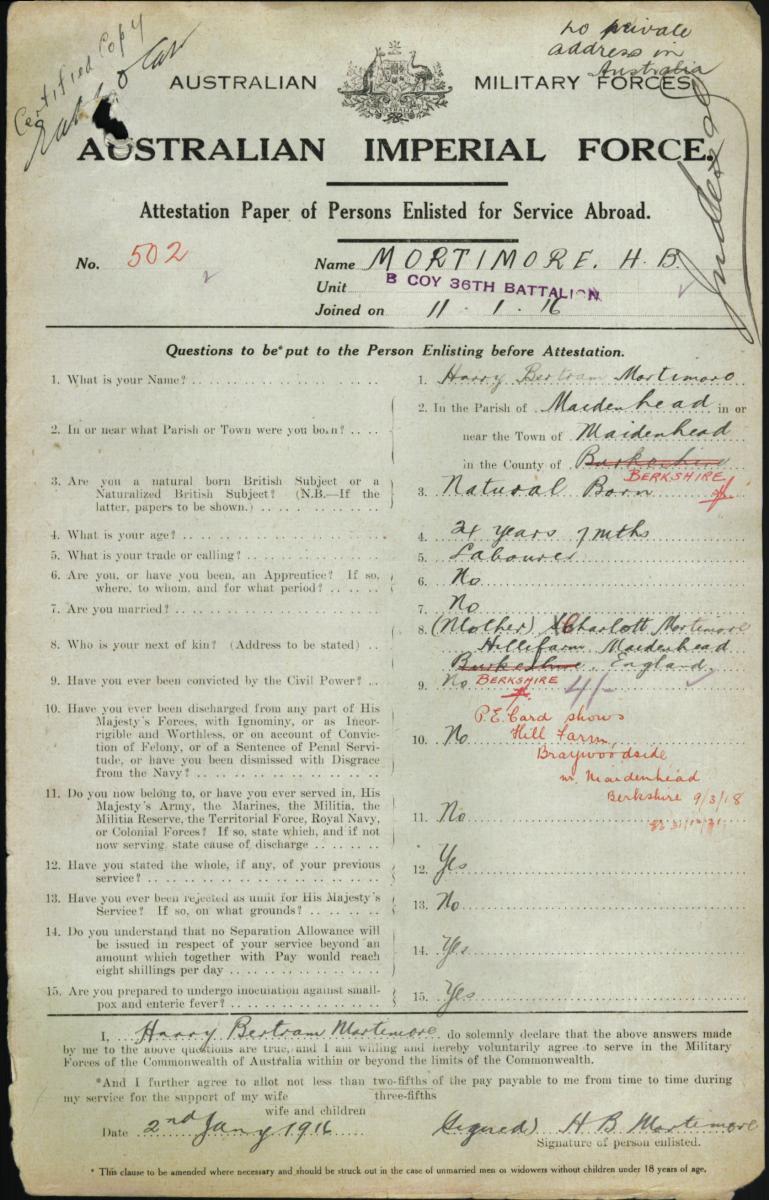
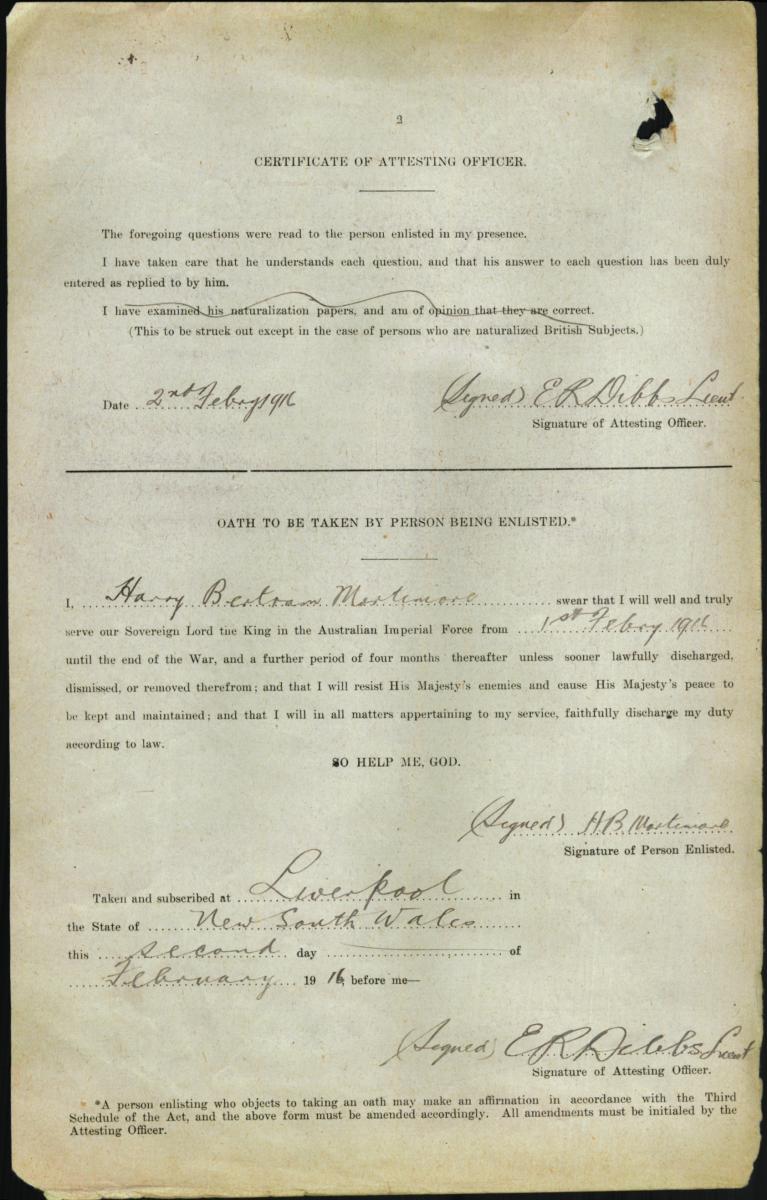

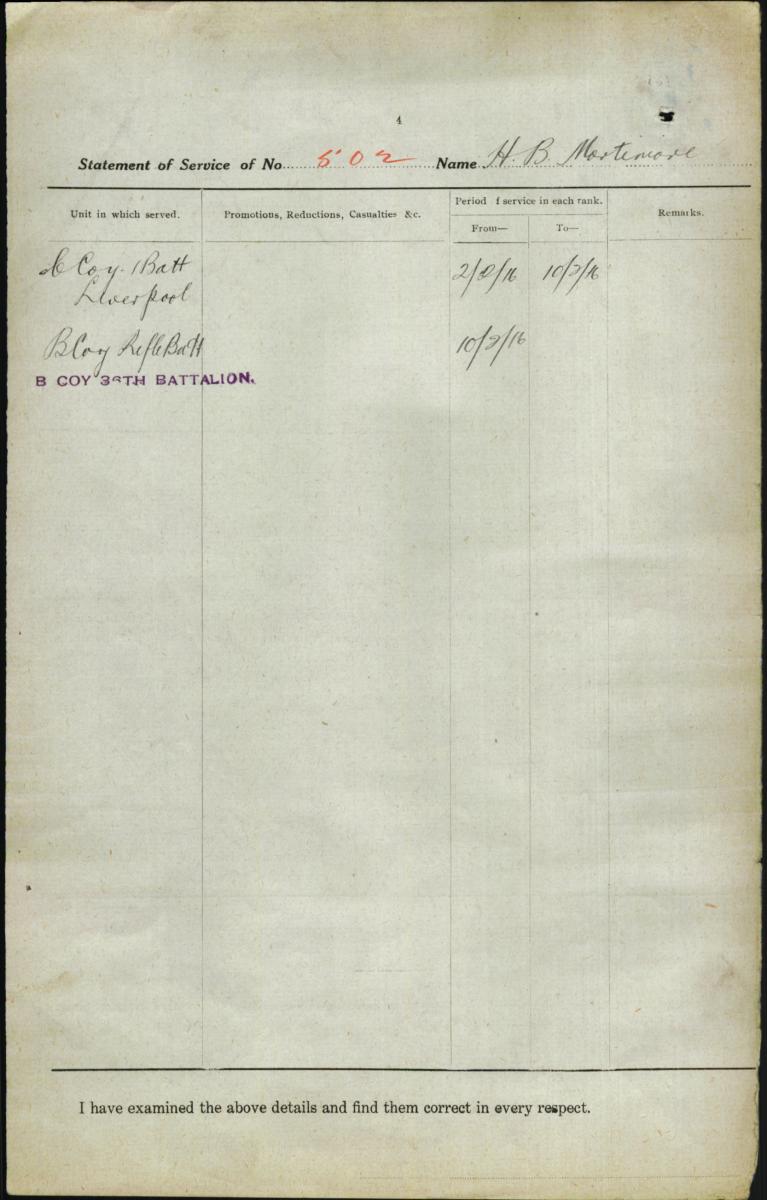
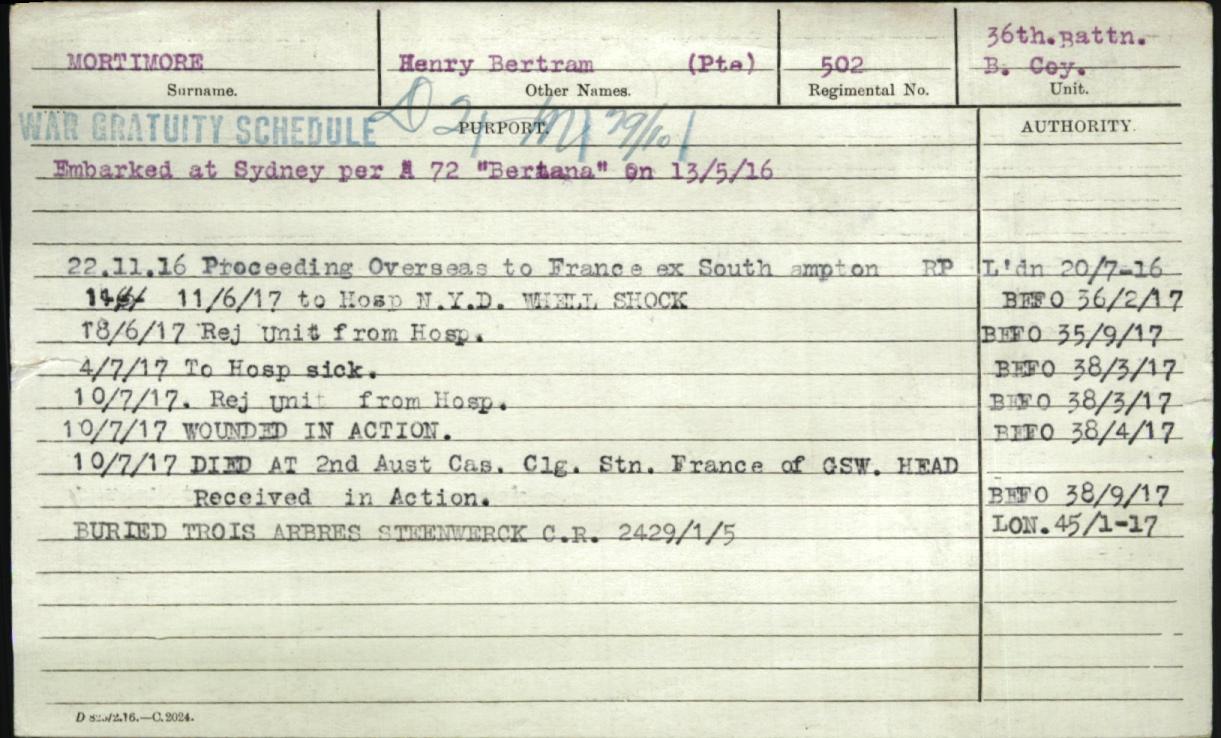


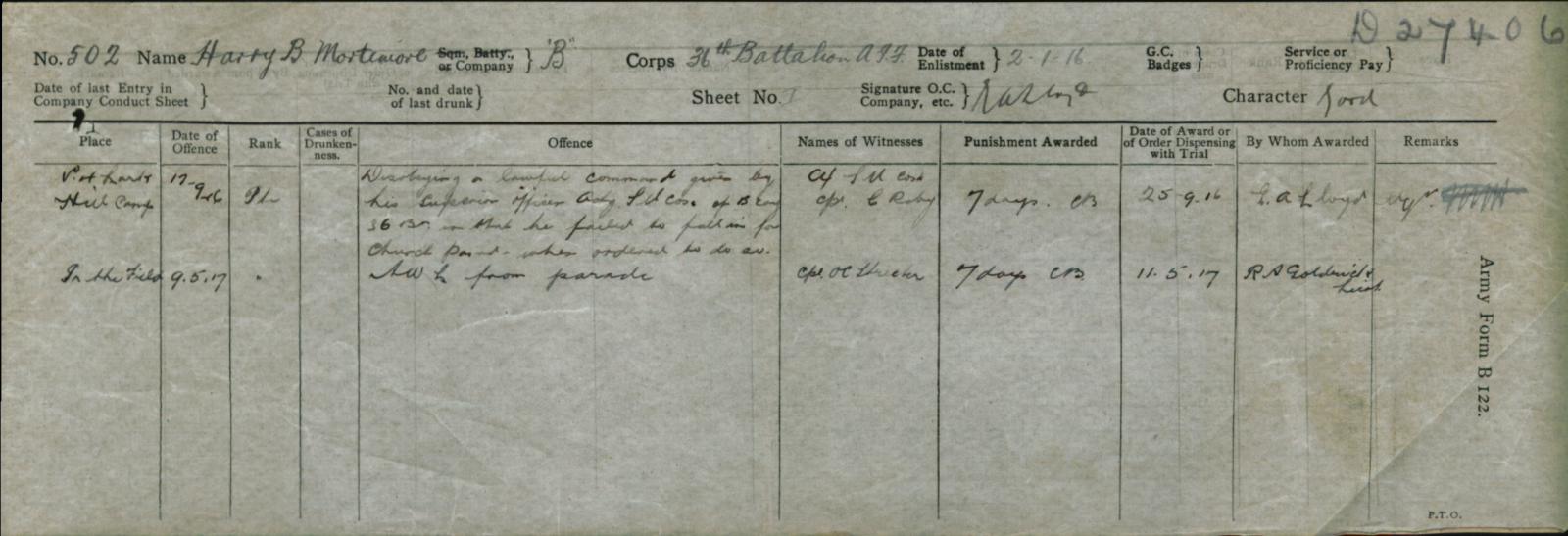
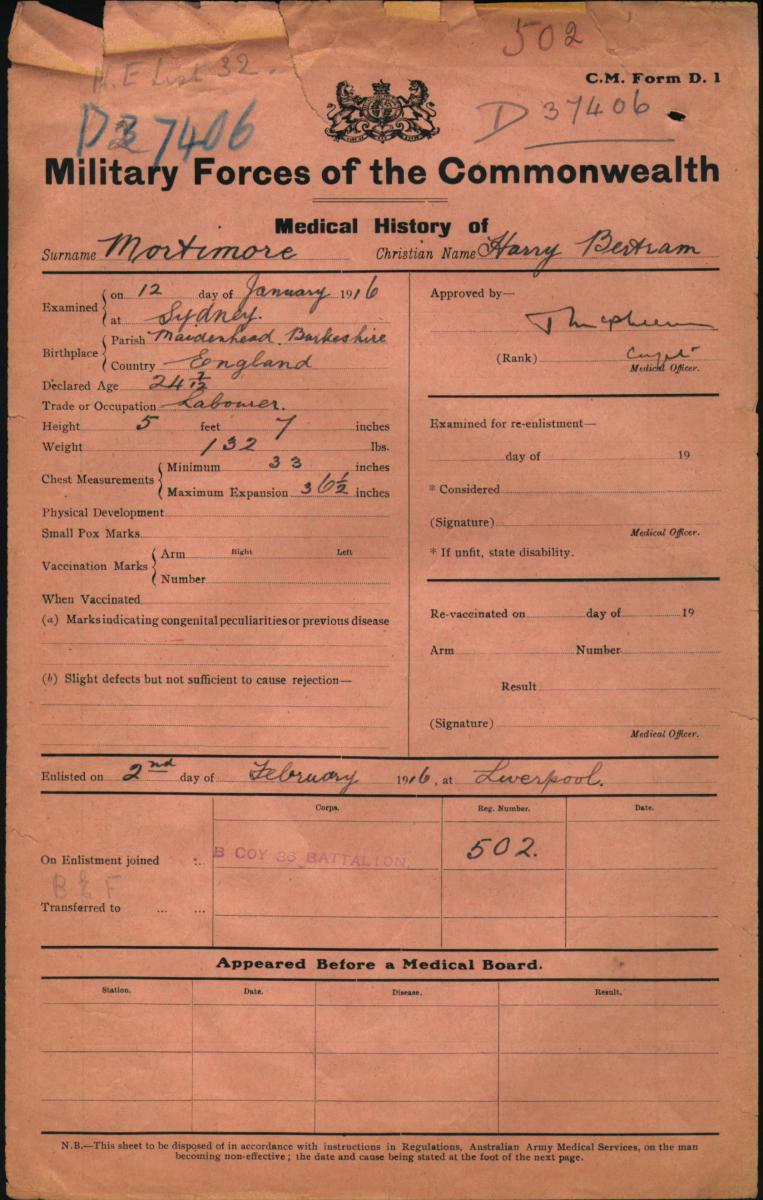
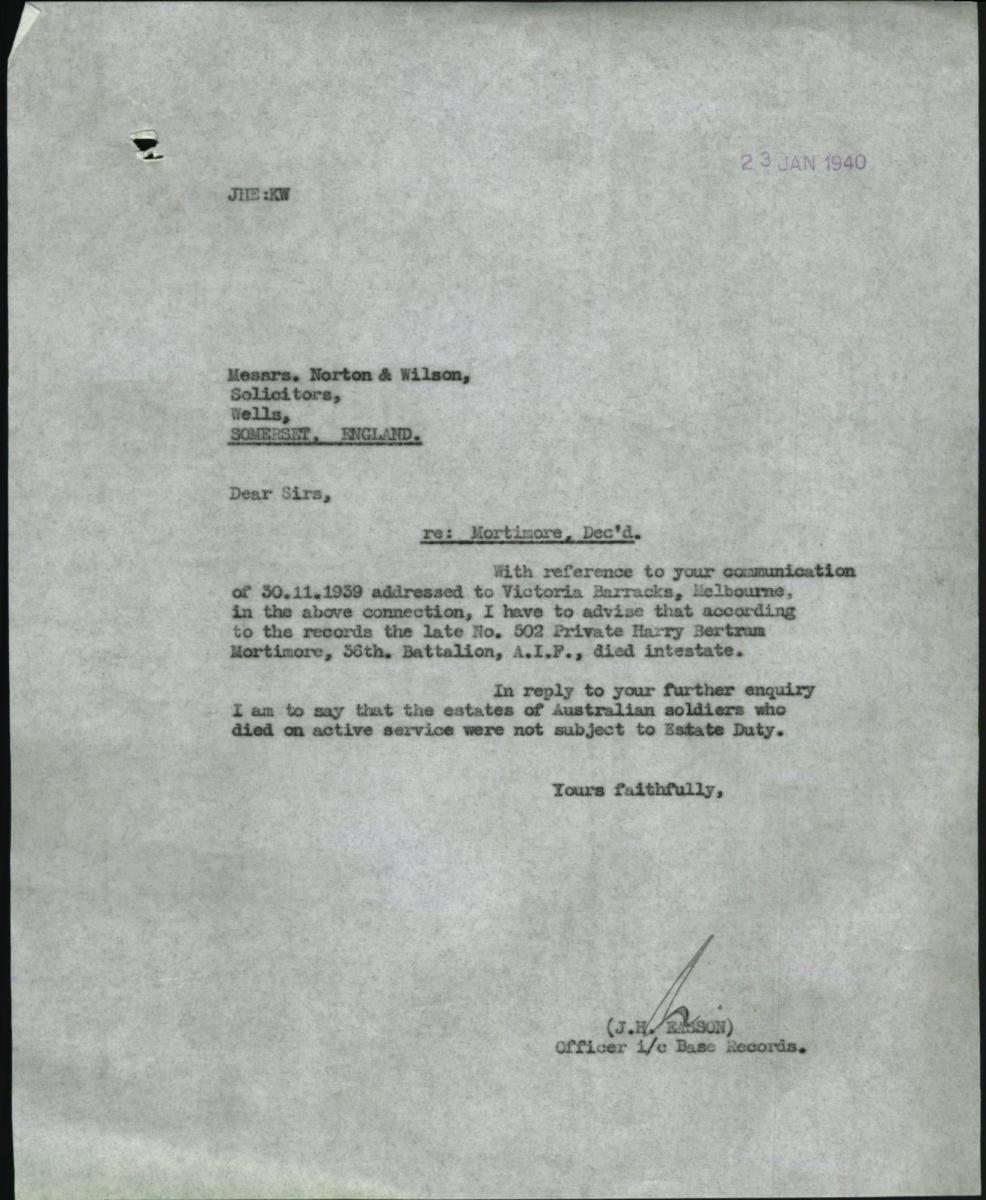

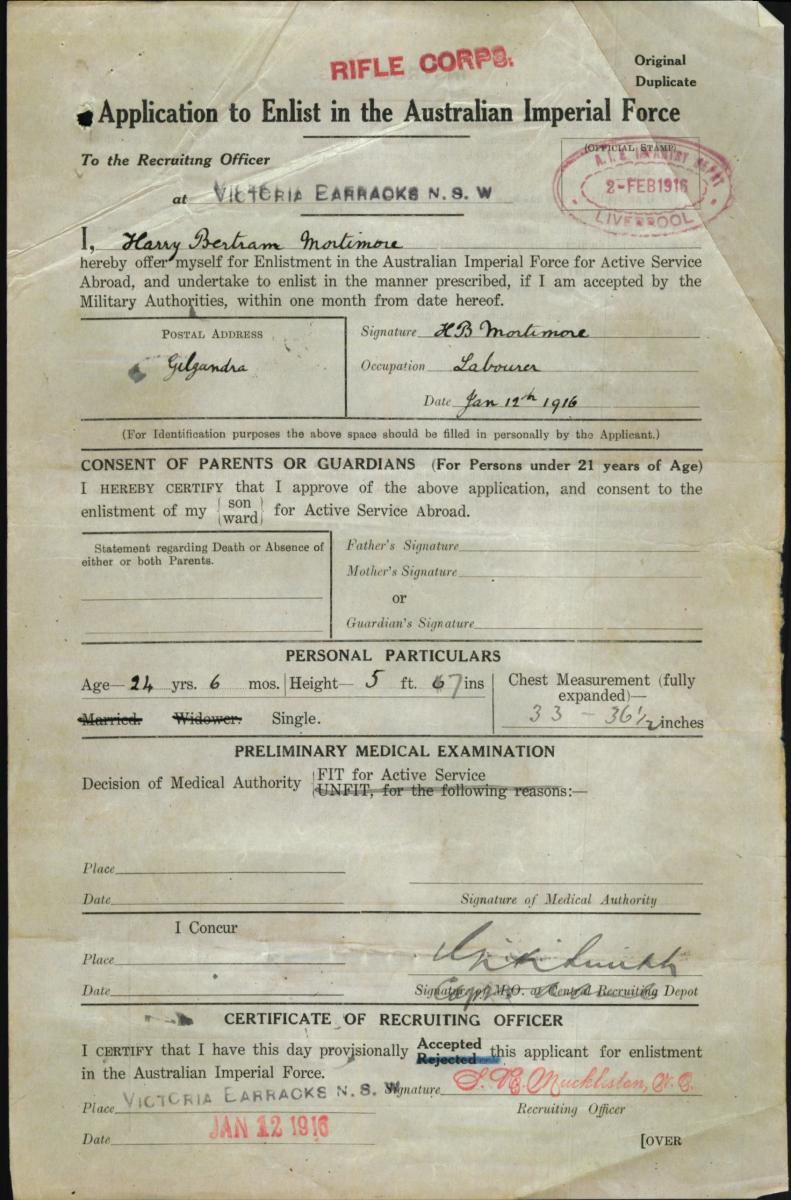
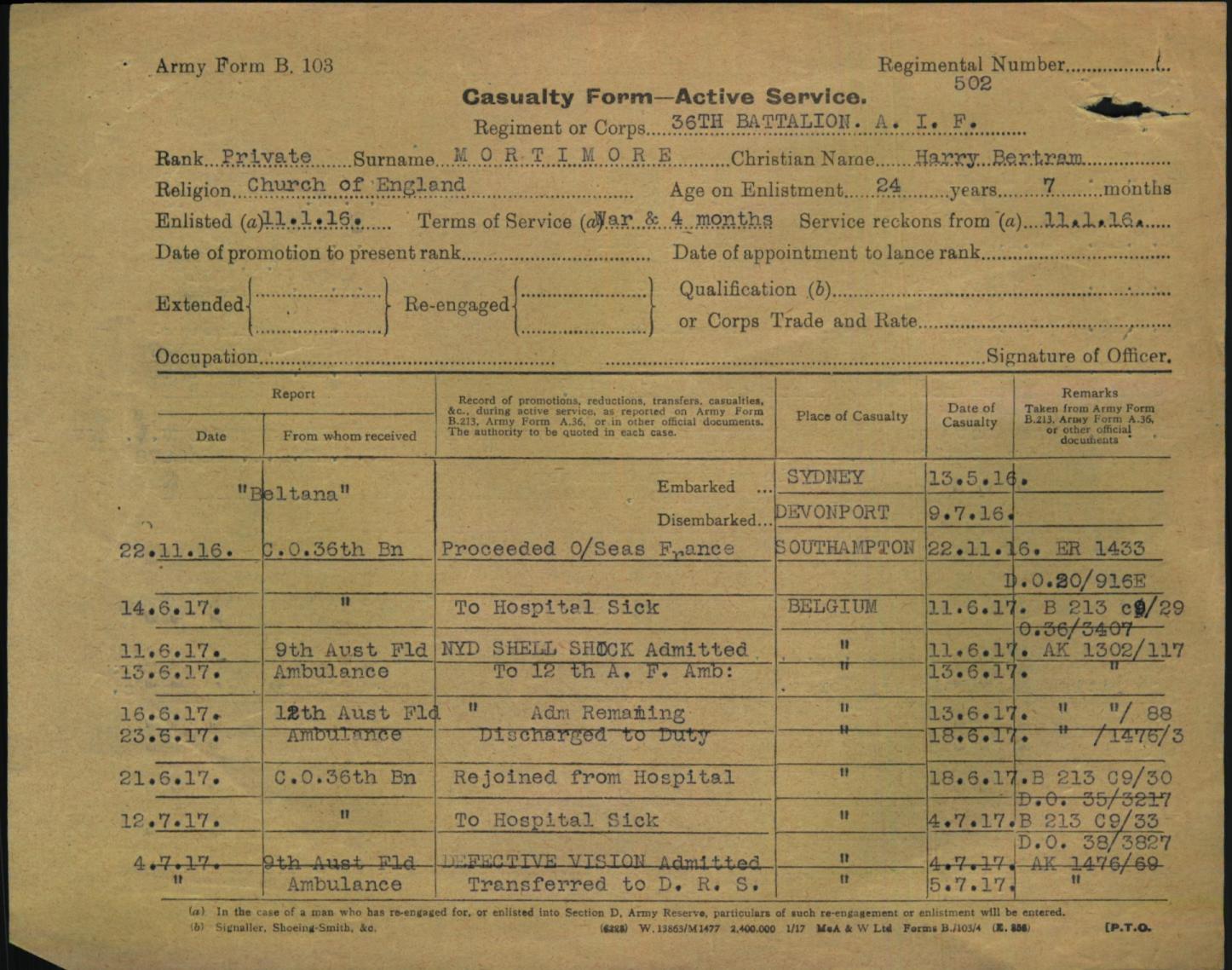
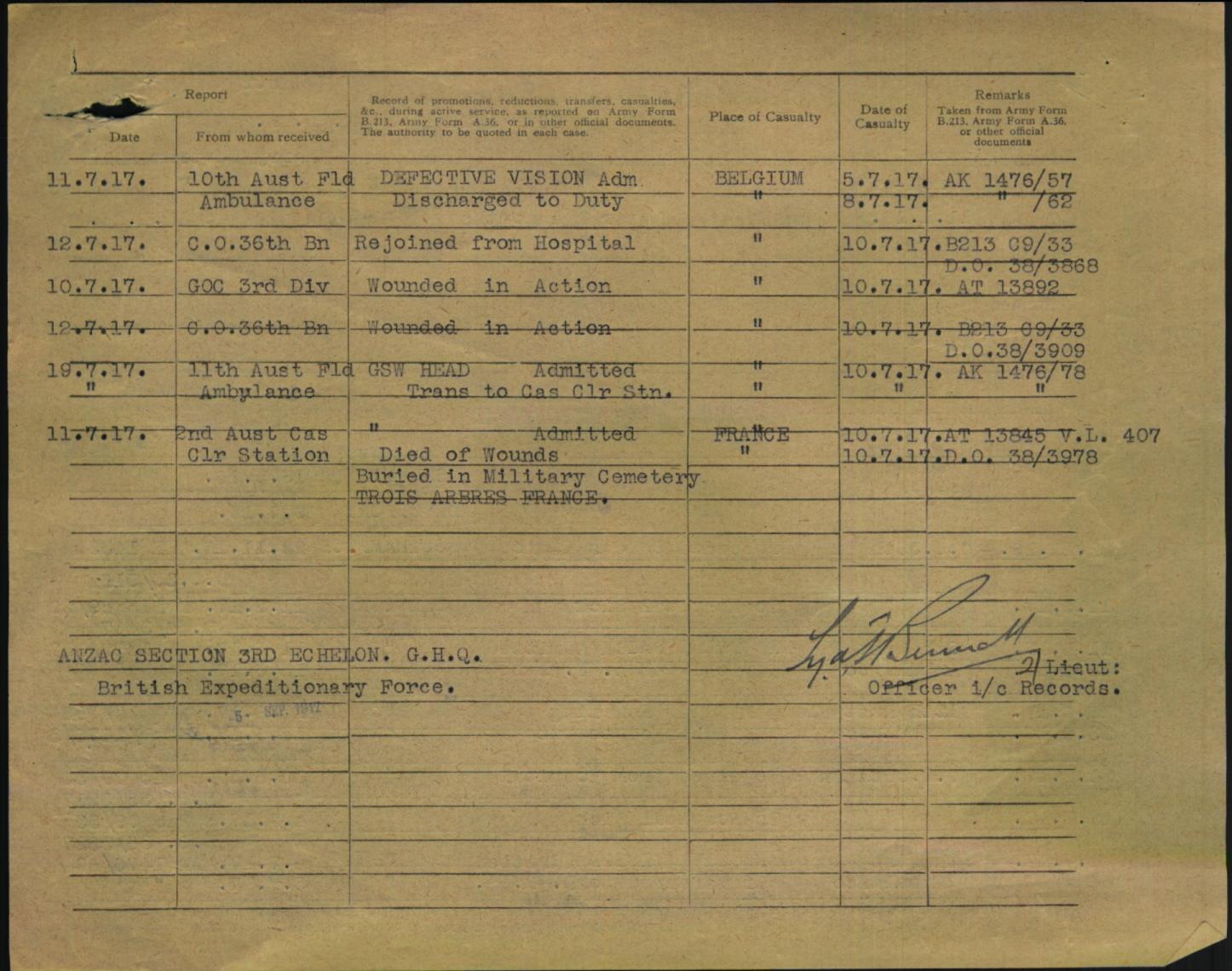
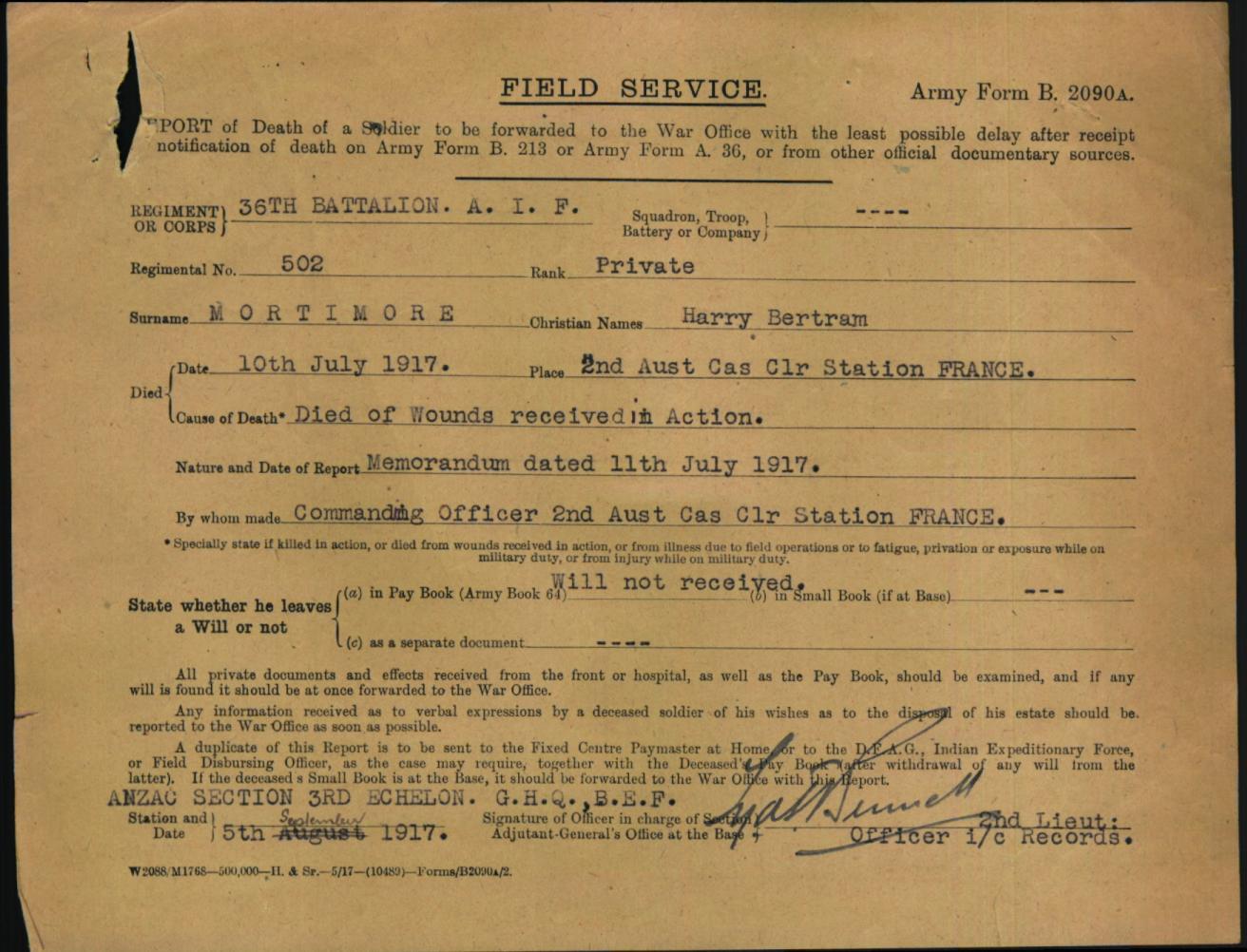
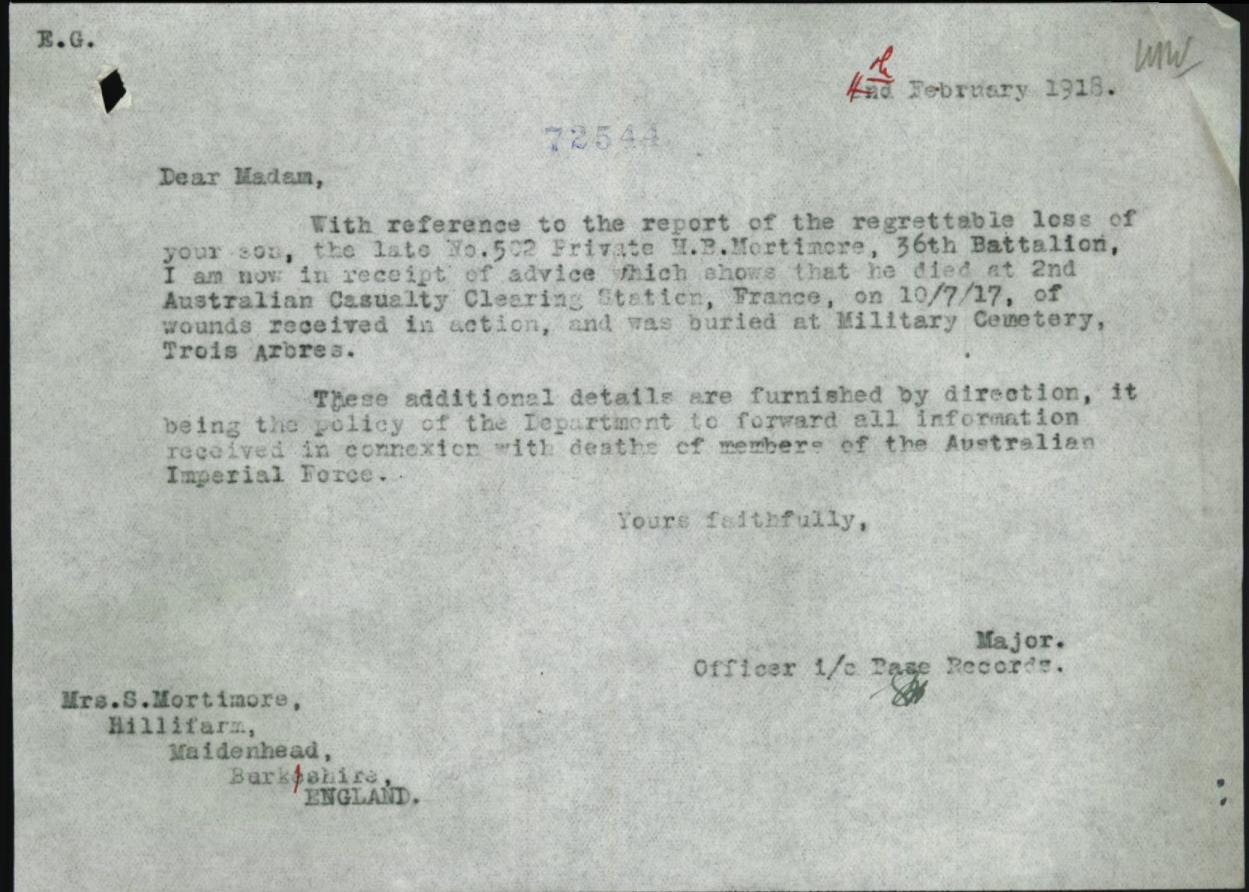
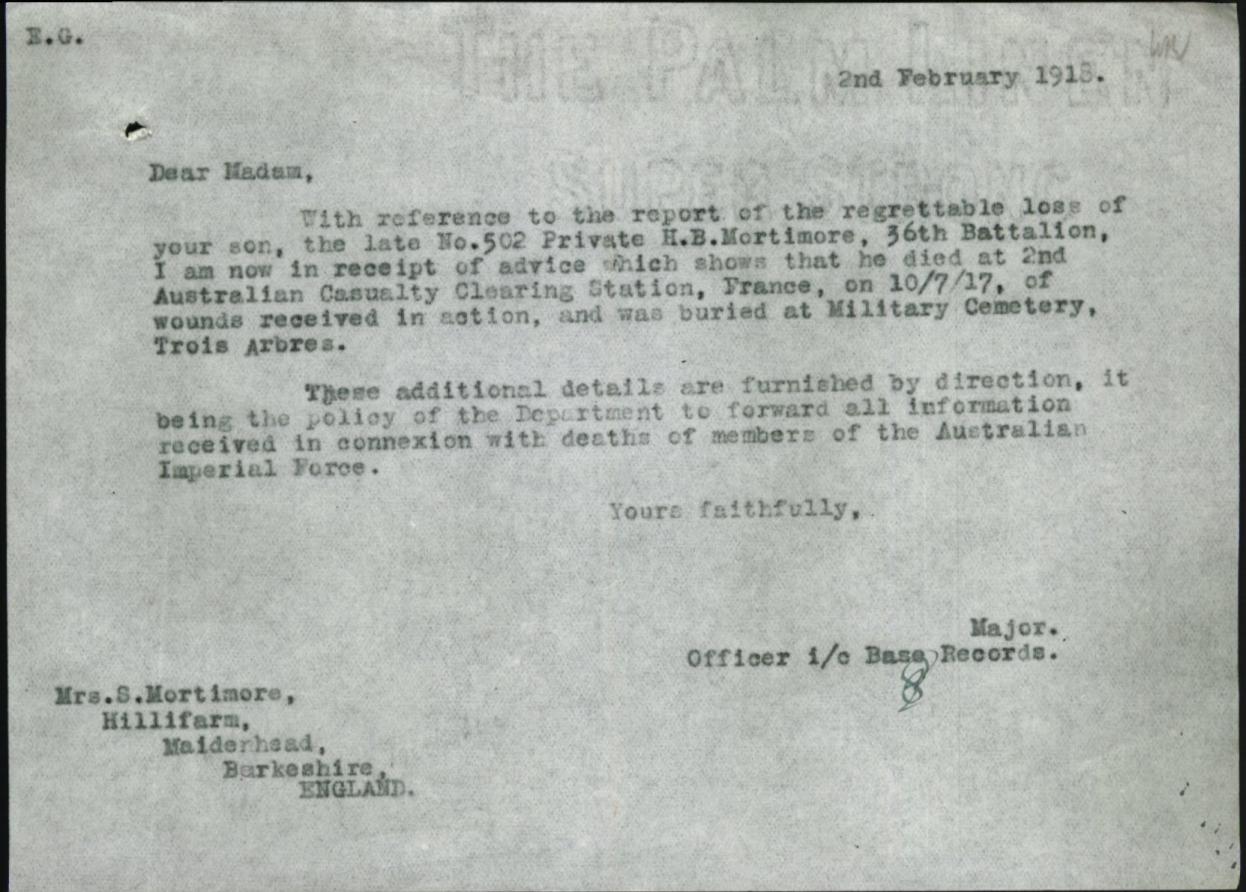
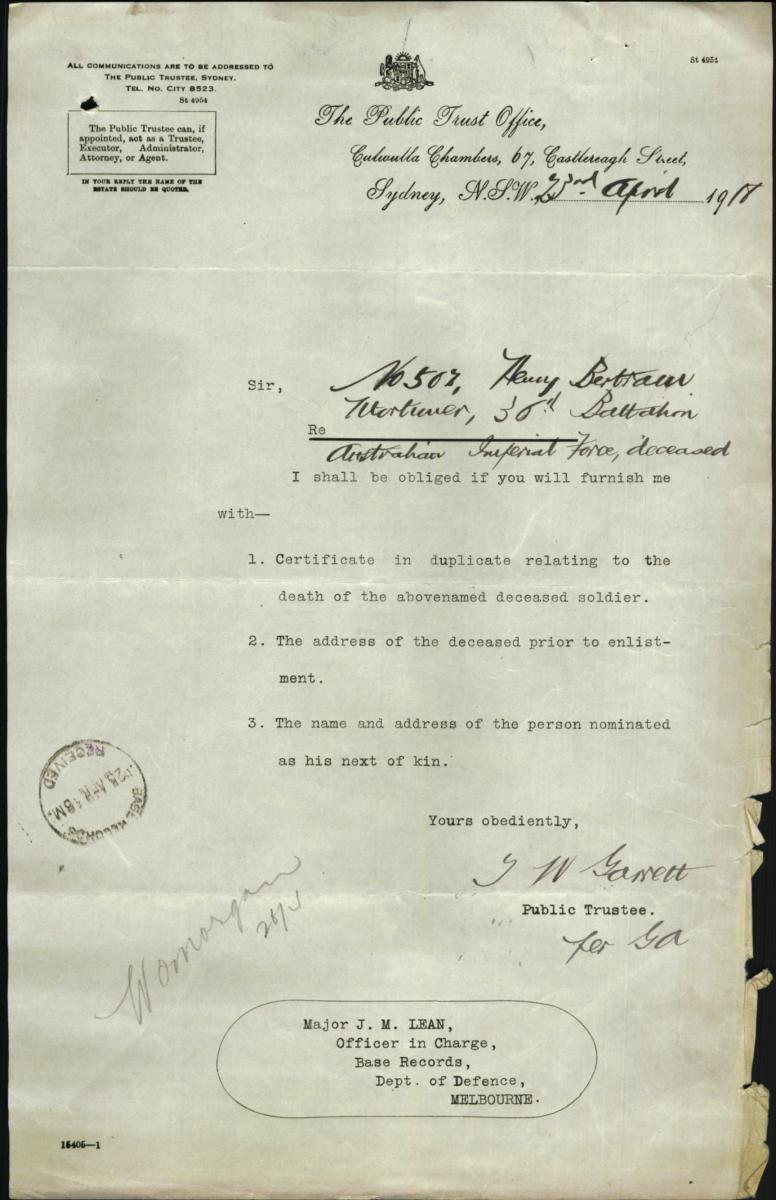
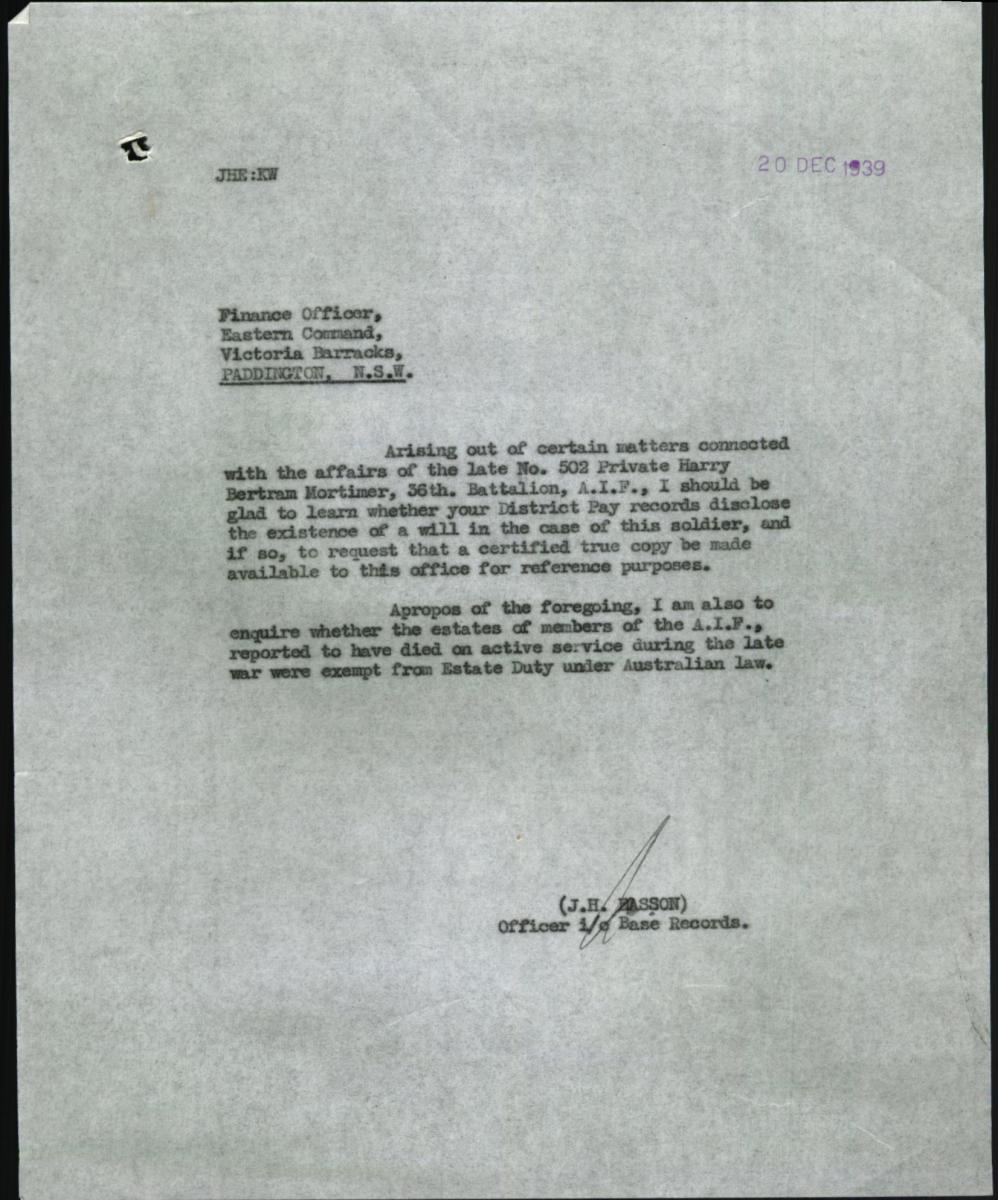
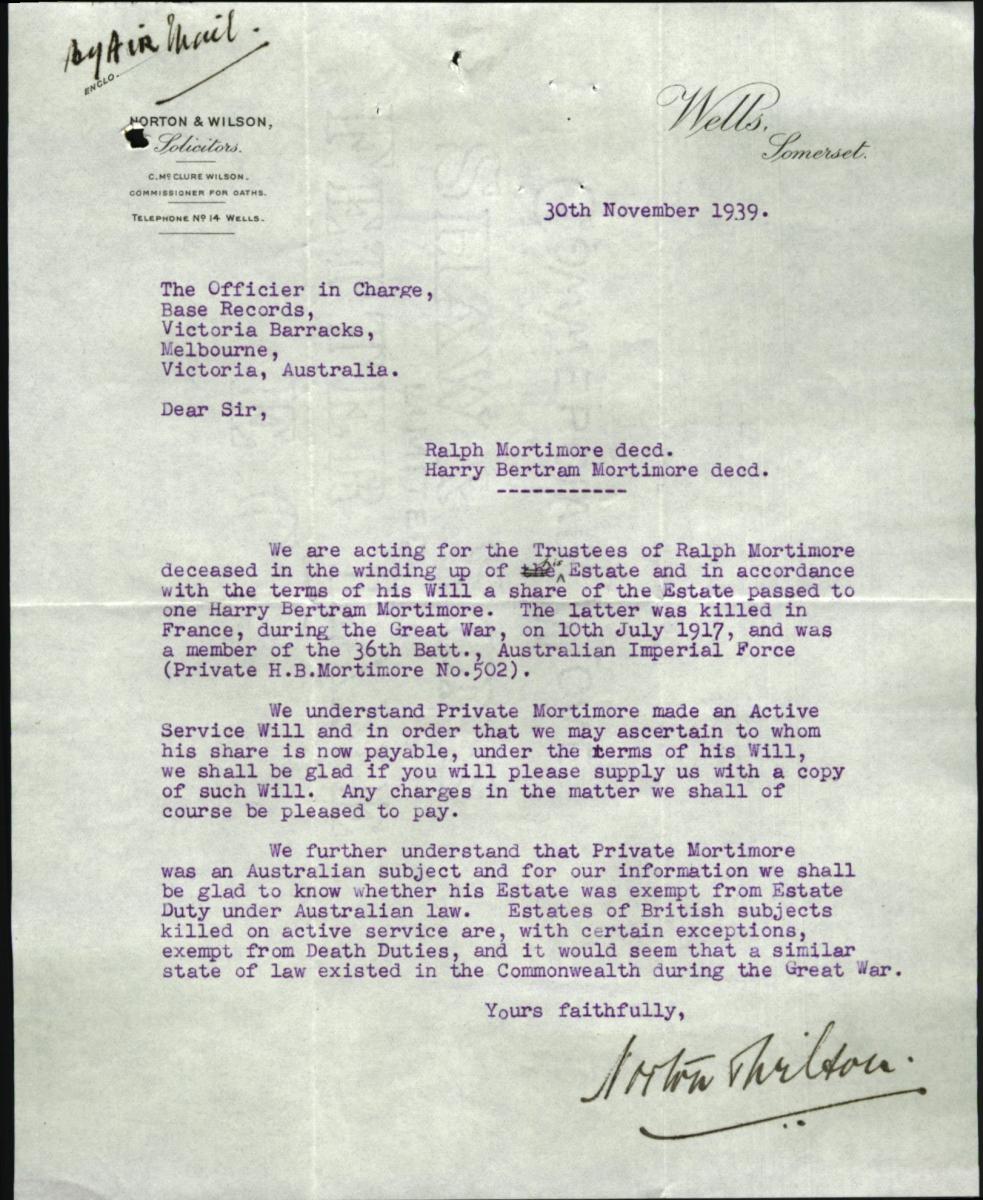





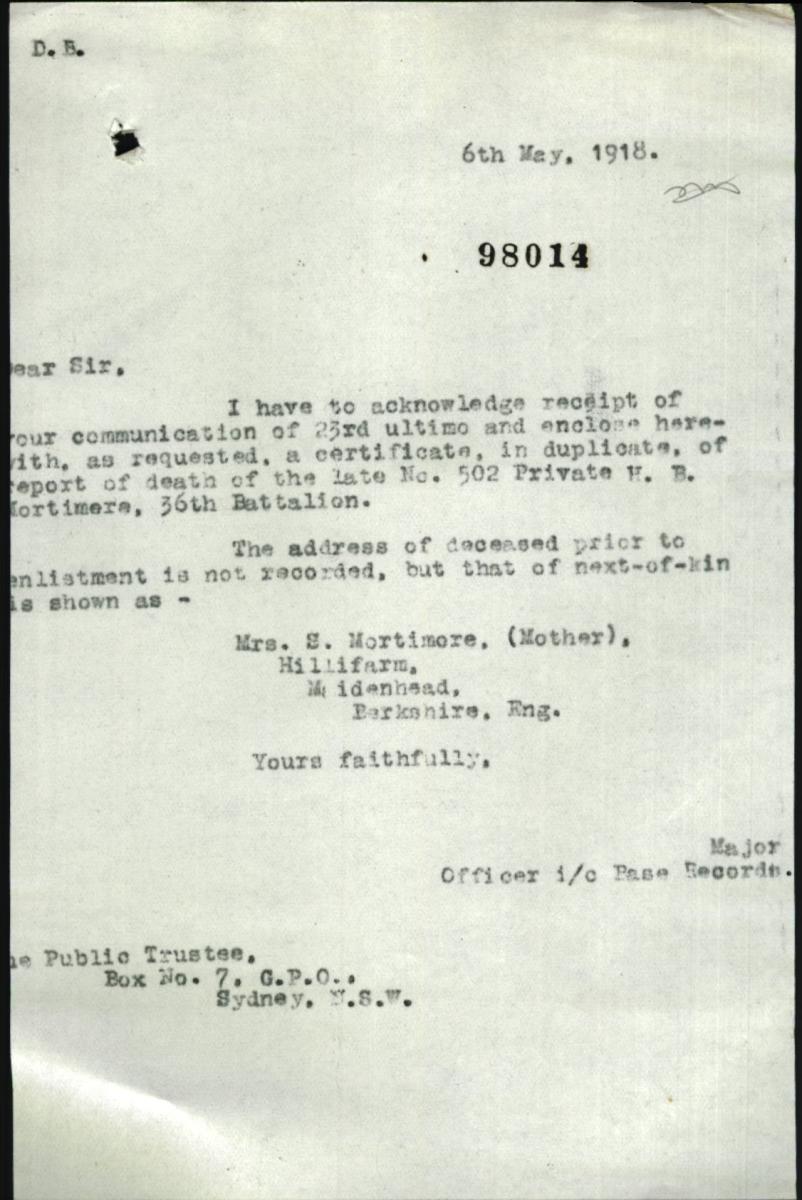

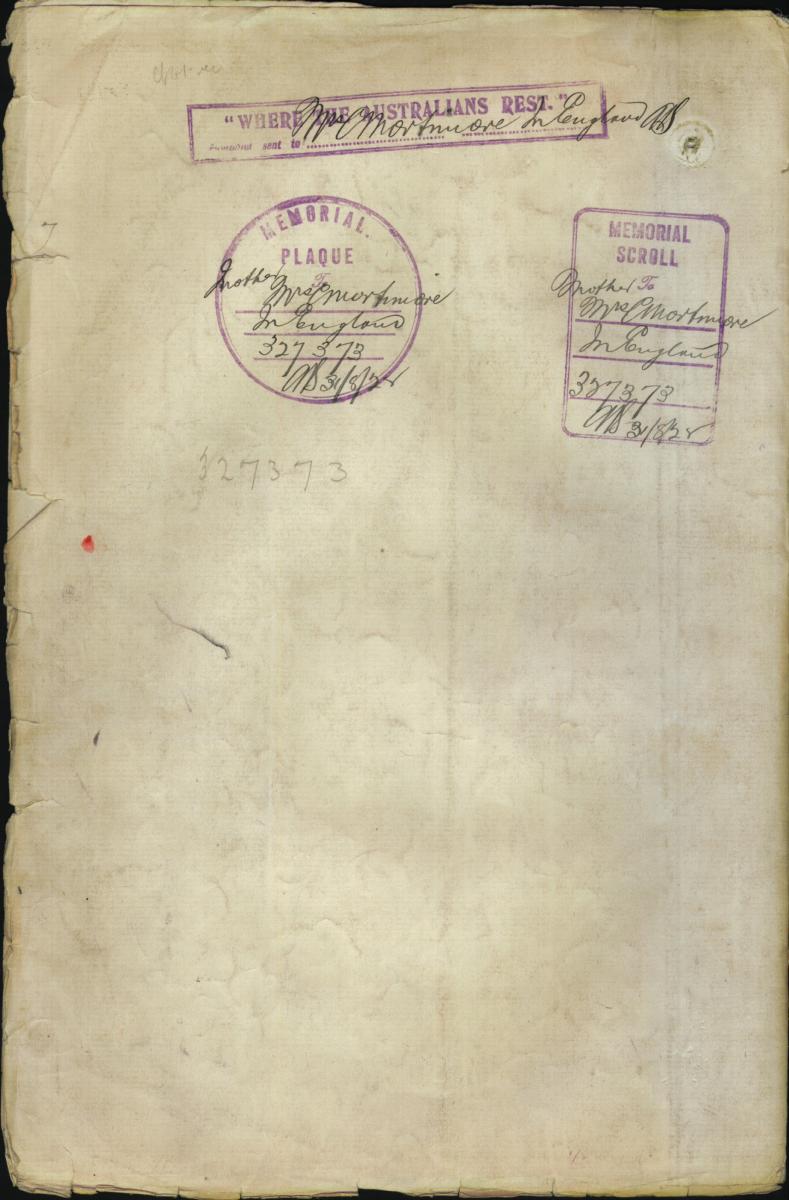



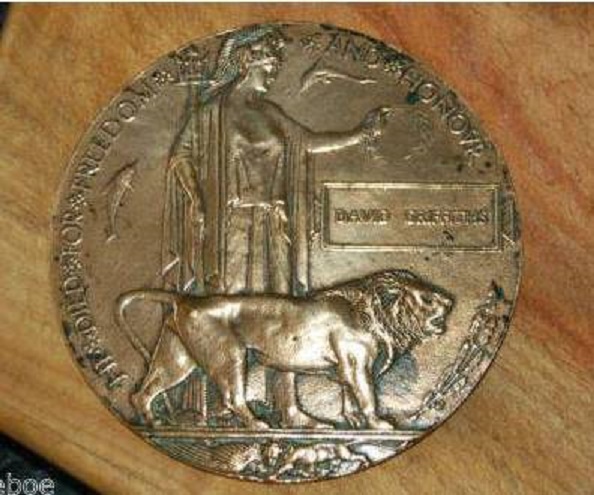
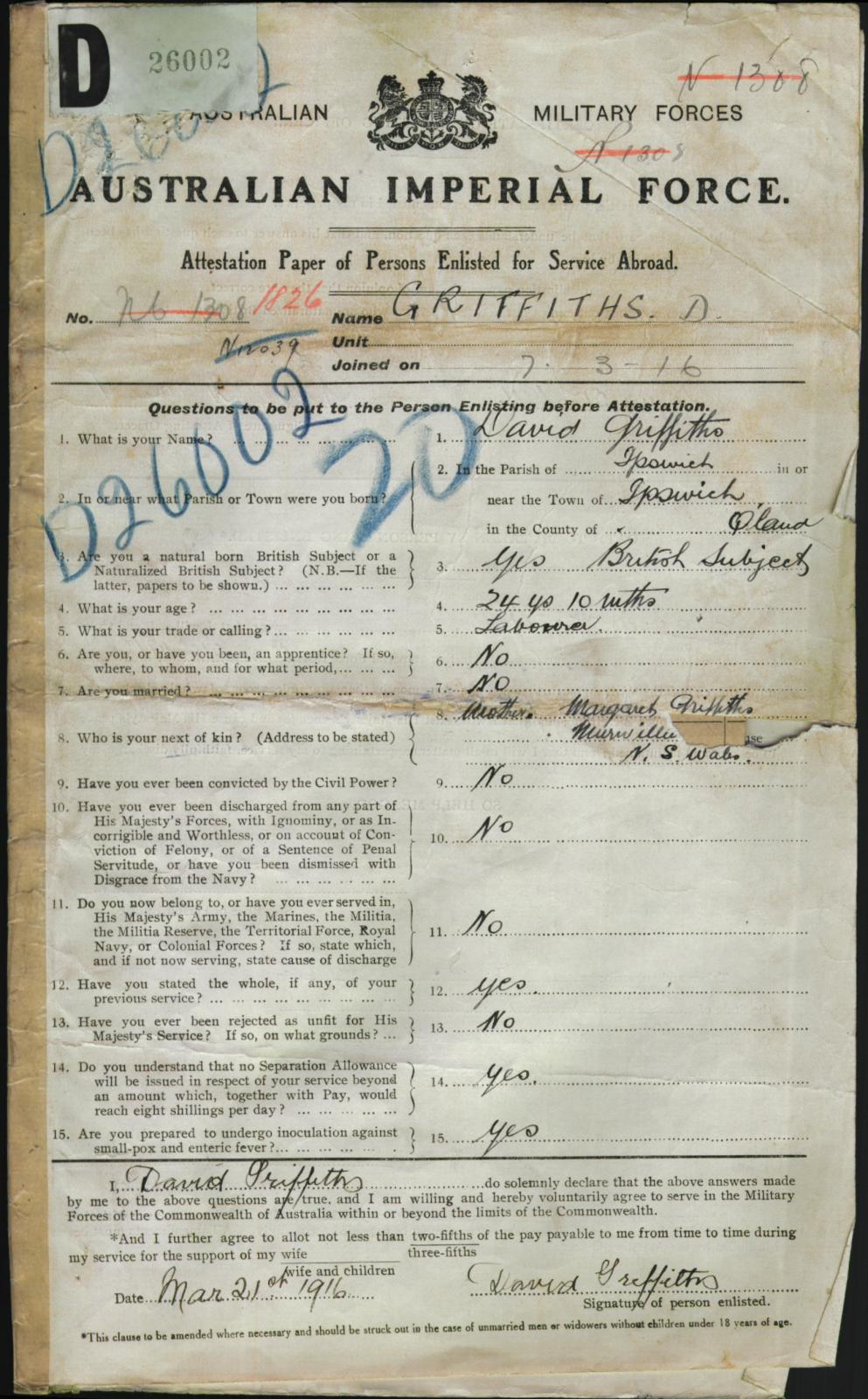
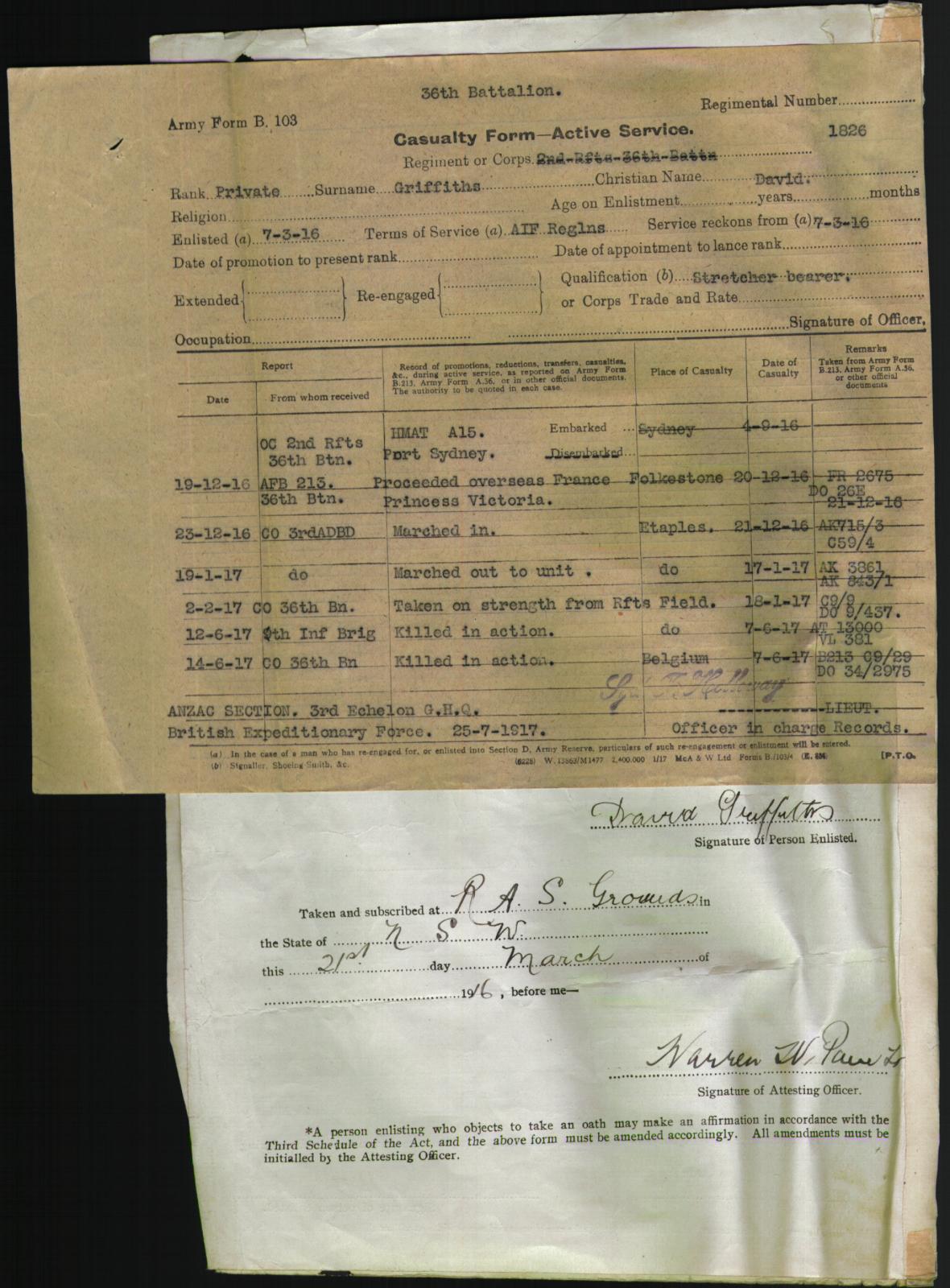
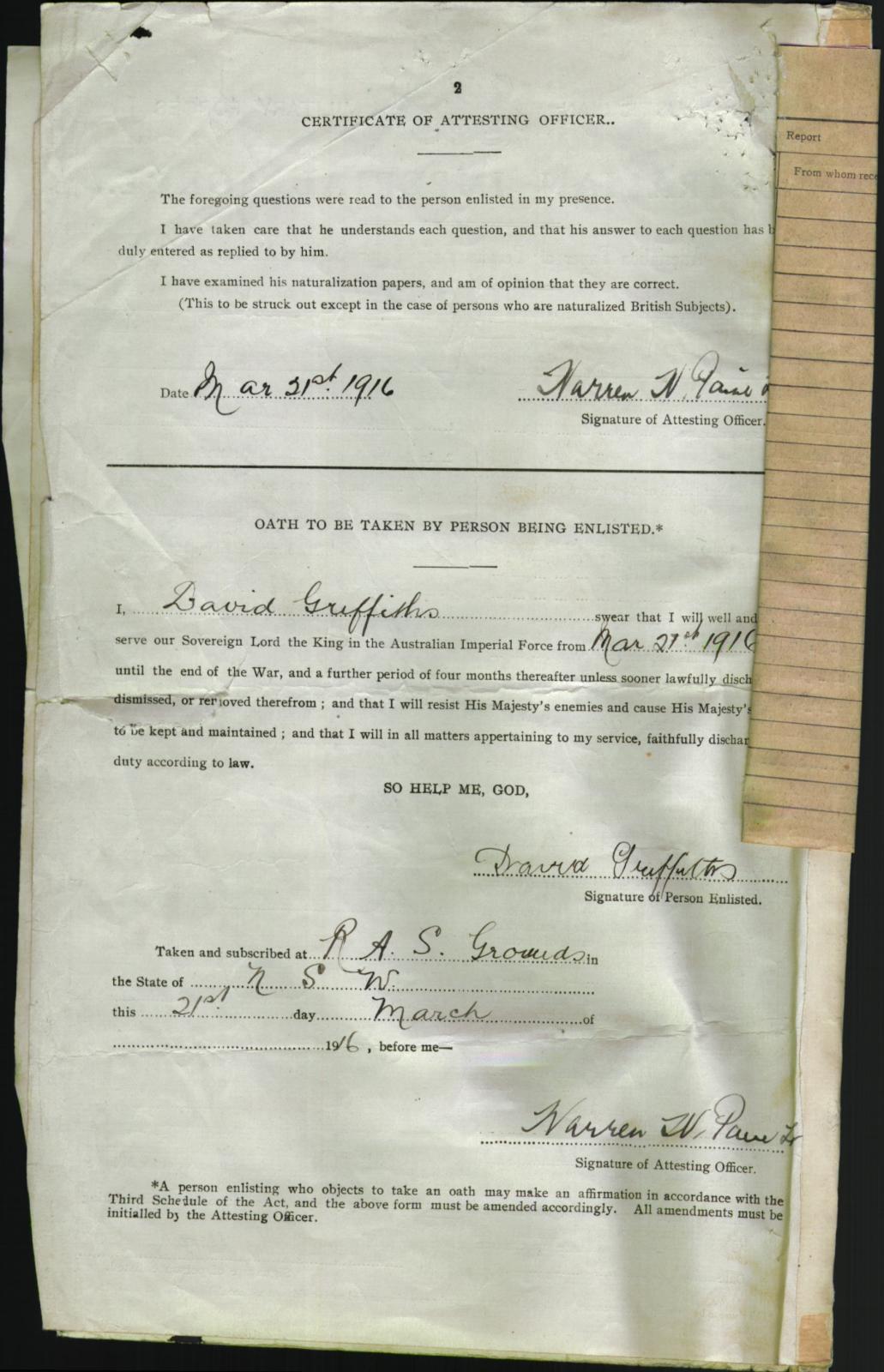
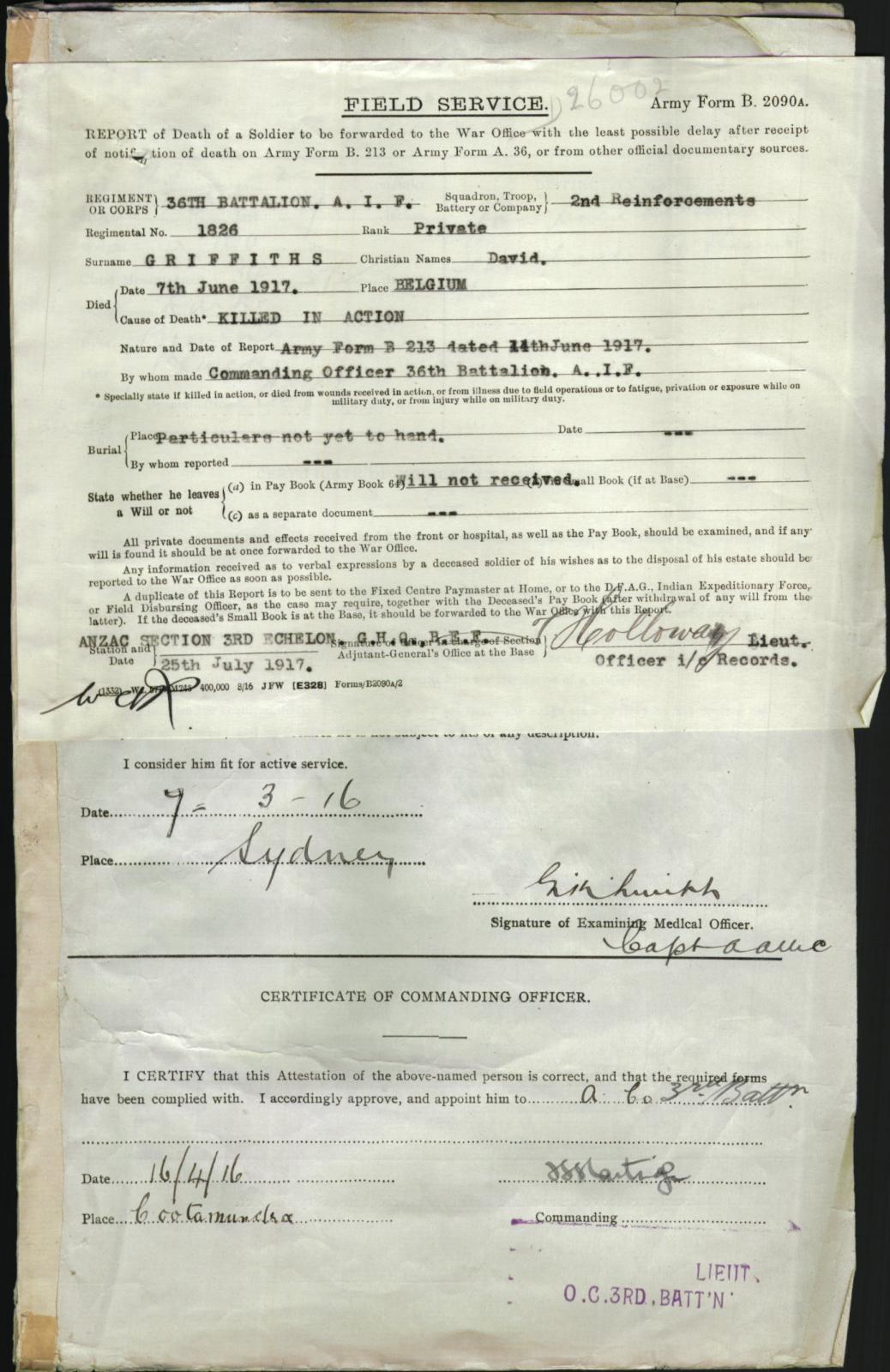
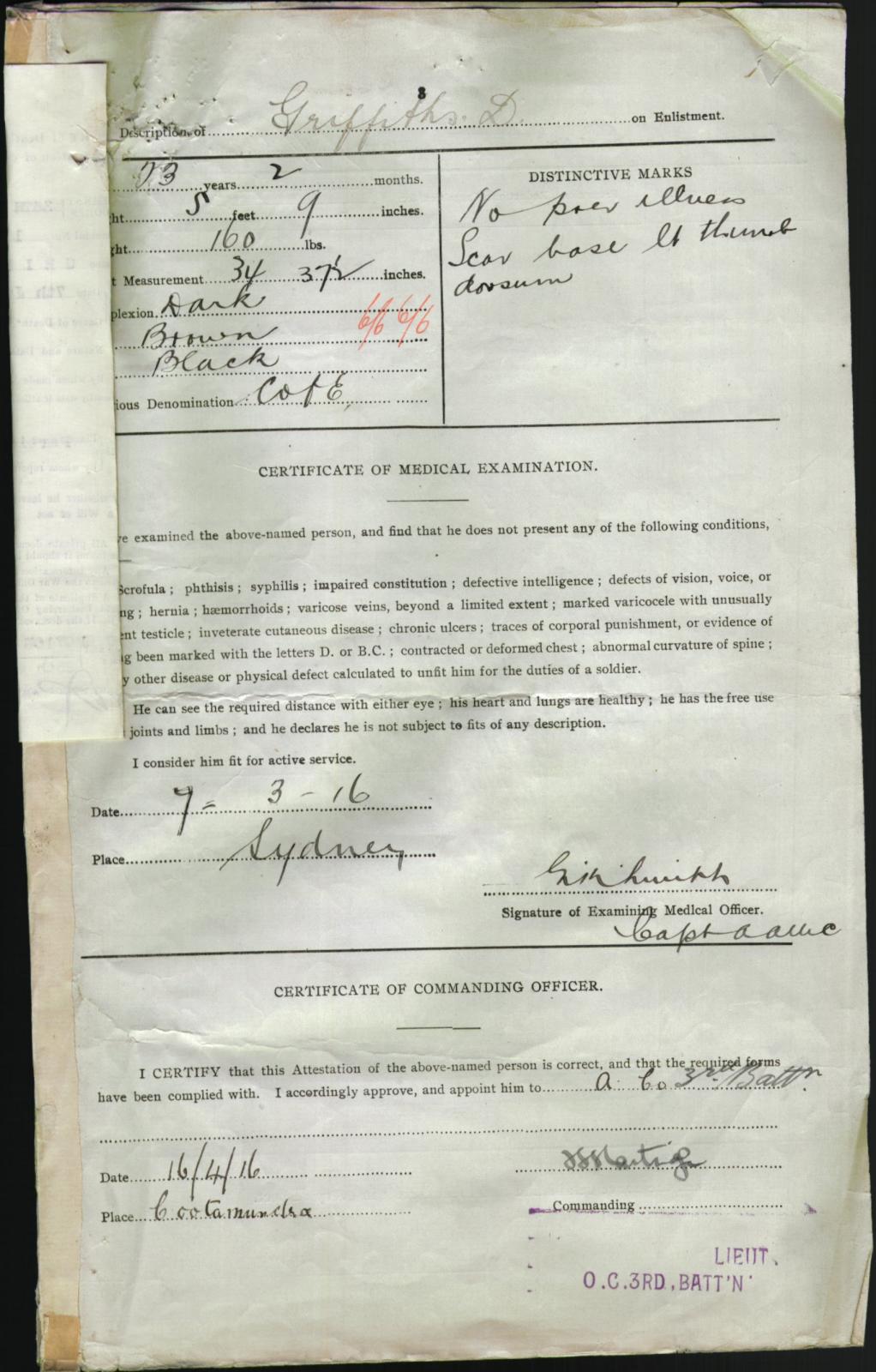

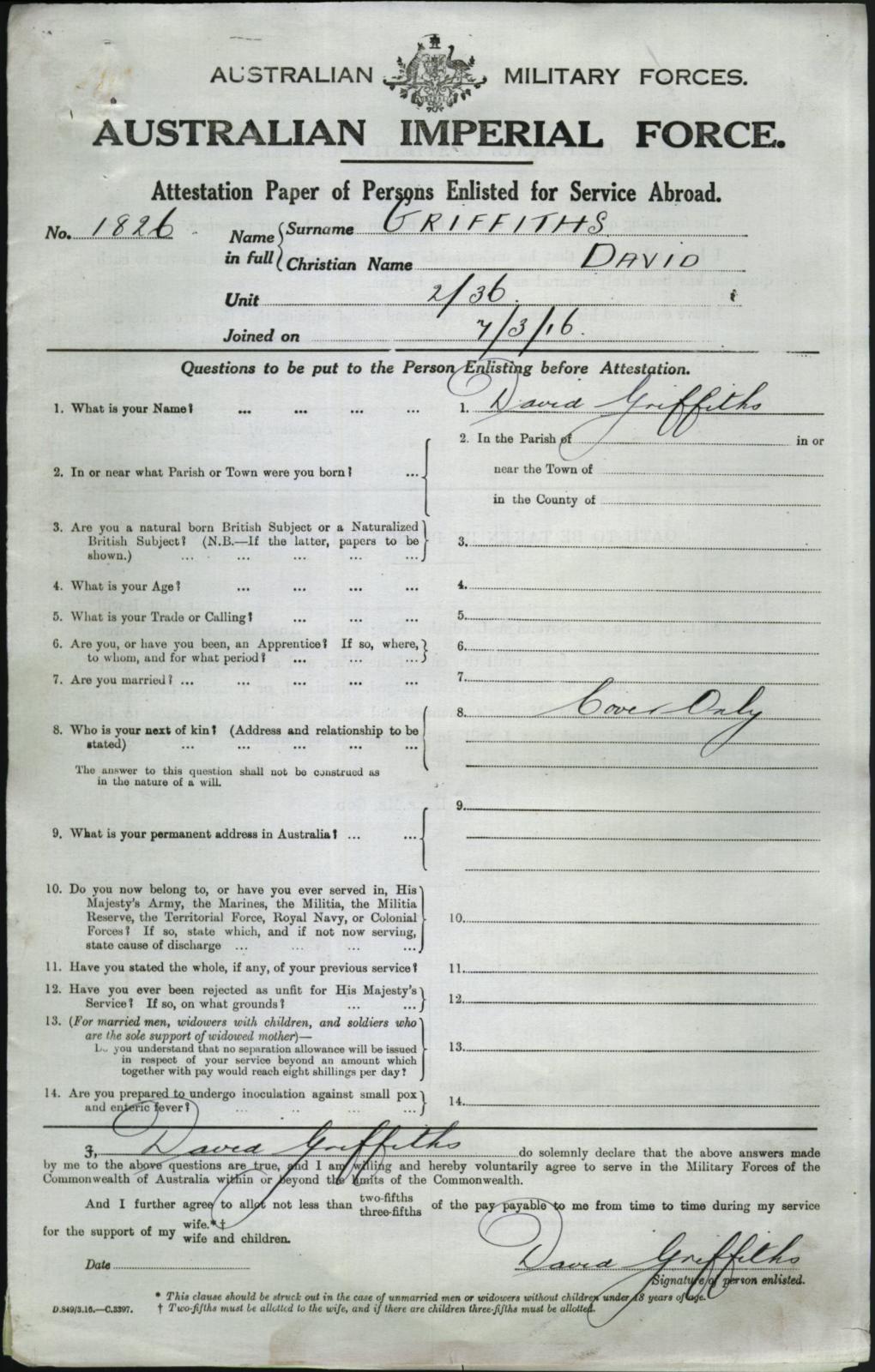

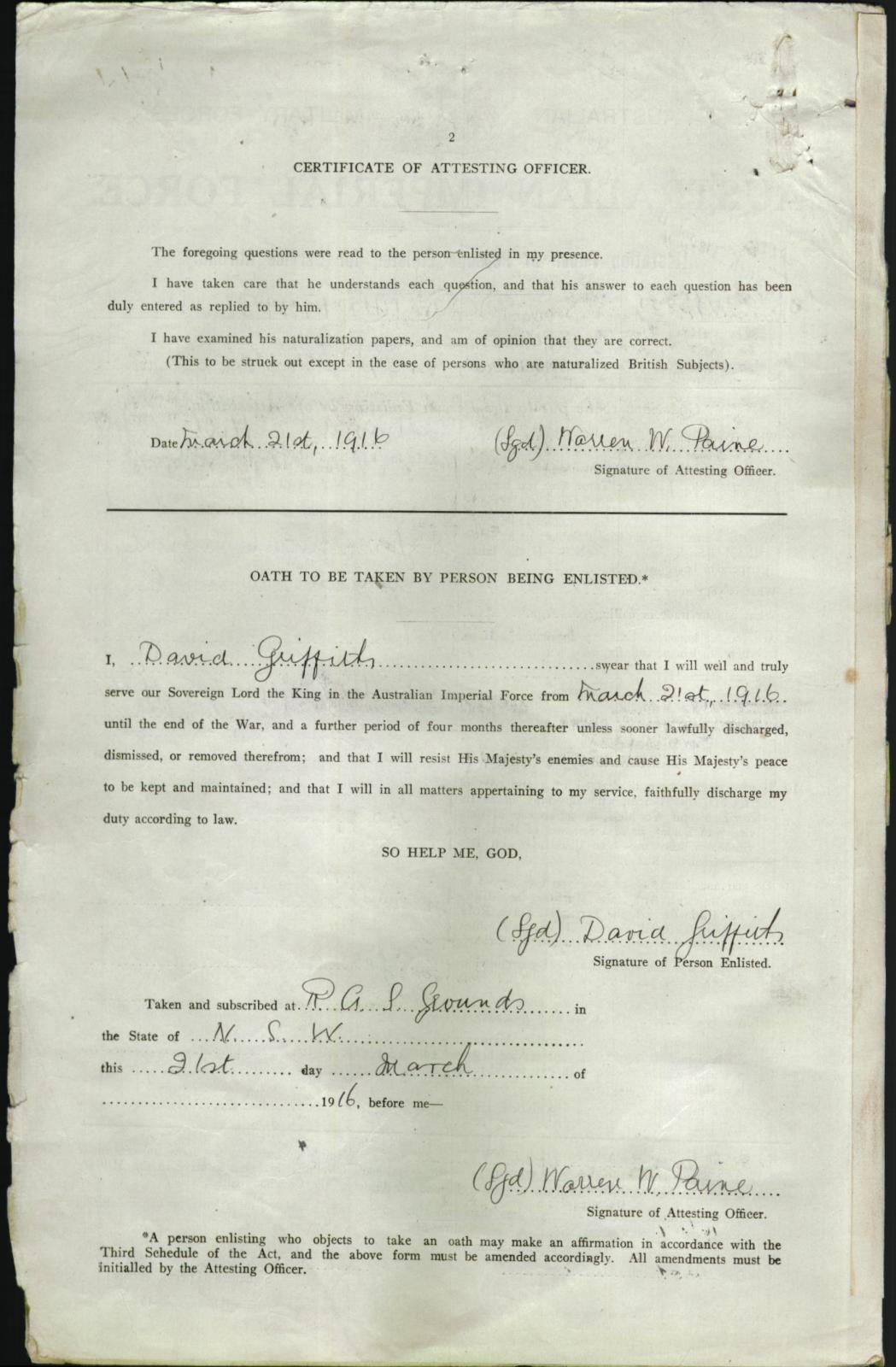
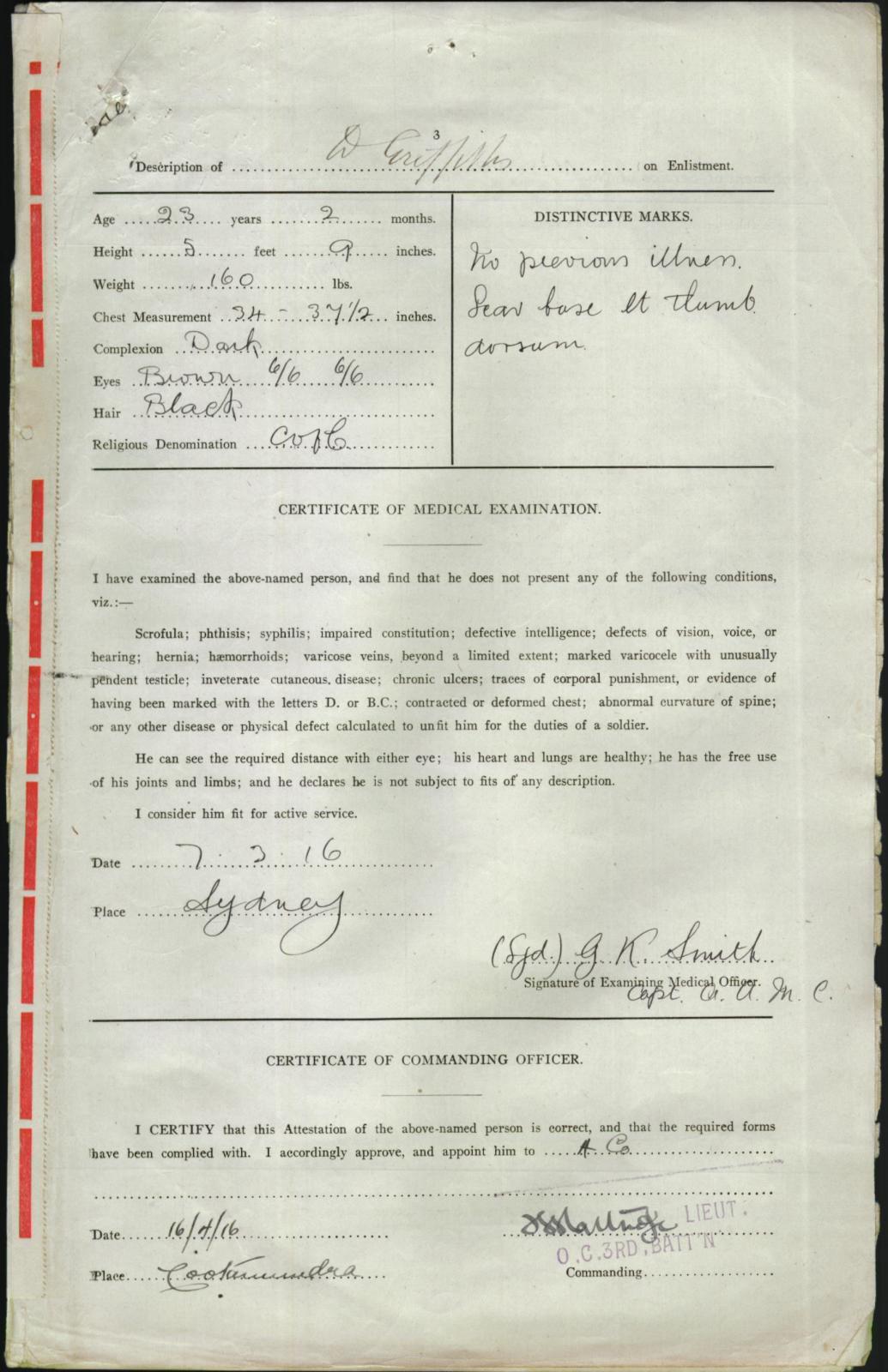
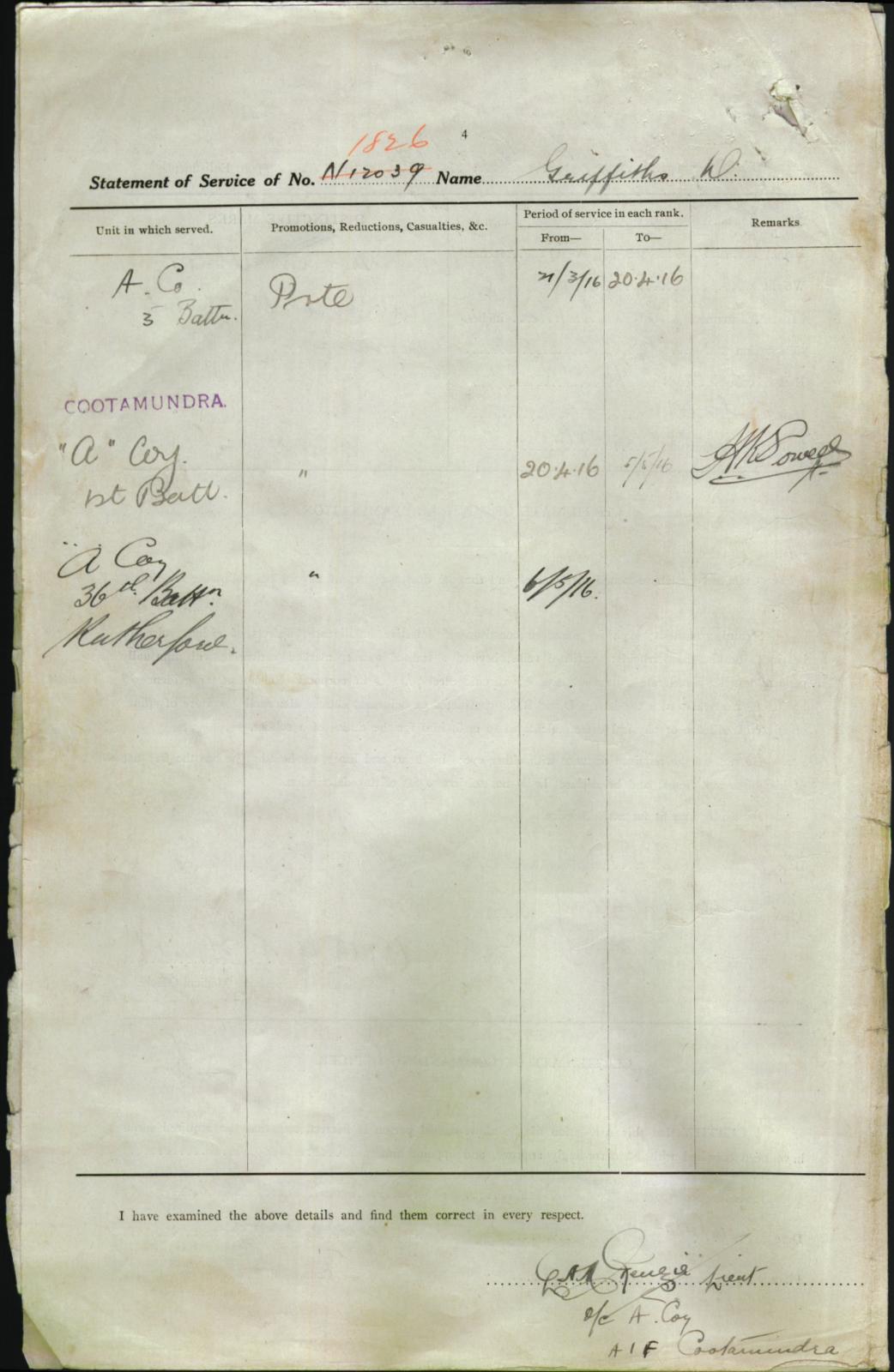
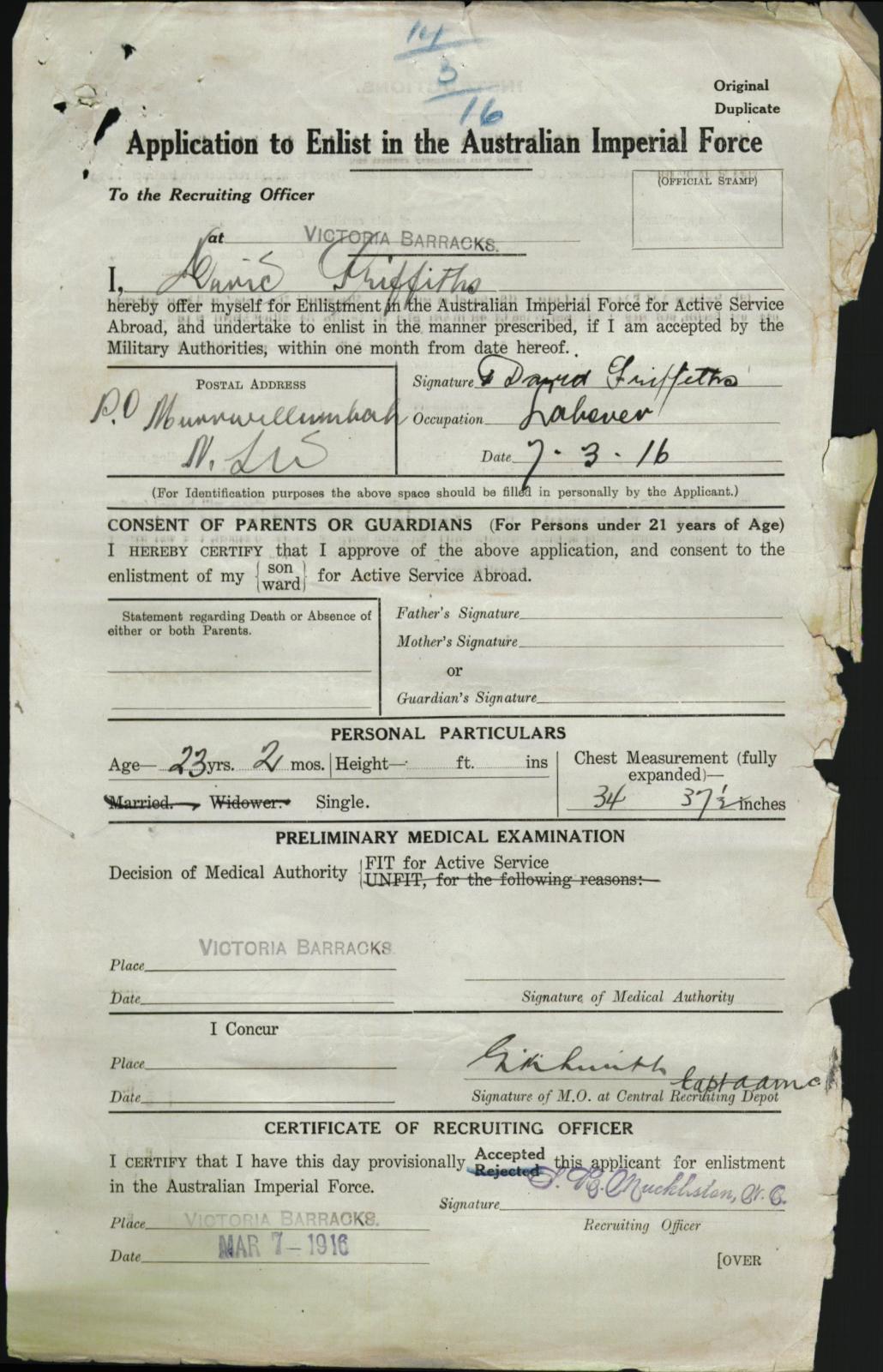
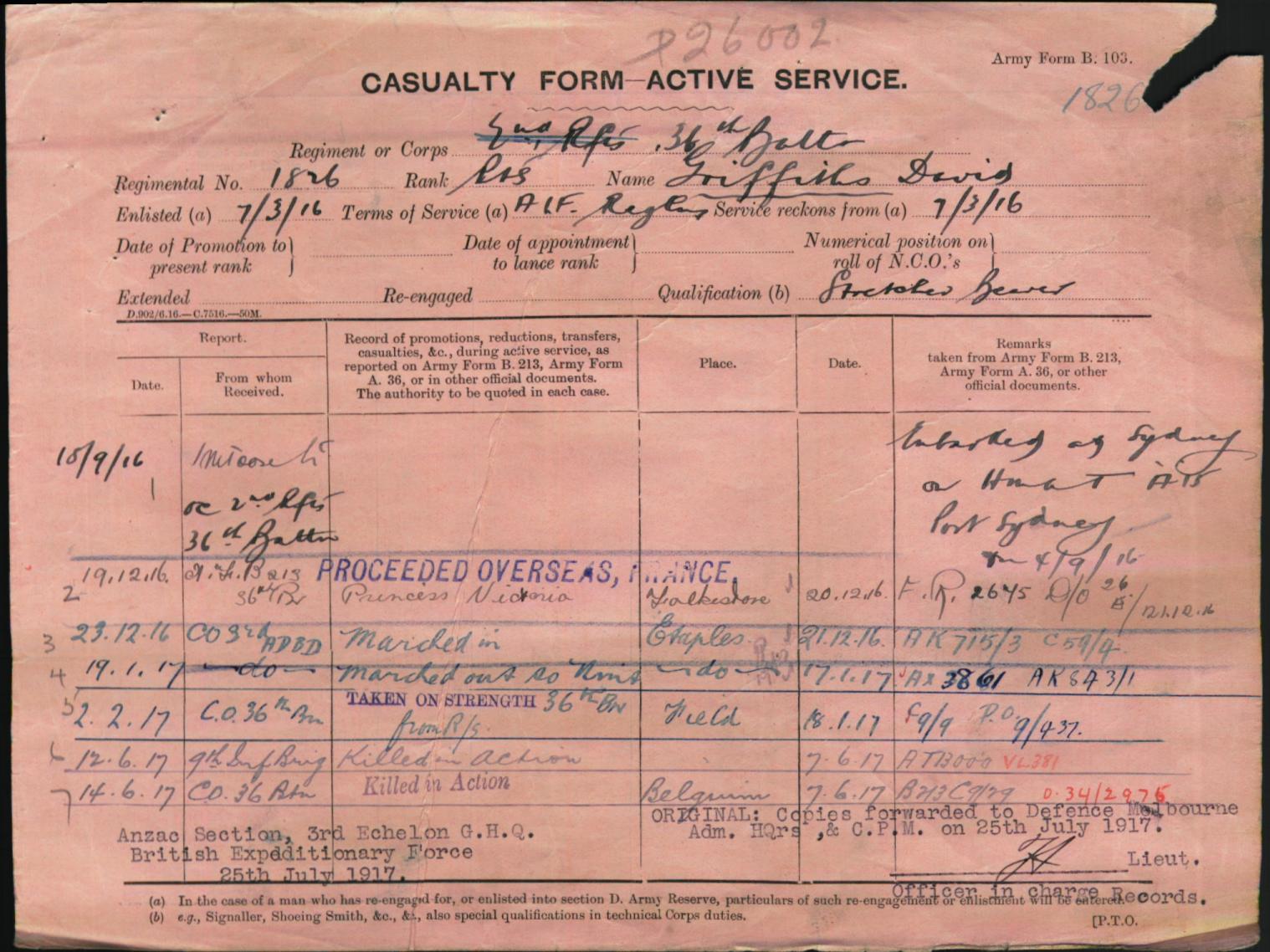
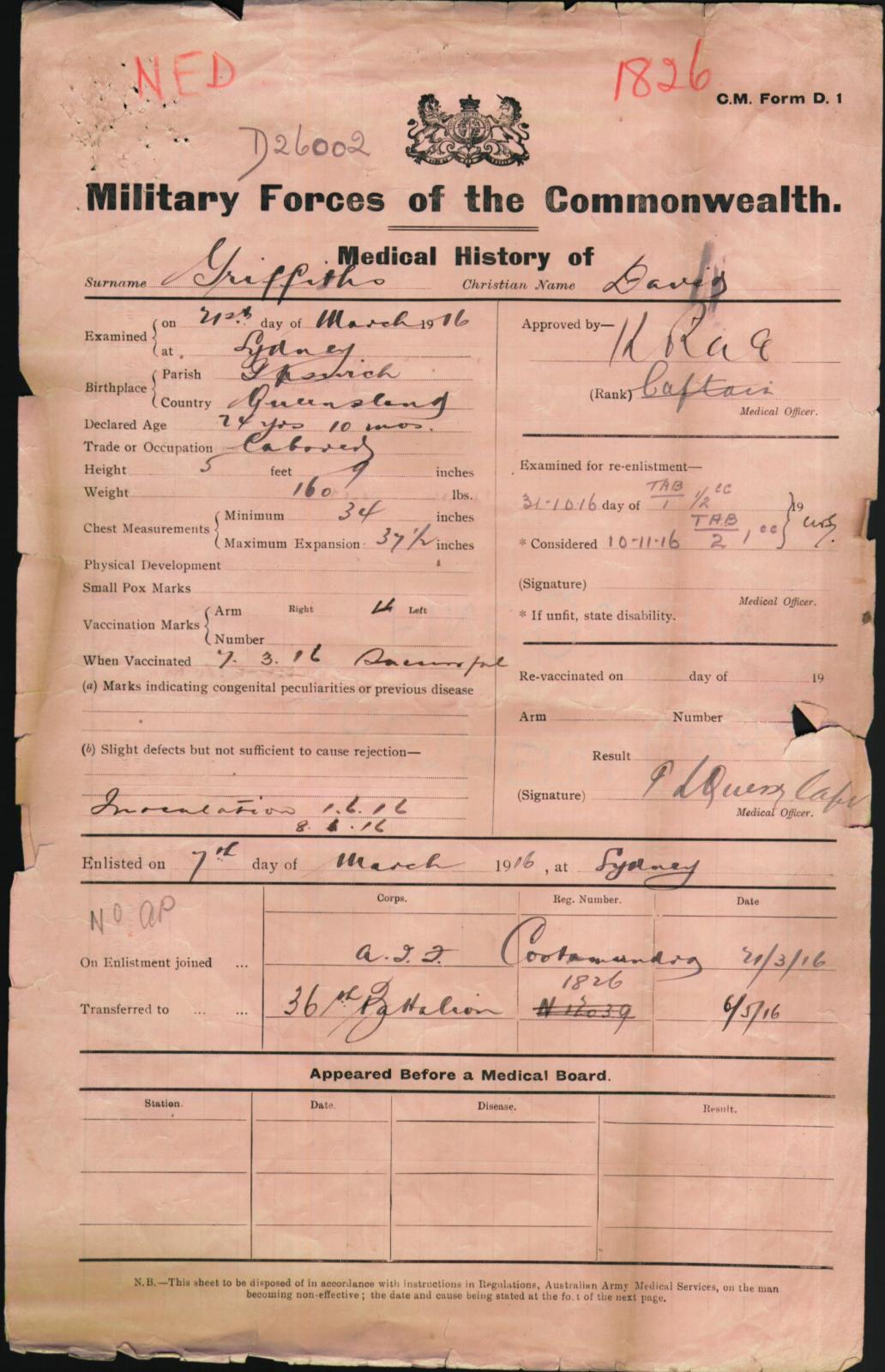
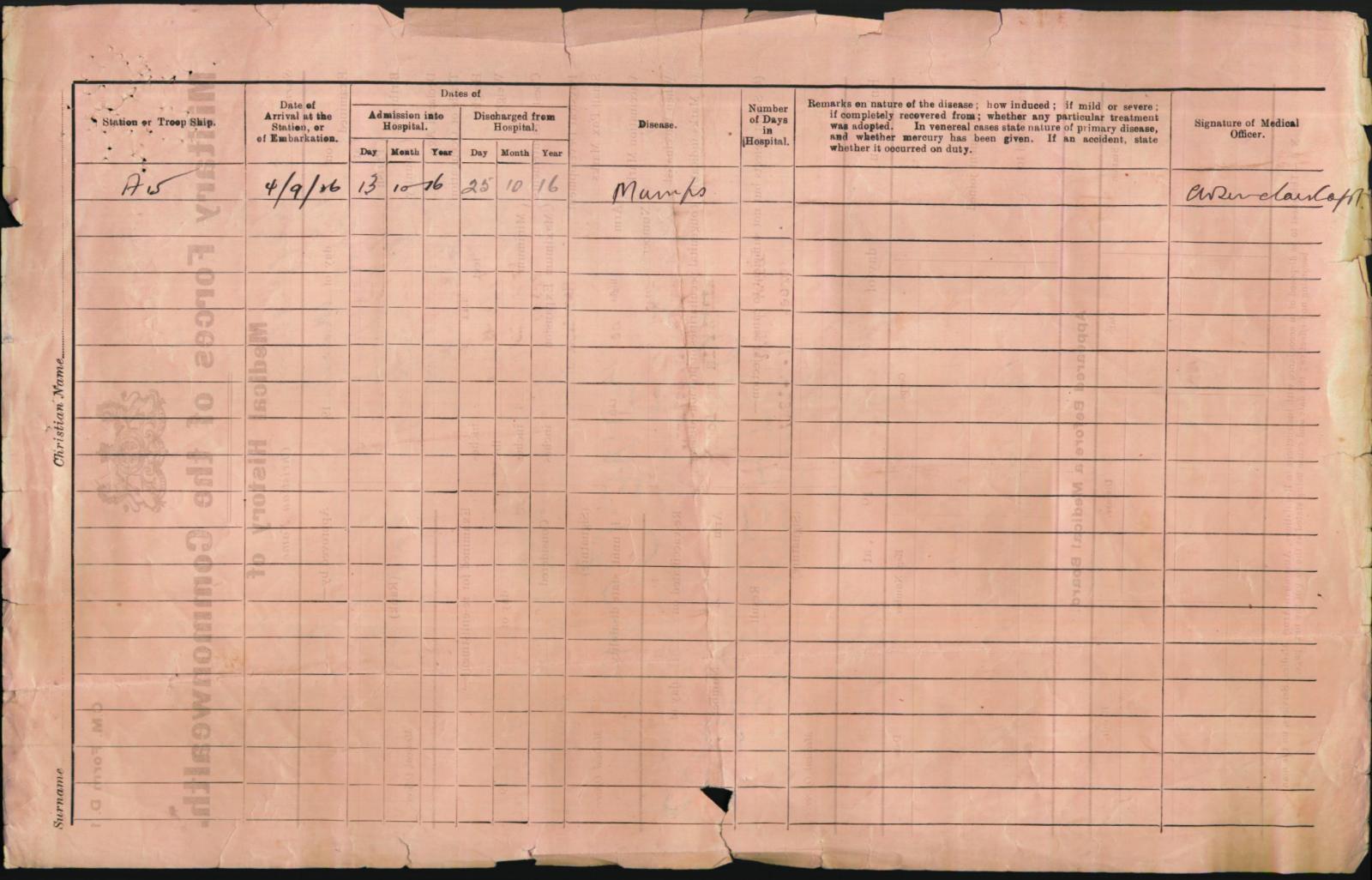

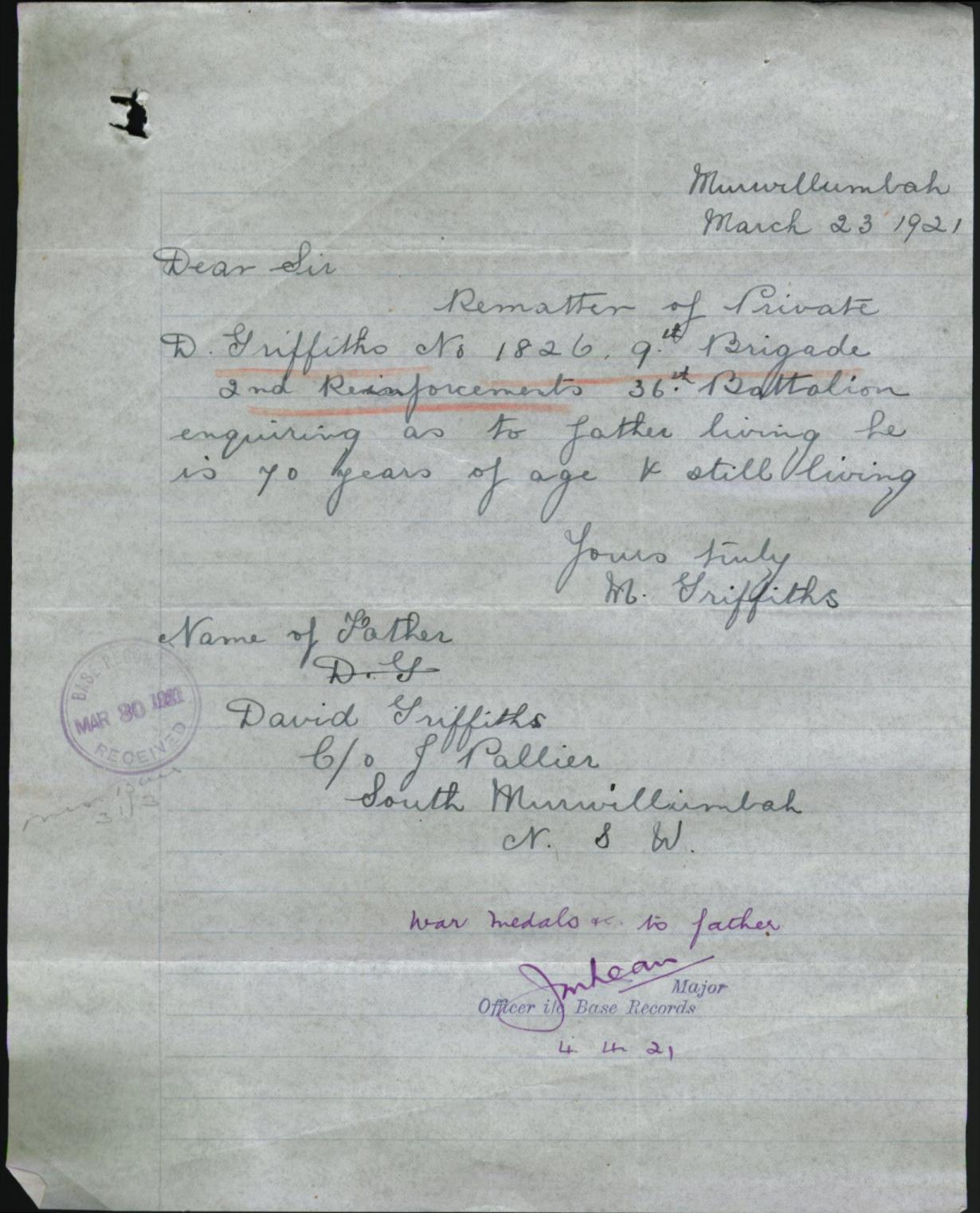
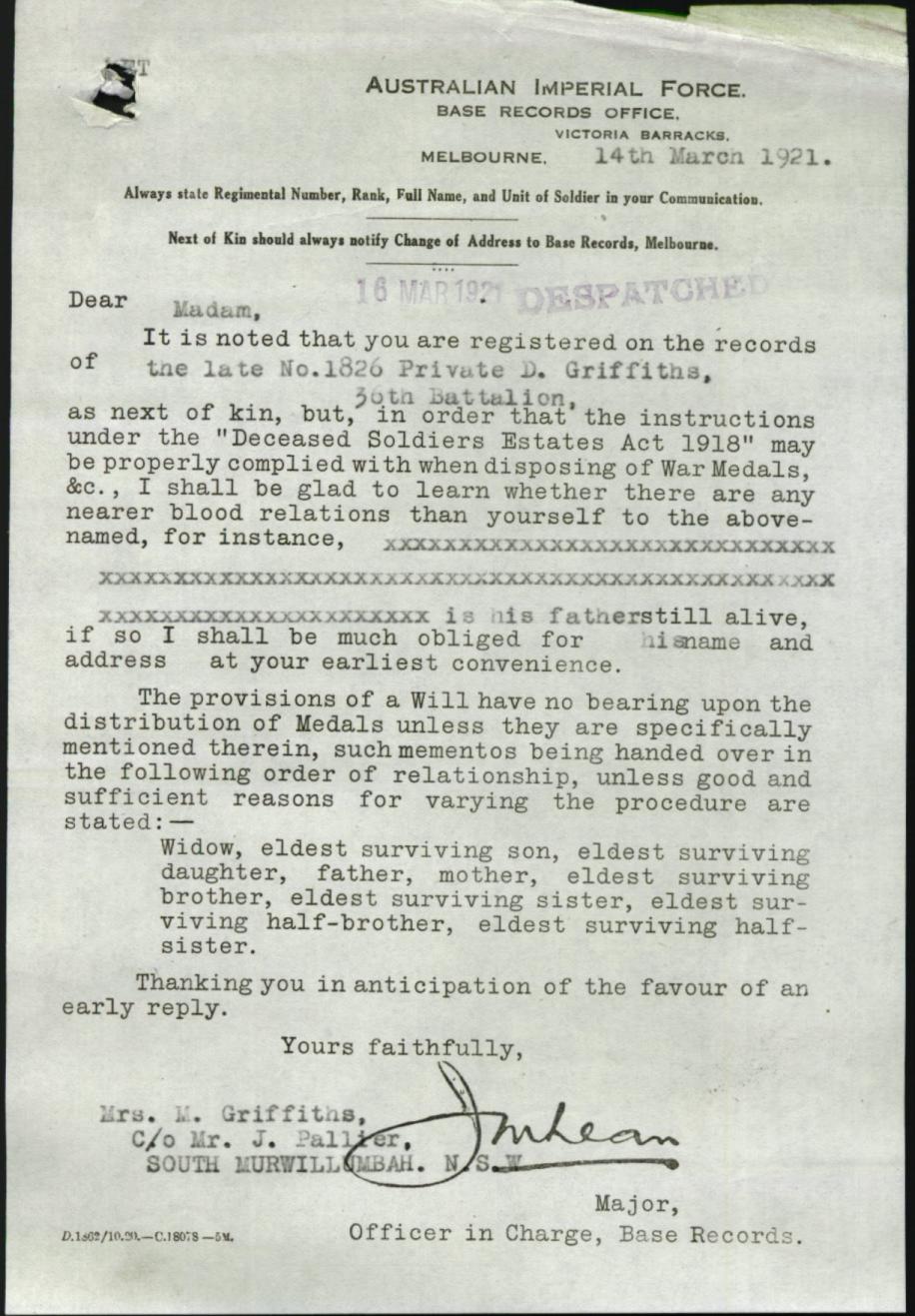
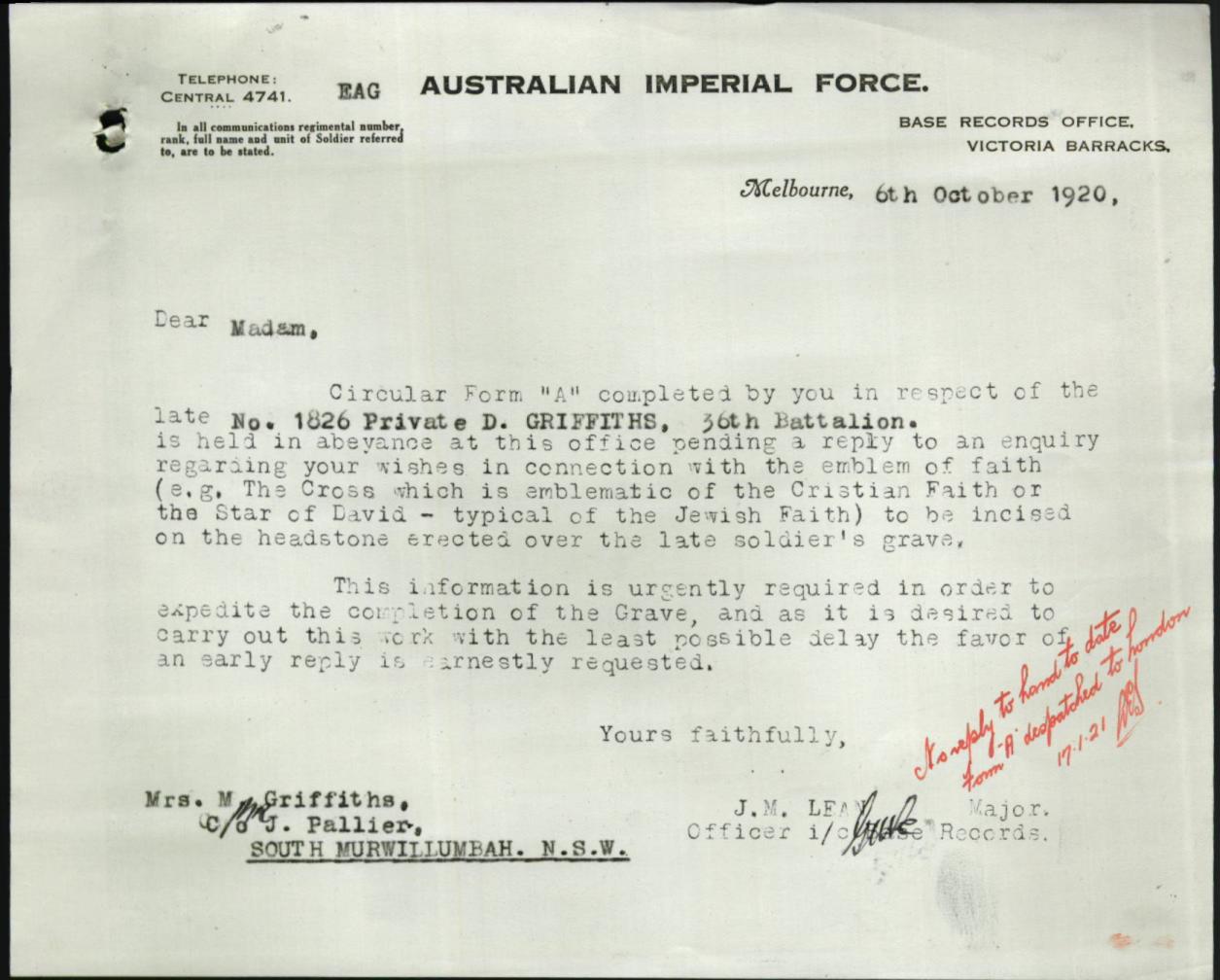

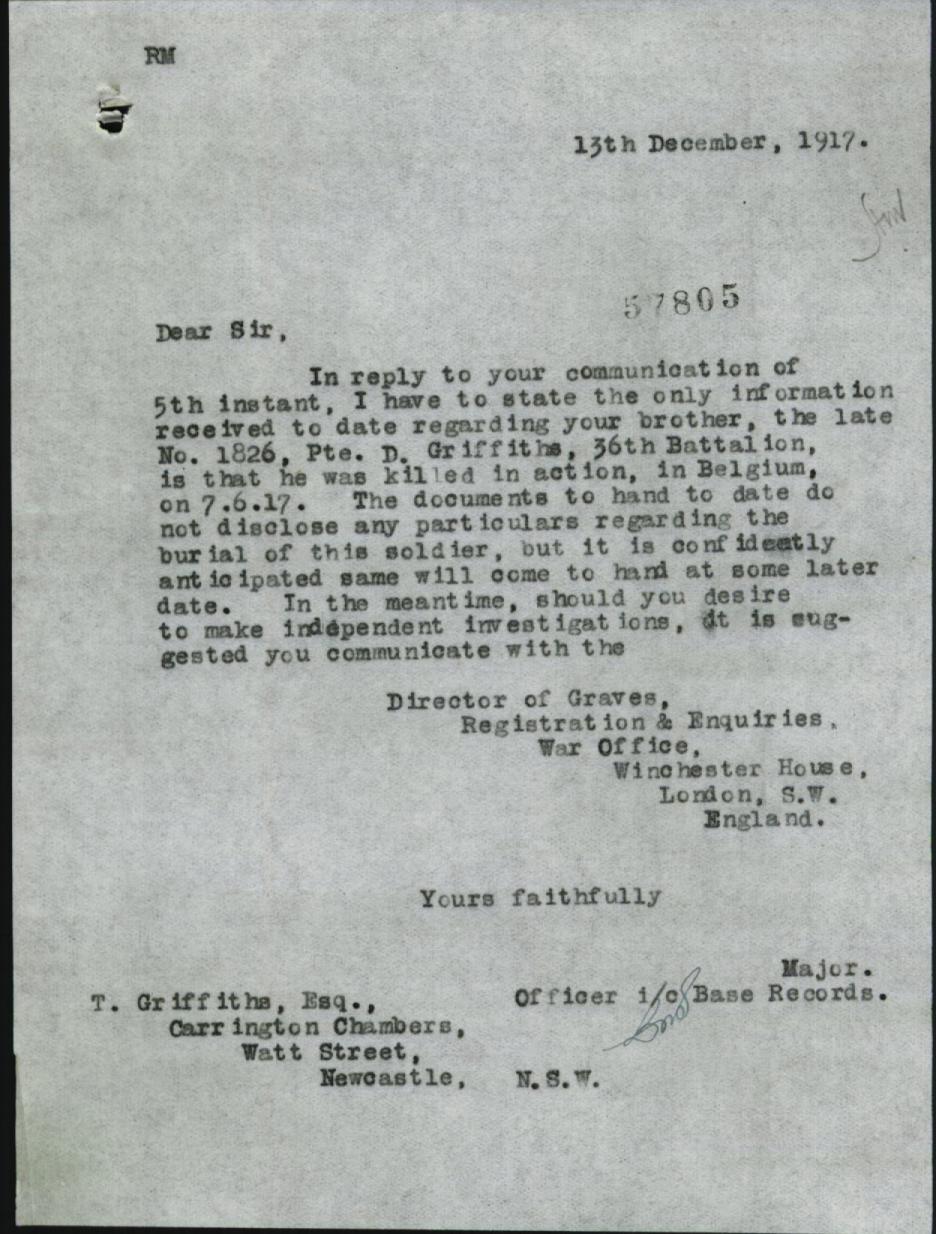


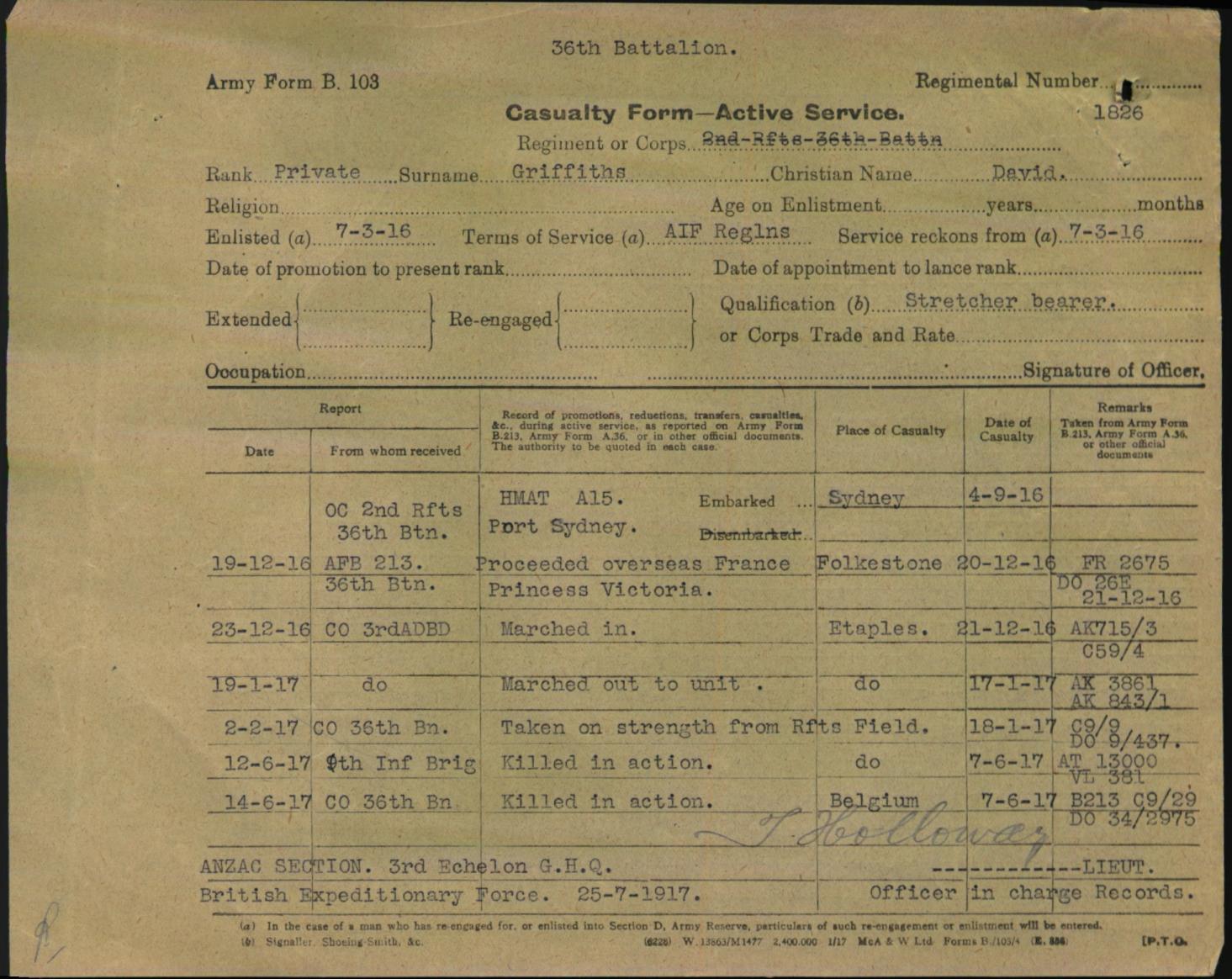
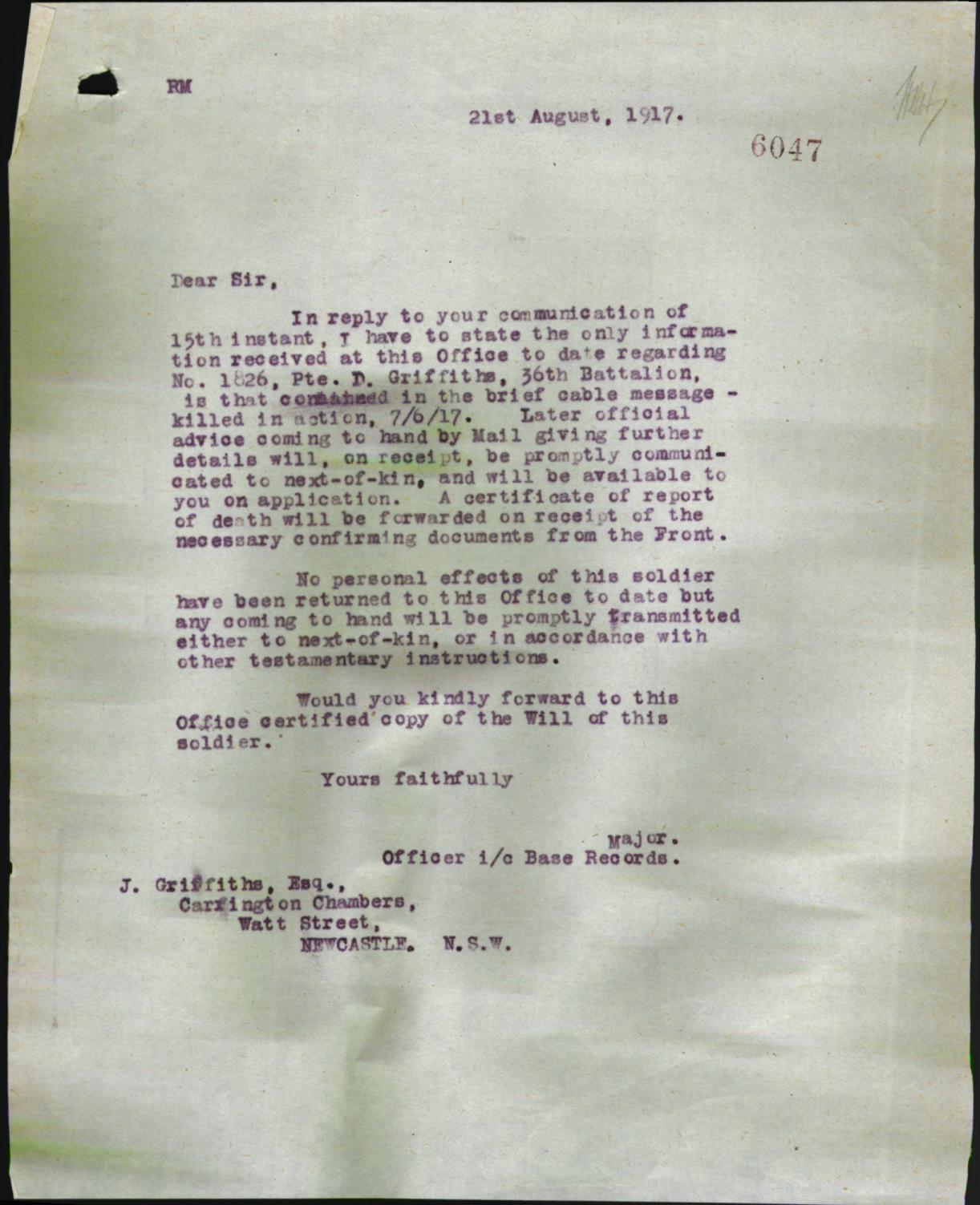

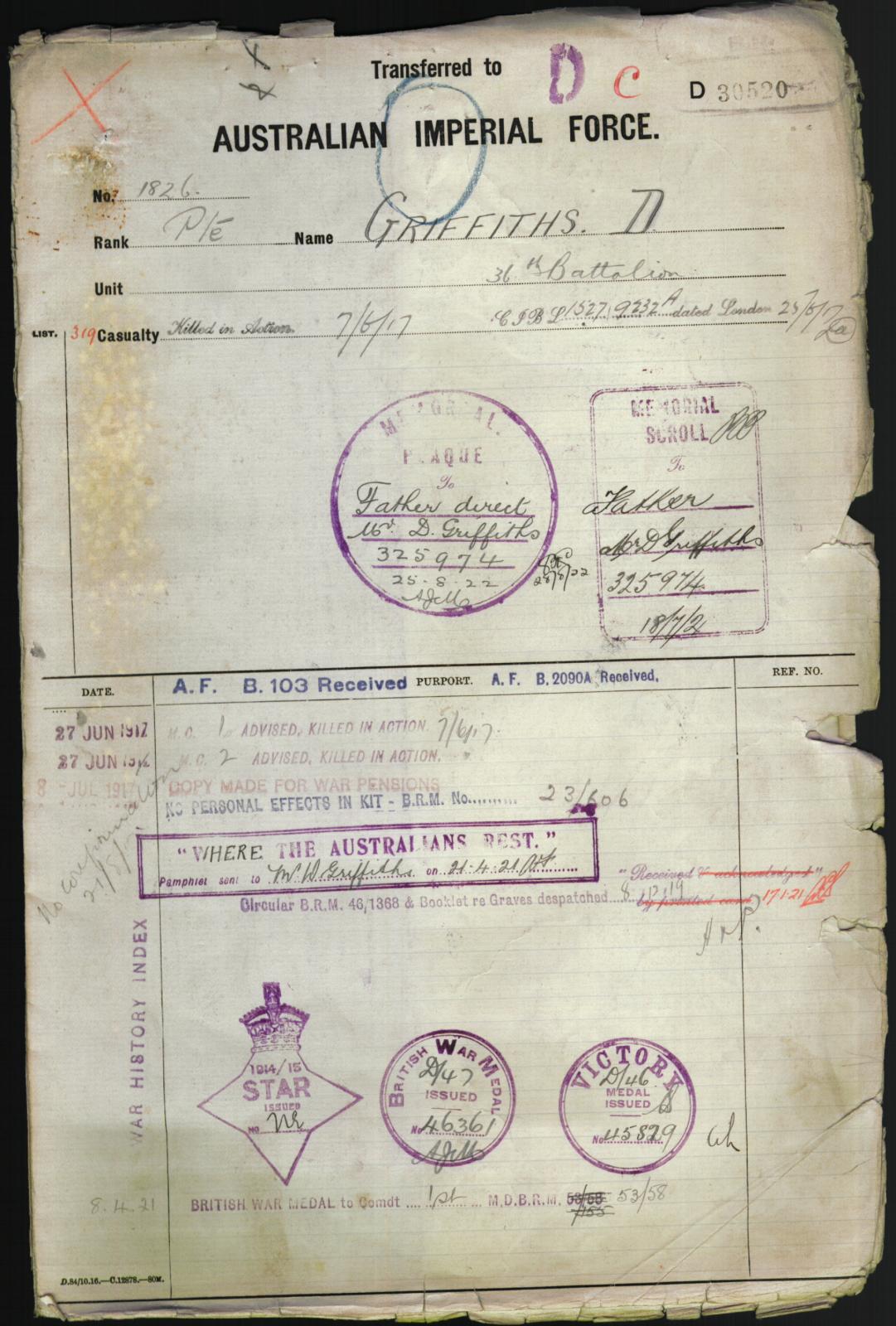
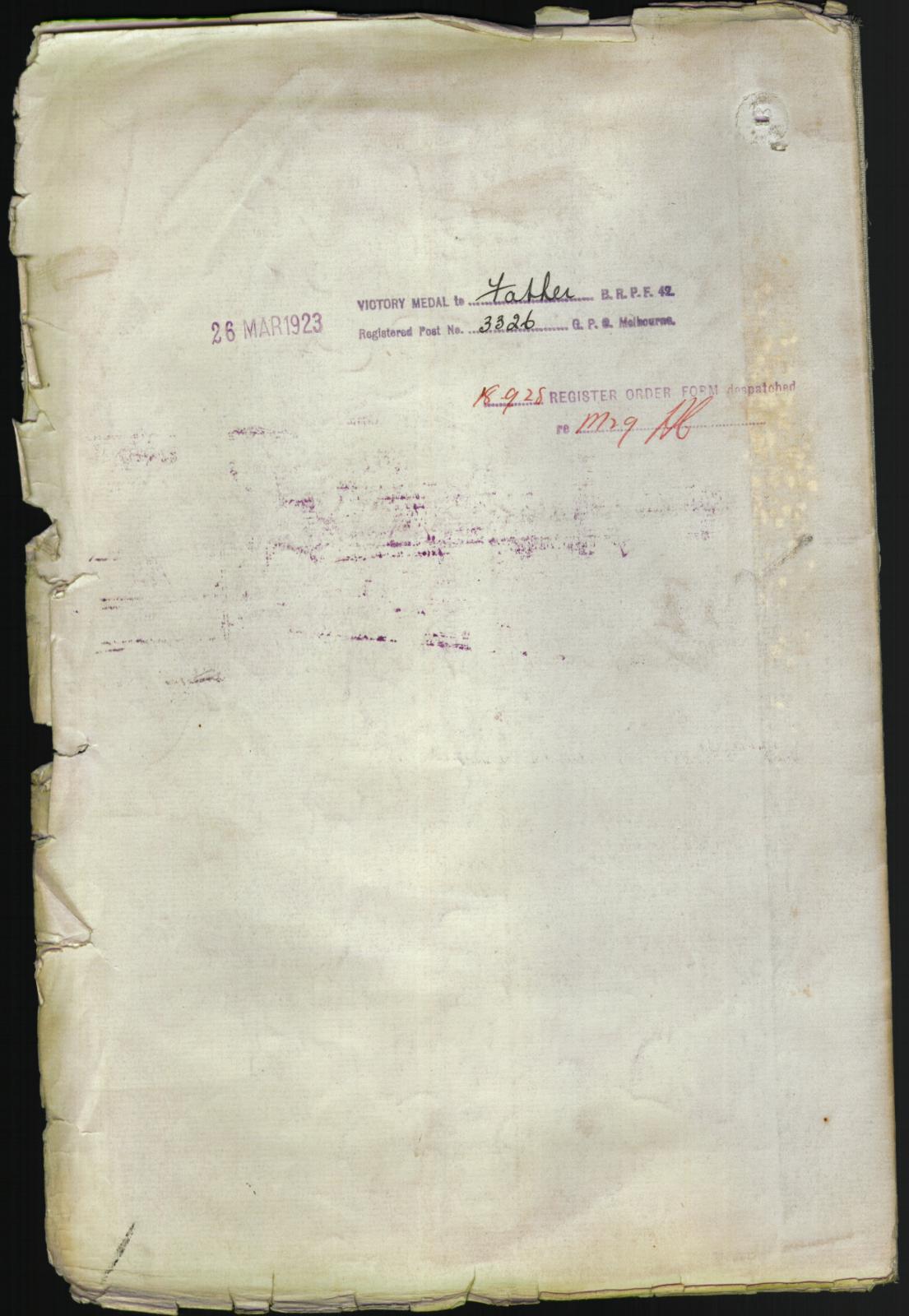
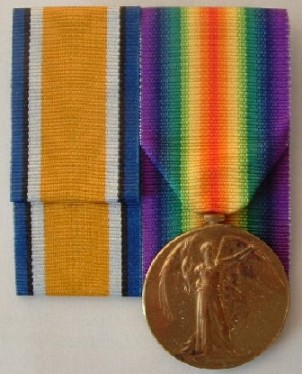





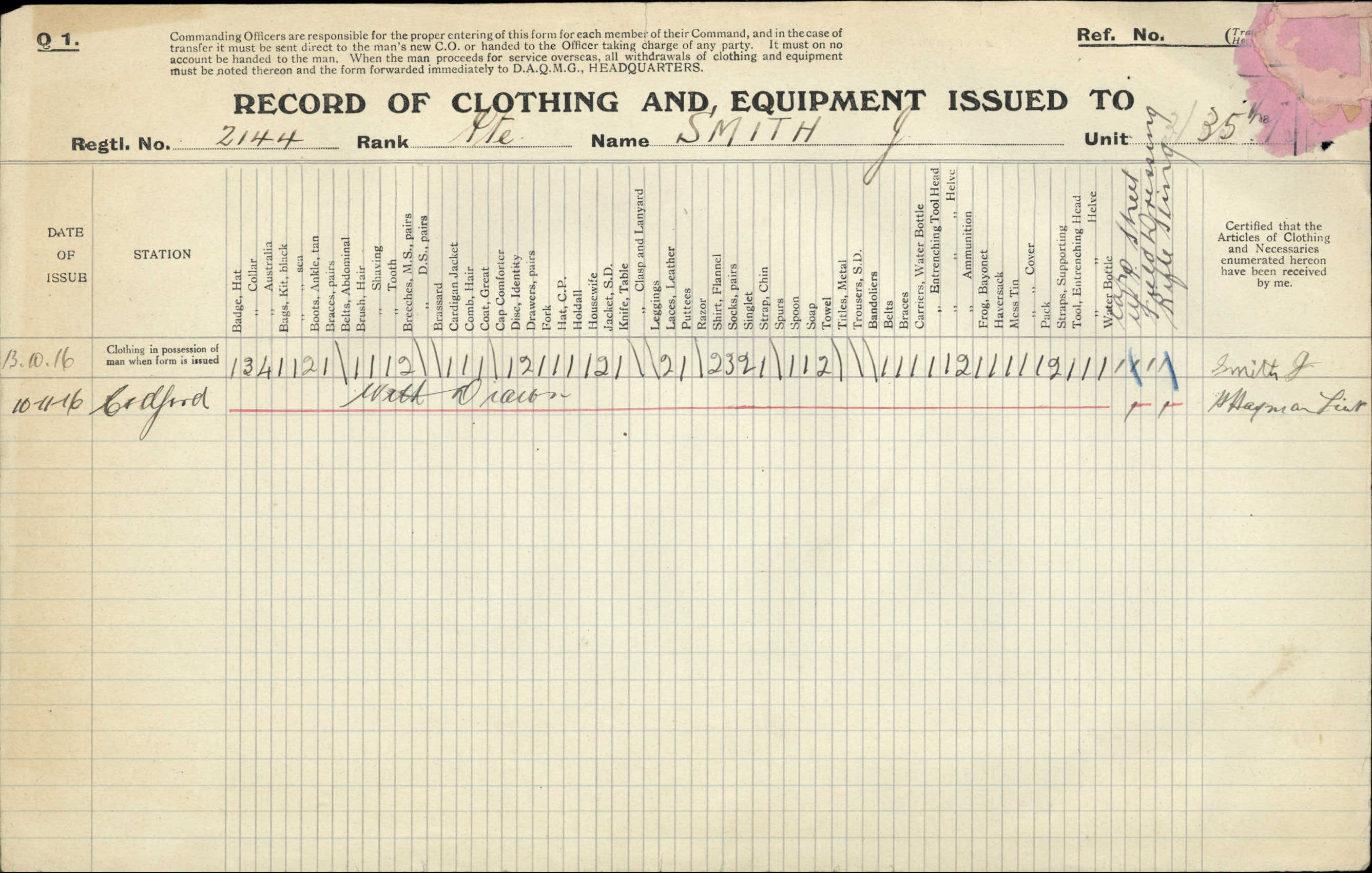
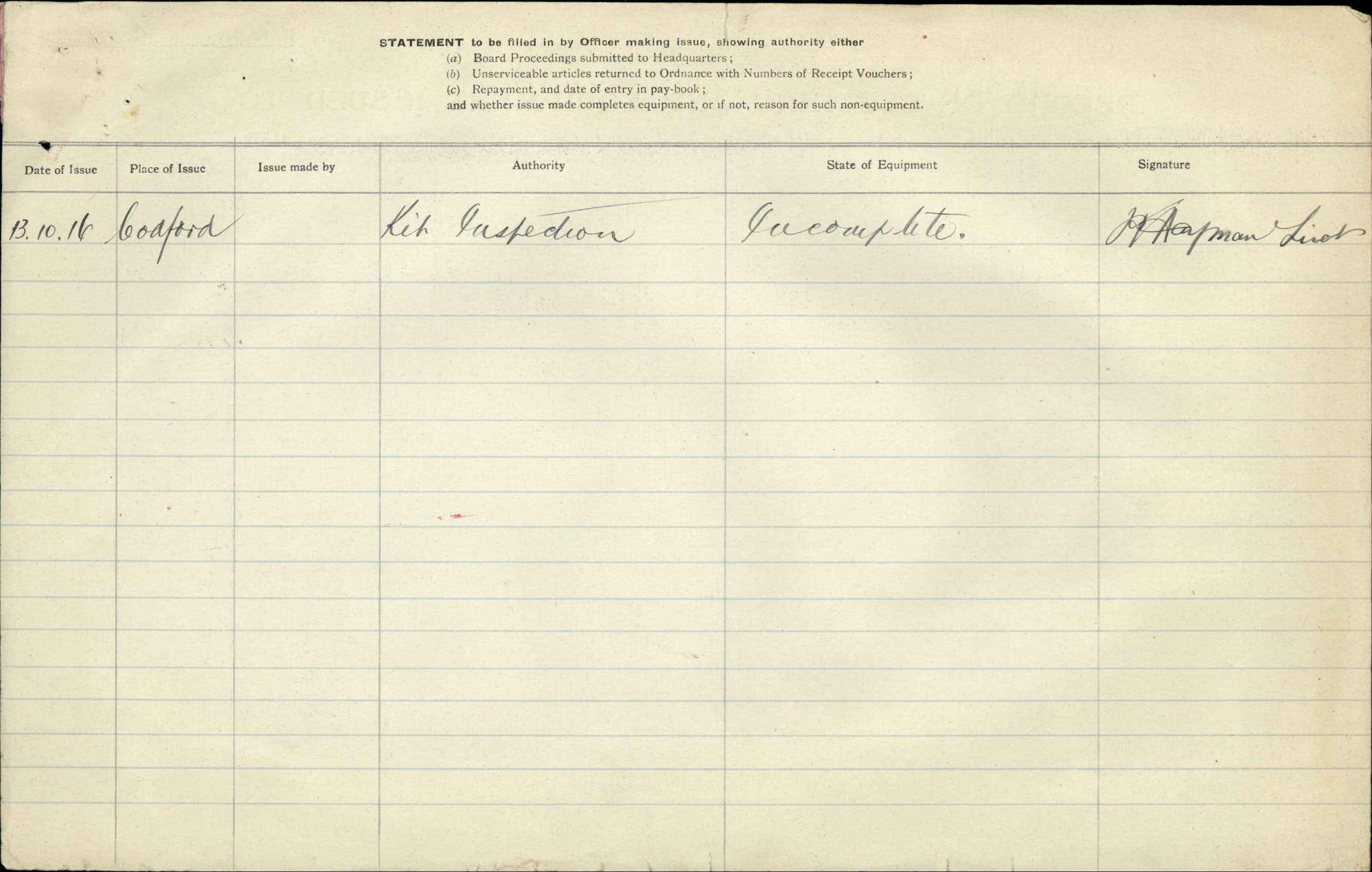
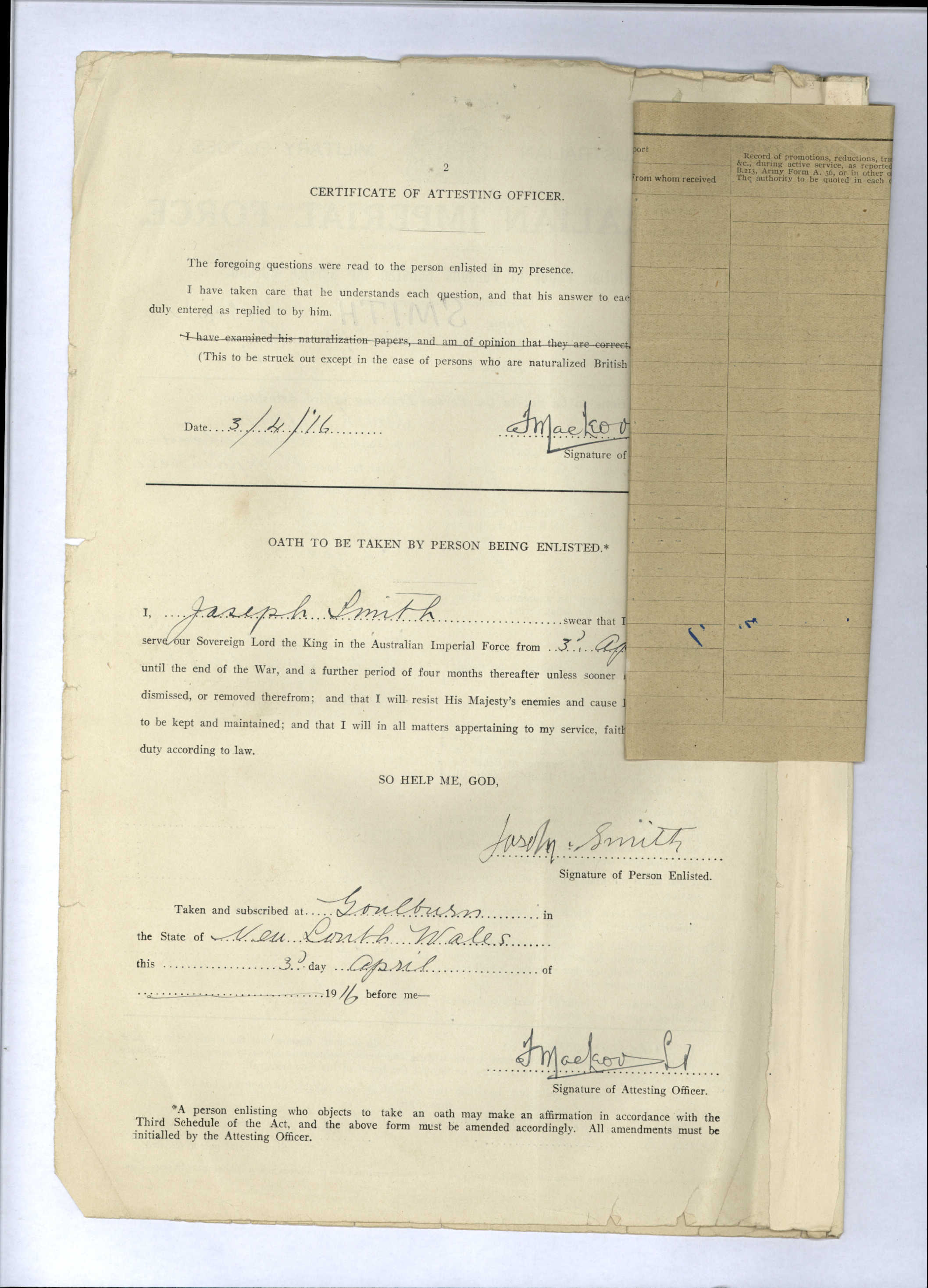
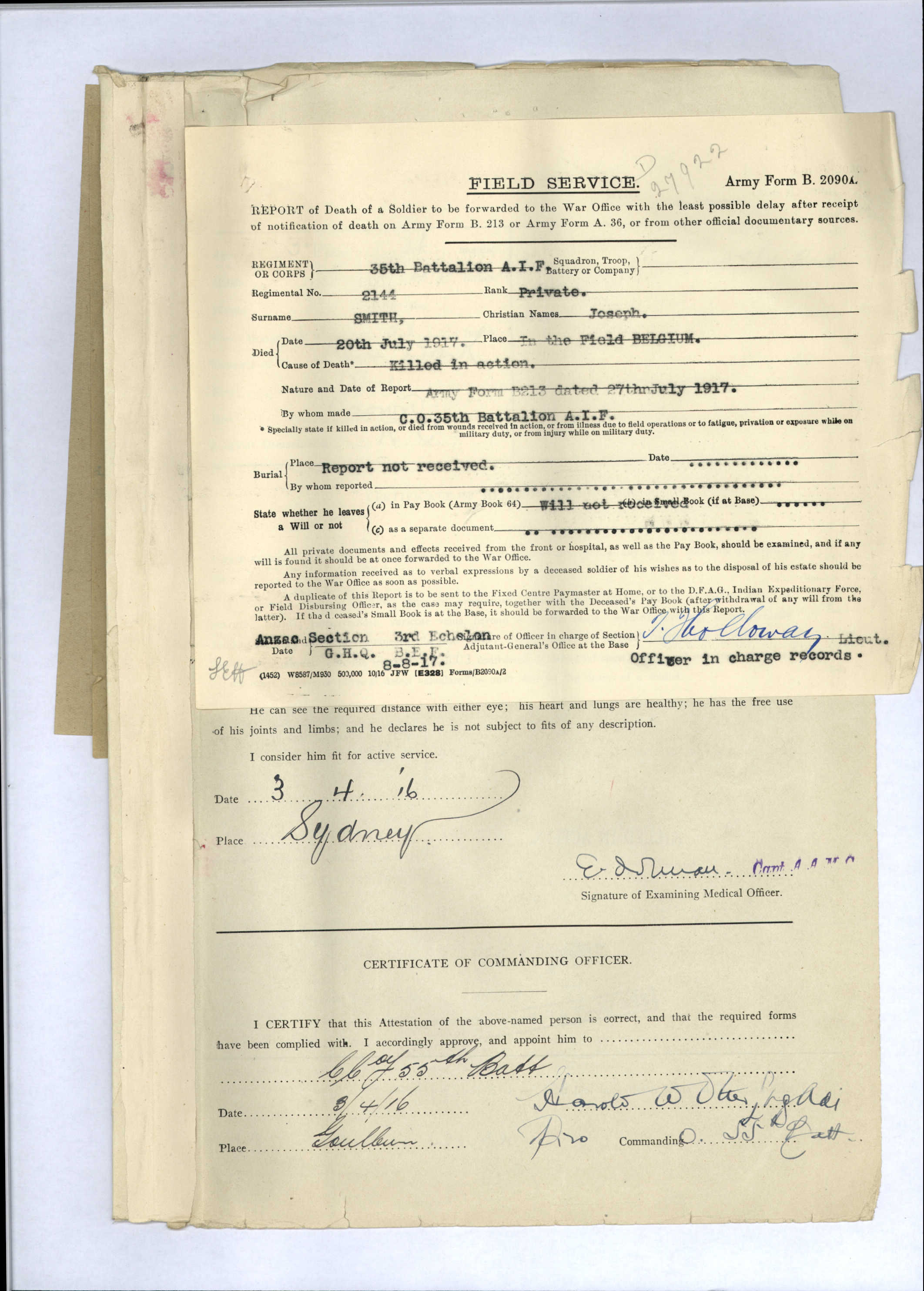
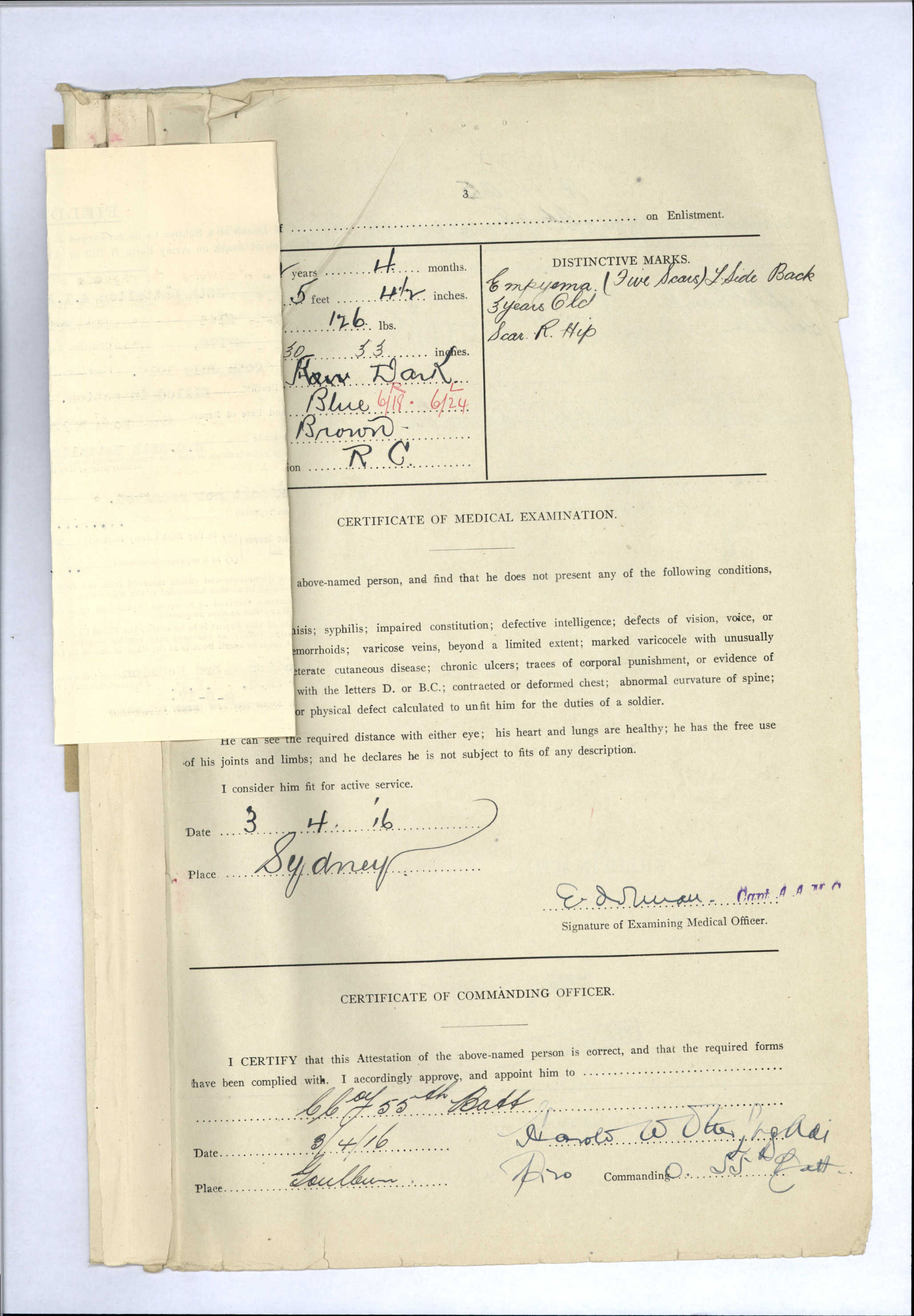

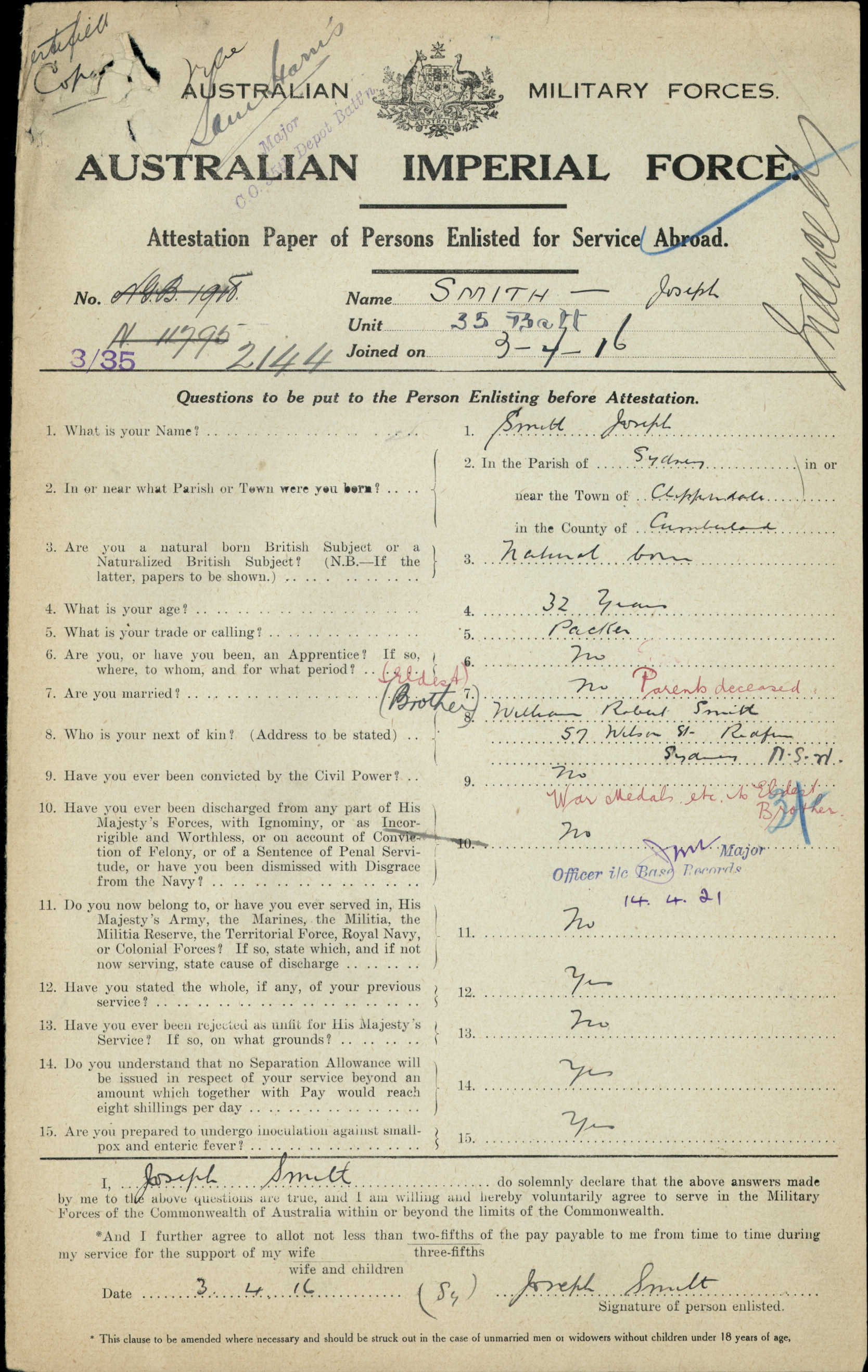

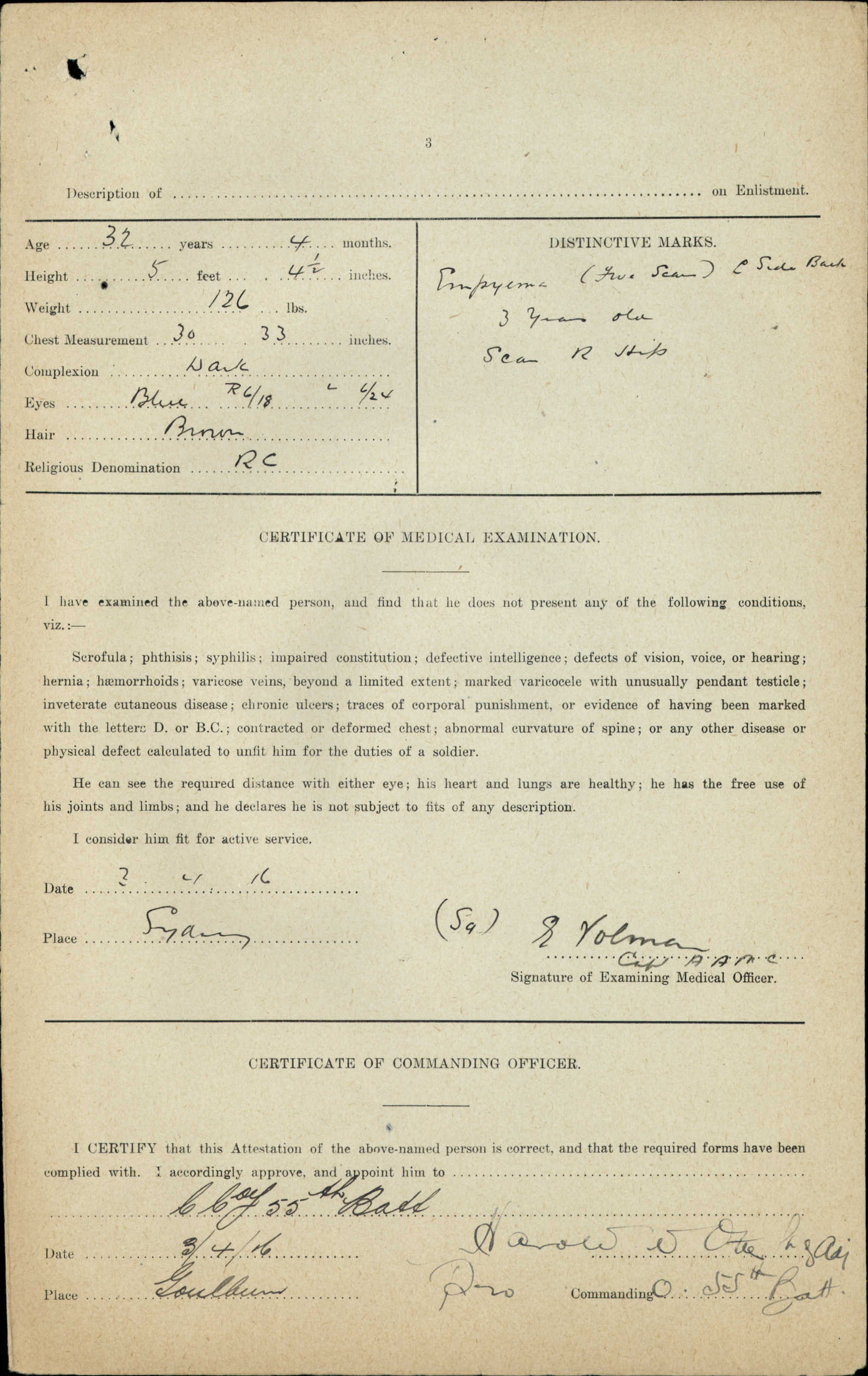
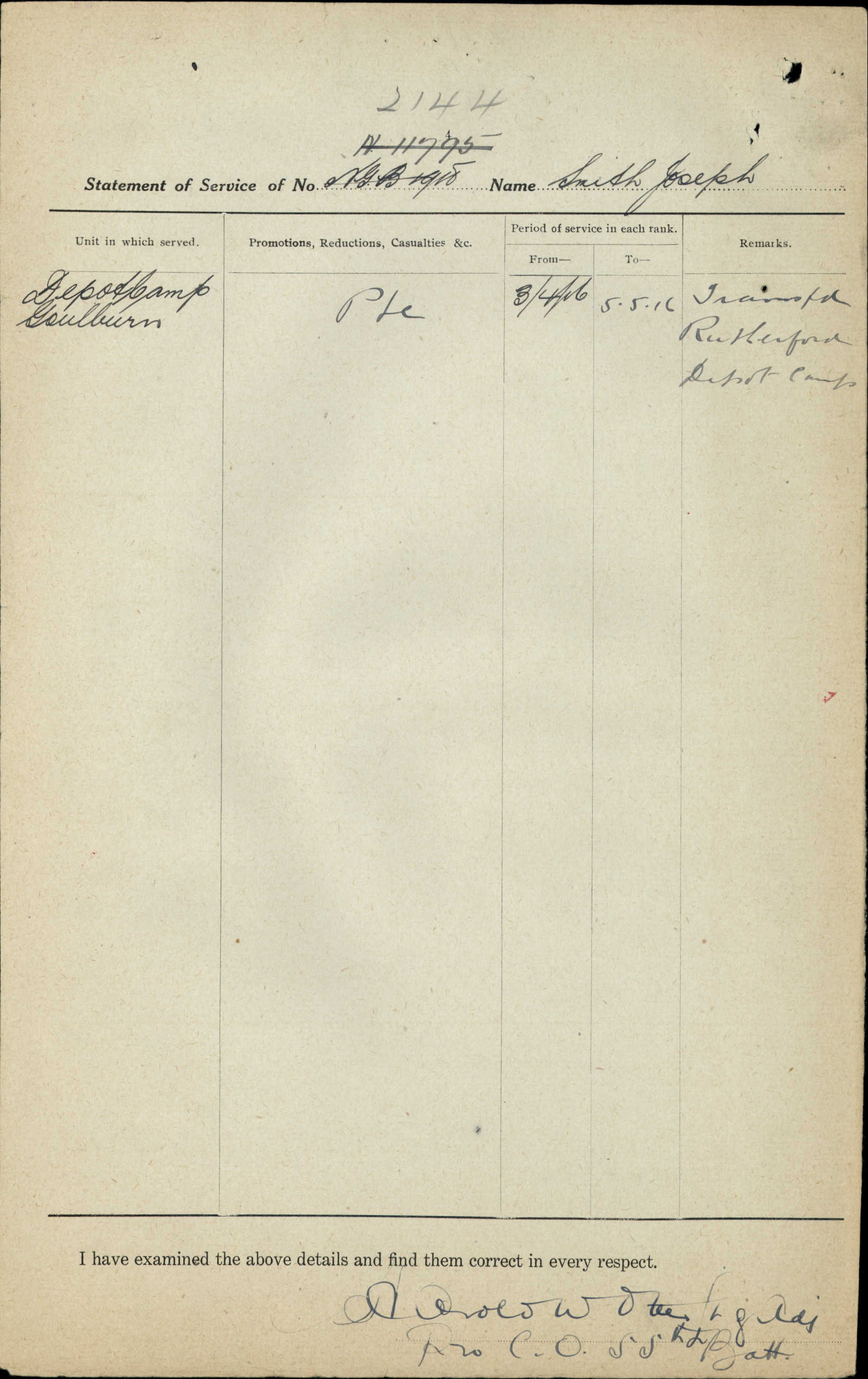
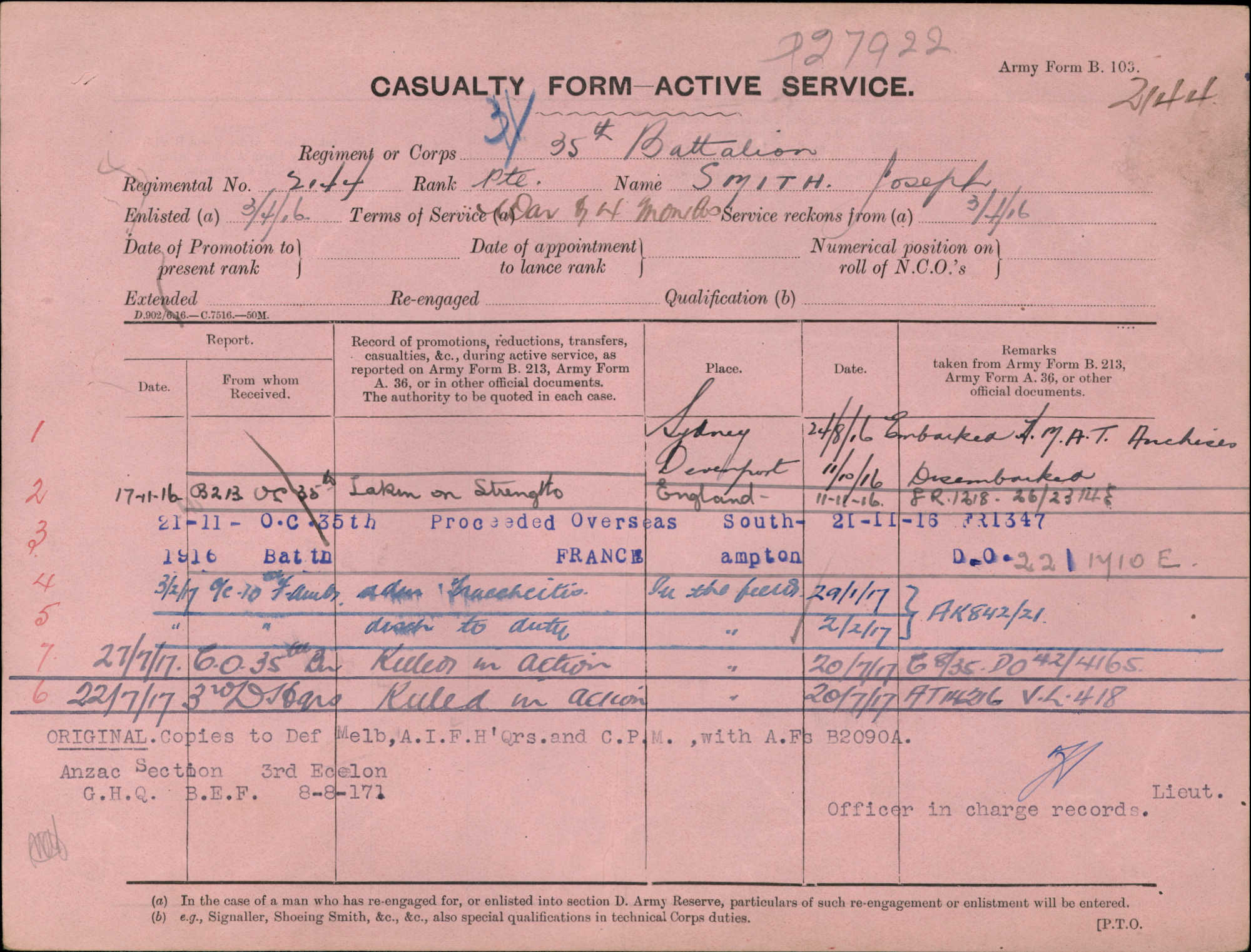
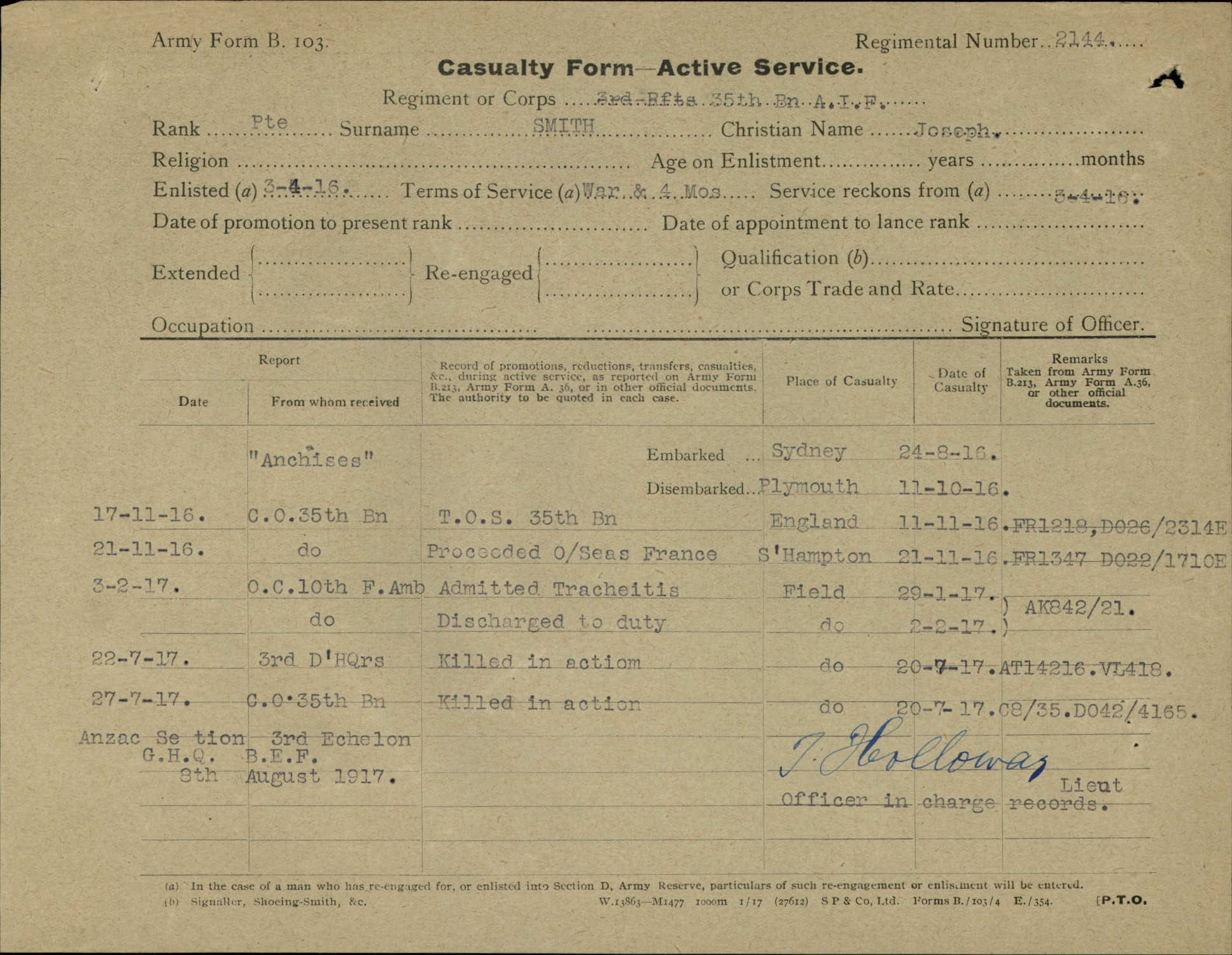


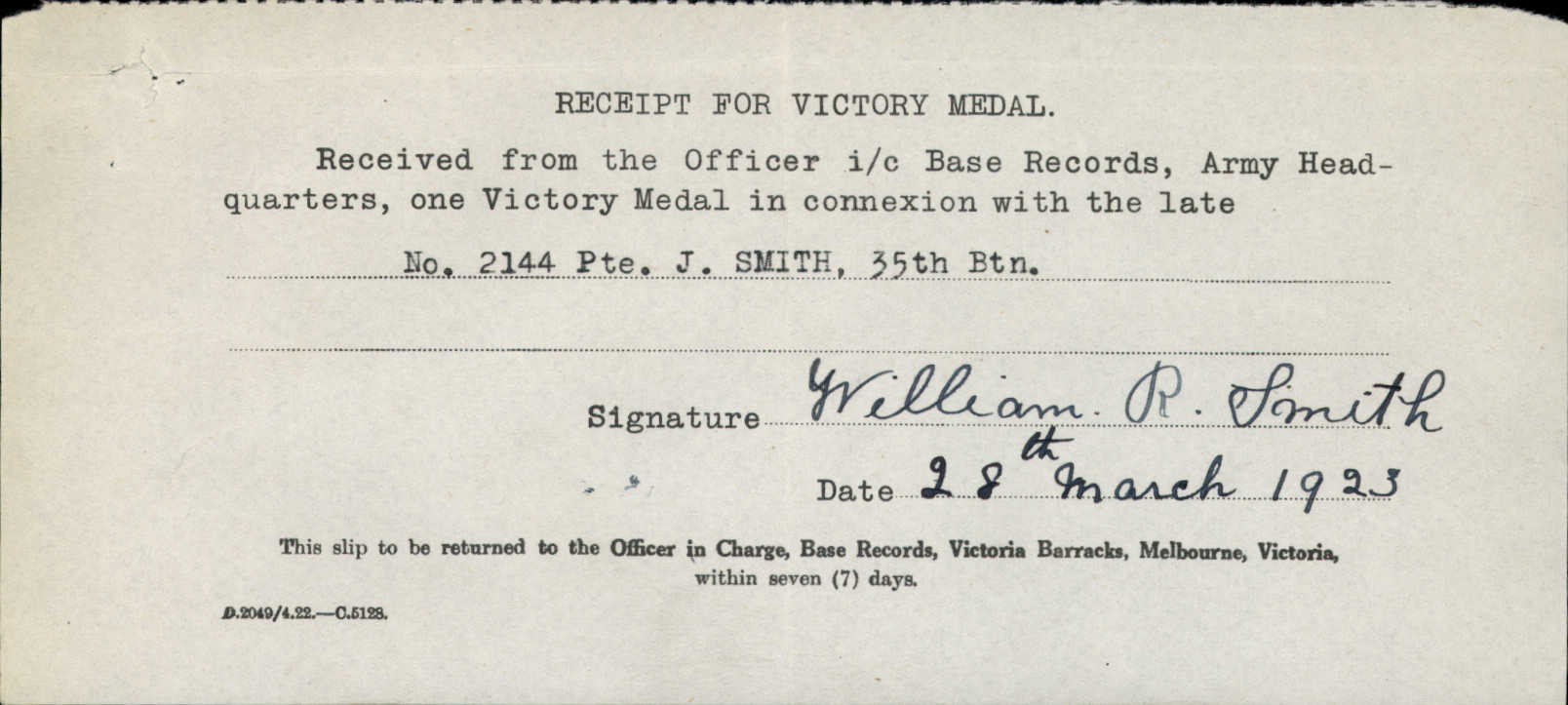

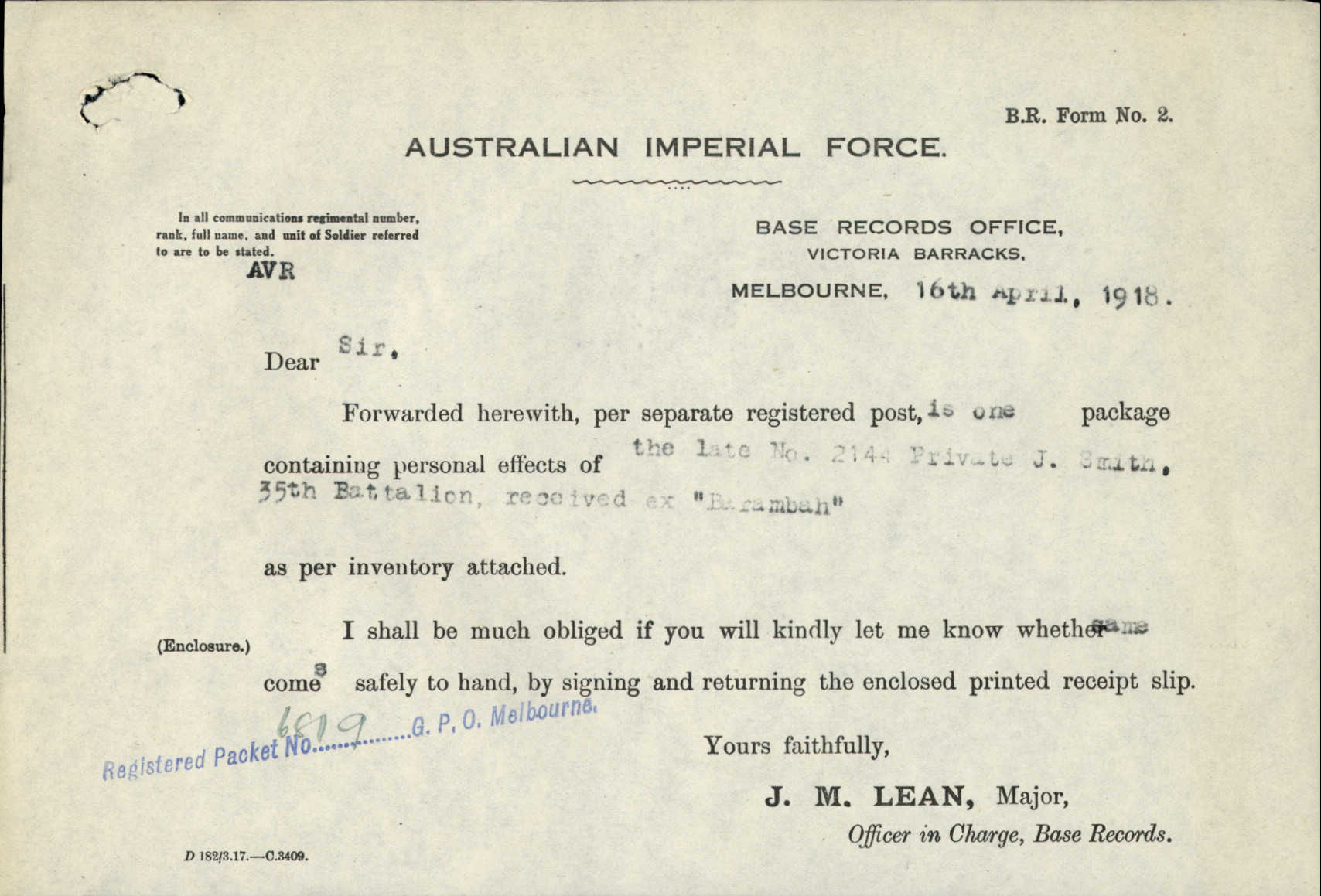
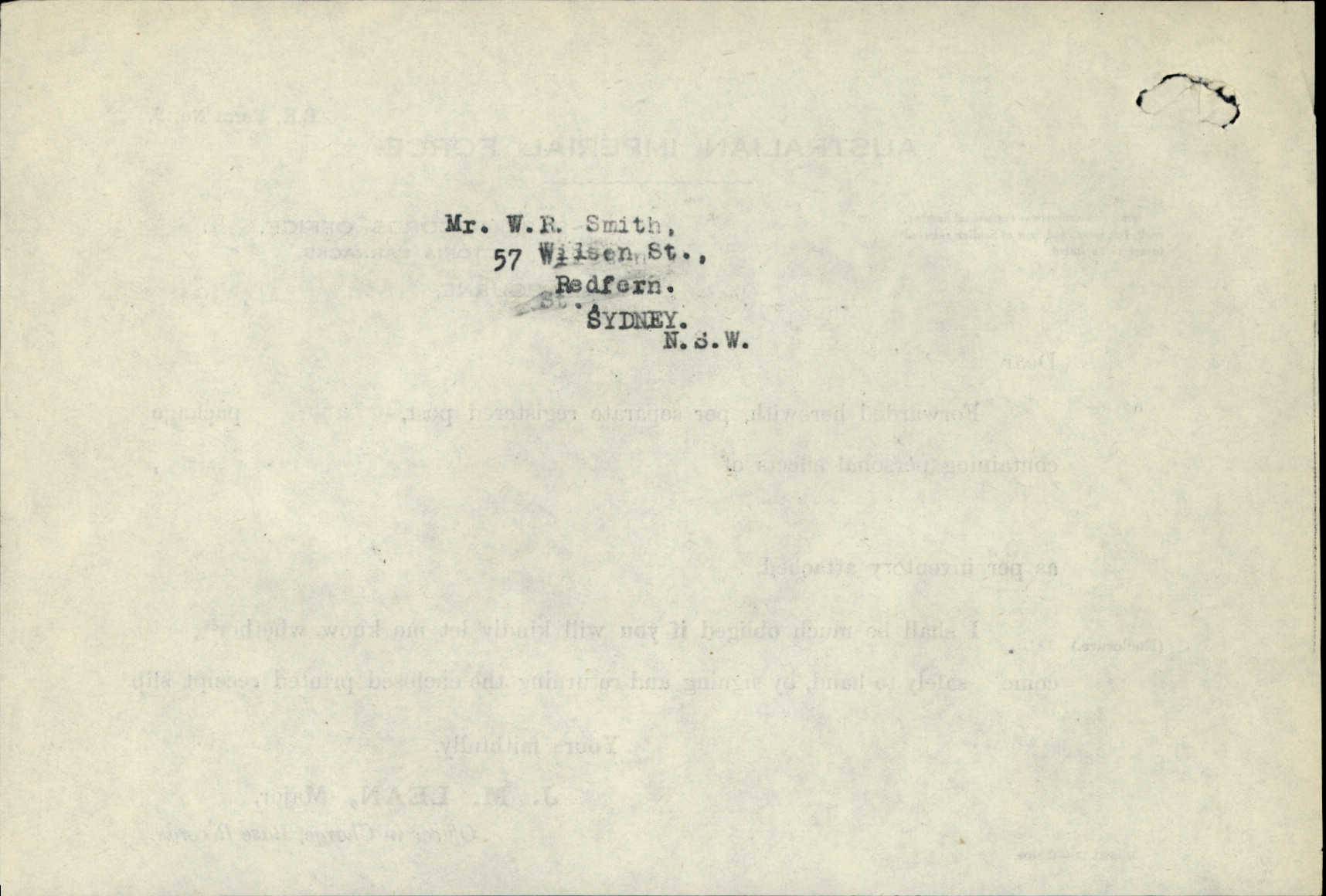
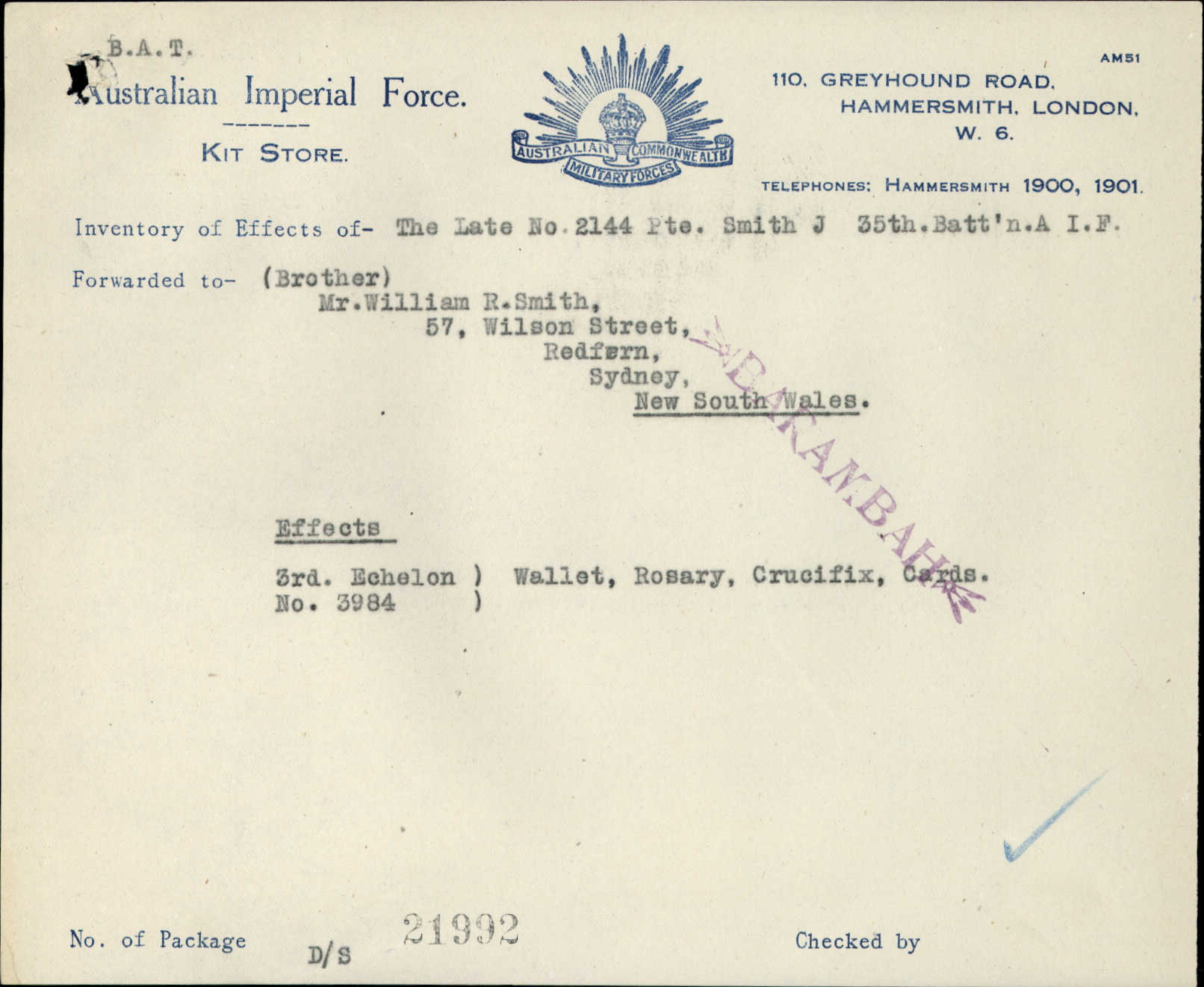


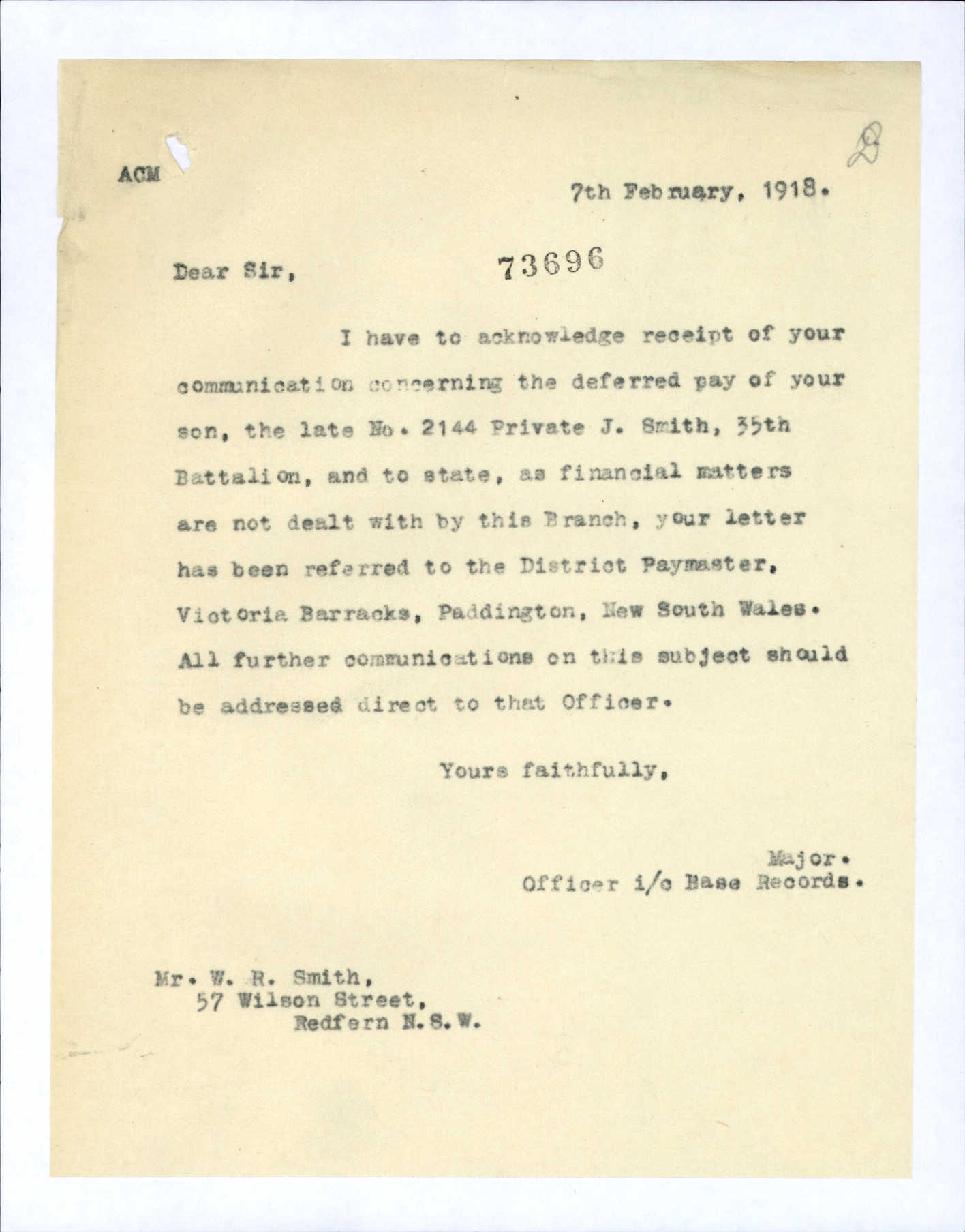

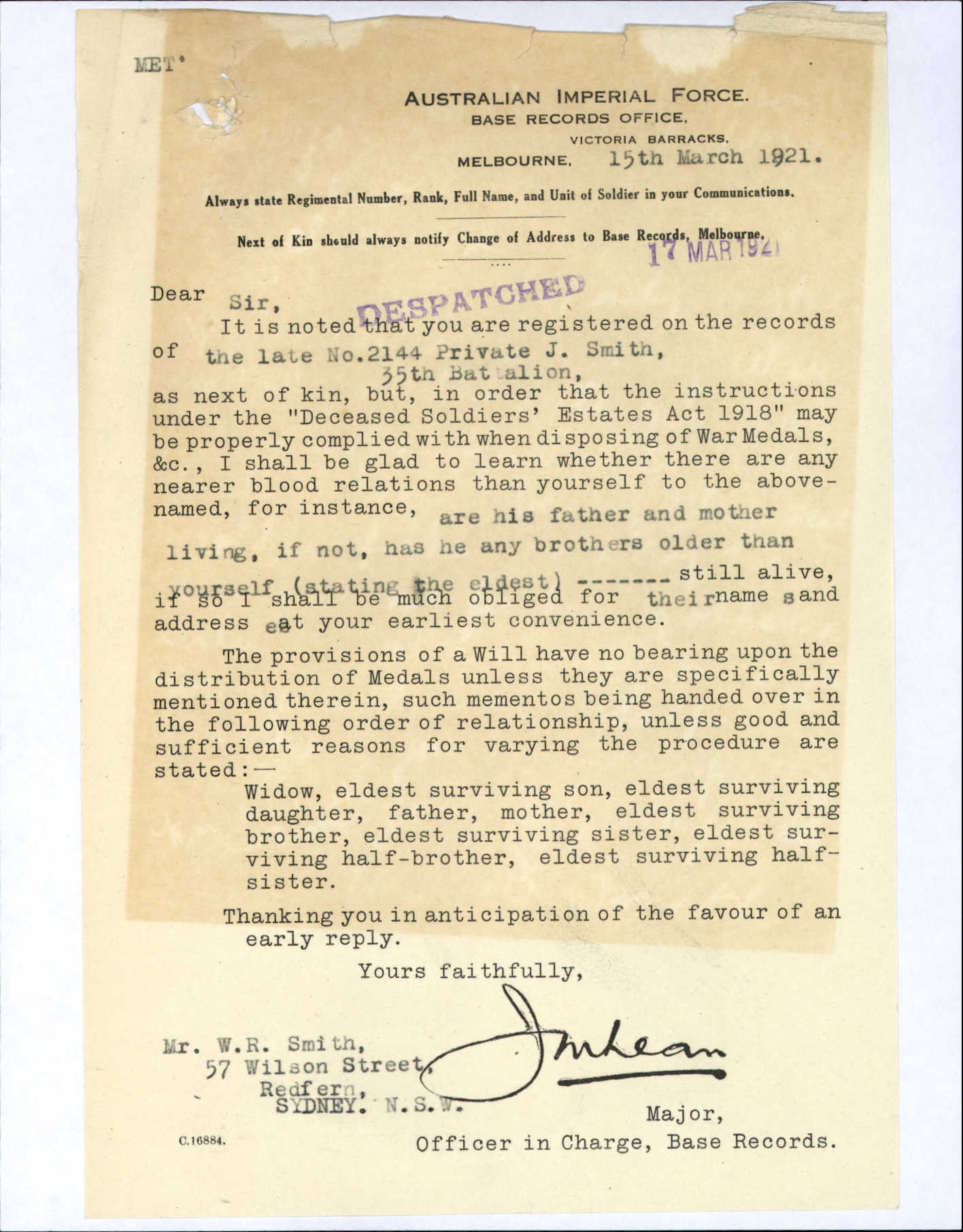
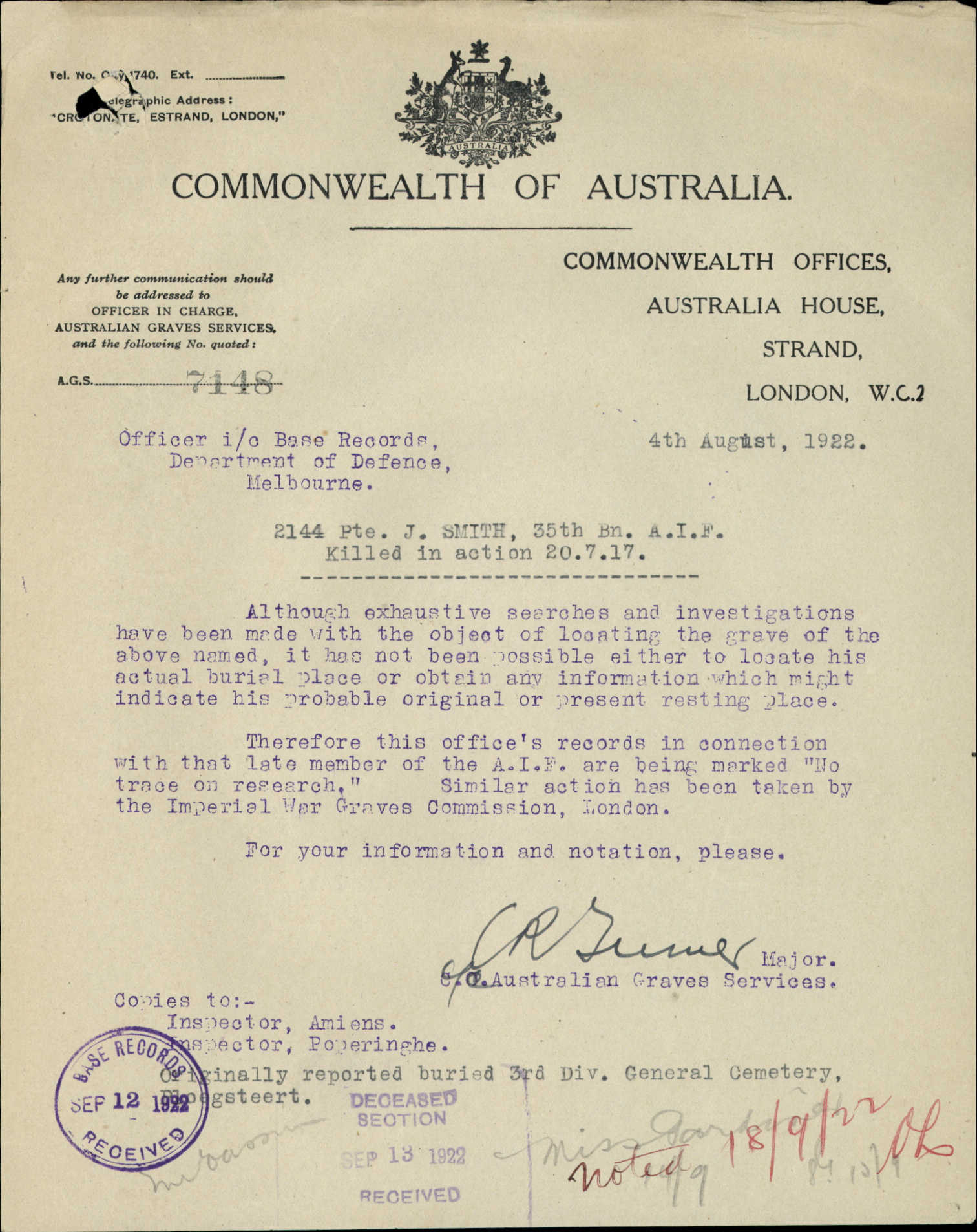

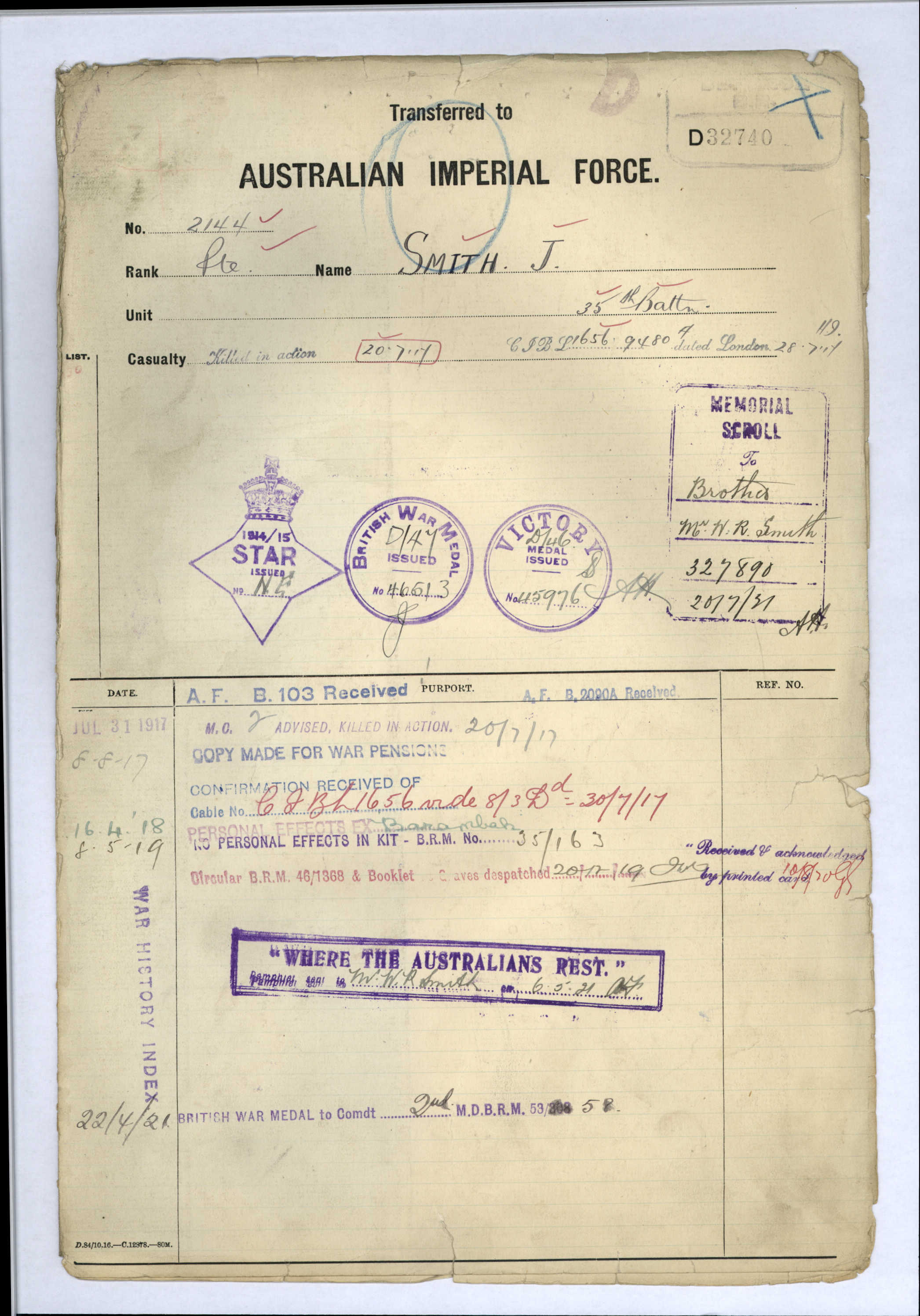
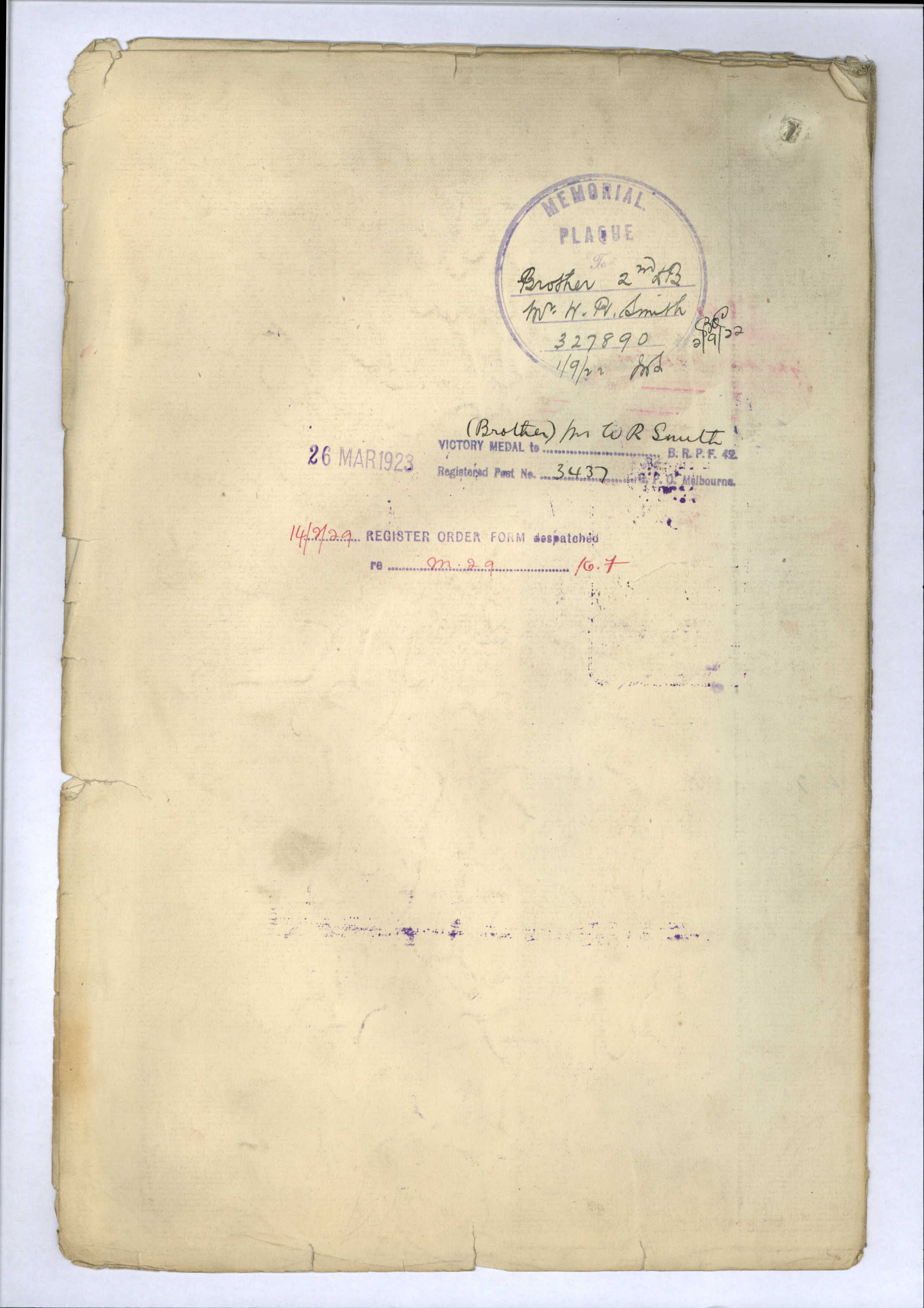
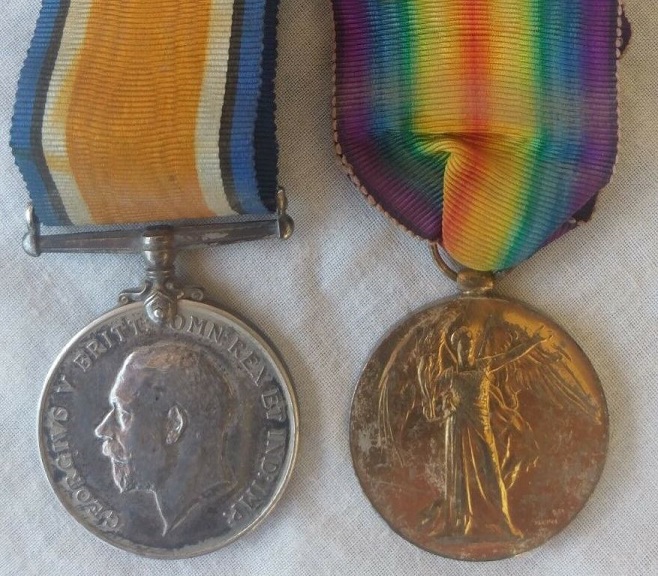

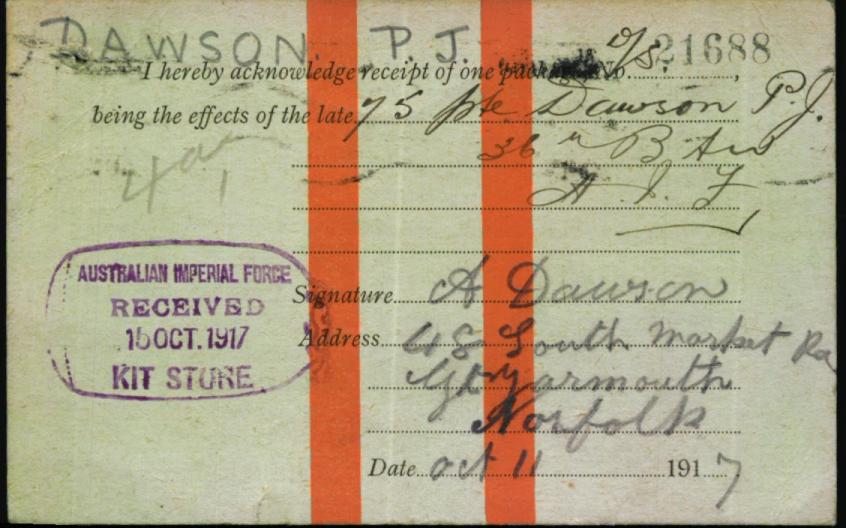
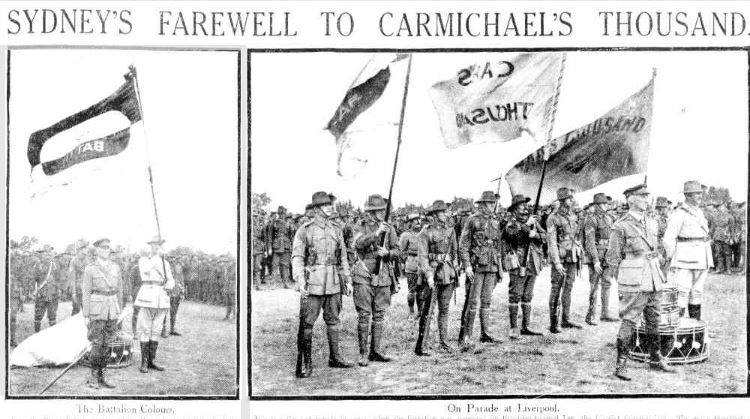

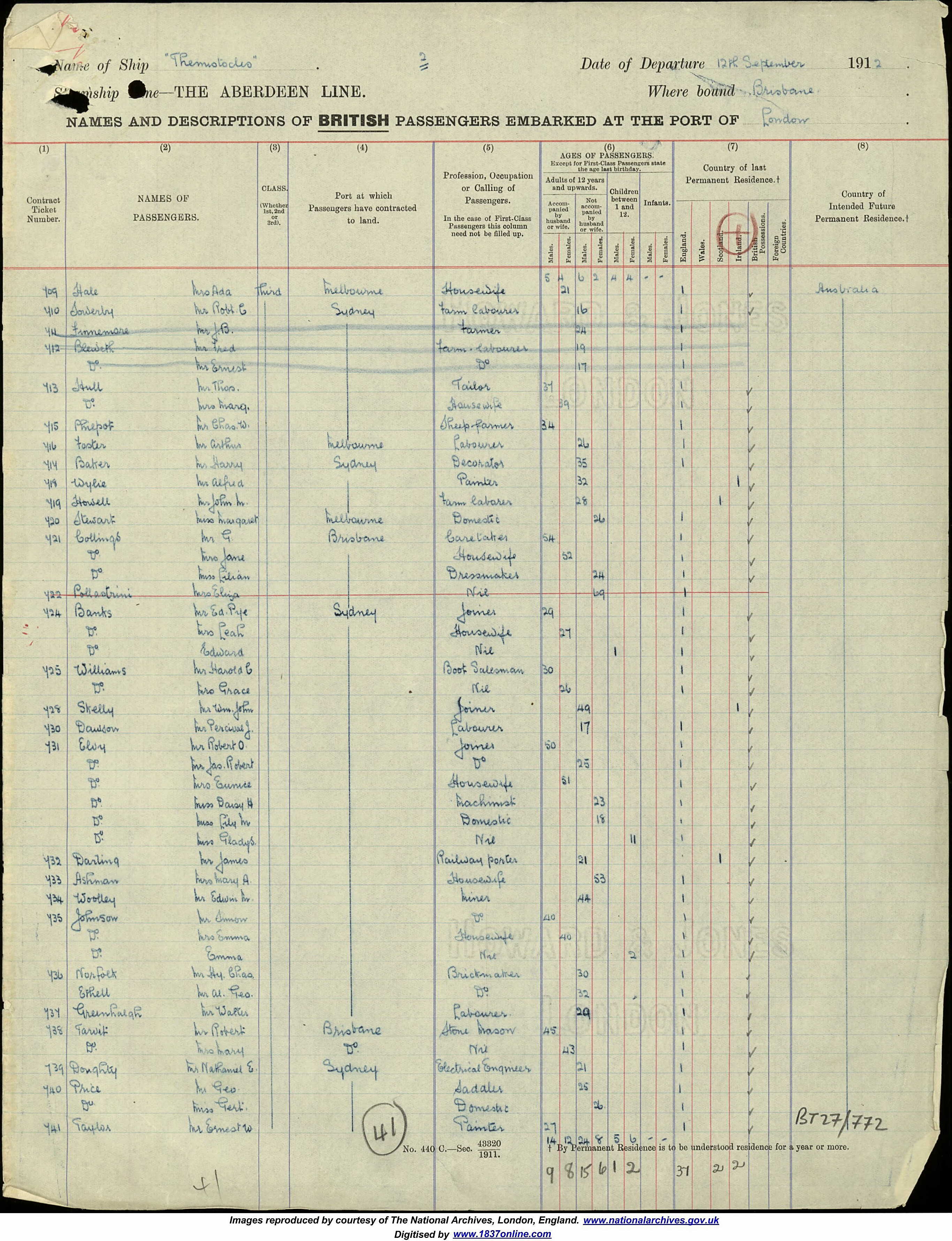
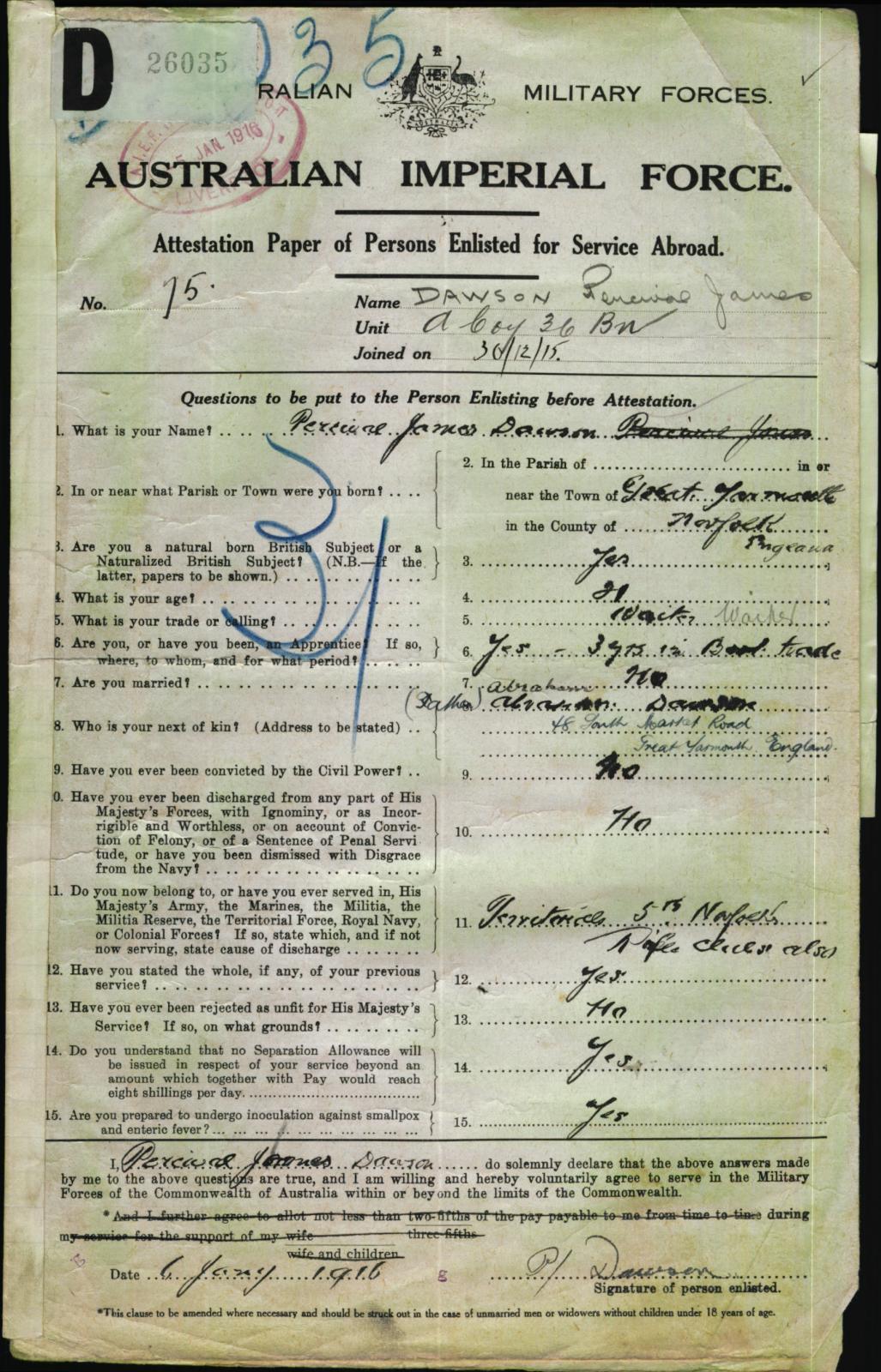
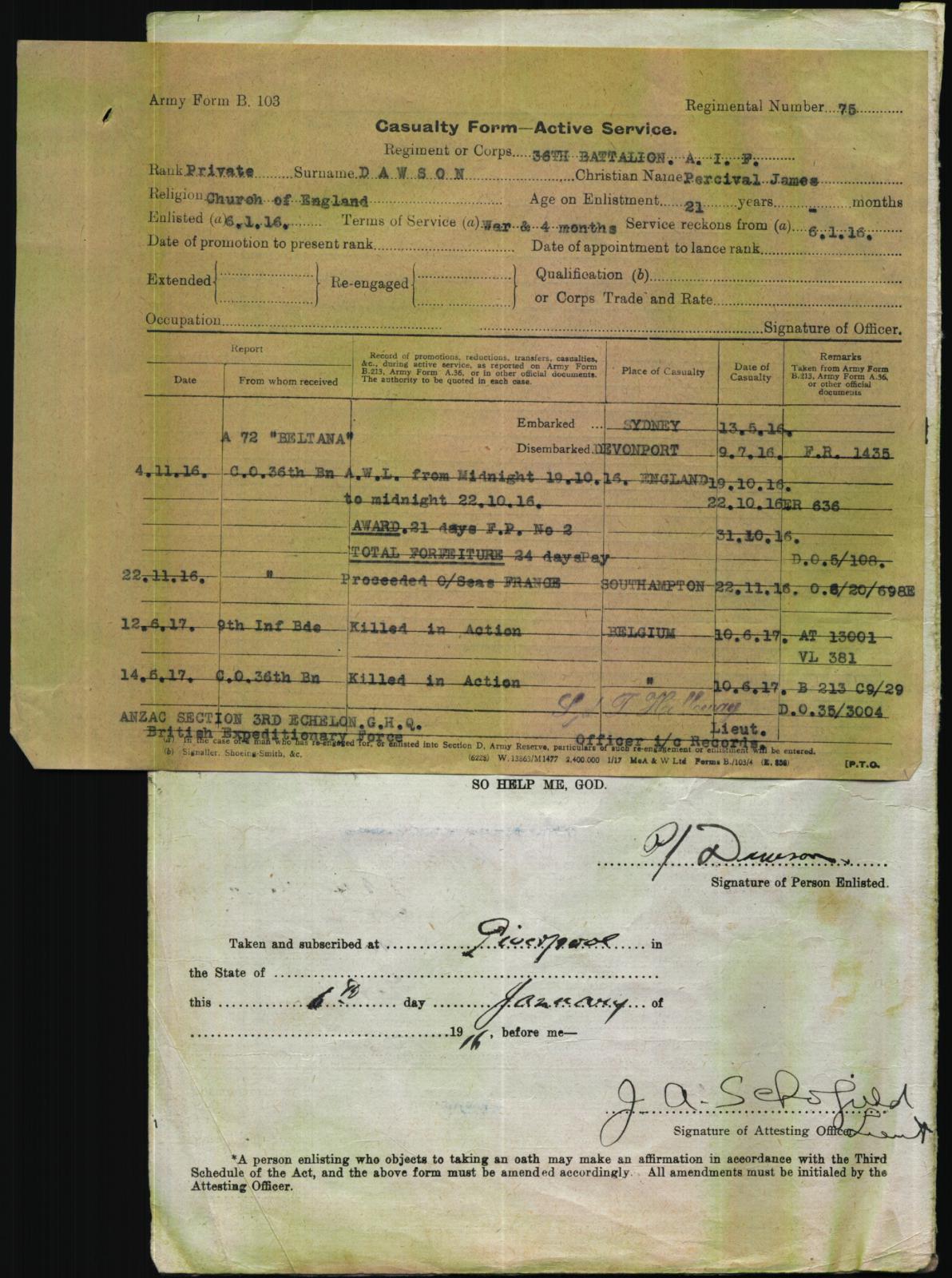
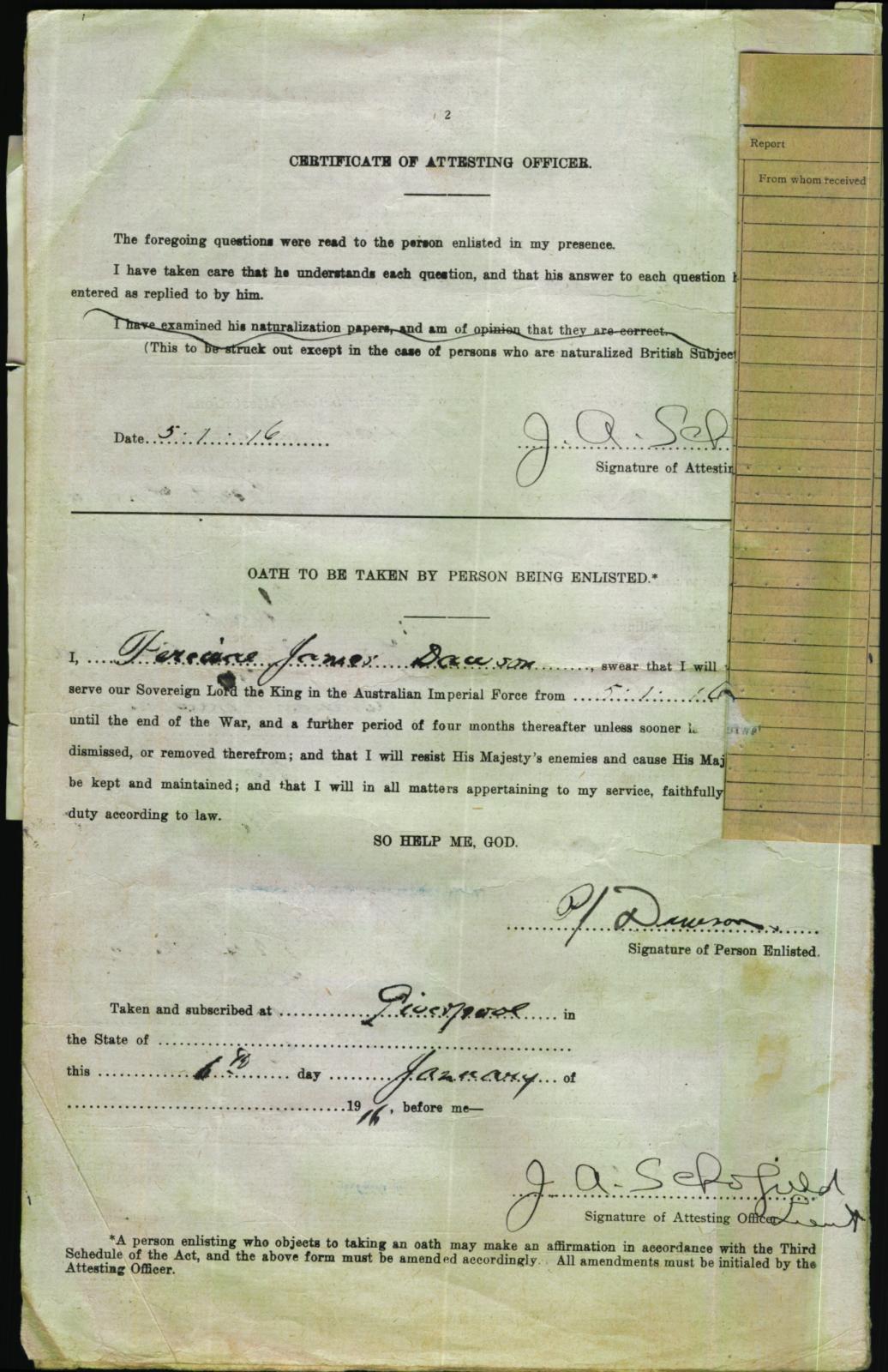




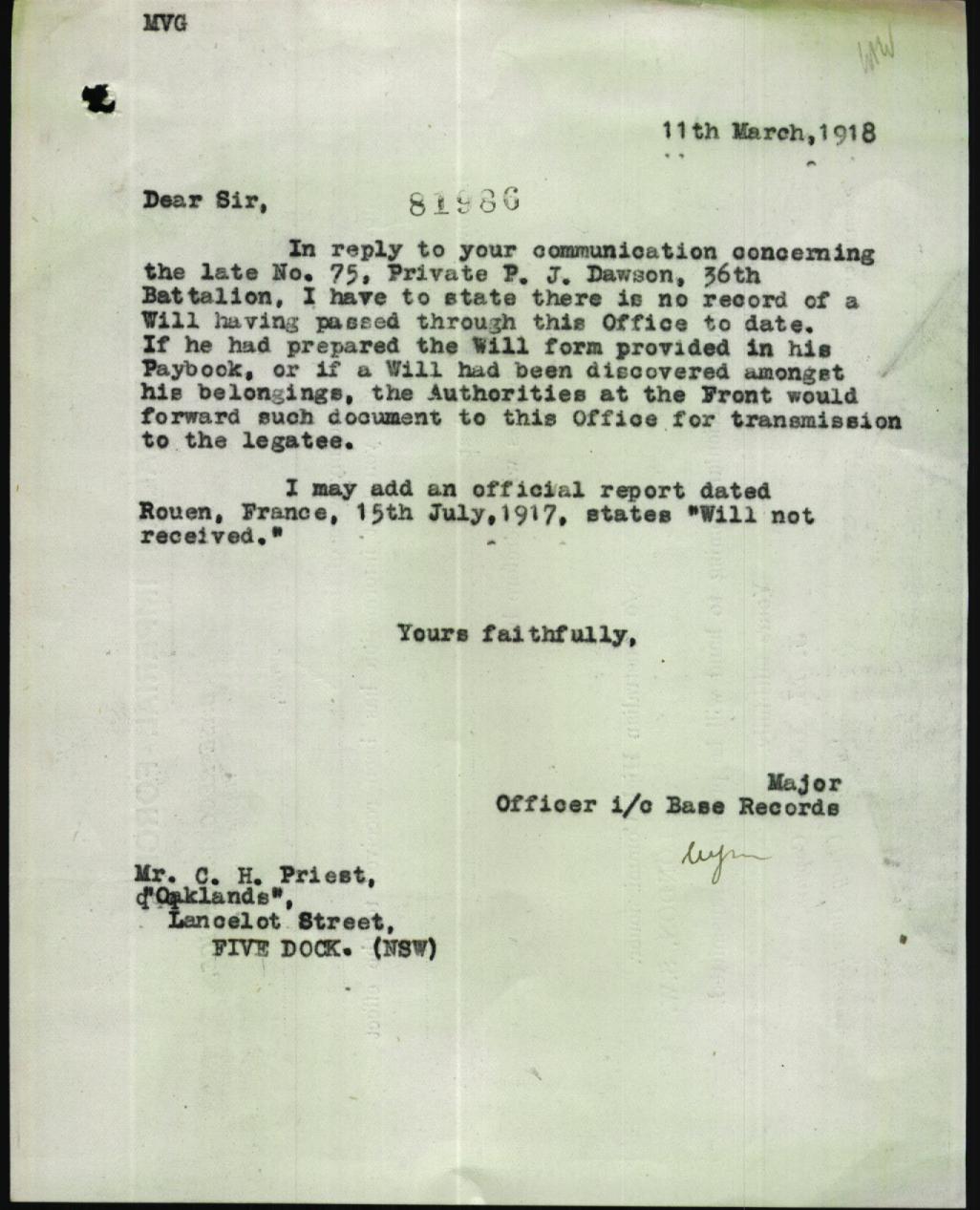
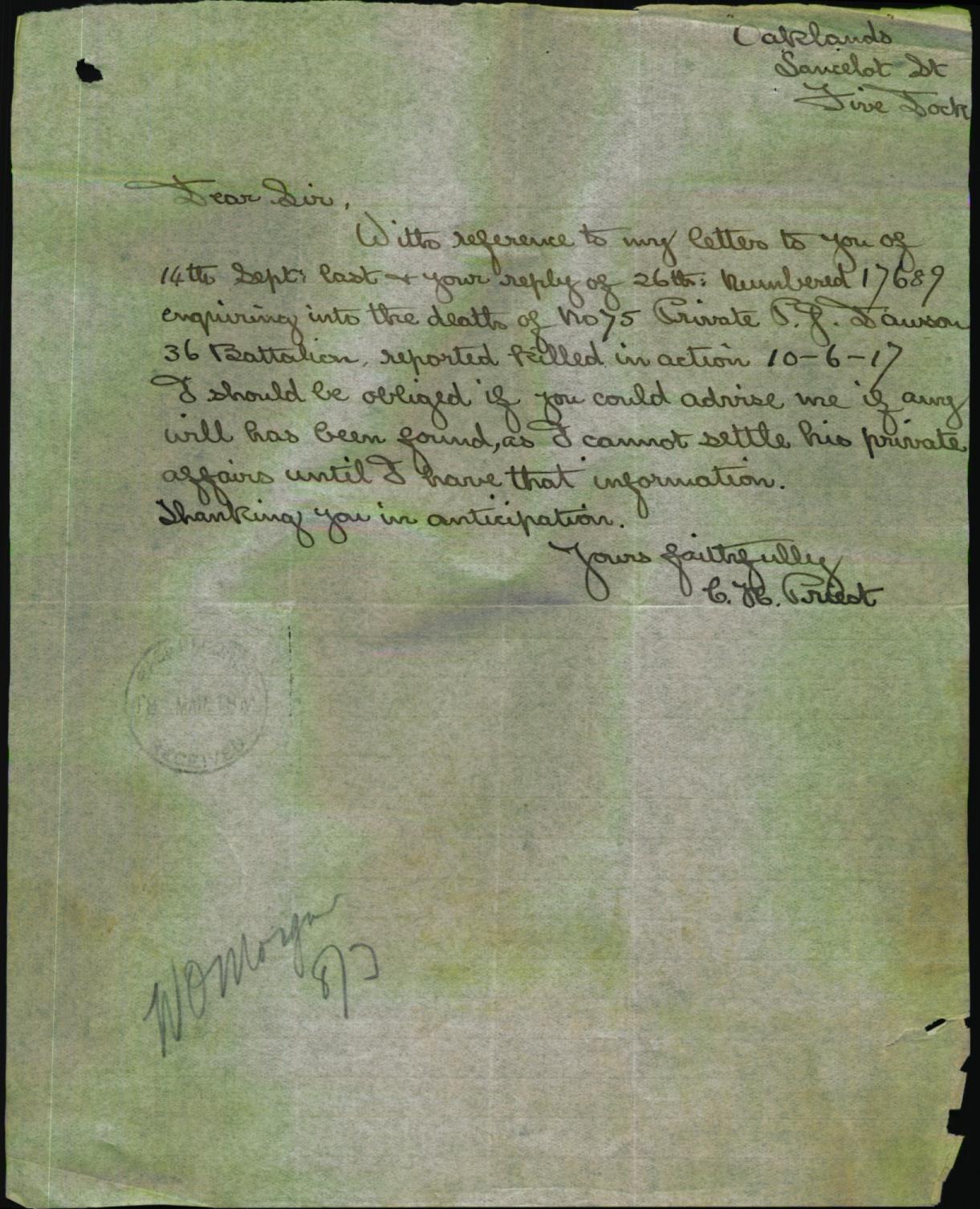
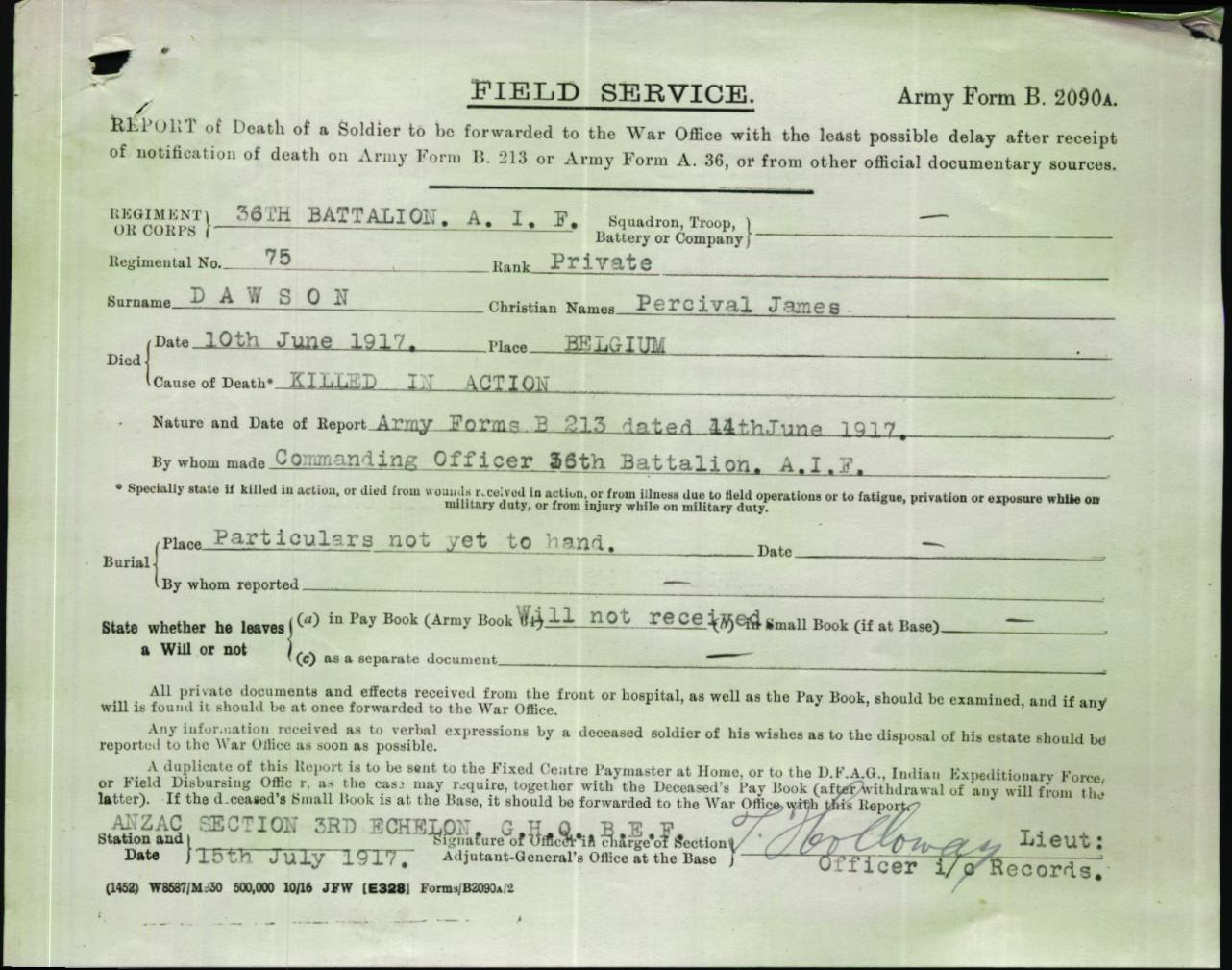


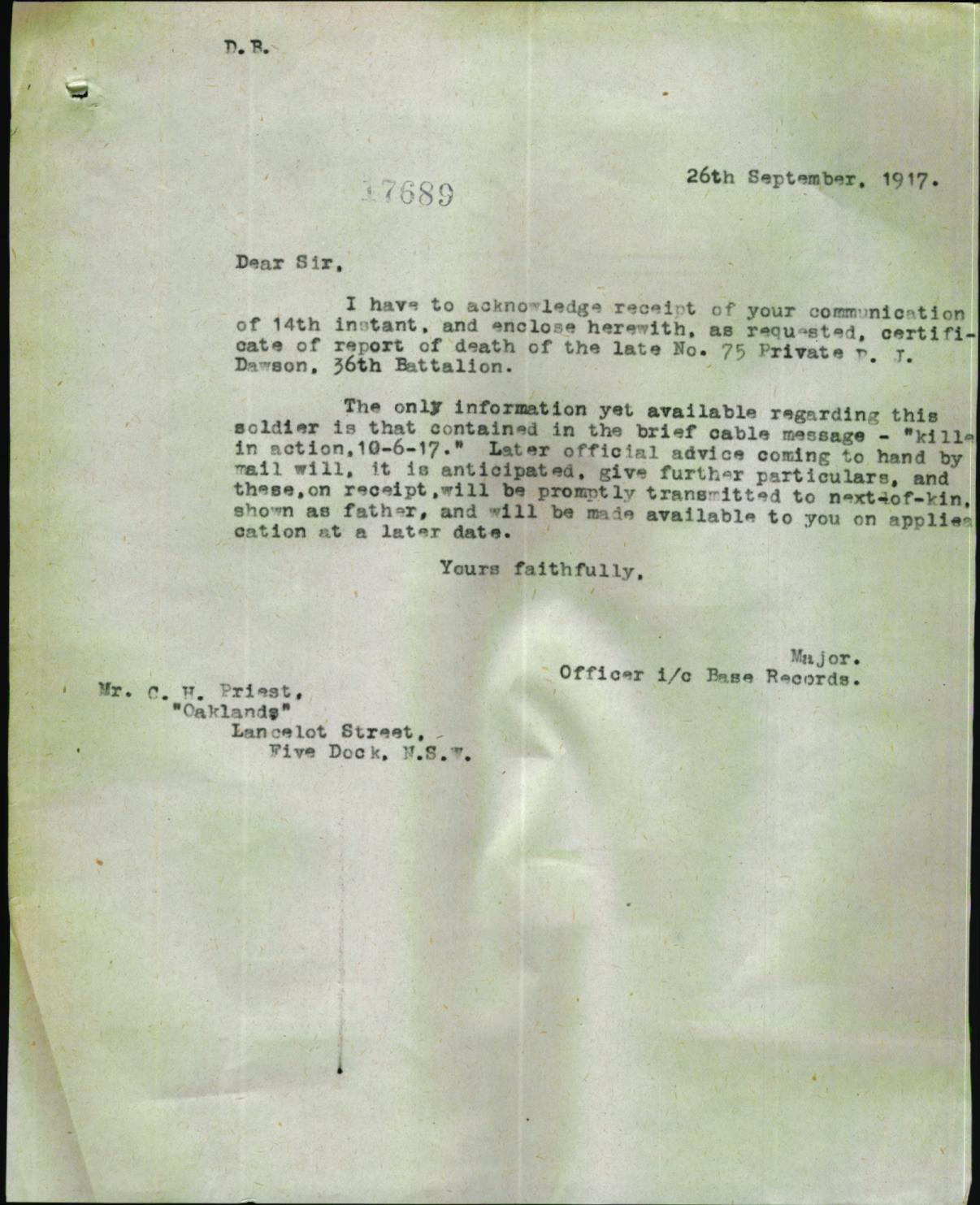
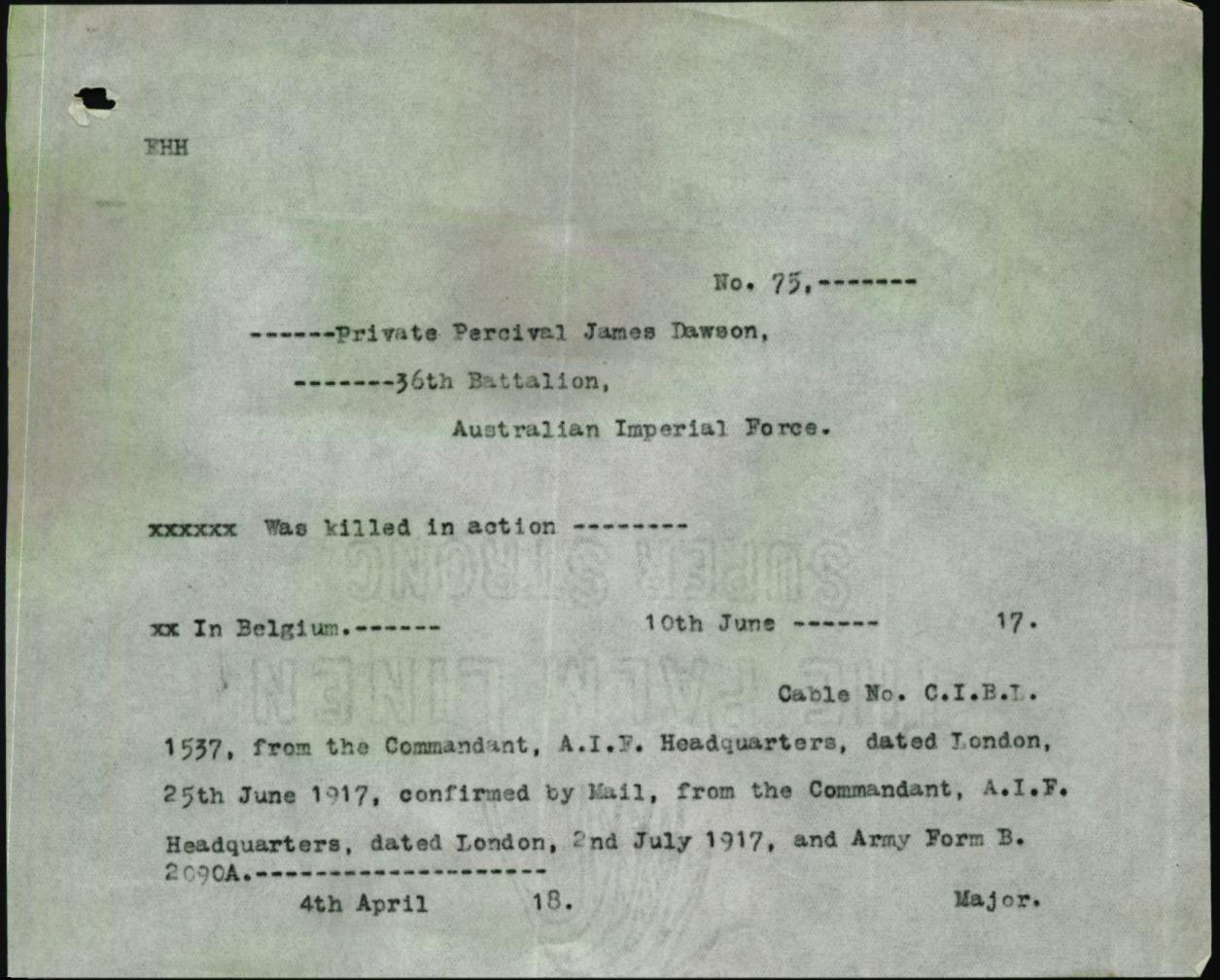
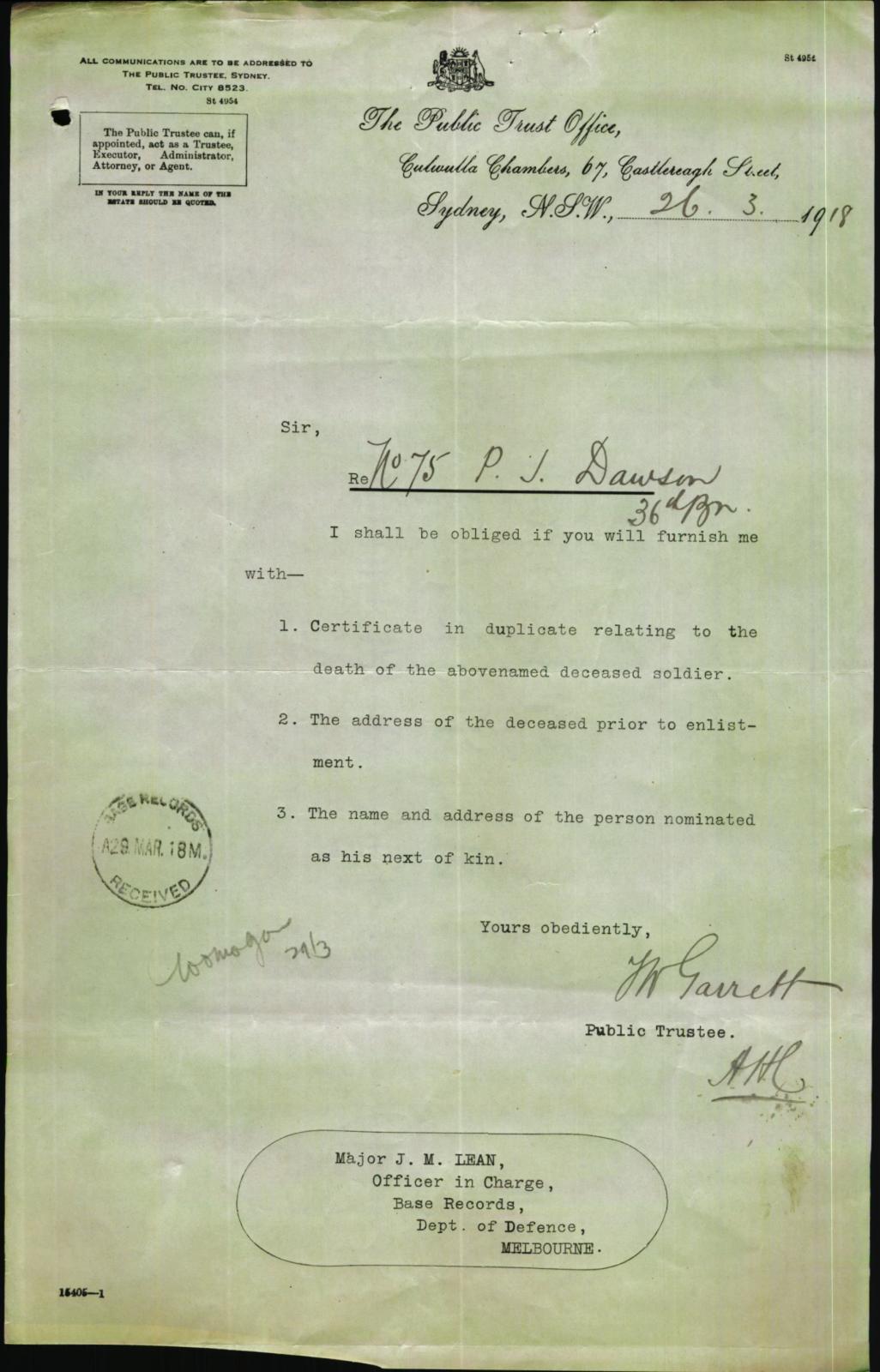
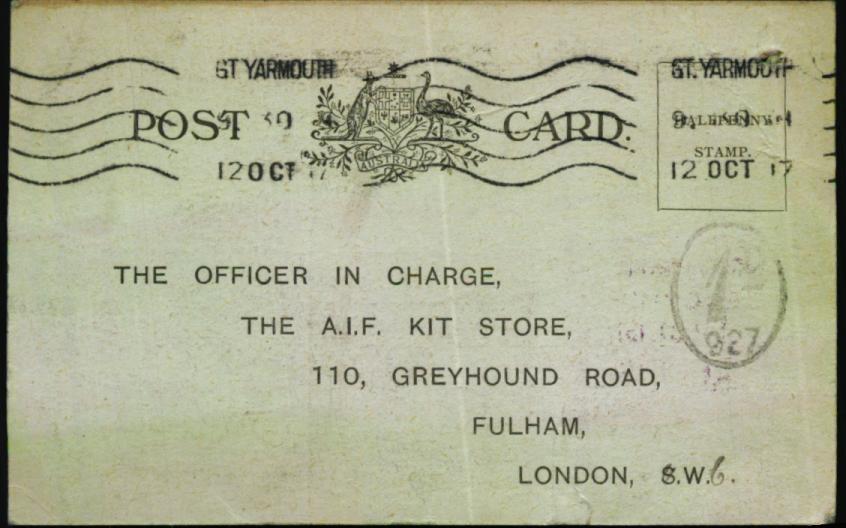
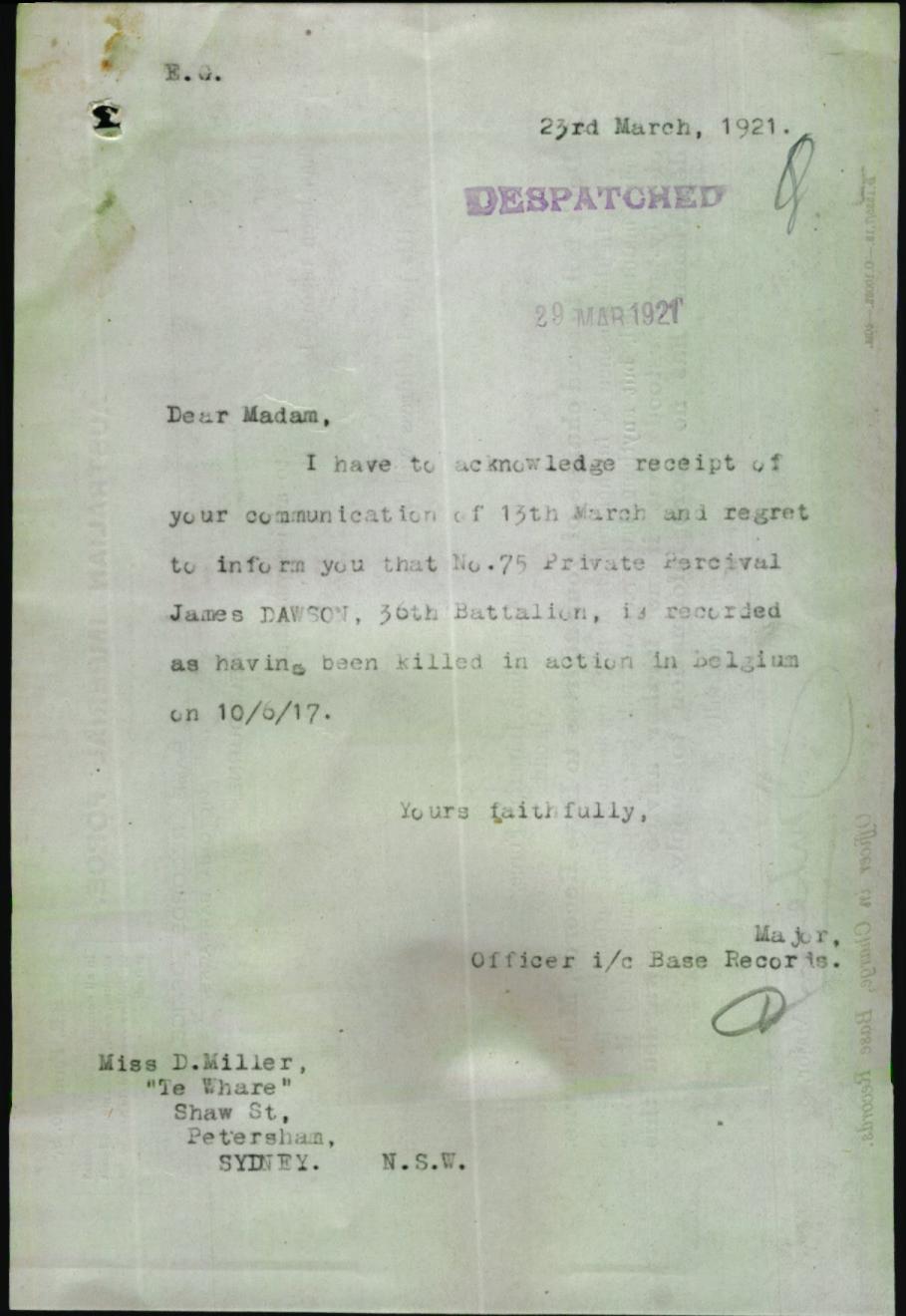
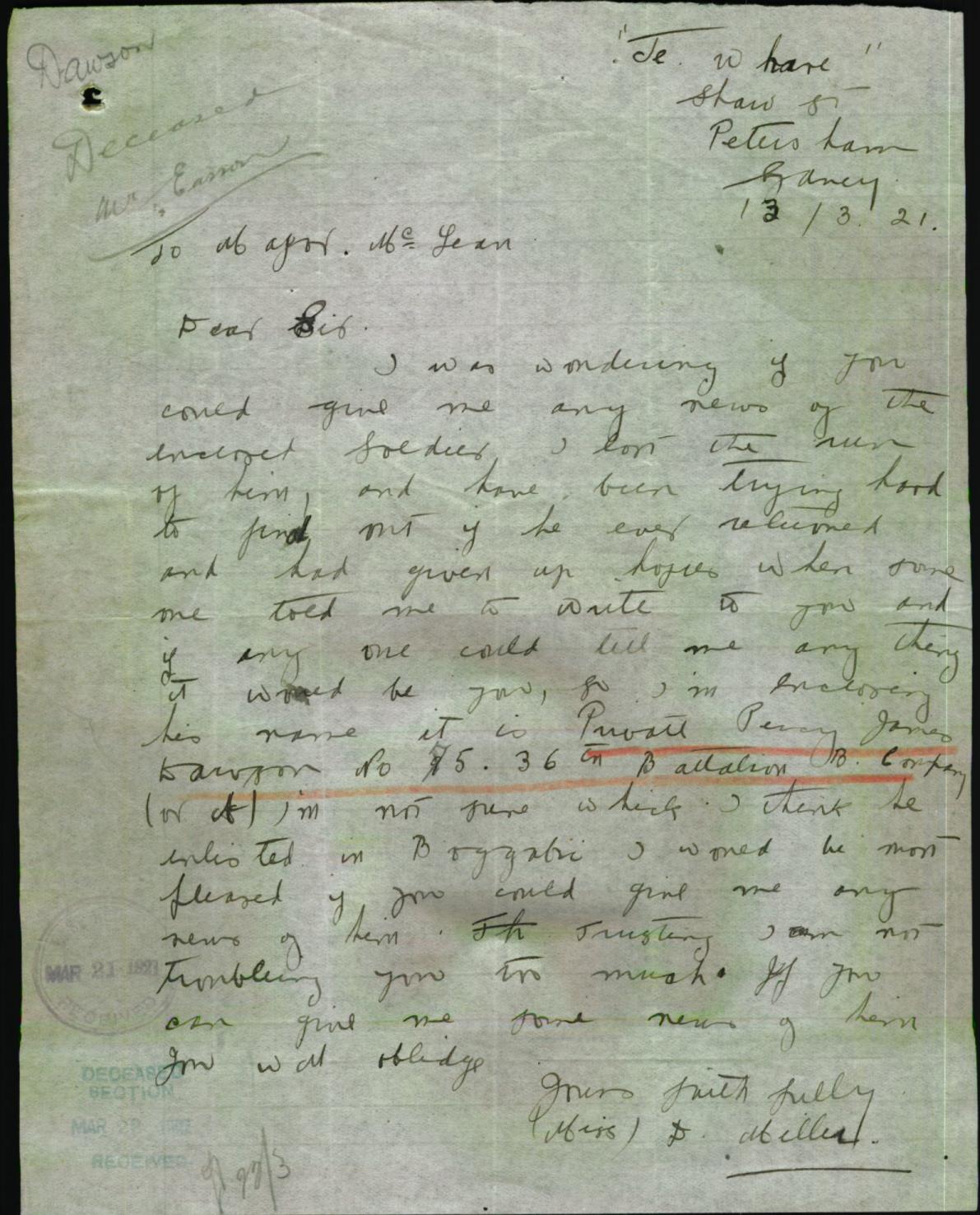
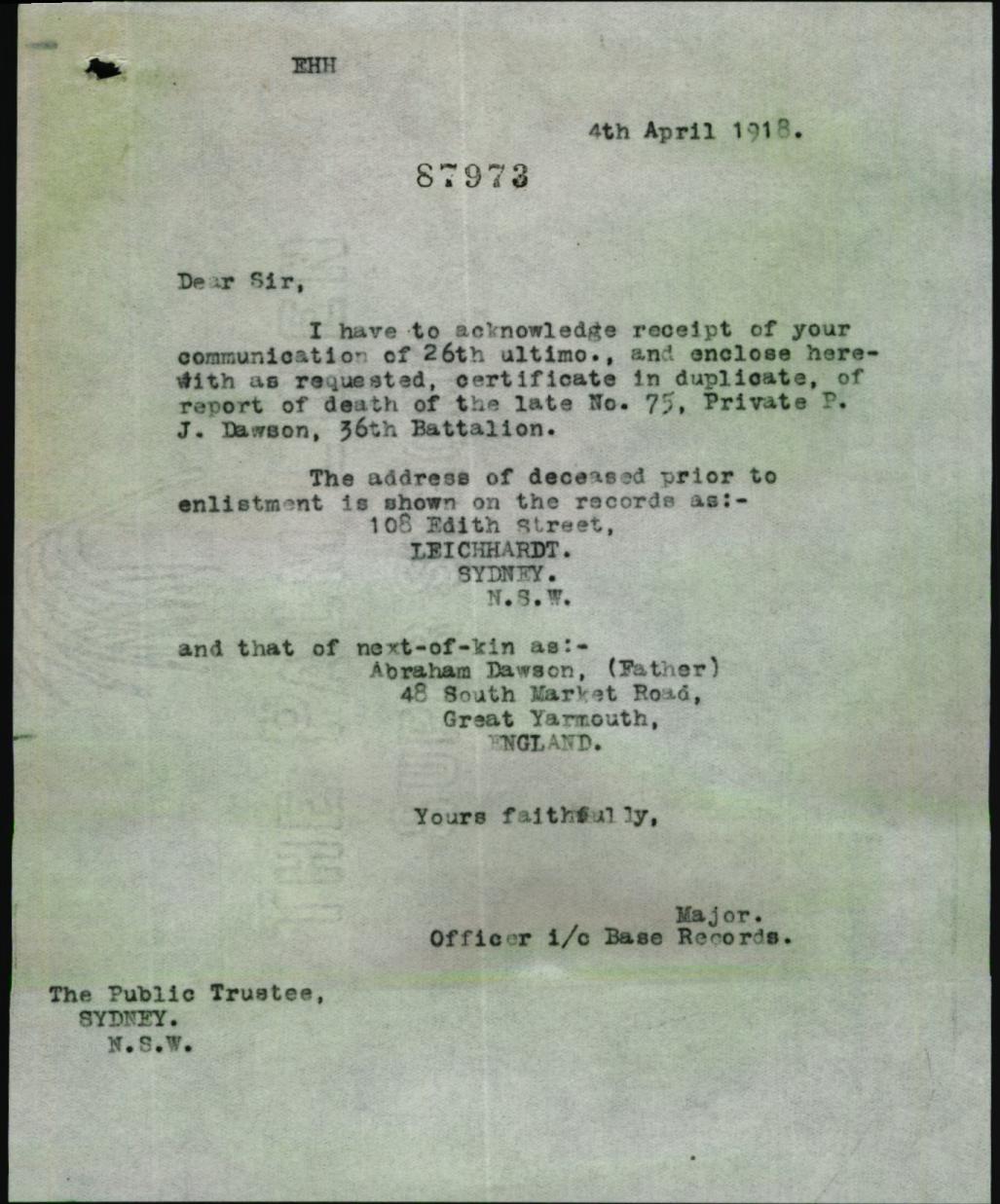

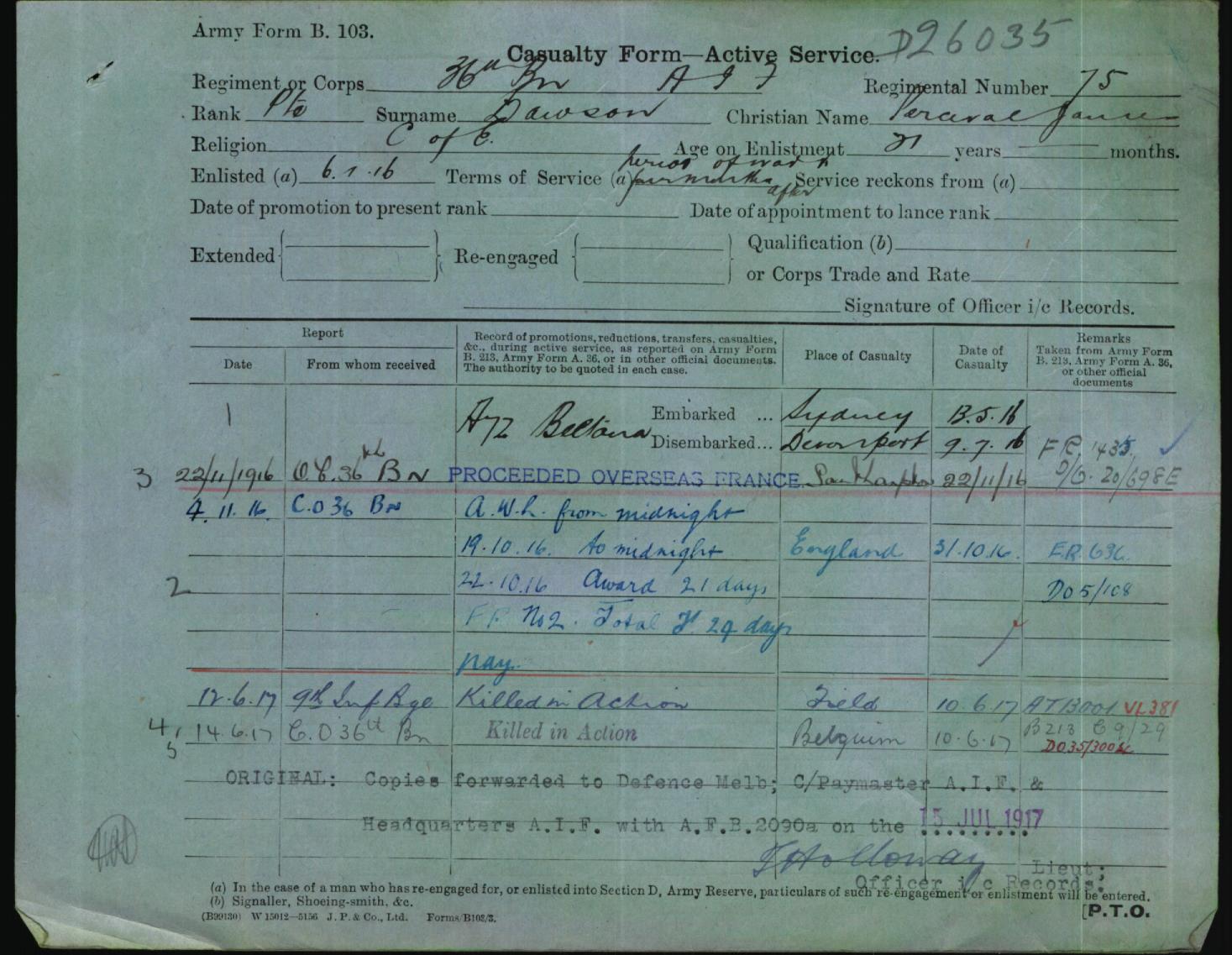



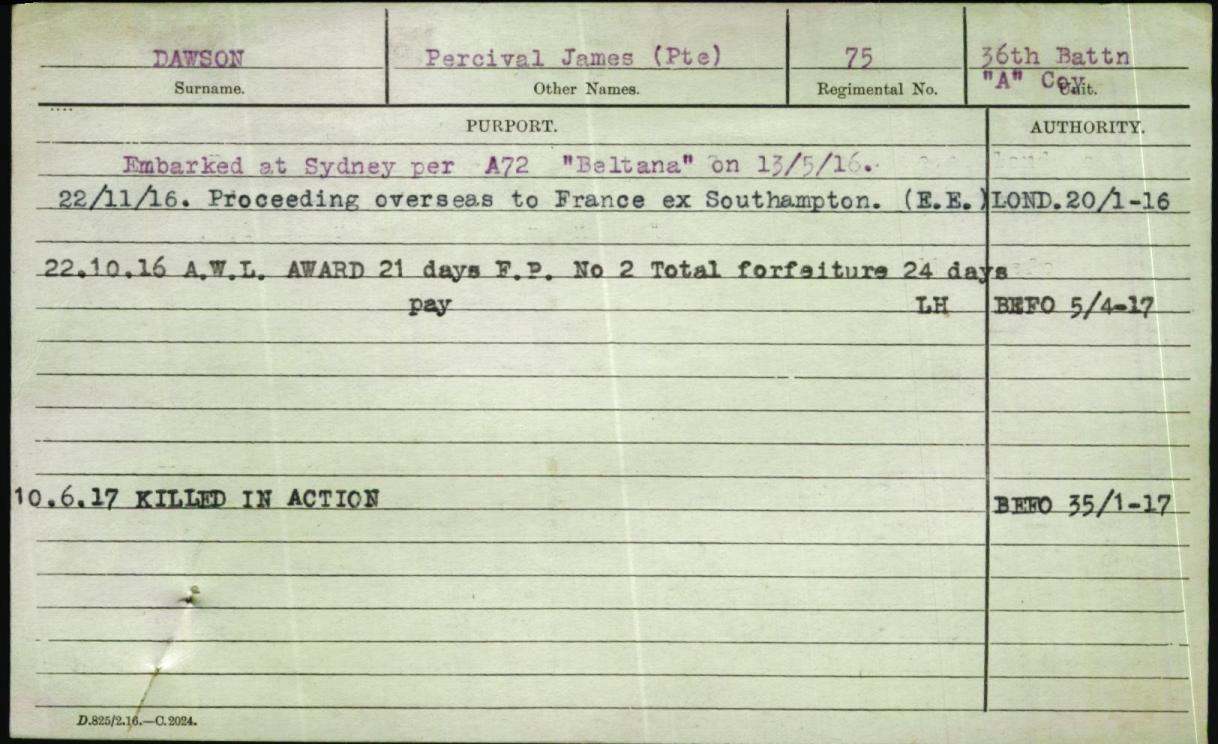
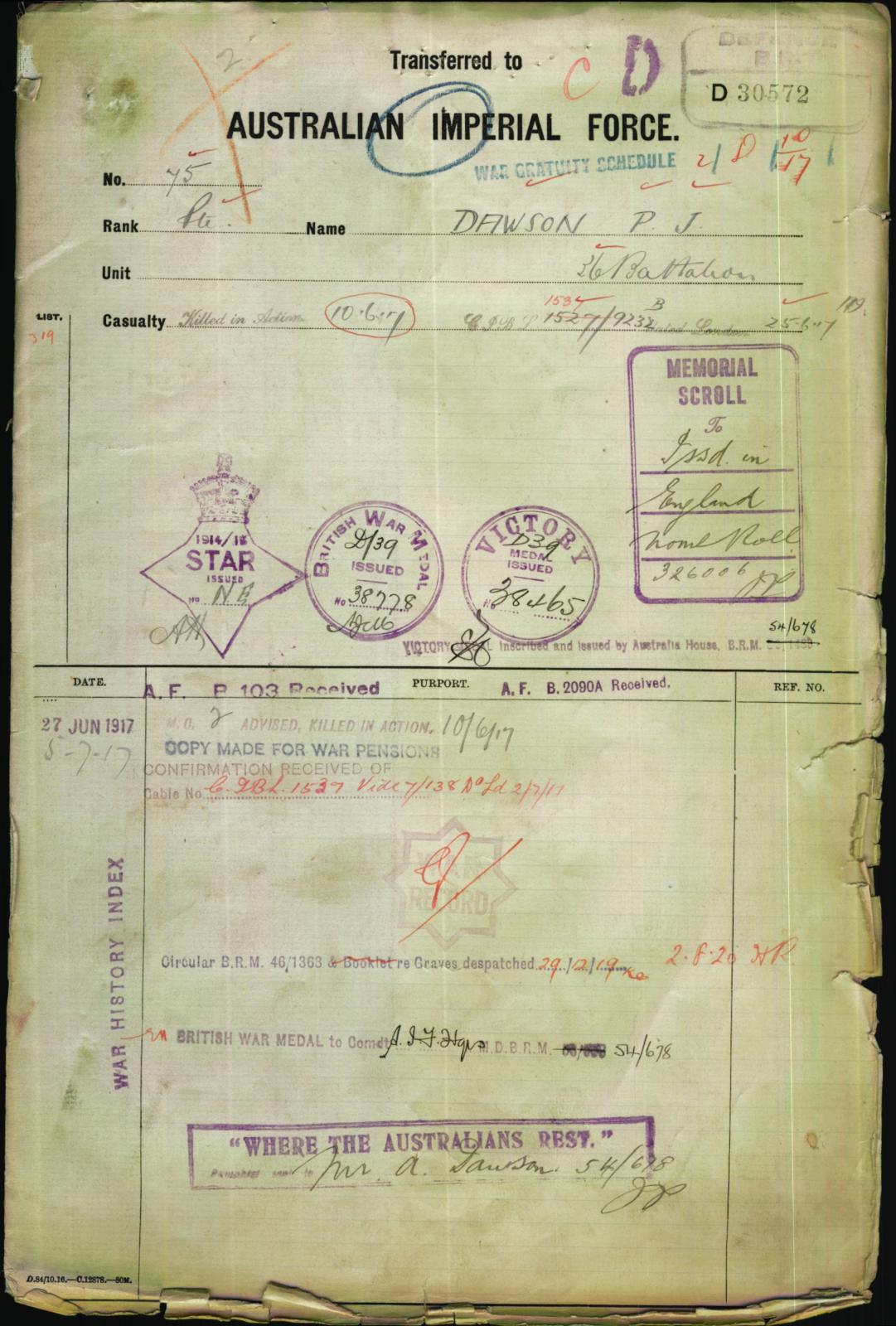
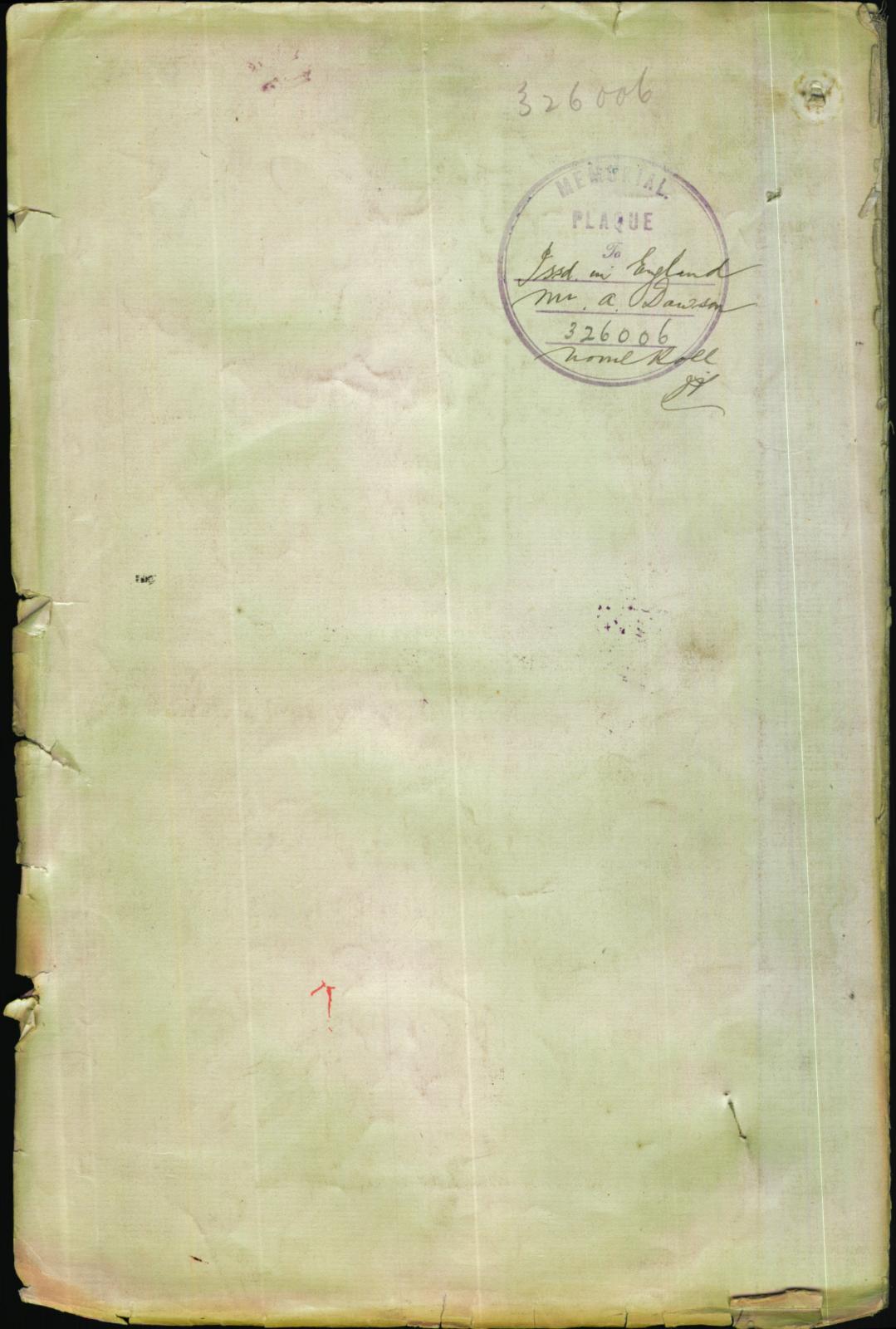
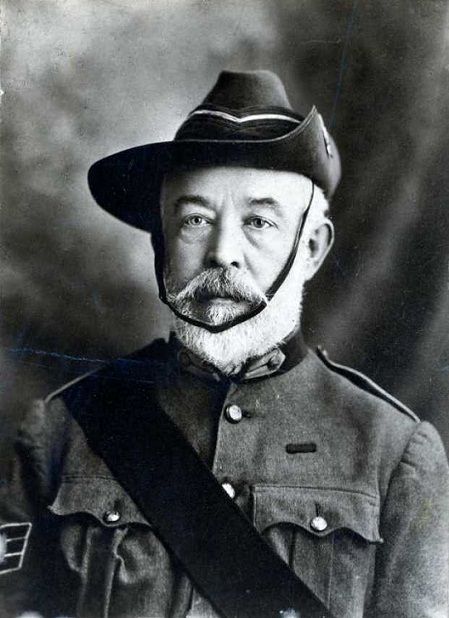
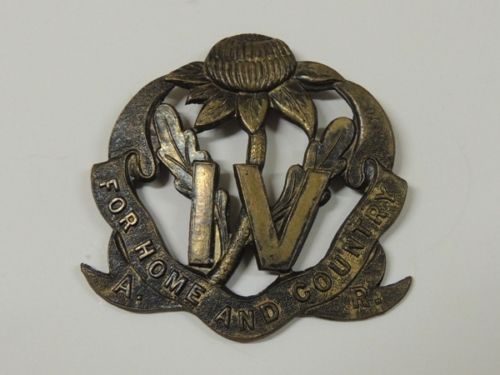
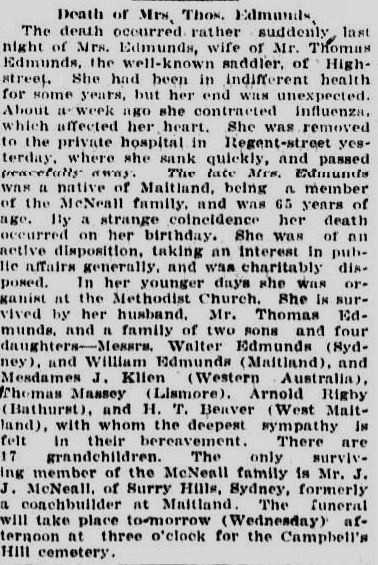

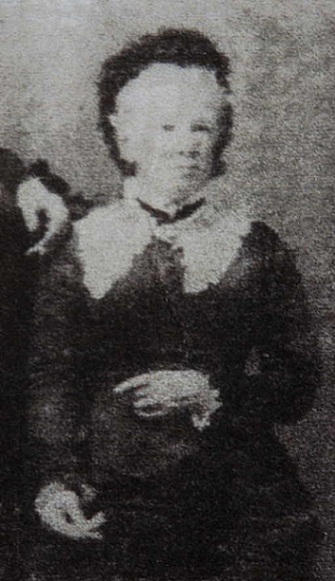
 35th BATTALION - 53rd BATTALION AIF
35th BATTALION - 53rd BATTALION AIF